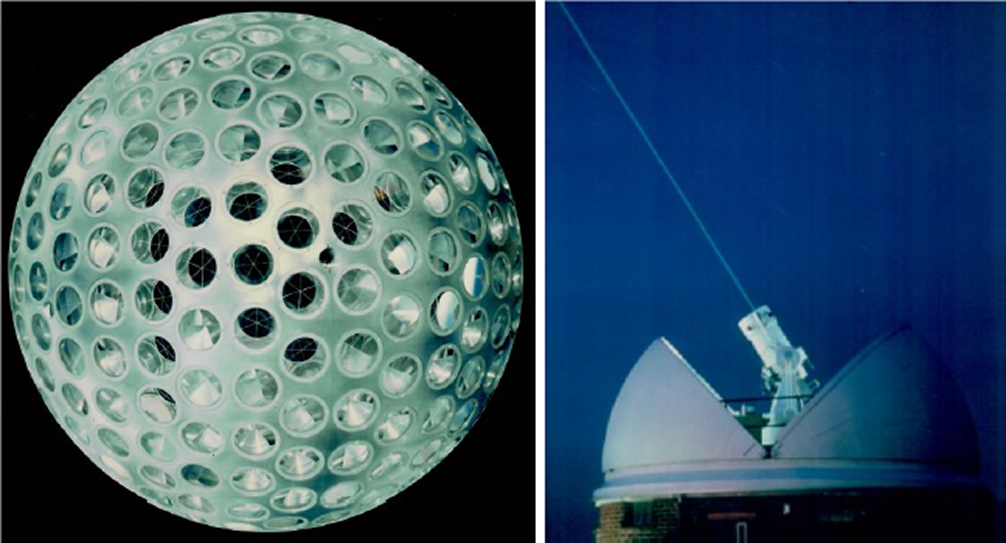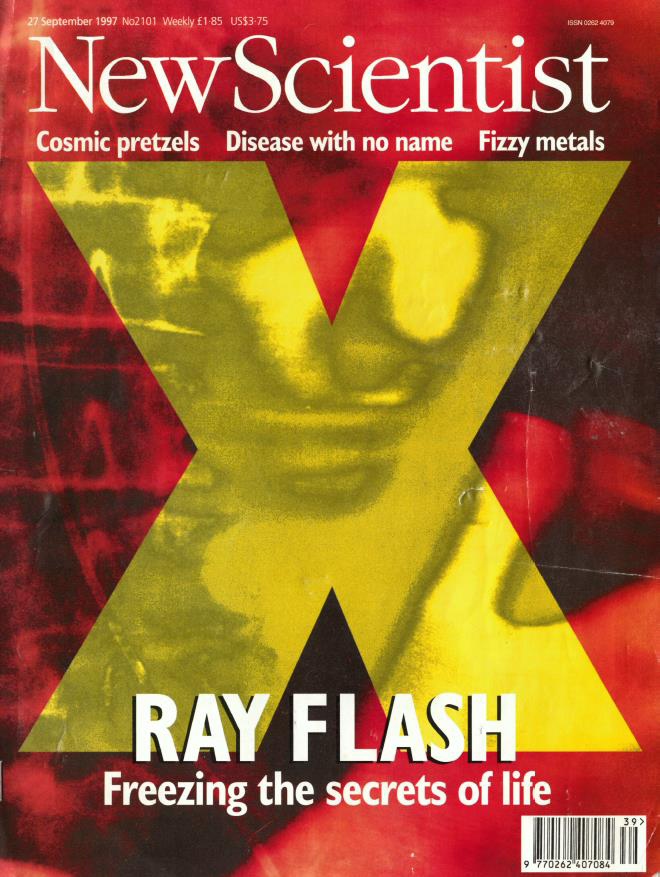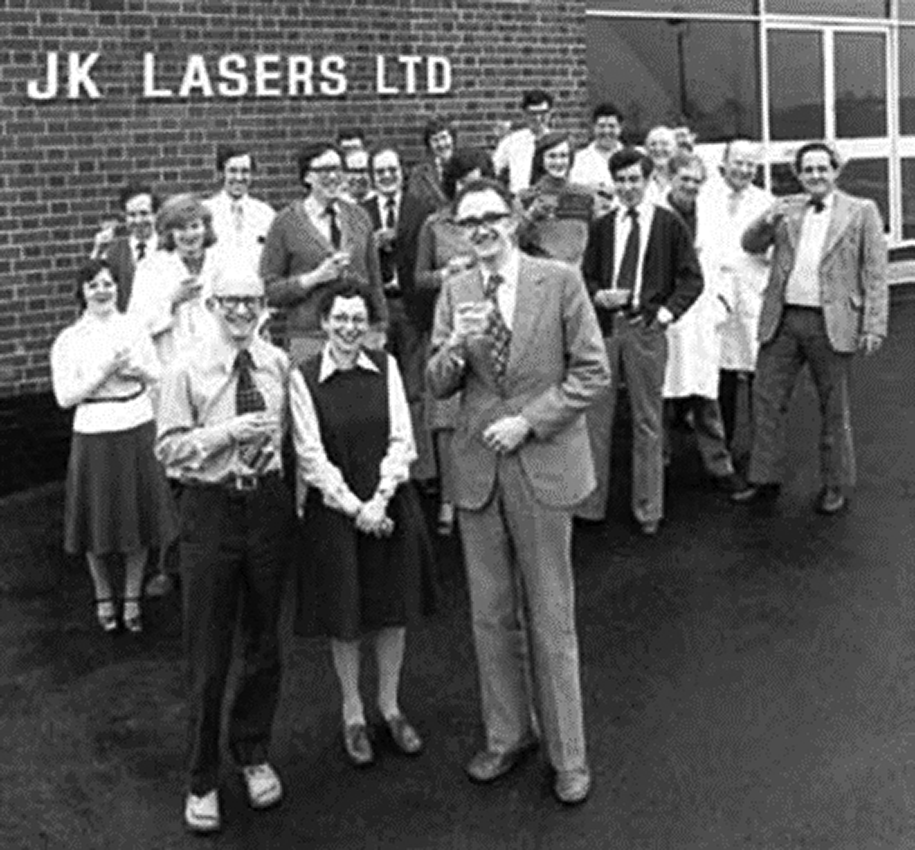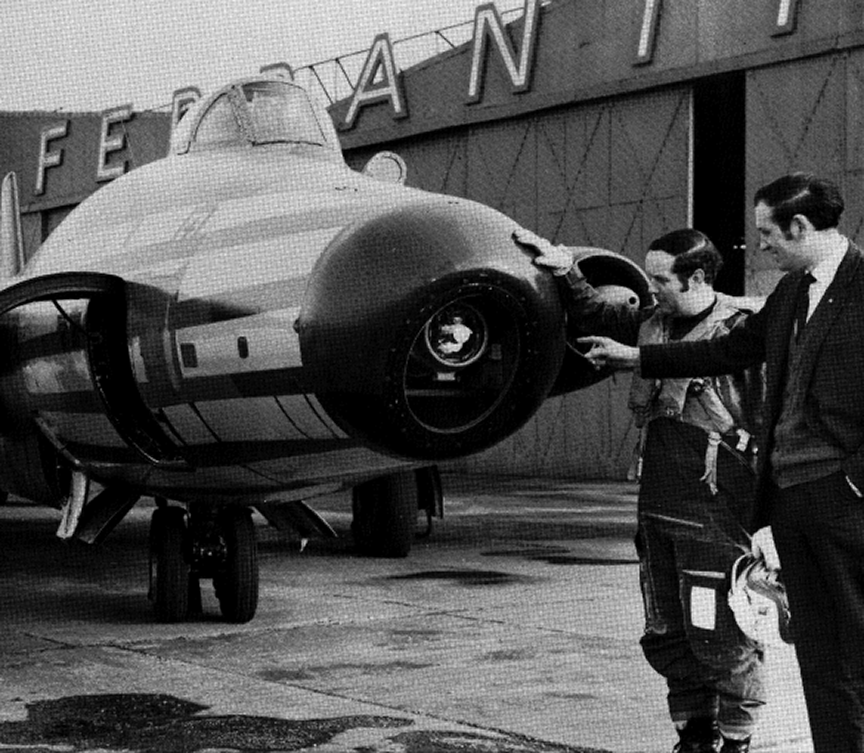1 Introduction
The start of the laser story goes back over a hundred years when in 1917 Albert Einstein suggested the concept of stimulated emission. Prior to optical lasers there were operational masers, the equivalent to lasers working in the microwave region of the spectrum, for which Charles Townes, Aleksandr Prokhorov, and Nikolay Basov were awarded the 1964 Nobel Prize in Physics[1]. Arthur Schawlow and Charles Townes, Bell Labs/Columbia University, are generally credited with ‘inventing’ the laser[Reference Schawlow and Townes2], although Gordon Gould is considered by many to be its inventor as he coined the term LASER (‘Light Amplification by Stimulated Emission of Radiation’[Reference Gould3]) and eventually was awarded patents on many types of lasers. In 1960 Theodore Maiman at Hughes Research Laboratories, USA, demonstrated the first optical laser[Reference Maiman4]. This was a pivotal moment globally and groups from around the world took up the challenge to develop laser systems leading to them being used in a broad range of applications.
This review covers the history of the UK contribution to the development of high-power lasers and is presented in five sections. In the four following sections we present the work in the UK academic community; the role of the national laboratories (Central Laser Facility at Rutherford Appleton Laboratory; AWE, Aldermaston, and UKAEA Culham); UK industry; and the defence sector. What is not covered are applications associated with industrial material processing, welding and cutting for instance, and the vast field of medical applications, although reference is made to these sectors where appropriate developments were achieved.
Academia are driven by research interest and from the earliest days the UK community realized the potential of lasers. Several key individuals have established world leading reputations in laser development and their applications. Contributions are detailed from the leading university groups across the UK including those at Oxford, Imperial College London, Queen’s University Belfast (QUB), Southampton and Hull. It is also of note that the academic community have also exploited their successful research activities through spin-out companies from groups in many of the universities discussed.
The Central Laser Facility (CLF) was established at the Rutherford Laboratory (later to be renamed Rutherford Appleton Laboratory (RAL)) in 1976 to provide a national facility for conducting research by the UK academic community. Its first user facility, later to be called VULCAN, became operational in the following year. VULCAN is a multi-beam high-power Nd:glass laser and is still operational today although upgraded extensively such that it is unrecognizable from its original form. Over the years the CLF has developed and operated a range of lasers to cover, not only the high-energy density physics (HEDP) community, but photochemistry, photobiology, materials studies and micromachining. It provides its facilities for both the national and international communities and has established itself as a world leader in many aspects of its development and operations.
At AWE (formally AWRE, the Atomic Weapons Research Establishment) the potential of lasers was seen at a very early stage with a High Power Laser Group set up in 1962. The use of lasers for stockpile stewardship was realized in the early 1970s and construction began on the first large-scale laser facility at AWE, HELEN (High Energy Laser Embodying Neodymium), in 1976. After nearly 30 years of successful operations HELEN was replaced by the much larger facility, Orion, which became fully operational in 2013.
UK industry has played a key role in developing and exploiting lasers, systems and component technology since the 1960s. Several of these companies were spin-offs from universities, some spun out of other companies, with some starting life as cottage industries and going on to be world leaders in their field. There was a lot of collaboration between companies, universities and government laboratories with much cross-fertilization as people moved around.
The UK defence sector has also played a key role in the story of high power lasers. Major engineering challenges have been overcome to make it possible for lasers to survive and to operate reliably, without any interventions, in the harsh military environment. Laser systems have made a significant contribution when the UK has gone to war, both in the Falklands and the Gulf War. UK products have successfully penetrated export markets and been selected for use in many high-profile contracts, for example the lasers for both the UK and US variants of the new F35 Lightning 2 aircraft.
2 Academia
Fundamental research into laser source generation together with strong interest in their applications associated with industry, medicine and enabling measurements and diagnostic techniques motivated academics in the furtherance of laser development. Later, in the 1970s the emerging concept of laser-driven fusion motivated strong interest among UK academics. This section details some of the research and development in high-power lasers at the leading universities in the UK. The universities covered are (in no particular order):
• University of Oxford;
• Imperial College London;
• QUB;
• University of Southampton;
• University of Hull;
• University of Manchester;
• University of St Andrews;
• Heriot-Watt University;
• University of Strathclyde;
• Swansea University;
• University of Essex;
• University of Reading;
• X-ray Laser Consortium.
2.1 University of Oxford
The story of laser research at Oxford goes back to 1959 when Dr. John Sanders, a Fellow of Oriel College, was on an eight-month sabbatical from Oxford to Bell Laboratories, Murray Hill, NJ, USA working in Jim Gordon’s group. He picked up ideas about inversions of population and got into this field as it looked like a good way of getting very reliable wavelength standards in the optical region. While still at the Bell Laboratories he published an early proposal for a laser in helium[Reference Sanders5], with the very next entry in the journal being the seminal paper by Ali Javan, also of the Bell Laboratories, in his proposal for the helium–neon laser[Reference Javan6].
Colin Webb joined the Oxford group in 1960 as a DPhil student after taking a physics degree at the University of Nottingham. He had carried out an undergraduate project at RRE Malvern using masers and his DPhil built on his interest generated in this working towards an optical maser. Following the work of the Russian authors, Butayeva and Fabrikant[Reference Butayeva and Fabrikant7], Colin built an apparatus which would look for gain using mercury and hydrogen in a discharge tube. Although the Russians claimed to have seen 10% gain down about a 50 cm path in a discharge mercury–hydrogen mixture, the Oxford research with Colin, Mike Taylor and John Sanders demonstrated that although there were many optical transitions there was no gain on any of them. Colin spent the next two years nailing down every parameter including measuring the populations in both the upper and lower levels[Reference Sanders, Taylor and Webb8]. On completion of his DPhil in 1964, Colin went to Bell Laboratories, for four years, to work with Gene Gordon’s group on the newly discovered argon ion laser.
Another important contributor to the story at Oxford was Ed Ballik. Ed was the technician that put together the very first helium–neon laser in the Bell Laboratories and was enticed to do a DPhil at Oxford by John Sanders in 1962. He was an incredibly careful designer and engineer and made the most beautiful equipment. Ed put together a helium-neon laser operating at 1.15 μm, shown in Figure 1, with everything baked out in ultra-high vacuum at 400°C. The plane–plane mirrors were internal to the cavity and one meter apart, so they needed an auto-collimating telescope to get them near-parallel with final tweaking done using magnetic coils on the invar bars which contained nickel and were therefore magneto-strictive. Brian Garside took over from Ed and did some very elegant work on beating two different lasers together showing that you could, with two different sources, get beats stable enough to measure the audio frequency region of the spectrum under single-mode, two-mode and three-mode operation of these lasers.
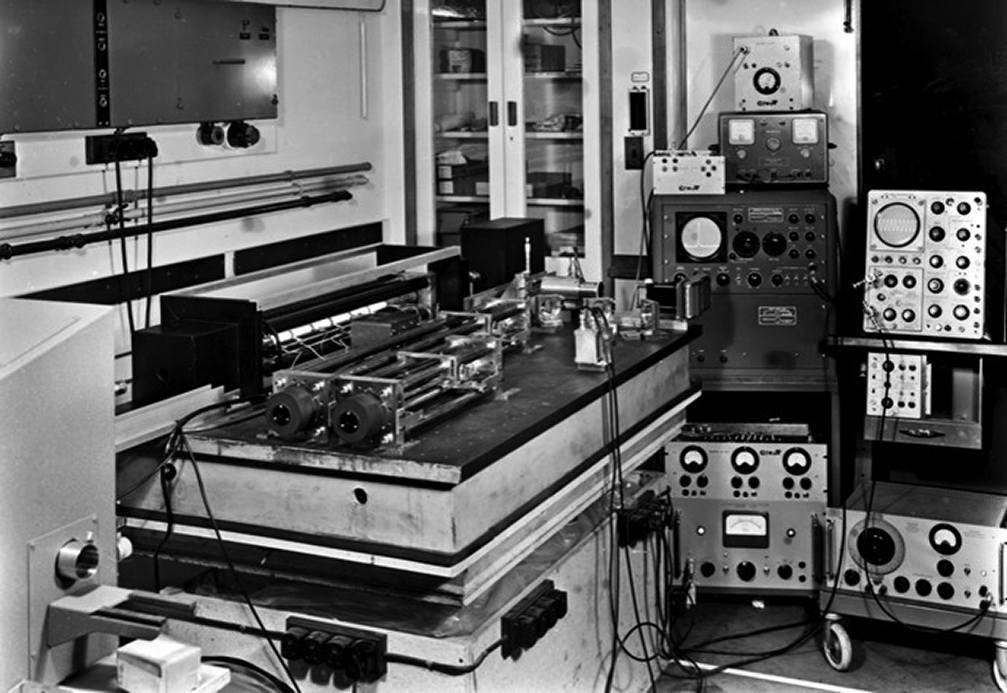
Figure 1 Ed Ballik’s 1.15 μm HeNe laser at Oxford 1963–1964. (Picture courtesy of the University of Oxford.)
Bill Silfvast joined John Deech in John Sanders’ group to take up a PostDoc Fellowship at Oxford. They were able to measure huge gains in the super-radiant transition of lead vapour[Reference Silfvast and Deech9], something that Bill Silfvast had previously discovered as a graduate student in Utah, USA. Bill returned to the USA leaving just John Deech and John Sanders working in the Clarendon Laboratory. New laser transitions, self-terminating laser transitions in the ionized spectrum of calcium and strontium were discovered in those years.
Colin Webb returned to the Clarendon Laboratory in 1968 following his time at Bell Laboratories, having recently taken over from John Sanders as head of Oxford’s Gas Laser Research Group. With Jim Piper, a young New Zealand PostDoc who started in 1971, they built two nitrogen lasers; one for John Deech, who had moved to the University of Reading, and one for Oxford. At the time, this type of pulsed ultraviolet (UV) laser represented the cutting edge of technology for pumping the tuneable dye lasers used for atomic spectroscopy. Before Jim Piper left Oxford in 1975 to take up a position at Macquarie University, Sydney, Australia, he and Colin once again collaborated on building the world’s first transversely excited copper iodide laser, a development which drew heavily on experience with the nitrogen laser.
In 1975, Colin came across the idea of a potentially very powerful type of pulsed UV laser, the so-called excimer laser, at a summer school in Capri. One major problem with these early rare-gas halide excimer lasers was that in order to excite the high-pressure gas mixture forming the laser medium they required bulky and very expensive electron beam generators. However, to make them accessible to a large range of users, Colin realized they could be excited by a gas discharge rather than electron beams, analogous to the nitrogen and copper–iodide lasers of which the Oxford group, by then, had quite a lot of experience.
A new graduate student Andrew Kearsley was tasked with solving the problem of how to run stable and uniform gas discharges in the notoriously difficult combination of high-pressure rare gases and electro-negative components such as fluorine gas. Although the Naval Research Laboratory (NRL) in Washington, DC, USA, was the first to demonstrate laser action in a purely discharge-excited rare-gas halide excimer laser in November 1975, by April 1976 Andrew had succeeded in getting KrF to lase in a more powerful discharge device. Further, Andrew’s device was of a much more practical design and formed the basis for all subsequent development of this type of laser. A spin-out company Oxford Lasers was started to exploit the new excimer laser technology. Colin Webb, John Deech, Alan Corney and Andrew Kearsley built the first excimer laser in the garage of Alan Corney’s home in Victoria Road, Oxford.
Another important development in the group was in gas processors for excimer lasers under the terms of a Ministry of Defence (MoD) contract. The contract was set up to investigate the causes of fall off in performance of excimer laser output as the gas mixture aged in use. They discovered, while taking samples of the gas using a liquid nitrogen trap, that the gas lifetime improved considerably. The cold trap removed some polyatomic compounds harmful to laser performance. The idea of cryogenically purifying excimer laser gases was patented by the MoD and licensed to Oxford Lasers.
Colin’s group continued to work on discharge-pumped excimer lasers and their applications, as well as on related systems such as the vacuum ultraviolet (VUV) molecular fluorine (F2) laser. Simon Hooker joined the group as a graduate student in 1986 to work on line-tunable VUV lasers optically pumped by F2 lasers. He and Colin eventually devised a scheme based on a Franck–Condon loop in nitric oxide, which exploited the Zeeman effect to shift the pump transition into coincidence with the rather narrow emission from the F2 laser (believed to be the first time that Zeeman shifting had been used in this way). Line-tunable operation of the ‘NO laser’ was demonstrated on about half-a-dozen transitions in the UV and VUV[Reference Hooker and Webb10, Reference Haxell, Hooker and Webb11]. At the time, the F2 laser, shown in Figure 2, gave the highest pulse energy of any discharge-pumped F2 laser[Reference Hooker, Haxell and Webb12].
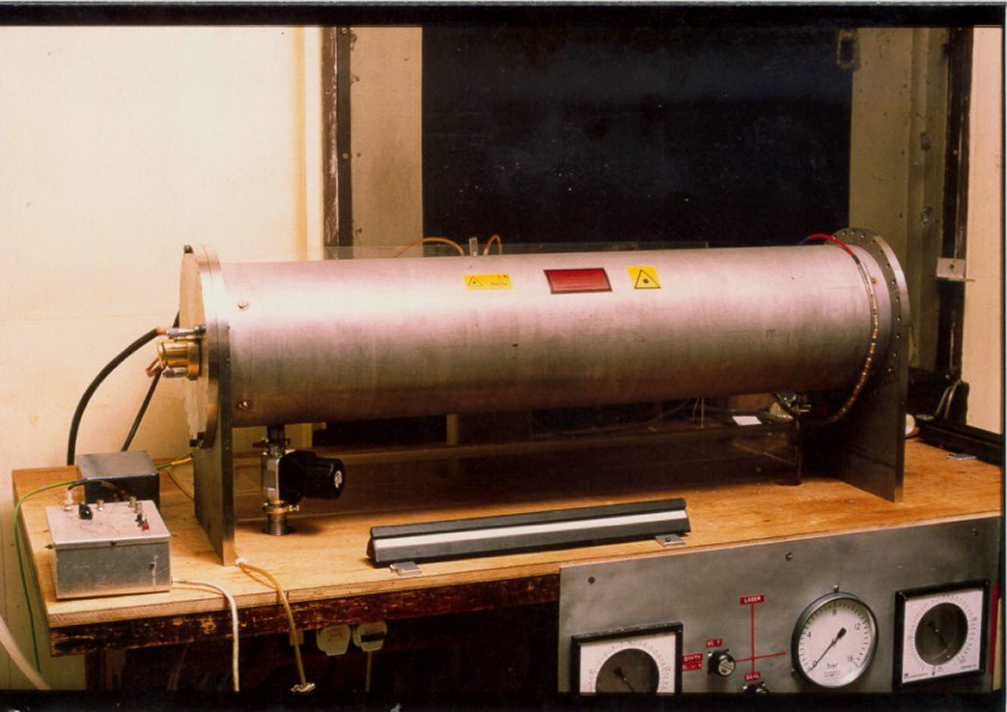
Figure 2 The F2 laser constructed in the Clarendon Laboratory in 1992. (Picture courtesy of the University of Oxford.)
During the 1980s and 1990s Colin Webb and his group undertook leading research on metal-vapour lasers and their applications, such as isotope separation and laser guide stars, an artificial star image created for use in astronomical adaptive optics systems, which are employed in large telescopes to correct atmospheric distortion of light. A key member of the group in this period was Dr. Tony Andrews, who undertook work on metal-vapour lasers and who provided day-to-day supervision to all the graduate students in Colin’s group.
Colin Webb was elected FRS in 1991 and was awarded an MBE in 2000. He finally gave up his tutorial duties at Jesus College in 1995 when he became Head of the sub-department of Atomic and Laser Physics. He held this post until 1999 when he handed over to Professor Keith Burnett. Upon Colin’s retirement, several members of his group including David Coutts, Graham Marshall, and David & Kristie Spence moved to join Jim Piper’s department at Macquarie University, Sydney, Australia.
After several years as a postdoc in Colin’s group, Simon Hooker went to work with Steve Harris in Stanford on optical-field ionized soft X-ray lasers. He returned to Oxford in 1996 to take up a Royal Society University Research Fellowship, and, later, a faculty position and fellowship at Merton College. He has recently followed in Colin’s footsteps to become Head of Atomic and Laser Physics. Simon’s group currently works on laser-driven plasma accelerators.
Paul Ewart came to Oxford in 1979 from Imperial College, London where he had been a member of Dan Bradley’s Laser Group having graduated from QUB and completed his PhD supervised by Bradley before moving with him to Imperial College London. The high power available from pulsed tuneable dye lasers was opening up a new type of spectroscopy and Paul and his colleagues had made the first recording of absorption spectra from short-lived excited singlet states in atoms[Reference Bradley, Ewart, Nicholas, Shaw and Thompson13].
Paul set up his own group in Atomic and Laser Spectroscopy at Oxford, specializing in non-linear laser spectroscopy where high power was essential, usually achieved by pumping the dye lasers with fixed-frequency Q-switched Nd:glass or Nd:YAG lasers. Narrow spectral widths were also important for such spectroscopy but the narrowest bandwidths achievable still contained several discrete longitudinal modes fixed by the laser cavity length. The intensity and frequency of the modes suffered random fluctuations from shot to shot leading to unacceptable noise on the signals obtained following atomic or molecular excitation.
The pulse durations, of typically 10 ns, gave insufficient time for any feedback controls to stabilize the mode frequencies. With a bit of lateral thinking, Paul designed a laser with no resonant cavity and hence no longitudinal modes. By replacing the mirrors of a conventional standing-wave laser with two off-set right-angle prisms a travelling wave was established that passed in parallel lines through four separate gain regions in the dye-cell containing the laser medium, shown in Figure 3. Amplified spontaneous emission from one of the gain regions was retro-reflected, from a small mirror, to initiate the lasing process and define the axis of the propagating laser pulse. The resulting laser output had a continuous spectrum rather than a set of discrete randomly fluctuating longitudinal modes[Reference Ewart14].This device, the Modeless Laser, turned out to be the solution to another, but related, problem that was plaguing the emerging technique of broadband coherent anti-Stokes Raman spectroscopy (CARS) developed by Jean-Pierre Taran and others in the early 1980s[Reference Druet and Taran15].
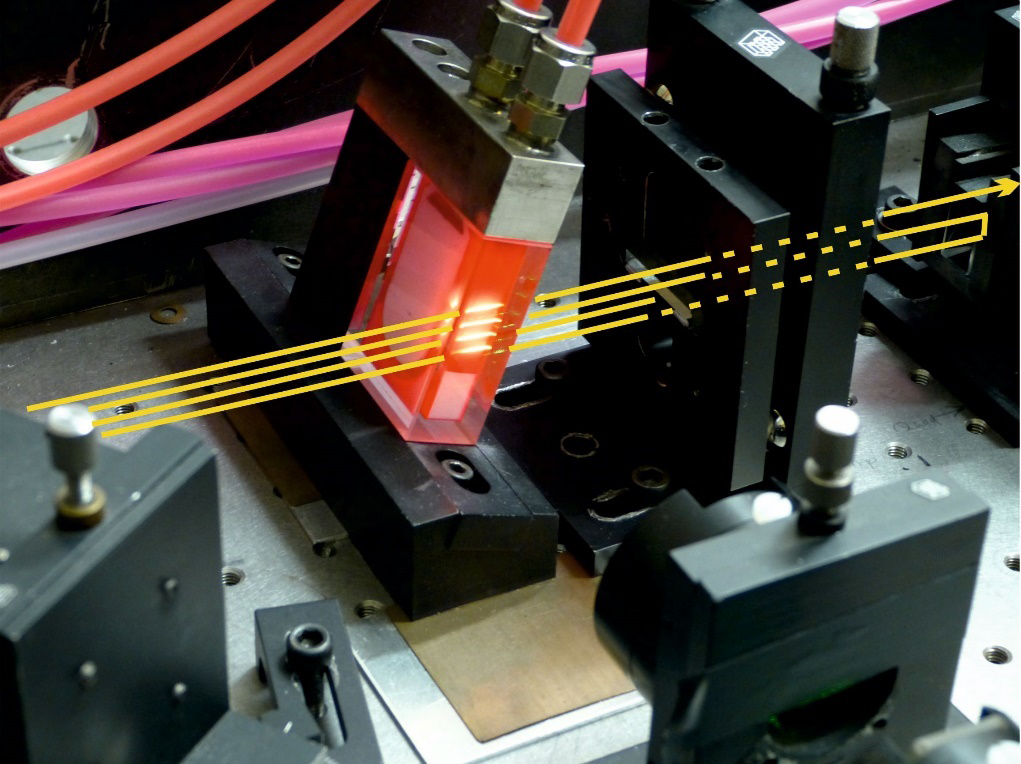
Figure 3 Close-up of a modeless laser showing dye cell, small strip mirror and one 45° prism at one end with overlaid lines to show the four-pass path of the laser beam travelling wave. (Picture courtesy of the University of Oxford.)
Broadband or multiplex CARS used a high-power, fixed-frequency pump laser in combination with a broad bandwidth laser, the Stokes laser, to generate Raman signals simultaneously across a wide range of a molecular absorption spectrum. Experimental CARS profiles of molecular nitrogen then allowed the temperature to be derived when compared with a theoretically calculated spectrum. This technique was becoming a powerful tool in combustion diagnostics. Unfortunately, the random fluctuations of intensity and frequency in conventional broadband lasers produced spectral noise that severely limited the precision of temperature measurement to the order of 10%–20%. Paul had shown that the modeless laser was capable of producing multiplex spectra by using it to demonstrate the first broadband degenerate four-wave mixing spectroscopy of the two separate resonance lines in atomic sodium in a flame[Reference Ewart and Snowdon16].
Working with researchers at Shell Research at Thornton, Paul and his graduate student, Peter Snowdon, who later went to work with Shell, replaced the broadband dye laser, in the commercial CARS system being used, with a modeless laser and demonstrated improved precision in the CARS signals[Reference Snowdon, Skippon and Ewart17].
Paul set up a small spin-out company, Mode-x Laser Systems, to provide the modeless laser commercially. The CARS group at the National Research Council in Canada purchased two of the first commercial modeless lasers and, with their single-mode pump laser, achieved CARS temperature precisions of the order of 1%–2%: an order of magnitude improvement over the conventional systems[Reference Snelling, Sawchuk and Parameswaran18]. The modeless laser became the device of choice world-wide for CARS and systems were provided for many of the leading research labs in combustion science. Paul continued to push the precision of laser thermometry further by pioneering a related four-wave mixing technique of laser-induced grating spectroscopy (LIGS), which achieved temperature accuracy of around 0.4% and precision of order 0.1%: over two orders of magnitude better than the original CARS measurements[Reference Stevens and Ewart19].
Oxford’s involvement in extremely high-power lasers goes back to 1988 when Justin Wark joined the Department as a Royal Society University Research Fellow (although previously he went to Oxford in 1979 as an undergraduate with Paul Ewart as his tutor). He had recently returned from a postdoctoral position at the Laboratory for Laser Energetics at the University of Rochester (via a brief spell at Imperial College), where he had been developing the use of high-power nanosecond lasers to generate bursts of quasi-monochromatic X-rays that could in turn be used to scatter from other laser-irradiated targets, especially for ultra-fast X-ray diffraction[Reference Wark, Whitlock, Hauer, Swain and Solone20]. This concept is now widely used around the world to interrogate high-pressure solid-state matter (formed by laser ablation) at pressures comparable to those in planetary cores, and after the fusion shots, these sorts of experiments are now some of the most frequently deployed at the National Ignition Facility (NIF) laser at Lawrence Livermore National Laboratory (LLNL). Diffraction at terapascal pressures is a rapidly growing field both at high-power laser facilities and the new X-ray free-electron lasers (XFELs).
Not long after Justin joined Oxford, Mike Key the then Director of the CLF at RAL, joined Justin at Oxford as a Visiting Professor. Mike, along with Ciaran Lewis at QUB and Geoff Pert and Greg Tallents at York, was one of the prime movers in the development of novel extreme ultraviolet (XUV) lasers covered in the section on the work of the X-ray Laser Consortium.
Given the interest in developing ever shorter wavelength coherent light sources, Oxford was heavily involved in the generation of very high harmonics of intense laser beams. Much of the work was based on the adaptation of the VULCAN laser at RAL to employ chirped pulse amplification (CPA), so that it could produce high-energy picosecond pulses (interestingly CPA was invented at Rochester whilst Justin was there in 1985 and was the breakthrough in laser technology that led to Donna Strickland and Gerard Mourou winning the Nobel Prize in 2018[21]). Matt Zepf joined Justin’s group as a DPhil student in 1994 and worked with Peter Norreys at RAL to show how very high harmonics can be generated from solid targets at laser intensities of the order of 1019 W·cm–2[Reference Norreys, Zepf, Moustaizis, Fews, Zhang, Lee, Bakarezos, Danson, Dyson, Gibbon, Loukakos, Neely, Walsh, Wark and Dangor22]). This seminal result was one of many that spawned intense interest in laser–matter interactions at ultrahigh intensities and positioned the UK as a leader in this field. Matt went on to permanent positions at QUB and now Jena, Germany, whilst such were the strong links with the RAL program that Peter Norreys joined the Department in Oxford in 2012 for a joint RAL/Oxford position and continues to pioneer the Oxford research program on laser–matter interactions at the highest intensity, as well as leading efforts into inertial confinement fusion.
The work using high-power lasers for HEDP grew with the appointment of Steve Rose as a Visiting Professor in 2003, and then Oxford secured funding for a new faculty position that was filled by Gianluca Gregori in 2007. The theoretical side of the group was also strengthened considerably around the same time with the appointment of Tony Bell FRS in the same year. Tony’s complementary expertise in astrophysics has led to many interesting overlaps across the sub-departmental divides, and further expanded the applications of high-power lasers into areas such as pair production. Tony received his FRS in 2017 for this pioneering work[23].
This growth in the group meant there was a critical mass of academics broadly interested in similar scientific areas utilizing high-power lasers (Simon Hooker, Justin Wark, Steve Rose, Gianluca Gregori, Tony Bell and Peter Norreys). This has led to a number of synergies, for example Simon and Gianluca have recently established new high-power laser laboratories in the basement of the Denys Wilkinson Building in Oxford. The new laboratories house several high-power lasers, including a 15 TW Ti:sapphire laser system, and provide experimental facilities for the flourishing High Energy Density Science Group in Oxford Physics.
The Oxford Centre for High Energy Density Science (OxCHEDS) was established in 2013 as a distinct entity. Links made with AWE over many years were formalized at this time, and the AWE-funded institute provides welcome support for students and academics and promotes scientific collaboration between Oxford and AWE. As well as using the Orion laser at AWE, the Oxford group have been leading users of international laser facilities including those at the CLF, as well as Omega at Laboratory for Laser Energetics (LLE) in Rochester, and the NIF at LLNL. Such is the success of the High Power Laser Group that many of its members have won one of the most prestigious prizes in plasma physics: the American Physical Society John Dawson Award for Excellence in Plasma Physics has been won by Peter Norreys (2006), Simon Hooker (2010), Justin Wark and Sam Vinko (2015), and Gianluca Gregori (2019 and 2020).
In keeping with the above history of both creating and exploiting lasers with shorter and shorter wavelength, it was logical for the group at Oxford to play a lead role in the exploitation of fourth-generation light sources: XFELs that can operate at hard X-ray energies, with femtosecond pulse durations, have full spatial coherence and peak spectral brightness over a billion times greater than any synchrotron. Justin Wark was a member of the Science Advisory Committee at Stanford when LCLS (Linac Coherent Light Source) first ‘lased’ in 2009[24], and his work with Sam Vinko (then a DPhil student) in 2010 comprised the first interrogation of how intense X-ray radiation (at intensities that had hitherto been the province of optical lasers) interacted with solid targets[Reference Vinko, Ciricosta, Cho, Engelhorn, Chung, Brown, Burian, Chalupsky, Falcone, Graves, Hájkova, Higginbotham, Juha, Krzywinski, Lee, Messerschmidt, Murphy, Ping, Scherz, Schlotter, Toleikis, Turner, Vysin, Wang, Wu, Zastrau, Zhu, Lee, Heimann, Nagler and Wark25].
Oxford has pushed hard for UK involvement in the European XFEL in Hamburg, Germany[26]. Gianluca Gregori led the first user commissioning experiment on the MEC (Matter in Extreme Conditions) end station in May 2019[Reference Descamps, Ofori-Okai, Appel, Cerantola, Comley, Eggert, Fletcher, Gericke, Göde, Humphries, Karnbach, Lazicki, Loetzsch, McGonegle, Palmer, Plueckthun, Preston, Redmer, Senesky, Strohm, Uschmann, White, Wollenweber, Monaco, Wark, Hastings, Zastrau, Gregori, Glenzer and McBride27]. The experimental team are shown in Figure 4 in the MEC end station. Justin Wark also secured funding from the Science and Technology Facilities Council (STFC) and Engineering and Physical Sciences Research Council (EPSRC) to place a 100 J, 10 Hz, diode-pumped nanosecond laser at the Euro-XFEL, which was developed by the CLF. It is currently being commissioned in the MEC end station.
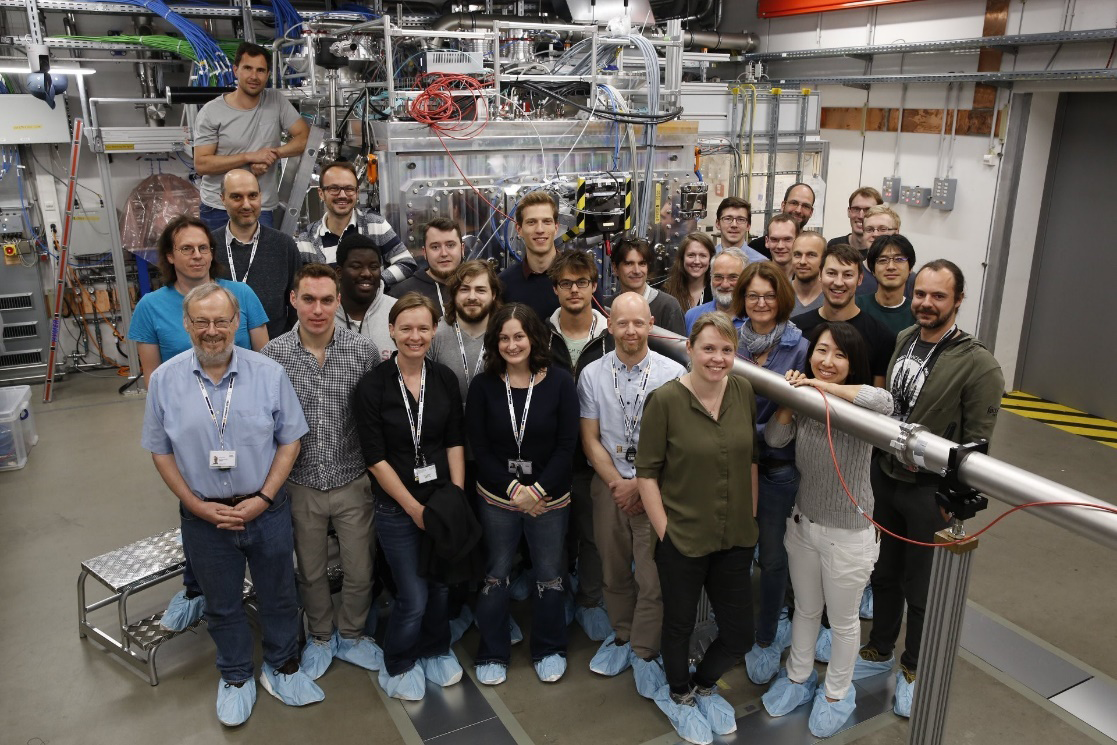
Figure 4 The experimental team in the Oxford-led first HED experiment on the Euro-XFEL in May 2019.
Much of this expansion into exploiting lasers at the shortest wavelength has been aided by the appointment of Sam Vinko as a Royal Society University Research Fellow in 2014, and then as a University Lecturer in 2020, continuing the long tradition of Oxford physics in the exploitation of lasers of shorter and shorter wavelength.
2.2 Imperial College London
Today, Imperial College London hosts the largest concentration of university based laser science in the UK, including extensive theoretical and experimental programmes in attoscience, high-power CPA and optical parametric chirped pulse amplification (OPCPA) laser development and high-average-power solid-state, fibre laser and diode pumped systems. Work spans multiple research groups including Quantum Optics and Laser Spectroscopy (QOLS)[28], Photonics[29] and Plasma Physics[30]. Fundamental laser science and ultra-fast laser physics is primarily concentrated in QOLS and the Extreme Light Consortium[31], while the Photonics Group works on more applied laser technologies, for example self-organizing (holographic) lasers, space-qualified diode-pumped solid-state systems for remote sensing, high-power and mid-infrared (mid-IR) fibre lasers[32] and mobile femtosecond medical and biophotonic imaging systems[33]. Members of the Plasma Physics Group are also extensive users of both UK and major international laser facilities such as RAL and Orion for experiments in areas including ion and electron acceleration and betatron X-ray imaging and also build and operate a number of in house multi-terawatt systems including Cerberus, a large multi-beam OPCPA system linked to the MAGPIE Z-Pinch[34].
Early history
High-power laser research began at Imperial from 1962 with the aim of developing a home-built ruby system by Mike Key (later Director of CLF) as part of his PhD project in the Plasma Physics Group, following a conversation over coffee with Malcolm Haines, then a young lecturer. After three years of development the system was linked to a small theta pinch in 1965 for Thompson scattering experiments[Reference Key35] to diagnose magnetized plasma conditions. Dan Bradley also joined Imperial at this time as a lecturer in the Instrument Technology Group (J. D. McGee’s group, later named Applied Physics). He began to collaborate with UKAEA Culham, who had one of the first commercial ruby lasers in the country: the Triton Instruments LS-4, which was a Q-switched system, which Dan used for work related to scanning Fabry–Pérot and image tubes (both for storage and image enhancement). Dan and Mike left Imperial in 1964 along with the ruby laser system (later retrofitted with Nd:glass), moving first to Holloway where Dan was appointed Reader, and then on to QUB where Mike was appointed to a lectureship and Dan took up a chair in 1966, with only the development of a home built HeNe laser and a pulsed CO2 system for probing plasmas continuing at Imperial.
PhD student Malcolm White along with Bucker Dangor (one of the founders of the field of laser particle acceleration) built a megawatt class CO2 system comprising an oscillator and three amplifiers (with parts from the local ‘corner store’ Harrods)[Reference White and Dangor36]. This system was used to make the first ever experimental measurement of the thermal conductivity in a laser heated plasma and compare it with the theoretical prediction[Reference White, Kilkenny and Dangor37]. Bucker also built a HeNe laser in 1964/1965 based on a system designed and built by the Baldock research laboratory associated with the Royal Navy before systems of this type became commercially available, using a laser tube blown by Oscar, the resident physics glass technician.
The pace accelerated markedly when Dan Bradley returned to Imperial in 1973, taking up a chair in laser physics, and bringing with him a vibrant group of staff, postdocs and PhD students including Geoff New (a future head of the Laser Optics and Spectroscopy (LASP) Group), Henry Hutchinson (later Director of the Blackett Laser Consortium and then the CLF at RAL), Roy Taylor, Paul Ewart and Wilson Sibbett. Roy and Wilson have since been appointed Fellows of the Royal Society, highlighting what an extraordinary team Dan Bradley was building at this time. Other individuals such as Bill Toner and Alan Cairns were involved in Dan’s team with theoretical support from Geoff New (one of the pioneers of the OPCPA technique), and Malcolm Haines who was to become Head of Plasma Physics at Imperial and one of the UK’s most prominent theoretical plasma physicists. Dan Bradley was Head of the Physics Department at Imperial from 1976 to 1980.
In the early 1970s Dan Bradley and Malcolm Haines played a key role in establishing the CLF at RAL. Members of the Plasma Physics Group such as Joe Kilkenny were early users of the new Nd:glass system at RAL, which was later named VULCAN.
Dan and his team continued to work on passively, actively and hybridly mode-locked continuous wave (CW) dye lasers, with the former delivering the first reliable source of pulses of a few hundred femtoseconds[Reference Ruddock and Bradley38]. At various times throughout the 1970s Dan’s group held the record for the shortest pulses generated by a laser. They also linked lasers to innovative electro-optic systems such as streak cameras, developing the synchroscan streak camera[Reference Adams, Sibbett and Bradley39], which was to revolutionize real-time, ultra-fast diagnostics. This was coupled to a what was for its time a substantial 100 mJ, 5 ps Nd:silicate picosecond pulse seeded chain with four amplifier stages. This allowed for the characterization of VUV streak cameras using the sixth and tenth harmonics (i.e., third and fifth harmonics of the second harmonic in neon or xenon). The shortest harmonic generated was the 28th order (the 7th order of the 4th harmonic) in a system shown in Figure 5. Work to extend streak camera operation into the soft and hard X-ray ranges for use in laser fusion research[Reference Stradling, Studebaker, Cavailler, Launspach and Planes40] was also conducted in the Plasma Group with Joe Kilkenny, Jonathan Hares and Anthony Dymoke-Bradshaw developing systems which were then commercialized very effectively by Kentech Instruments[41].
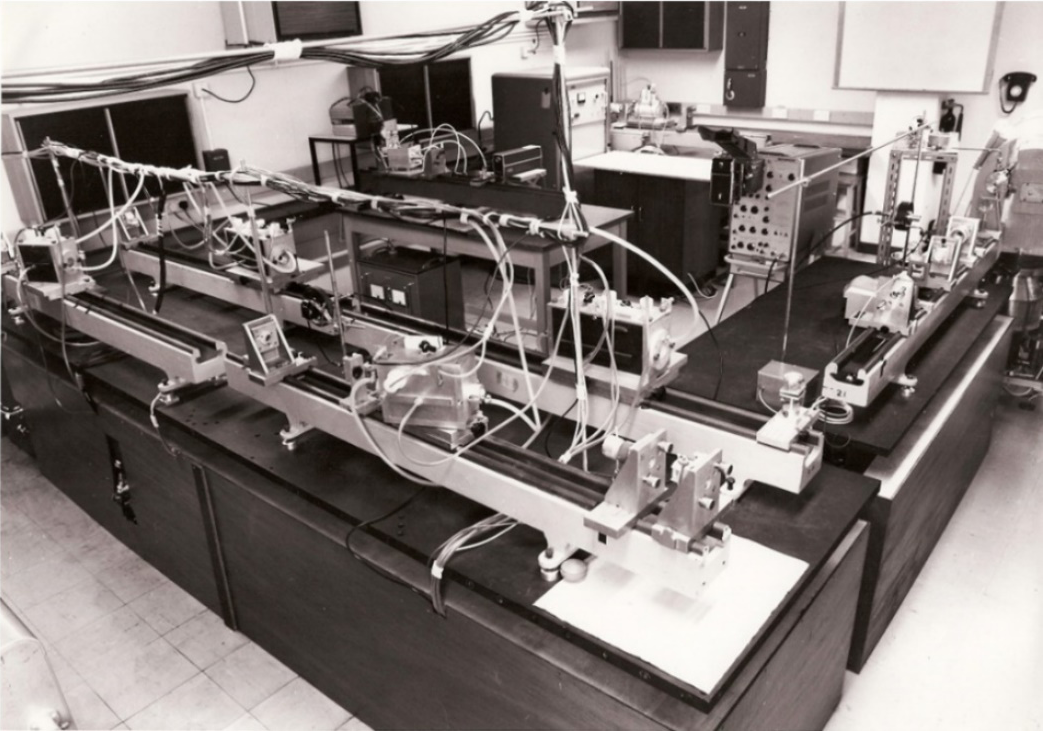
Figure 5 An early ~100 mJ, 5 ps flashlamp-pumped Nd silicate glass laser built by Roy Taylor at Imperial to investigate high harmonic generation (HHG; 2nd, 4th, 28th in Ne or He). (Picture courtesy of Imperial College London.)
Gigawatt pulsed dye laser systems operating at the few millijoule, few picosecond level[Reference Adrain, Arthurs, Bradley, Roddie and Taylor42] were also developed by Roy Taylor, with a flashlamp pumped dye laser system in 1974 (R6G/RB mode locked with DODCI/DQOCI (3,3’-diethyloxadicarbocyanine iodide/1,3’-diethyl-4,2-quinolyloxacarbocyanine iodide)) driving third and fifth harmonics and four wave mixing in alkali vapours and inert gases for tunable VUV generation, along with an expanding research programme in increasingly larger and larger aperture e-beam pumped excimer gas lasers for VUV generation[Reference Bradley, Hull, Hutchinson and McGeoch43]. An early excimer laser developed by the group is shown in Figure 6.
Theoretical work also continued, with Bradley and New publishing a seminal invited review paper of the field[Reference Bradley and New44], the first work to give a comprehensive coverage to the physics of short pulse measurement. Geoff New went on to become a leading theoretician in the field of non-linear optics modelling a number of experiments within the Sprite and TITANIA programmes at RAL and with Ian Ross and others at RAL, developing the theoretical underpinnings of the OPCPA technique now employed by many high-power systems worldwide[Reference Ross, Matousek, New and Osvay45]. In parallel with laser development work at Imperial, members of the then Spectroscopy Group including Dave Burgess and Anne Thorne saw the potential of lasers as powerful probes of excited states and began to exploit lasers for experiments in plasma spectroscopy from the early 1970s onwards[Reference Burgess and Skinner46]. Other members of the Spectroscopy Group at the time included Hans Bachor and Ken Baldwin, later leaders of laser development in Australia along with Jinx Cooper who went on to leadership roles at JILA in Colorado.
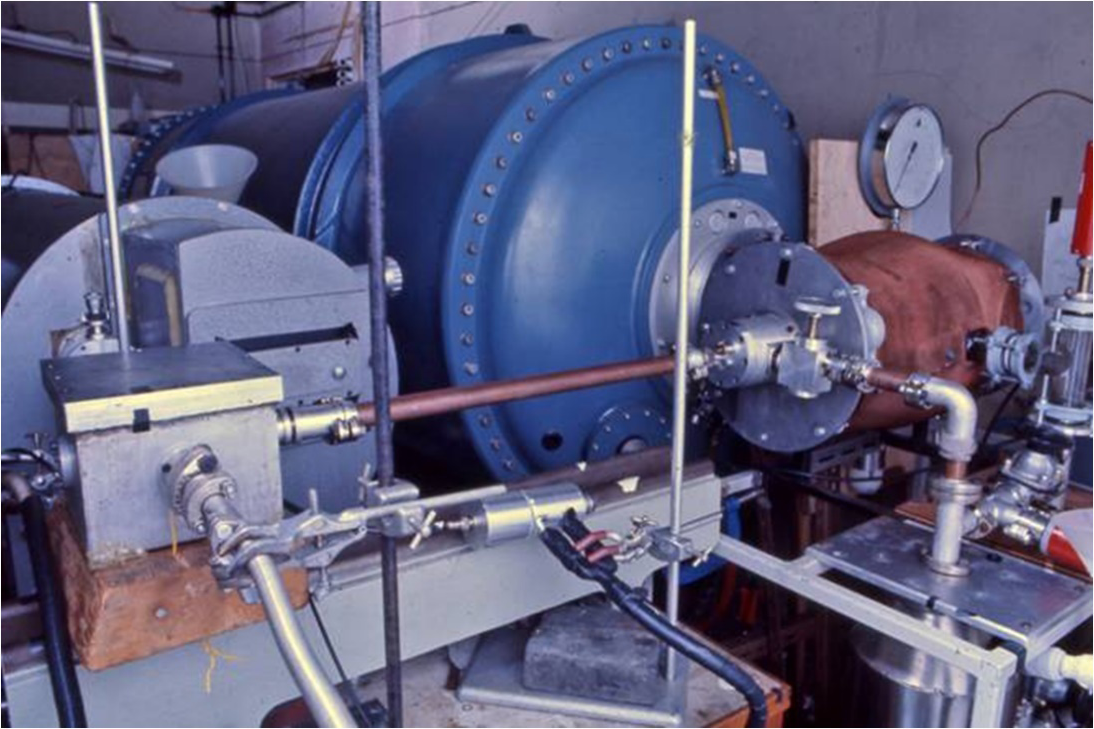
Figure 6 Dan Bradley and Henry Hutchinson’s excimer laser in the basement of the Huxley building, Imperial College London. (Picture courtesy of Imperial College London.)
In the early 1980s members of the Plasma Physics Group became major users of the UK’s high-power laser facilities at the CLF. For example, Oswald Willi and his team, investigated early X-ray laser schemes, detailed later in the section on the X-ray Laser Consortium. Oswald’s team also worked on plasma instabilities and thermal transport[Reference Willi, Kiehn, Edwards, Barrow, Smith, Wark and Turcu47] related to laser fusion and in 1989 led the first interaction experiments using the Sprite laser at RAL. Sprite was also used to test ideas for creating ‘low-temperature’ laser plasmas that could be used for recombination X-ray laser schemes by Bucker Dangor in collaboration with Mike Key and Justin Wark[Reference Offenberger, Blyth, Dangor, Djaoui, Key, Najmudin and Wark48]. A large cohort of PhD students were also trained by Oswald, Bucker and others at this time, with many moving on to prominent roles elsewhere, for example John Edwards (associate director for inertial confinement fusion at NIF), Mike Dunne (Director of LCLS) and Marco Borghesi (Professor and Head of Group at QUB).
Work led by Bucker Dangor at this time also sought to use the VULCAN laser as a driver for an electron acceleration scheme using a ‘beat-wave’. This required co-propagating two synchronized and slightly different wavelength pulses through VULCAN, a major technical challenge at the time given the inherent bandwidth limitations of Nd:glass. The CLF adapted the 100 ps oscillator system on VULCAN, led by Colin Danson, to produce two wavelengths 1053 and 1064 nm in Nd:YLF and Nd:YAG and then used a mix of Nd:phosphate and silicate glass in the amplifier chain to give high-energy synchronized pulses at both wavelengths[Reference Dangor, Afshar-Rad, Cole, Danson, Dymoke-Bradshaw, Dyson, Edwards, Evans, Garvey and Mitchell49]. However, the beat-wave acceleration scheme itself was extremely challenging to operate as it required exquisite matching between the laser and plasma conditions and was eventually superseded by single-pulse techniques.
Blackett Laboratory Laser Consortium (BLLC) and early CPA lasers in the UK
With the first demonstration of the elegant CPA technique to circumvent non-linear optical damage in a high-power laser in 1985 by Strickland and Mourou[Reference Strickland and Mourou50] it became clear that there were important opportunities to extend high-power laser science and exploit this new technique in areas including high-field atomic physics and laser plasma experiments. A collaboration between leading theoretical and experimental physicists from the LASP and Plasma Physics Groups at Imperial led by Peter Knight, Henry Hutchinson, Keith Burnett, Oswald Willi, Dave Burgess and J.-P. Connerade with then Postdocs Roland Smith and Jon Marangos set out to develop a Nd:glass-based 1 J, 1 ps table-top terawatt (T3) laser at Imperial. This system initially used a 10 ps actively mode-locked Nd:YLF oscillator, pulse stretching and bandwidth generation in 2 km of optical fibre and then regenerative and multi-pass amplification in Nd:glass. It was the first CPA laser of its kind operational in Europe and is shown in Figure 7. Early successes driven by this system focused on high harmonic generation (HHG) and included the first temporal[Reference Faldon, Hutchinson, Marangos, Muffet, Smith, Tisch and Wahlstrom51], spatial[Reference Tisch, Smith, Ciarroca, Muffet, Marangos and Hutchinson52] and coherence measurements[Reference Ditmire, Gumbrell, Smith, Tisch, Meyerhofer and Hutchinson53] of high-order harmonics, work that now underpins the field of attoscience.
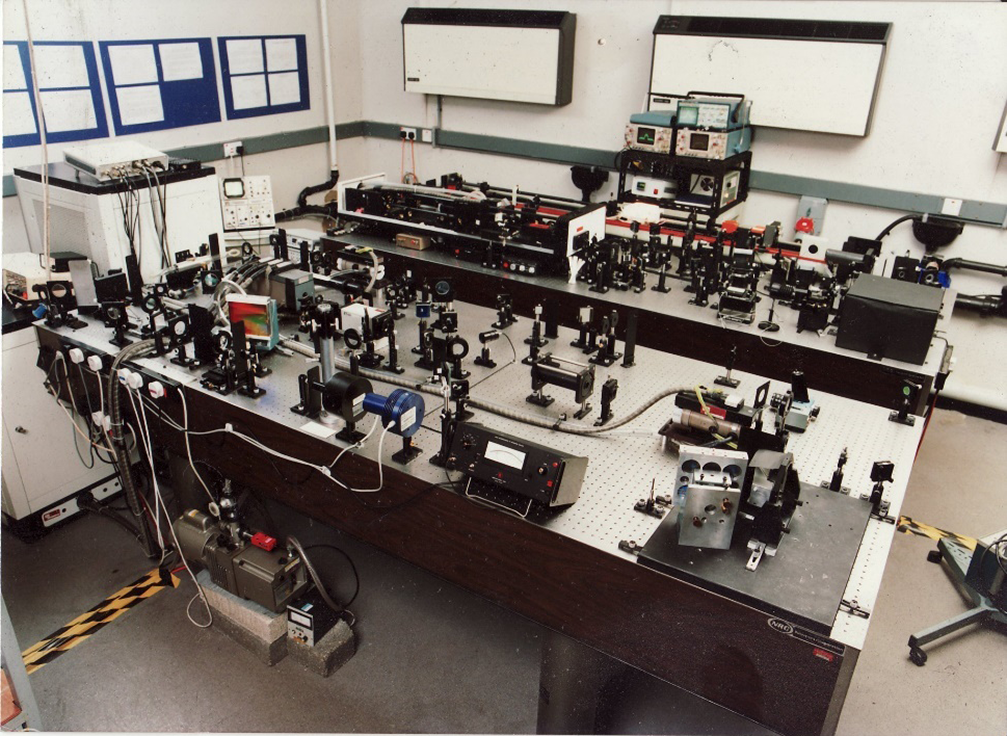
Figure 7 The UK’s first table-top terawatt (TReference Gould3) system, a 1 J, 1 ps TReference Gould3 laser developed at Imperial College by the Laser Consortium, circa 1998. This was the first operational T3 CPA laser system in Europe, built by PhD student Mary Falden and then Postdoc Roland Smith. (Picture courtesy of Imperial College London.)
The T3 system operated for over a decade, being upgraded a number of times to shorter-pulse and higher-energy operation by Roland Smith, with larger gold holographic compressor gratings and a Martinez-style stretcher in place of the original optical fibre. It was then used for much of the formative work on high-intensity laser interactions with atomic clusters[Reference Ditmire, Smith, Tisch and Hutchinson54, Reference Ditmire, Smith, Marjoribanks, Kulcsar and Hutchinson55] key aspects of which were driven by then Postdoc Todd Ditmire (now Professor at University of Austin at Texas), EPSRC Research Fellow John Tisch (now Professor and Head of the QOLS Group at Imperial) and Roland Smith. This work exploited the unique ability of clusters to couple to intense few picoseconds laser pulses through a dynamic plasma resonance[Reference Ditmire, Smith, Tisch and Hutchinson54, Reference Ditmire, Tisch, Springate, Mason, Hay, Marangos, Smith and Hutchinson56, Reference Springate, Hay, Tisch, Mason, Ditmire, Hutchinson and Marangos57] and was fundamental in launching the field of laser–cluster interaction physics, which led to later successes such as a demonstration of table-top thermonuclear fusion at LLNL using the Falcon laser[Reference Zweiback, Smith, Cowan, Hays, Wharton, Yanovsky and Ditmire58] in collaboration with scientists from Imperial.
The Blackett Laboratory Laser Consortium (BLLC), funded by grants from ESPRC, MoD and Imperial College, was initially under the directorship of Henry Hutchinson, and later Jon Marangos after Henry moved to RAL as the director of CLF. Techniques and diagnostics developed on the original Nd:glass CPA laser (for example, high-dynamic-range third-order autocorrelation[Reference Luan, Hutchinson, Smith, Zhou and Meas59] and fibre-mode locked oscillators for use as the front end of a picosecond CPA laser[Reference Mercer, Chang, Danson, Edward, Hutchinson and Miller60]) were instrumental in helping the CLF and other laboratories in Europe implement the CPA technique more effectively on larger-scale systems such as VULCAN. Imperial also collaborated with the CLF on the first CPA target experiments at RAL which observed plasma and MeV particle jet collimation[Reference Bell, Beg, Chang, Dangor, Danson, Edwards, Fews, Hutchinson, Luan, Lee, Norreys, Smith, Taday and Zhou61]. The higher energies and higher intensities produced by VULCAN enabled a series of high-profile collaborative experiments led by Imperial’s Bucker Dangor, including the first demonstration of self-injection from wakefield accelerators[Reference Modena, Najmudin, Dangor, Clayton, Marsh, Joshi, Malka, Darrow, Danson, Neely and Walsh62], the production of energetic jets of protons and heavy ions[Reference Clark, Krushelnick, Davies, Zepf, Tatarakis, Beg, Machacek, Norreys, Santala, Watts and Dangor63, Reference Clark, Krushelnick, Zepf, Beg, Tatarakis, Machacek, Santala, Watts, Norreys and Dangor64] and the production of solid harmonics up to the XUV[Reference Norreys, Zepf, Moustaizis, Fews, Zhang, Lee, Bakarezos, Danson, Dyson, Gibbon, Loukakos, Neely, Walsh, Wark and Dangor22].
The glass laser at Imperial also helped other groups establish their own high-power laser activities. Claes-Göran Wahlström who became Director of the Lund Laser Centre, Sweden, spent a year at Imperial working on the glass system before Lund began work on its own CPA program, while Simon Hooker, now Professor at Oxford, was able to conduct some of his first laser guiding experiments on this system at Imperial[Reference Hooker, Spence and Smith65].
The BLLC also worked on shorter-pulse high-power systems, initially on sub-100 fs colliding pulse mode locked dye lasers operating in the visible seeding an amplifier chain pumped with excimers during the early 1990s, while Roy Taylor and colleagues continued to make pioneering advances in ultra-fast seed sources, including the first self-mode locking of Ti:sapphire below 50 fs[Reference Rizvi, French and Taylor66]. However, the difficulty of scaling dye laser systems to high energy and the general hazards of working with toxic chemicals and flammable solvents prompted development of a high-energy Ti:sapphire system from the mid-1990s onwards. A 150 fs, 150 mJ Ti:sapphire CPA laser system was developed by a team including Mike Mason (now Director of Engineering, Coherent UK) and John Tisch, shown in Figure 8, and used as a platform for an extensive series of investigations into processes such as energetic cluster explosions[Reference Shao, Ditmire, Tisch, Springate, Marangos and Hutchinson67], HHG with molecular gases[Reference Fraser, Hutchinson, Marangos, Shao, Tisch and Castillejo68], high-field interactions with fullerenes[Reference Hay, Springate, Mason, Tisch, Castillejo and Marangos69] and pioneered experimental techniques that permit the study of strong field interactions with controllably aligned molecules[Reference Velotta, Hay, Mason, Castillejo and Marangos70]. Alongside these technical and scientific developments, the BLLC also trained a large cohort of PhD students, many of whom moved on to roles in industry and both UK and international laboratories.
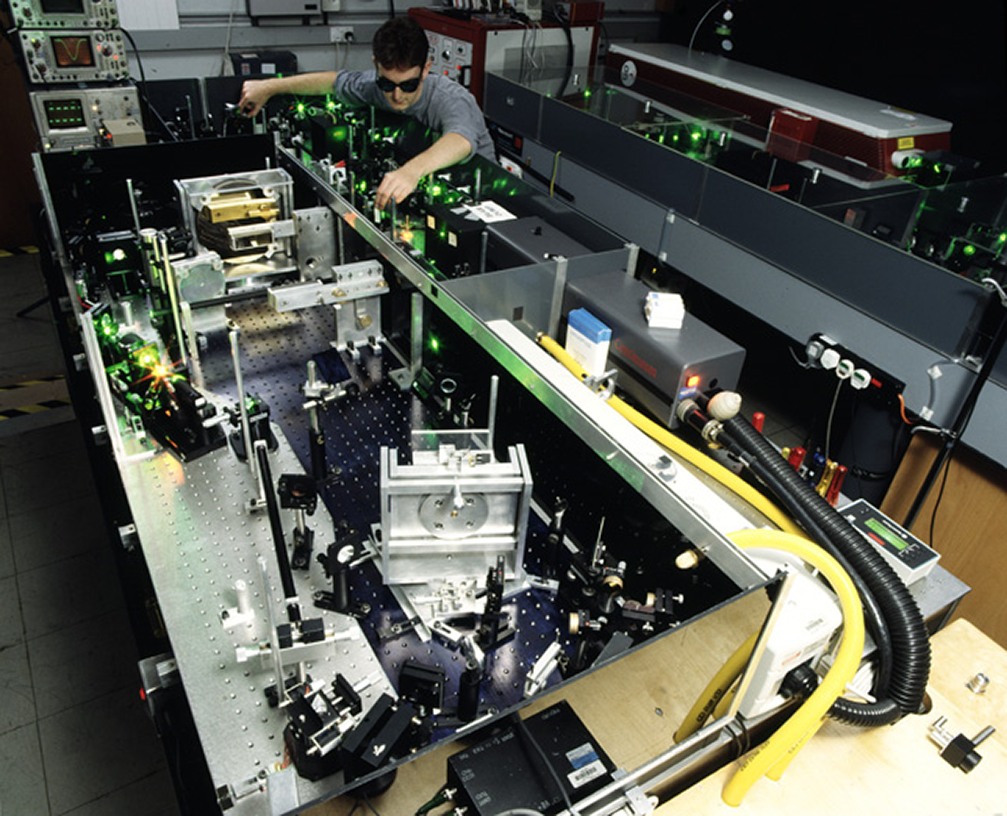
Figure 8 Imperial College’s terawatt 150 fs, 150 mJ Ti:sapphire CPA system circa 2000 being adjusted by the then PhD student Mike Mason. (Picture courtesy of Imperial College London.)
In the last decade, under Jon Marangos’ direction, the focus of the BLLC moved to the problem of generating and harnessing attosecond light pulses for probing ultra-fast processes such as electron dynamics and ionization in a single molecule. By this time, Ti:sapphire lasers operating at kilohertz repetition rates and tens of millijoules energies below 30 fs had become a commercial reality and the BLLC exploited a number of these systems as the front-end for innovative hollow-fibre bandwidth generation and pulse compression (HFPC) systems with much of the development led by John Tisch (now Professor and Head of the QOLS Group at Imperial). These hybrid systems were able to routinely deliver multi-millijoule pulses with world-leading durations below 4 fs[Reference Witting, Frank, Arrell, Okell, Marangos and Tisch71] and then drive sub-200 as soft X-ray pulses for experiments in surface science[Reference Okell, Witting, Fabris, Arrell, Hengster, Ibrahimkutty, Seiler, Barthelmess, Stankov, Lei, Sonnefraud, Rahmani, Uphues, Maier, Marangos and Tisch72], ultra-fast molecular rearrangement[Reference Baker, Robinson, Haworth, Teng, Smith, Chirila, Lein, Tisch and Marangos73] and molecular dynamics[Reference Torres, Siegel, Brugnera, Procino, Underwood, Altucci, Velotta, Springate, Froud, Turcu, Patchkovskii, Ivanov, Smirnova and Marangos74]. The BLLC became the primary centre for attoscience in the UK, but the tradition of spinning out core expertise and technologies to UK national laboratories continued, with an Imperial HFPC system being installed at RAL to enable the Astra Artemis system to deliver sub-femtosecond pulses for use by the wider scientific community.
Work also continued on higher-energy in-house systems, with the development of Cerberus, a large multi-beam OPCPA/Nd:glass laser by a collaboration between the QOLS and Plasma Physics groups led by Roland Smith and Sergey Lebedev. Construction of Cerberus began in 2008, and a unique feature of this system and its initial scientific driver was the ability to deliver light to both standalone target areas and the megaamp, megavolt Z-Pinch MAGPIE allowing it to drive fully quantitative plasma diagnostics including two-dimensional Faraday rotation imaging of magnetic fields[Reference Swadling, Lebedev, Hall, Patankar, Stewart, Smith, Harvey-Thompson, Burdiak, de Grouchy, Skidmore, Suttle, Suzuki-Vidal, Bland, Kwek, Pickworth, Bennett, Hare, Rozmus and Yuan75] and multi-point Thomson scattering[Reference Harvey-Thompson, Lebedev, Patankar, Bland, Burdiak, Chittenden, Colaitis, De Grouchy, Doyle, Hall, Khoory, Hohenberger, Pickworth, Suzuki-Vidal, Smith, Skidmore, Suttle and Swadling76]. This capability is currently only rivalled by the much larger Z-Beamlet and Z-Facility at the Sandia National Laboratory, USA. Cerberus includes a number of 50 mm diameter Nd:glass rod amplifiers donated by AWE following the shutdown of the HELEN laser, allowing long-pulse operation at energies beyond ~30 J. The short pulse arm is currently limited to ~5 J, 500 fs, 10 TW operation as a result of B-integral in the compressor, however in 2021 a new vacuum compressor and a series of additional larger aperture OPA gain stages will be commissioned, which will allow Cerberus to deliver >20 J, 50 TW shots on target.
The front-end architecture of Cerberus is by a combination of design and ‘convergent evolution’ very similar to that of the Orion laser at AWE, allowing this system to be used for proof of principle laser and diagnostic development for Orion. It has also been used to develop new plasma diagnostic systems such as multi-wavelength imaging interferometry[Reference Patankar, Gumbrell, Robinson, Lowe, Giltrap, Price, Stuart, Kemshall, Fyrth, Luis, Skidmore and Smith77] and high-brightness broad-band light sources[Reference Floyd, Gumbrell, Fyrth, Luis, Skidmore, Patankar, Giltrap and Smith78] for Orion, a facility also accessed by members of the Plasma Physics Group for experiments in areas such as radiative astrophysical shock studies[Reference Suzuki-Vidal, Clayson, Stehlé, Swadling, Foster, Skidmore, Graham, Burdiak, Lebedev, Chaulagain, Singh, Gumbrell, Patankar, Spindloe, Larour, Kozlova, Rodriguez, Gil, Espinosa, Velarde and Danson79].
The strong Iλ 2 scaling of ponderomotive energy with laser wavelength, and the success of >1.5 μm lasers in driving HHG to shorter wavelengths highlighted the attraction of mid-IR laser systems for extreme optical physics. In 2016 Imperial began work on a new high-energy mid-IR laser Chimera co-funded by Defence and Science Technology Laboratory (DSTL), EPSRC and the US Air Force Office of Scientific Research (AFOSR) as part of the first of a series of multi-national UK–US MURI projects. Chimera is a multi-beam mid-IR laser with an 800 nm, 7 fs Ti:sapphire front end, seeding a high-energy Nd:YLF pump chain, an 800 nm OPCPA stage which then generates 2–4.5 μm light by difference frequency generation with over 1 μm of bandwidth. A series of OPA gain stages then amplify 3.7 and 1.6 μm pulses, with a target performance of >50 mJ, 30 fs at 3.7 μm and higher energies at 1.6 μm. The system is currently operational at ~7 mJ and being scaled up towards its final target energy. The MURI project also funds mid-IR laser development and its exploitation for ultra-fast science[Reference Johnson, Austin, Wood, Brahms, Gregory, Holzner, Jarosch, Larsen, Parker, Strüber, Ye, Tisch and Marangos80, Reference Johnson, Miseikis, Wood, Austin, Brahms, Jarosch, Struber, Ye and Marangos81] by extending the wavelength shifting and HFPC capabilities of lower energy, but higher repetition rate kilohertz systems operated by the Extreme Light Consortium.
Scientists from Imperial continue to be highly active at RAL and Orion in the UK and at other leading laser facilities worldwide, with for example Stuart Mangles and Zulfikar Najmudin leading prominent activities in gigaelectronvolt electron acceleration[Reference Mangles, Murphy, Najmudin, Thomas, Collier, Dangor, Divall, Foster, Gallacher, Hooker, Jaroszynski, Langley, Mori, Norreys, Tsung, Viskup, Walton and Krushelnick82, Reference Kneip, Nagel, Martins, Mangles, Bellei, Chekhlov, Clarke, Delerue, Divall, Doucas, Ertel, Fiuza, Fonseca, Foster, Hawkes, Hooker, Krushelnick, Mori, Palmer, Phuoc, Rajeev, Schreiber, Streeter, Urner, Vieira, Silva and Najmudin83], multi-megaelectronvolt ion acceleration[Reference Palmer, Dover, Pogorelsky, Babzien, Dudnikova, Ispiriyan, Polyanskiy, Schreiber, Shkolnikov, Yakimenko and Najmudin84, Reference Willingale, Mangles, Nilson, Clarke, Dangor, Kaluza, Karsch, Lancaster, Mori, Najmudin, Schreiber, Thomas, Wei and Krushelnick85] and betatron radiation imaging experiments[Reference Kneip, McGuffey, Martins, Martins, Bellei, Chvykov, Dollar, Fonseca, Huntington, Kalintchenko, Maksimchuk, Mangles, Matsuoka, Nagel, Palmer, Schreiber, Phuoc, Thomas, Yanovsky, Silva, Krushelnick and Najmudin86, Reference Cole, Symes, Lopes, Wood, Poder, Alatabi, Botchway, Foster, Gratton, Johnson, Kamperidis, Kononenko, De Lazzari, Palmer, Rusby, Sanderson, Sandholzer, Sarri, Szoke-Kovacs, Teboul, Thompson, Warwick, Westerberg, Hill, Norris, Mangles and Najmudin87] at large facilities. During his time as Director of the CLF, Henry Hutchinson initiated the development of the Astra laser at the RAL. Astra was then used in the first demonstration of monoenergetic electron beams from a laser accelerator[Reference Johnson, Austin, Wood, Brahms, Gregory, Holzner, Jarosch, Larsen, Parker, Strüber, Ye, Tisch and Marangos80], by a team led by Krushelnick, Dangor and Najmudin. Astra and its successor Astra Gemini have continued to drive major advances in the field of laser-driven plasma accelerators, many of these proposed and lead by Imperial academics. To support their work at national facilities, the Plasma Group operates a home-built >100 mJ, 30 fs Ti:sapphire laser for small-scale acceleration experiments and diagnostic development, complementing Cerberus, Chimera and three ultra-fast laser systems operated by the Extreme Light Consortium, an evolution of the original BLLC.
2.3 QUB
After short periods of his early career at Imperial College and Royal Holloway College, Dan Bradley was appointed Head of the Physics Department at QUB in 1966. Mike Key moved with him, and Geoff New joined the group from Oxford in 1967. Dan Bradley was very successful in attracting funding, and this allowed him to build the department into one of the world’s leading laser research centres. Dan’s team circa 1969 is shown in Figure 9.

Figure 9 Dan Bradley’s group at QUB circa 1969. (Picture courtesy of QUB.)
By 1970, QUB was at the leading edge of UK laser research, particularly in the generation of picosecond pulses in Q-switched and mode-locked Nd:glass lasers, and later in dye lasers. The two-photon fluorescence technique for pulse-width measurement was developed at that time and shown to be capable of sub-picosecond resolution[Reference Bradley, Liddy, Sibbett and Sleat88]. Pioneering work in the theory of mode-locking in CW dye lasers was also carried out during this period[Reference Arthurs, Bradley and Roddie89].
At the same time, Dan Bradley teamed up with Brian Bates to establish a space research group of international standing in the field of high-resolution solar spectroscopy. Yet another important research focus involved the development of a picosecond resolution optical streak camera. Dan Bradley and Bill Sleat established a link with a small UK consultancy company, and this became Electro-Photonics Ltd (EPL), which exploited the laser developments at QUB. EPL was best known for the flashlamp pumped model 33 dye laser, which became a standard research tool for many laboratories. The company also produced an optical streak camera with 15 ps resolution. EPL was absorbed into Hadland Photonics Ltd in 1976.
By the early 1970s, Mike Key had established a Nd:glass system which was quite impressive for the time. It had three oscillators (mode-locked Nd:YAG and Nd:glass plus Q-switched glass) which could be selected to feed the same amplifier chain with different duration pulses. The chain incorporated home built and commercial amplifiers, eventually culminating in a 38 mm diameter Korad rod amplifier. Even then, just over a decade from invention of the laser, the laser was able to provide 30 J/6 ns, 3 J/100 ps or 100 mJ/10 ps pulses for a range of experimental interactions. Beam quality and self-focusing damage was always a problem, but the chain included home-built apodized apertures, spatial filtering, Faraday rotators, a laser-triggered spark gap and double-pass amplifier geometries.
In 1973, with political tension high in Northern Ireland, Dan Bradley took up a chair back at Imperial College. Several members of his group left with him including Geoff New, Henry Hutchinson, Paul Ewart, Wilson Sibbett and Roy Taylor. In the same year, Mike Key went on sabbatical to MPI Munich and, soon after his return to QUB, was seconded to RAL.
During his final undergraduate year at QUB in 1970 Ciaran Lewis opted for a final year project topic ‘X-ray lasers’ inspired by the popular scientific press. His supervisor was Mike Key which led to him joining his research group in 1971 to start a PhD to explore options for shorter than visible wavelength laser devices. It turned out Mike Key already had a student, Bernard Rogers, working on a fast discharge VUV hydrogen laser and Ciaran worked alongside him at the start. Ciaran was one of the principal researchers in the UK X-ray Laser Consortium working closely with groups across the UK. The work of the Consortium is detailed in a separate section of this review. Ciaran Lewis was Head of Laser Interaction and Optoelectronic and later Plasma and Laser Interaction Physics Research Divisions (LIORD and PLIP) in QUB between 1989 and 2005. He was Acting Director of the International Research Centre for Experimental Physics (IRCEP, see below) in 2005 and Deputy Director of the re-structured Centre for Plasma Physics (CPP) from establishment in 2006 until his retirement in 2015.
It was the earlier optical streak camera development that led to the demonstration of an X-ray streak camera at QUB. Their glass workshops simply cut the end of an optical camera, fitted an O-ring seal around the open end used grazing incidence onto a suitable cathode. The first streak was of a carbon resonance line spectrum ~3–4 nm using grating dispersion and soon after an aluminium resonance line streak ~1 nm using crystal dispersion.
The QUB glass laser developed slowly after the arrival of access to the CLF at RAL in the late 1970s but stayed below ~10–50 GW capability. The case for a central facility was based on the premise that several strong university groups should not be competing for the same money to build parallel small laser systems at home institutions. But QUB benefitted by upgrades to VULCAN at the CLF through donations of old target chambers, such as from its TA2 and TAW target areas. Figure 10 shows Ciaran Lewis and his first PhD student, Peter Cunningham, at QUB in the mid-1980s with the old TA2 chamber installed in a customized room next to the Nd:glass laser system. Peter later went to University of Natal, Durban, South Africa, to work with Professor Max Michaelis.
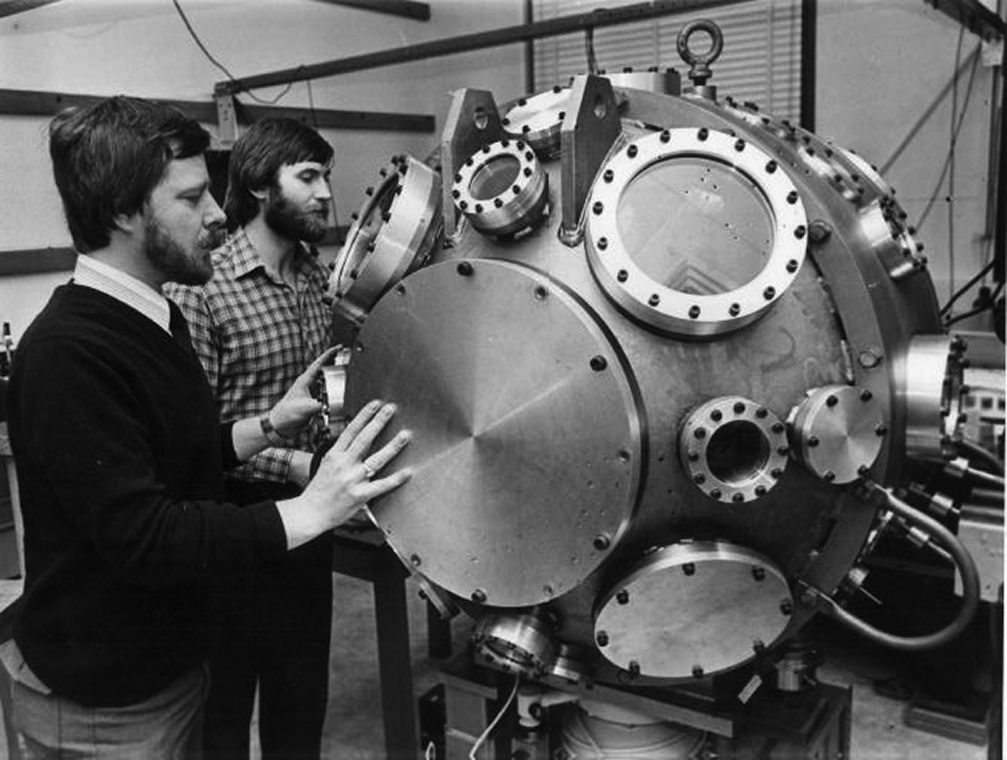
Figure 10 Ciaran Lewis and his first PhD student, Peter Cunningham, at QUB in the mid-1980s with the TA2 target chamber recycled from the CLF. (Picture courtesy of QUB.)
As the CLF lasers grew it became clear that the advantage of university home-based smaller lasers to train students and test ideas was becoming increasingly important to increase the scientific efficiency of experiments at the CLF. An opportunity arose towards the end of the 1990s to address this problem. An EPSRC Support Programme for University Research (SPUR) initiative was launched and QUB, led by Ken Bell (Head of School of Mathematics and Physics) and aided by Ciaran Lewis specifically on major laser aspects, prepared an application to procure a facility infrastructure to support a range of activities. The bid for £9.3 million was successfully funded (and partly privately supported by Atlantic Philanthropies) and the extension/refurbishment to the old Physics building culminated in the official opening of the IRCEP building in June 2005 and the formation of new research centres, including the CPP[90].
With IRCEP laboratory space available, a successful grant application to EPSRC enabled the purchase and installation of a custom-built laser, known as TARANIS (Terawatt Apparatus for Relativistic and Non-linear Interaction Science). This capital project was co-funded with support from QUB and industrial sponsorship. The new laser system produced its first significant scientific output in 2008. The TARANIS laser[Reference Dzelzainis, Nersisyan, Riley, Romagnani, Ahmed, Bigongiari, Borghesi, Doria, Dromey, Makita, White, Kar, Marlow, Ramakrishna, Sarri, Zaka-Ul-Islam, Zepf and Lewis91] is a Nd:glass system that can deliver up to 30 J in a nanosecond pulse and ∼10 J in <1 ps. The laser is a hybrid Ti:sapphire–Nd:glass system using CPA. The laser front-end consists of a Ti:sapphire oscillator, an all-reflective folded stretcher and a Ti:sapphire regenerative amplifier. Amplification to multi-terawatt levels is achieved in a multi-stage flashlamp pumped Nd:phosphate glass rod chain with two rods of 9 mm and two of 25 mm diameter. The third stage consists of two parallel 50 mm diameter rods for amplification of two separate pulses up to peak energies of ~30 J per pulse at a repetition rate of one shot every 10 minutes. The pulses from the glass rod chain can be recompressed in two double-pass grating compressors each one with two 210 mm × 400 mm × 50 mm, 1740 lines/mm gold-coated diffraction gratings. A minimum pulse duration of 560 fs can be achieved, with ~60% energy transmission through the compressors. Long (~1 ns) pulses can be obtained by bypassing the compressors. Experiments are carried out in a dedicated target chamber, shown in Figure 11. For experiments requiring two beams, combinations of nanosecond–nanosecond, picosecond–picosecond or nanosecond–picosecond pulse durations can be selected.
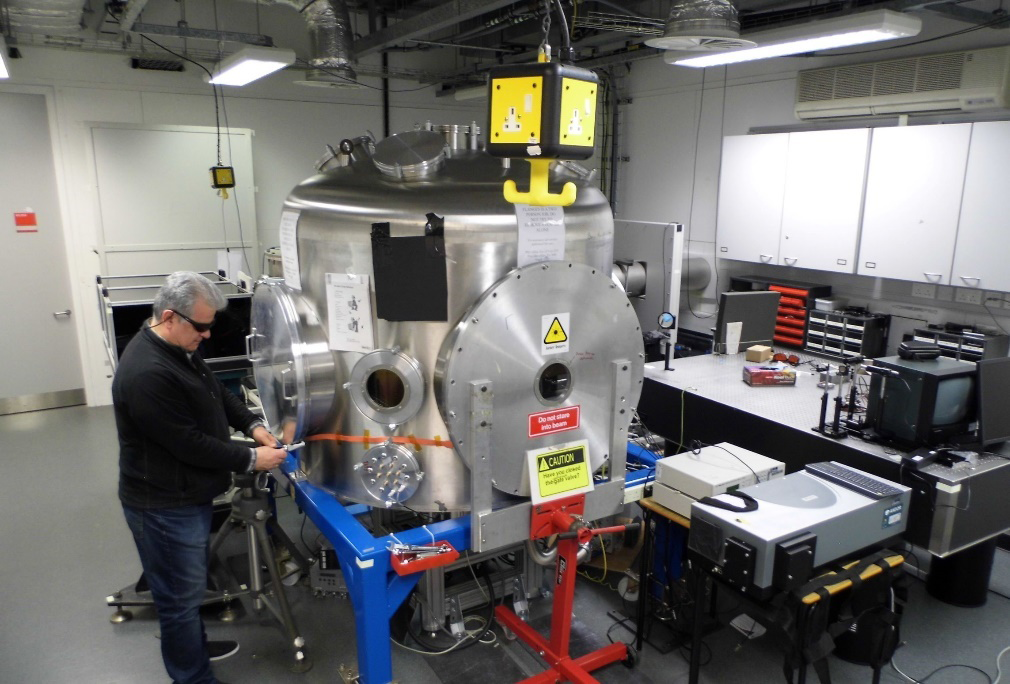
Figure 11 The TARANIS target chamber at the CPP, QUB. (Picture courtesy of QUB.)
At present, 2020, the QUB contribution to UK laser science remains strong, with a long history going back to the arrival of Dan Bradley and Mike Key in 1966. The group has made significant contributions to high-power laser development and has established one of the strongest plasma physics groups in the UK through the CPP currently led by Professor Marco Borghesi. CPP researchers have provided particularly important scientific contributions in areas such as ion acceleration[Reference Scullion, Doria, Romagnani, Sgattoni, Naughton, Symes, McKenna, Macchi, Zepf, Kar and Borghesi92, Reference Kar, Ahmed, Prasad, Cerchez, Brauckmann, Aurand, Cantono, Hadjisolomou, Lewis, Macchi, Nersisyan, Robinson, Schroer, Swantusch, Zepf, Willi and Borghesi93] and applications[Reference Dromey, Coughlan, Senje, Taylor, Kuschel, Villagomez-Bernabe, Stefanuik, Nersisyan, Stella, Kohanoff, Borghesi, Currell, Riley, Jung, Wahlström, Lewis and Zepf94, Reference Doria, Kakolee, Kar, Litt, Fiorini, Ahmed, Green, Jeynes, Kavanagh, Kirby, Kirkby, Lewis, Merchant, Nersisyan, Prasad, Prise, Schettino, Zepf and Borghesi95] (with QUB leadership of important UK-wide initiatives, such as the LIBRA[Reference Borghesi, Kar, Prasad, Kakolee, Quinn, Ahmed, Sarri, Ramakrishna, Qiao, Geissler, Ter-Avetisyan, Zepf, Schettino, Stevens, Tolley, Ward, Green, Foster, Spindloe, Gallegos, Robinson, Neely, Carroll, Tresca, Yuan, Quinn, McKenna, Dover, Palmer, Schreiber, Najmudin, Sari, Kraft, Merchant, Jeynes, Kirkby, Fiorini, Kirby and Green96] and A-SAIL[97] consortia), high-field physics[Reference Ahmed, Dieckmann, Romagnani, Doria, Sarri, Cerchez, Ianni, Kourakis, Giesecke, Notley, Prasad, Quinn, Willi and Borghesi98, Reference Warwick, Dzelzainis, Dieckmann, Schumaker, Doria, Romagnani, Poder, Cole, Alejo, Yeung, Krushelnick, Mangles, Najmudin, Reville, Samarin, Symes, Thomas, Borghesi and Sarr99], warm dense matter[Reference Saiz, Gregori, Khattak, Kohanoff, Sahoo, Naz, Bandyopadhyay, Notley, Weber and Riley100], laboratory astrophysics[Reference Sarri, Poder, Cole, Schumaker, Piazza, Reville, Dzelzainis, Doria, Gizzi, Grittani, Kar, Keitel, Krushelnick, Kuschel, Mangles, Najmudin, Shukla, Silva, Symes, Thomas, Vargas, Vieira and Zepf101], HEDP[Reference Sarri, Macchi, Cecchetti, Kar, Liseykina, Yang, Dieckmann, Fuchs, Galimberti, Gizzi, Jung, Kourakis, Osterholz, Pegoraro, Robinson, Romagnani, Willi and Borghesi102, Reference Romagnani, Robinson, Clarke, Doria, Lancia, Nazarov, Notley, Pipahl, Quinn, Ramakrishna, Wilson, Fuchs, Willi and Borghesi103], HHG[Reference Dromey, Adams, Hörlein, Nomura, Rykovanov, Carroll, Foster, Kar, Markey, McKenna, Neely, Geissler, Tsakiris and Zepf104] and attosecond science[Reference Yeung, Rykovanov, Bierbach, Li, Eckner, Kuschel, Woldegeorgis, Rödel, Sävert, Paulus, Coughlan, Dromey and Zepf105]. QUB has also made significant contributions to the management of the CLF with Mike Key and Henry Hutchinson (both CLF Directors), Fergus O’Neill and David Neely.
2.4 University of Southampton
Work on lasers started at University of Southampton very soon after Maiman’s 1960 demonstration of the first laser. Alec Gambling initiated the work at Southampton’s Electronics Department, recruiting Bob Smith, and the first research student Dilip Bhawalkar in 1962, with three more students in 1963, which included Dave Hanna. Amongst the interests of this Laser Group was the development of lasers with sufficient power to produce a variety of non-linear optical phenomena. Of these, optical parametric oscillators (OPOs) represented a particularly enticing goal with their promise of tuning over a very broad spectral range, a feature that still eluded the lasers of that era. At the same time Alec Gambling’s Optical Fibre Group, targeted the use of lasers for optical communications, with the development of optical fibres as an essential prerequisite, and brilliantly fulfilled by Dave Payne, who joined as a research student in 1966.
In 1971 the laser group suffered a major set-back when a massive fire totally destroyed the ‘laser hut’. The group bounced back with newly constructed facilities.
Both groups progressed prolifically, but largely independently and by 1984, the Laser Group migrated, under the leadership of Dave Hanna, to the Physics Department, shown in Figure 12. As fate would have it, the two groups, once separated physically found reason to start close collaboration, over a shared interest in optical fibre lasers. The effectiveness of this collaboration was a significant element in the successful bid for an Interdisciplinary Research Centre grant from EPSRC, which enabled the two groups to be physically reunited in 1989, within the Optoelectronics Research Centre (ORC), with new premises and extensive fabrication facilities. Alec Gambling was the Director of the ORC, with the two Daves as Deputy Directors. In due course, when Alec retired, Dave Payne took on the role of Director.

Figure 12 Dave Hanna in the early days of the ORC at Southampton. (Picture courtesy of the University of Southampton.)
The research of the Laser Group is described in detail from 1963 to 2001 in a review by Dave Hanna marking his 60th birthday[Reference Hanna106]. The early goal of constructing an OPO made stringent demands both on laser power (or, more correctly, laser beam brightness) and on a non-linear medium having sufficient non-linearity and robustness against laser-induced damage. Research students Harvey Rutt and then Barry Luther-Davies, using a proustite crystal and a Q-switched Nd laser as pump, obtained a spectacular OPO performance with a tuning range of nearly three octaves for this OPO[Reference Hanna, Luther-Davies and Smith107]. Some useful lessons obtained from this work were the importance of using a laser pump in a highly controlled way, with maximum brightness, i.e., single transverse and longitudinal mode. This care over mode control has remained a key aspect of laser developments in the ORC as it is fundamental to achieving the best performance from a limited available power.
Further refinements came later with the use of a telescope within the laser resonator to allow a larger mode diameter within the laser medium, and hence more single mode power. Then, moving to mode-locked operation of the pump laser, combined with synchronous pumping of the OPO resonator (SPOPO), the average pump-power requirement for the OPO was significantly reduced. By using the technique of additive-pulse-mode-locking (APM) the pulse duration could be further reduced to the sub-picosecond regime, thus, further reducing the mean pump power needed. Typically, by this stage in laser developments, it was becoming common practice to use diode lasers as pumps for the main laser and APM operation to provide a CW mode-locked pulse train.
An early example of the usefulness of the latter approach was the construction of a diode-pumped APM Nd:LMA laser at Southampton by John Barr and colleagues, shown in Figure 13. This was delivered to RAL in 1992 to serve as master oscillator for VULCAN, which then had the distinction of being, at 35 TW, the world’s most powerful laser in operation at the time[Reference Phillips, Chang, Danson, Barr, Hughes, Edwards and Hanna108].
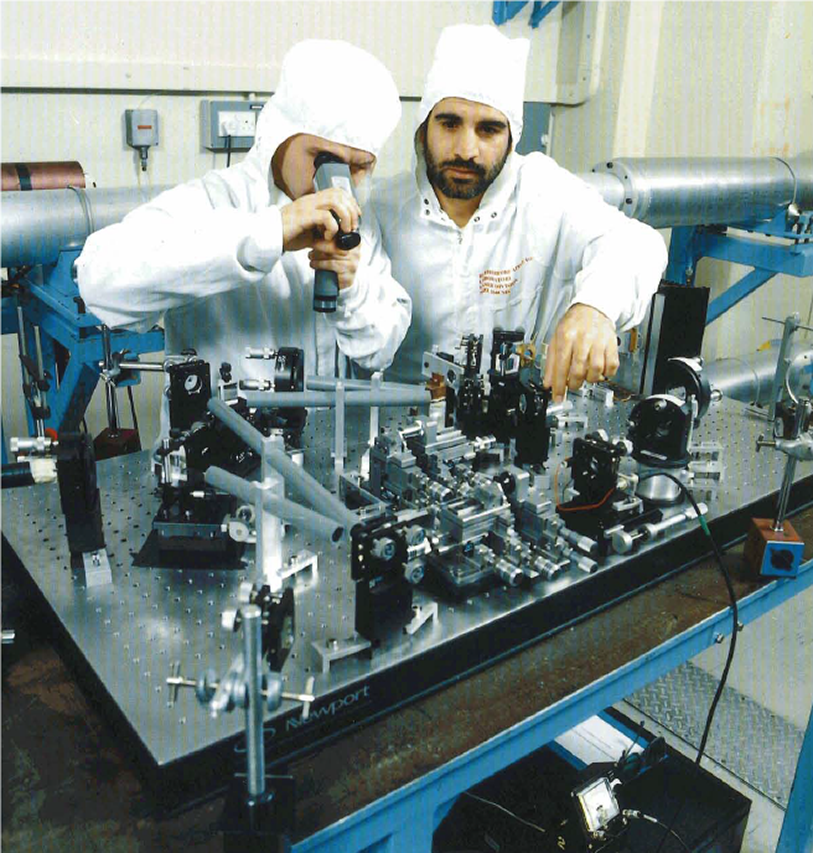
Figure 13 Dave Hughes, Research Fellow, and PhD student A. A. Majdabadi from Southampton commissioning the Nd:LMA oscillator on the VULCAN laser for ultra-short pulse operation. (Picture courtesy of STFC.)
Returning to OPOs, at this stage it was shown that a CW diode-pumped APM Nd:YLF laser could drive an SPOPO based on KTP as the non-linear medium[Reference McCarthy and Hanna109]. Further developments were also being made in non-linear materials, notably with periodically poled lithium niobate (PPLN), of which, high-quality material was fabricated in the ORC. With help from PPLN, CW mode-locked SPOPOs were now becoming practical devices, with modest power needs, representing a huge advance from the early OPOs. There are still various ways for further advances in device performance, with increasing diode-laser powers, and further sophistication of the SPOPO pulse-shaping and duration (see for example, Ref. [110]) using an optical fibre as the main element forming the feedback path of an SPOPO resonator. In addition, there are further major capabilities being offered from fibre lasers, notably their high-power performance, but also their broad spectral bandwidth, high gain and generally robust mode control. One can also consider a hybrid scheme involving diode pumping of a cladding-pumped fibre laser which then pumps a bulk laser[Reference Clarkson111], thus exploiting optimal features of each stage.
Optical fibre development for communications
In 1966, work on optical fibres began at Southampton to try to make long-distance light communication a practical reality. In early days of fibre lasers in the ORC an agreement was made to parcel out the work on various rare earths so that ORC staff did not end up competing amongst themselves. In this arrangement Anne Tropper and Dave Hanna chose to work together on Yb and Tm, on the general basis that Yb seemed to offer virgin territory, having been generally neglected hitherto as a bulk laser candidate, on account of its three-level character (which was of less relevance in a fibre laser). Another attractive feature was the fact that Yb had a very simple energy level structure, thus presenting an ideal system for careful examination of basic principles. Tm was chosen for its opposite quality of having rather crowded energy levels and therefore a degree of complexity that could have room for surprises. These choices were not disappointing and the first operations of an Yb fibre laser[Reference Hanna, Percival, Perry, Smart, Suni, Townsend and Tropper112], and of a Tm fibre laser[Reference Hanna, Percival, Perry, Smart, Suni, Townsend and Tropper113], were achieved by Tropper, Hanna and colleagues in 1988. This was followed up with various examinations of their laser performance and prospects, which clearly indicated future promise for high-power performance. Indeed, this is now well-established and ongoing work under Dave Payne at the ORC, and elsewhere, has led to greatly increased power levels.
Fibre research led by Alec Gambling with David Payne as his research student resulted in the development of extensive fibre manufacturing capabilities allowing them to create fibres with losses of just 1000 dB/km. At the time, this was an amazing result, but more was to come. Although some of the pioneering communications laboratories across the world had dismissed silica optical fibres as impractical, losses had been reduced to a few decibels per kilometre[Reference Luther-Davies, Payne and Gambling114, Reference Payne and Gambling115]. The development of specialized low-loss fibres using lower dopant levels was able to exploit longer interaction lengths[Reference Poole, Payne and Fermann116]. Another key piece to the puzzle was the invention of the first practical fibre optical amplifier to boost the intensity of light signals[Reference Mears, Reekie, Jauncey and Payne117]. This made long-distance optical communications practical, as many signals could be easily sent hundreds of miles without requiring electronic conversion. The effect was to make huge amounts of bandwidth available at low cost over very long distances. This was a major pre-requisite for the formation of the Internet as it is today. David Payne, shown in Figure 14, was elected as a Fellow of the Royal Society in 1992[118] and knighted in the 2013 New Year Honours for services to photonics research and applications.

Figure 14 Sir David Payne conducting research on optical fibres. (Picture courtesy of the University of Southampton.)
David’s research in this field has also led to the development of high-power lasers based on specialized optical fibres. These fibre lasers were ‘born’ out of research at Southampton’s ORC and have led to the development of highly efficient and highly practical fibre laser technology. In the 1990s the researchers explored the testing and identification of the critical rare earth ion dopants (ytterbium, erbium and thulium) and the core glass compositions required to generate and reliably sustain ultrahigh levels at near-IR wavelengths.
They developed large-mode-area core designs capable of handling high powers and high pulse energies. This key research provided access to the multi-kilowatt class, high brightness laser regime and was critical in the success of the spin-out company SPI Lasers UK Ltd[119]. SPI started out as a ‘telecomms’ company, not a high-power laser company at all. In the big telecomms recession most such start-ups died, but SPI reinvented itself successfully as a high-power fibre laser company. Southampton’s high-power fibre laser research has revolutionized areas of industrial material processing and enabled the development of specialist components for high-end industries such as aviation and defence. It has also been significant in the creation of an array of new medical devices, procedures and manufacturing technologies.
The ORC suffered a second major set-back in 2005 with another major fire. Following major rebuilding and reconstruction of facilities such as clean-rooms and fabrication suites, research has since forged ahead.
The Zepler Institute was established at the University of Southampton in 2013 and is the largest photonics and electronics institute in the UK. It has over 350 research staff and PhD students who use their expertise in optoelectronics, electronics, quantum technologies, physics and nanoscience to develop technologies and devices that tackle key societal challenges. It brings together leading researchers from across the University and enables innovation by providing access to one of the most comprehensive collections of nanoelectronics and photonics fabrication equipment in Europe. The institute has an interdisciplinary, industry-focused approach to research which has resulted in many successful spin-outs and the commercialization of products.
2.5 University of Hull
In 1962 the University of Hull opened a Department of Applied Physics which ran alongside, but independently of, the existing Physics Department. The founding Head Professor Jim Ring had as his main interest instrumentation for infrared astronomy. Far-IR lasers were seen as potential tools for testing instrumental performance. In 1965, with this in mind, Doug James a lecturer in applied physics, built the department’s first laser: a pulsed 337 μm HCN laser which could also operate at 28 μm using water vapour and 10.6 μm using CO2.
In 1967 Jim Ring moved to Imperial College. His successor to the Chair in Applied Physics was Professor Stuart Ramsden a spectroscopist who had worked at Harwell on Zeta and subsequently at the National Research Council in Ottawa, Canada, on laser-induced gas breakdown and related plasma studies. His appointment heralded a rapid growth in laser research in the department and he was instrumental in setting up a number of key groups supported by a first-class team of mechanical, electronic and research technicians.
The Molecular Gas Laser Group, headed by Doug James, was developing high-power devices for plasma heating and materials processing. This centred on transversely excited atmospheric-pressure (TEA) and multi-atmospheric pressure CO2 lasers, pulsed HF/DF chemical lasers, and related optical resonator concepts[Reference Dyer, James and Ramsden120, Reference Hamilton, James and Ramsden121]. When, in the mid-1970s, Doug James moved to a post in Canada, Dr. Peter Dyer took over the group. The TEA CO2 laser work continued to evolve[Reference Dyer, Ramsden, Sayers and Skipper122], and investigations of the newly emerging discharge-excited excimer lasers commenced. The nanosecond UV excimer lasers were found to be excellent tools for micromachining various materials by ablation. During the 1980s and 1990s the group made significant contributions to basic studies of UV and VUV laser ablation of polymers, metal films and biological tissue. In collaboration with Drs. Oldershaw and Holbrook (Chemistry Department) and industrial partners, UV laser-induced photochemical processing was also pursued. Science Research Council (SRC) funding provided the group with a high-energy electron beam sustained excimer laser for use in large-scale chemical ‘processing’.
The activity was strengthened in 1980 when Dr. Howard Baker joined the department and set up research on mercury halide and TEA CO2 lasers, and pulse circuitry incorporating magnetic switching. A mercury bromide laser from this era is shown in Figure 15. With the appointments of Dr. Phillip Key (to the Exitech Lectureship in Lasers Applications) and Dr. David Sands in the 1990s, and later Dr. Howard Snelling and Dr. Chris Walton there was a further growth of applications work. This included: UV laser semiconductor processing; film deposition by UV laser ablation (e.g., high T c superconductors, magnetic films, liquid crystal); UV and VUV laser micromachining of glass substrates; Bragg grating fabrication in optical fibres; and fibre jacket stripping by ablation. Basic studies of matrix-assisted laser desorption ionization (MALDI) mechanisms for tissue analysis, and femtosecond laser two-photon excitation of sensitizers for photodynamic therapy (PDT) were also carried out.

Figure 15 Mercury bromide laser (University of Hull, Applied Physics Department, circa 1983).
Laser applications work continues in physics: Dr. Snelling has programmes on excimer and ultra-short-pulse Ti:sapphire and Nd:YLF lasers (e.g., for novel thin film fabrication, glass processing for free-form optics) and analysis/management of laser-generated ‘fume’; Dr. Walton is investigating UV lasers for processing silicon carbide and for nanostructure fabrication.
Laser–plasma interactions
Given Stuart Ramsden’s interests in laser-produced plasmas and thermonuclear fusion, the construction of solid-state lasers became an important departmental activity from the late 1960s onward. High-power Nd:glass and Nd:YAG devices were developed for laser–matter interaction studies, with Richard Dewhurst concentrating on picosecond and burst-mode laser oscillators for gas breakdown and plasma heating and Bob Hyde on developing laser amplifiers. In the 1980s Richard Dewhurst[Reference Dewhurst, Al-Obaidi, Ramsden, Hadland and Harris123] went on to exploit solid-state laser-generated plasmas for exciting high-frequency ultrasound waves in materials, applying this to a wide range of non-destructive testing techniques. He also developed novel laser-based sensing methods.
1970 saw the appointment of Dr. Geoffrey Pert who set up a Laser–Plasma Interaction Theory Group giving an important impetus to the high-power laser–plasma activity. He developed detailed computer models of the plasma physics involved (e.g., ionization mechanisms, fluid dynamics) in materials exposed at high laser irradiance. A key objective of this work became identifying and modelling systems in which a population inversion could be established in the XUV spectral region which was seen as a path to an ‘X-ray’ laser. In parallel with this, experimental work was implemented using a multi-joule sub-nanosecond Nd:laser oscillator–amplifier and target chamber with diagnostics to test numerical simulations. This was housed in the ‘Annex’, a room adjacent to the university sports centre.
Following initial work on planar geometries it was recognized that targets of reduced dimensionality, i.e., in fibre form, could produce the desired rapid plasma expansion needed for inversion. In 1980, using line focusing and micrometre scale-size carbon fibre targets, spectroscopic studies provided evidence of gain at 18.2 nm in the recombining carbon plasma[Reference Jacoby, Pert, Ramsden, Shorrock and Tallents124]. This was a major milestone in the development of XUV lasers. The group went on to make many further important contributions to understanding the dynamics and spectroscopy of plasmas for a variety of target systems.
A remote sensing group. The group investigating laser and non-linear optical techniques for LIDAR in atmospheric sensing and related theoretical studies was formed in the 1970s under Dr. Eric Thomas and Dr. Barry Rye. The central interest was coherent laser radar and its use in meteorological applications to measure properties such as wind velocity, temperature and relative humidity, as well as trace gas concentrations. The group developed tuneable IR systems based on narrow bandgap diode lasers and super-atmospheric pressure CO2 lasers and also investigated sensitive signal detection methods such as optical heterodyning. The experimental work was complemented by comprehensive theoretical modelling of the atmosphere including turbulence, as well as modelling of the overall LIDAR system in terms of source and detector and signal/data processing requirements. Dr. Thomas (with Professor John Bryant in Physics) set up a spin-out company, Laser Monitoring Systems, to capitalize on some of the group’s research[125].
Satellite laser ranging. In the late 1970s, a joint initiative of the Royal Greenwich Observatory (RGO) and Professor Stuart Ramsden was awarded SERC/NERC funding to develop and construct the UK Satellite Laser Ranging (SLR) Facility for Geodesy research at RGO, Herstmonceux, Sussex.
The Hull team, led by Denis Hall and including Bob Hyde and Don Whitehead with guidance from Stuart Ramsden, was charged with developing the overall system design and integration, as well as having prime responsibility for the laser transmitter, optical receiver sub-systems and the pulse transmit/receive timing system, all of which were initially assembled in Hull. These functions were subsequently integrated with other key system components including the main transmit/receive tracking optical telescope and finally assembled within a pre-existing telescope dome (The Solar Dome) located at RGO, Herstmonceux, shown in Figure 16. In addition, following interaction with the CAA, an X-band aircraft detection radar was assembled with a tracking antenna locked in pointing to the laser beam transmitting telescope. This configuration was used as the basis of a laser lock-out system to prevent eye damage to passengers in over-flying aircraft.
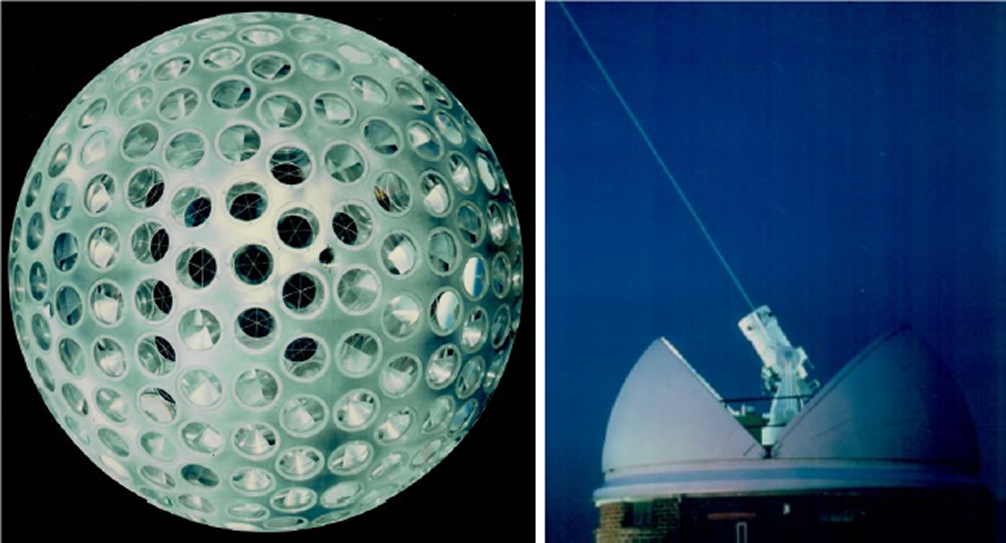
Figure 16 The Satellite Laser Ranging System at Herstmonceux with images of the Lageos Satellite and the SLR system in operation at night with the transmitted beam visible. (Picture courtesy of the University of Hull.)
The original system laser was a mode-locked Nd:YAG device producing frequency-doubled 532 nm, 100 ps, 10 mJ pulses at 10 Hz, and developed with high operational reliability by Clive Ireland and colleagues at Lumonics UK, Rugby. The first detected range data returned from the ‘co-operative’ NASA satellite Lageos (Laser Geodynamics Satellite) were achieved at night in early 1983, and daytime operation (in sunlight) was realized soon afterwards. Lageos is a 60 cm sphere covered with 426 corner-cube retroreflectors and is in a stable Earth orbit at an altitude of 5900 km. Range measurement accuracy of ~1 cm is achievable with appropriate calibrations.
Although in the intervening time, the RGO and most of its personnel and equipment have been relocated, the satellite laser ranging facility has remained in its original site, and the activities are managed as an NERC outstation: the Space Geodesy Facility (SGF). The system has seen a number of hardware upgrades over the intervening years, notably with the introduction of second (alternative) laser producing much shorter, higher-repetition-rate pulses (10 ps at 2 kHz) and an epoch timer allowing several trackable pulses to be in the air at once.
In addition, the UK SGF continues to play a significant role within the global geodesy community via the International GNSS Service networks, and as one of the eight Analysis Centres of the International Laser Ranging Service (ILRS).
Radiofrequency discharge excited CO2 lasers. Research at Hull on the use of capacitive radiofrequency (RF) discharges to excite CO2 waveguide lasers began with the arrival of Denis Hall at Applied Physics in mid-1979. With support from the MoD and the excellent departmental technical support in mechanical construction and RF electronics, early progress was quite rapid with the first experimental RF waveguide CO2 laser device demonstrated at 5 W CW output before the end of the year.
The immediate research objective was to achieve sufficient understanding of the underlying RF laser device physics to enable the development of practical and compact lasers that could operate without the need for gas flow at power and brightness levels which facilitate their use in practical applications, for example, in manufacturing and surgery.
The work at Hull progressed with parallel activities in laser device technology and underpinning research in two key areas, RF discharge physics and the laser beam quality achievable with different RF discharge geometries. The first included studies of RF discharge stability conditions for different cross-sectional geometries (square, annular and planar rectangular) and varying axial lengths, plus the dependency of electron energy distribution and excitation rates on geometry, excitation frequency and gas pressure/mixture combinations all with the objective of optimizing laser power extraction and efficiency. Second, and in parallel, research was conducted on the optical properties of various resonator designs for RF lasers based on square, rectangular and annular (folded slab) cross-sectional gain media, and with dimensions appropriate for either waveguide or free space, intracavity optical propagation.
Under the leadership of Geoff Allcock and Ken Lipton (see Section 4), early commercialization of sealed-off CW RF lasers was achieved at the 50 W level in 1982 by Laser Applications Ltd (LAL), a spin-off company from the Applied Physics Department, thereby enabling the first commercially available laser medical system based on sealed CO2 laser technology which was successfully marketed in Europe and the USA.
Subsequently over the next decade, physics understanding blossomed and world-ranking CO2 laser performance was demonstrated in linear waveguide lasers[Reference He and Hall126], annular lasers[Reference Xin and Hall127], slab waveguide lasers[Reference Jackson, Baker and Hall128, Reference Colley, Baker and Hall129], as well as phase-locked and unlocked waveguide laser arrays[Reference Abramski, Colley, Baker and Hall130, Reference Baker, Hornby and Hall131] at multi-hundred-watt levels.
2.6 University of Manchester
Professor Terry King had a large research group at University of Manchester’s Schuster Laboratory, which yielded around 65 PhD graduates. He left the Air Force in 1967 to set up a project at Manchester Victoria University to investigate the use of lasers in the treatment of cancer. He was the co-inventor of one of the first patents on PDT. This photo-physics work was supported by Imperial Cancer Research.
Amongst Terry’s first graduates were Chris Davis, who is now at University of Maryland, Howard Baker, who was at University of Hull with Denis Hall and then later at Heriot-Watt University, but now retired, John Bannister, now at QinetiQ, Bill McNaught, initially at Ferranti, Frank Kvasnik who went on to found his own company Laser Technology North West Ltd, Dino Jaroszynski, who is now at Strathclyde University where he founded the Scottish Centre for the Application of Plasma-based Accelerators (SCAPA), Costas Cefalas who is now at Hellenic Research Institute in Athens and Mark Dickinson who worked closely with Terry at Manchester and is still there.
The early expertise in Terry’s group was on spectroscopy, which was applied to several relatively new lasers. His group started with helium neon, where they measured the lifetimes of various levels in helium to explore possibilities for laser action[Reference Bridgett and King132]. The thing that they really made a breakthrough with was the iodine photo-dissociation laser based on perfluoroalkyl iodides, a photon-pumped gas laser operating in the near-IR. In the early 1970s they investigated the atomic iodine laser under a contract from SERL.
AWRE were keen to investigate the atomic iodine photo-dissociation laser operating at 1.315 μm, which has a higher efficiency than the Nd:glass laser at a comparable wavelength, and a number of properties that make it suitable for scaling up to large energies, because of its energy storage capacity due to the 0.13 s exited state lifetime of the magnetic dipole transition. Terry and Chris Davis won a large grant to push this research further. The research programme was contracted to Manchester and a 30 J in 1 ns system was constructed at Schuster Laboratory. These lasers were scaled up to 300 J level at MPQ Garching in Germany, which gave confidence in scaling the lasers. The Manchester group designed a viable system that would operate at 1 kJ in 100 ps. Further details can be found in Section 3.3 of this review[Reference Baker, King and McNaught133, Reference Banister, Gormally, Holtzwarh and King134].
Howard Baker then developed ArF, KrF, XeCl and XeBr excimer lasers, which were used to investigate various photo-dissociation lasers and the structure of molecules and their dissociation pathways, and quantum coherence phenomena. Terry also had a project on mercury lasers to develop ring laser gyroscopes. Terry and John Bannister set up a company VUMAN in the early 1980s and preserved an interest in medical lasers, eventually resulting in the spin-out Lynton Lasers Ltd.
2.7 University of St Andrews
The University of St Andrews has been a leading university in laser physics since 1964 when Arthur Maitland[135] founded the laser research department. He gained a physics BSc in 1956 before joining St Andrews in 1963 as a researcher and lecturer. He led a group of 14 physicists there working in the areas of lasers and their applications, gas discharge tubes, ionized gases, optical methods of signal processing and applications of ionized gases. He was awarded a DSc in 1972 on the basis of his published papers on ionized gases. At the time he was also working with several electrical engineering companies including being a consultant for the gas tubes division of EEV Co., Chelmsford, England with whom he worked on high-voltage switching and their development of thyratrons. He was prolific in his development of lasers and associated technology and held 40 patents.
Through his ground-breaking research into the physics of gas-discharge lasers, Arthur Maitland invented several methods for generating gas-discharge-based lasers. He had his own unique way of building argon ion lasers. He would make discs of metal where they were not enclosed within the vacuum but they were the vacuum enclosure medium, and he also had a unique form of cathode which was large but enabled very high current densities to be generated within the lasers. A lot of the early argon ion laser development work was done in St Andrews by Arthur and his student Malcom Dunn[Reference Dunn and Maitland136] shown in Figure 17. Arthur became Professor of Physics at St Andrews in 1993, sadly only a year before his death in 1994.
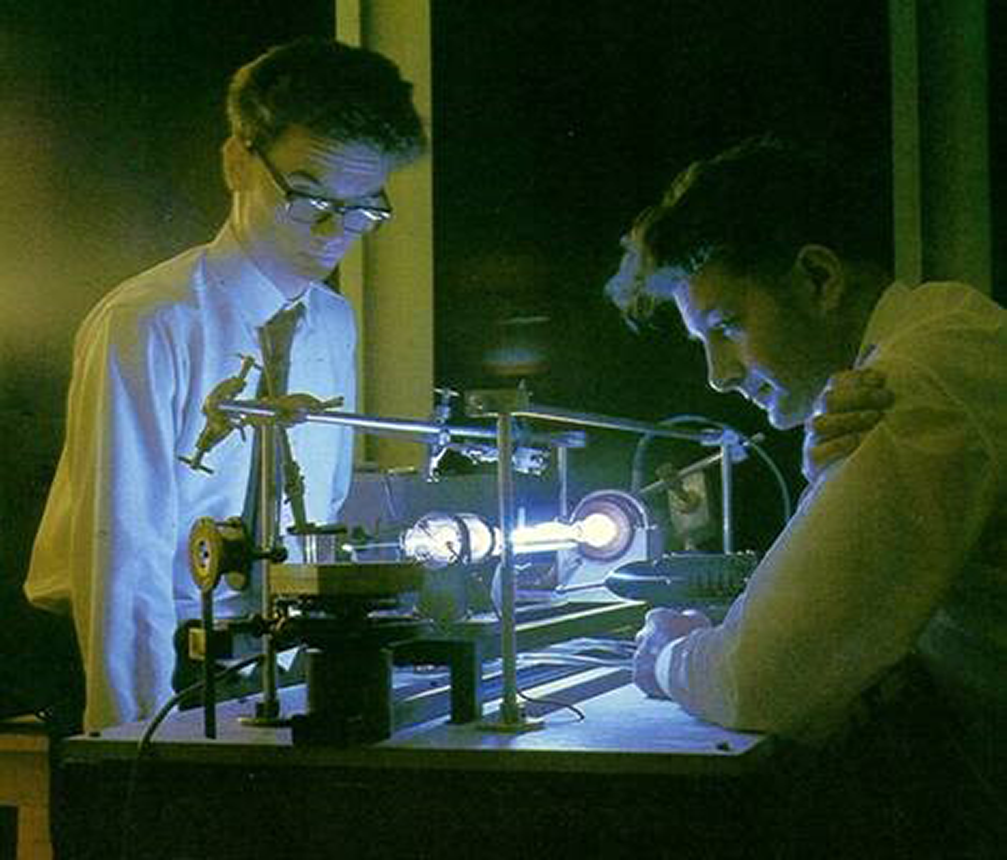
Figure 17 A very young Malcom Dunn with Arthur Maitland working on one of the argon lasers developed at St Andrews.
Wilson Sibbett CBE FRS FRSE[137] was noted for his work on ultra-short-pulse lasers and streak cameras. He was born in Northern Ireland and completed a physics degree at QUB, before completing a PhD in 1973 in Laser Physics under Professor Dan Bradley. He moved with Dan to Imperial College London, before moving to St Andrews as a full Professor in 1985. From 1988 he was Head of Physics and Astronomy at the University.
Wilson has conducted significant research on ultra-short-pulse laser science and technology. His work on streak cameras, first demonstrated the technique of sub-picosecond chronoscopy at Imperial College[Reference Baggs, Eagles, Margulis, Sibbett and Sleat138] laying the foundation for his future work. This was followed at St Andrews by his pioneering work on coupled cavity or additive-pulse mode locking[Reference Spence and Sibbett139] and his discovery of the technique of self-mode locking[Reference Spence, Kean and Sibbett140]. First observed using titanium–sapphire, the self-mode locking technique enabled the commercialization of subpicosecond pulses for a wide tuning range. This was internationally important as it made possible the development of the ultra-high-power laser systems around the world[Reference Danson, Haefner, Bromage, Butcher, Chanteloup, Chowdhury, Galvanauskas, Gizzi, Hein, Hillier, Hopps, Kato, Khazanov, Kodama, Korn, Li, Li, Limpert, Ma, Nam, Neely, Papadopoulos, Penman, Qian, Rocca, Shaykin, Siders, Spindloe, Szatmári, Trines, Zhu, Zhu and Zuegel141]. The oscillator systems used to generate the seed pulses used on virtually all of these systems are derived from this technique.
More recently, Wilson worked with Alan James Duncan and Miles Padgett FRS, now of University of Glasgow. This collaboration was successful in developing two novel optical instruments with important practical applications. The first was a compact Fourier-transform spectrometer with no moving parts[Reference Courtial, Patterson, Hirst, Harvey, Duncan, Sibbett and Padgett142], which can be used, for example, in the detection of atmospheric pollutants. The spectrometer has been granted a full patent and has been successfully marketed. The second instrument was a new type of optical profilometer for recording surface profiles.
2.8 Heriot-Watt University
Des Smith joined Heriot-Watt University in 1970, from the University of Reading. It was a new university and when he first visited, the Riccarton campus was just fields. The Principal, Robin Smith, asked him to set up the physics department and create a research park. From this he founded Scotland’s first university spin out company, Edinburgh Instruments, in 1971. Thus, the story of early laser development at Heriot-Watt is inextricably linked to Edinburgh Instruments, featured in Section 4 of this review.
Des Smith and colleagues developed the tuneable spin-flip Raman laser[Reference Smith, Dennis and Harrison143] in which you take a semiconductor and a very high magnetic field and Raman shift the output of CW CO2 lasers and you can get tuning of IR light over the range between 5.2–6.5 μm and 9.2–13.8 μm. They produced very narrow line outputs which allowed the very first experiments in ultra-high-resolution molecular spectroscopy. The DC discharge-excited CO and CO2 lasers developed at Heriot-Watt were commercialized by Edinburgh Instruments and are still marketed today.
Planar waveguide lasers
Howard Baker and Denis Hall introduced the highly compatible combination of capacitive RF discharge excitation with planar waveguide gain medium structures and hybrid resonator designs to achieve highly compact and efficient sealed pulsed/CW CO2 lasers at power levels to >1 kW[Reference Jackson, Baker and Hall128, Reference Abramski, Colley, Baker and Hall144, Reference Colley, Baker and Hall129], shown in Figure 18, and capable of high-repetition-rate ‘super-pulse‘ operation[Reference Villarreal, Murray, Baker and Hall145] for use in diverse material processing applications. This format was successfully applied to high-power CO and Xe lasers at Heriot-Watt University and commercialized for CO2 lasers by Rofin-Sinar UK Ltd in Hull (see Section 4).
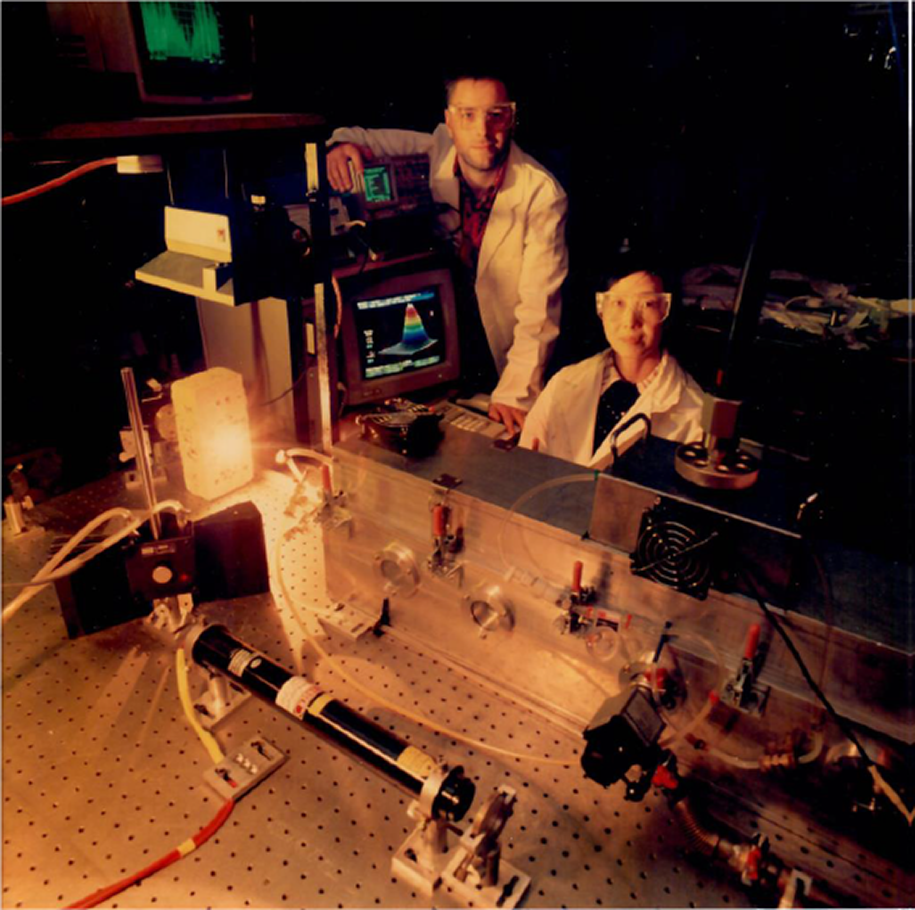
Figure 18 A 1 kW sealed RF planar waveguide CO2 laser with Dr. Alan Colley and Dr. Suzy Zhang. (Picture courtesy of Heriot-Watt University.)
The same group also used planar waveguide gain medium structures to achieve powers of 150 W from Nd:YAG[Reference Lee, Baker, Friel, Hilton and Hall146] using close-linked diode array face-pumping of the thin slab waveguide, and over 400 W from Yb:YAG[Reference Thomson, Monjardin, Baker and Hall147]. In the latter case, efficient diode array side-pumping of the thin planar waveguide slab was achieved using a novel freeform optical coupling component to correct the imperfect diode array pointing. The freeform optical component was custom-designed and laser-fabricated within the group, using technology, an enhanced version of which was the basis of the manufacturing process developed and commercialized by the Heriot-Watt spin-off company, PowerPhotonic Ltd.
In addition, the wide bandwidth of the Yb:YAG laser later allowed this technology to enable the amplification of 1030 nm femtosecond pulses to many tens of watts[Reference Leburn, Ramirez-Corral, Thomson, Hall, Baker and Reid148], with relevance to high-throughput femtosecond laser machining.
2.9 University of Strathclyde
The early years
Laser research at Strathclyde emerged from a group studying plasma physics as was the case with so many research groups around the UK as well as elsewhere. Bob Illingworth teamed up with Ivan Ruddock who moved to Strathclyde from Imperial College where he had been a student of Dan Bradley. Bob and Ivan worked on synchronously pumped dye lasers and colour centres lasers to produce ultra-short pulses. They were later joined by Geoff Duxbury who was one of the early adopters of laser spectroscopic techniques for the investigation of the IR spectra of molecular species.
The first professorial appointment in lasers at Strathclyde was Tony Smith in 1979. Tony had worked with Malcolm Dunn and Arthur Maitland at St Andrews and brought his expertise in plasmas to build a gas laser group predominantly working on TEA CO2 lasers. Tony decided to move into industry and moved to the United States to work for Coherent in 1984. In 1985 Willie Firth was attracted from Heriot-Watt University and built a very successful theory group including the later appointments of Gian-Luca Oppo and Steve Barnett.
In the early 1980s the senior management of the University of Strathclyde decided that laser science and engineering had a long-term place in the university portfolio and took the then unprecedented step of creating an established Chair of Photonics. This is thought to be the first chair of its type created by any university. The Chair of Photonics was initially filled by Brian Henderson who moved from Trinity College, Dublin in 1982. Brian brought with him expertise in the optical properties of solids. He created a research activity in semiconductor and crystalline solids including the establishment of a large laser crystal growth facility.
It was against this background that Allister Ferguson moved from Southampton and was appointed to the Chair of Photonics in 1989 (Henderson having been translated to the Chair of Natural Philosophy established in 1796). Allister’s arrival brought an interest in the emerging area of diode laser pumped solid state lasers, non-linear optics and high-resolution laser spectroscopy. The Photonics Group was created with Erling Riis who moved from Steve Chu’s group in Stanford and Nigel Langford who had been a student of Wilson Sibbett at St Andrews.
Allister Ferguson was charged with not only setting up a research group but also with building closer links to industry. The first step on this journey was the creation of Microlase Optical Systems Ltd. Microlase was created with Graeme Malcolm (one of Allister Ferguson’s first Strathclyde research students) and Gareth Maker (one of his last research students at Southampton). The company was based on single frequency Ti:sapphire lasers, diode-pumped solid-state lasers (DPSSLs) and non-linear optical devices. It grew rapidly through the 1990s, was sold to Coherent in 1999 and became Coherent Scotland Ltd. It was initially run by Graeme Malcolm and Gareth Maker until they left to form M-Squared Lasers Ltd. Coherent Scotland and M-Squared employ more than 250 people in Glasgow.
Encouraged by senior management at Strathclyde, Allister Ferguson created a new vehicle for engagement with industry in lasers by establishing the institute of Photonics in 1995. The institute was initially supported by Scottish Enterprise and Thales. The aim of the institute of Photonics was, and continues to be, to bridge the gap between academia and industry. Applied research at the institute has centred on advanced laser engineering and photonic materials and devices. More recently it has moved into Neurophotonics under the leadership of Keith Mathieson. The Institute was run as a self-funded unit with a Chief Executive (Karen Ness, ex Imperial College, followed by Tim Holt, ex Ferranti and Rofin).
One of the first employees at the Institute of Photonics was Martin Dawson (ex Sibbett group at Imperial). Dawson together with Holt and Ferguson developed the notion of setting up an intermediary organization to work between academia and industry. Holt’s experience of the German system led to discussions with Fraunhofer Gesellschaft culminating in the establishment of Fraunhofer Research UK Ltd and its subsidiary Fraunhofer Centre for Applied Photonics (FCAP) in 2012. FCAP is led by Martin Dawson who is a joint appointee between Strathclyde and Fraunhofer. Laser engineering at FCAP builds on the laser research at the Institute of Photonics. FCAP has the skills and capacity to build prototypes closer to the final form needed by industry.
Close working with industry has been at the heart of the Strathclyde laser research and the university has worked hard to help create a photonic cluster. The emergence of a cluster of new companies alongside the established laser companies led to the creation of the Scottish Optoelectronics Association (SOA) in 1994 with the mission of promoting the industry in Scotland. As part of the celebration of the 50th anniversary of the invention of the laser, known as Laserfest (see Figure 19), the SOA produced a report showing that in 2009 the laser industry contributed £660 million to the Scottish economy[149]. The University of Strathclyde celebrated Laserfest by awarding 11 laser-related Nobel laureates honorary degrees.

Figure 19 Allister Ferguson at the Laserfest event at the Glasgow Science Centre where ‘50 Years of the Laser in Scotland’ was launched. Speakers at the event included Nobel laureates Steve Chu, Roy Glauber and Eric Cornell. Local speakers included Dave Hanna, Ed Hinds and Steve Barnett.
A report by Photonics Scotland (formerly known as SOA) in 2020 indicated that the photonics sector in Scotland produced £1.2 billion in revenue from 60 companies employing more than 5700 people[149].
As the laser research at Strathclyde has migrated from the Photonics Group in the Department of Physics to the Institute of Photonics and to FCAP, photonics research at Strathclyde has moved toward opportunities associated with quantum technology. The foundation of this work comes from the appointment of Erling Riis establishing one of the first UK efforts in laser cooling and trapping of atoms in the early 1990s. Strathclyde research is a key part of the UK national strategy in quantum technology. Strathclyde is well set to make its contribution to this emerging and transformational technology as it has done and continues to do with laser technology.
Laser–plasma research
Laser–plasma research at the University of Strathclyde started in 1998 when Dino Jaroszynski won a national competition to acquire an 800 nm, 1 kHz, femtosecond Ti:sapphire laser system from the then British Nuclear Fuels Ltd (BNFL). His vision, at the time, was to instigate a completely new direction in plasma research at Strathclyde, and importantly, exploring applications of novel laser–plasma technology for the benefit of society, while simultaneously supporting creative intellectual endeavour. What was set in motion in 1998 was not just a new UK laser–plasma research activity, to which Strathclyde contributed, but something quite different. Dino’s previous research experience on free-electron lasers (FELs), starting at Heriot-Watt University on the UK-FEL[Reference Pidgeon, Jaroszynski, Tratt, Smith, Firth, Kimmitt, Cheng, Poole, Saxon, Walker, Mackay, Reid, Kelliher, Laing, Land and Gillespie150] in 1982, provided the insight of combining laser–plasma research for developing radiation sources with basic science research; the unique radiation sources would be used by a diverse community[Reference Jaroszynski and Vieux151, Reference Jaroszynski, Bingham, Brunetti, Ersfeld, Gallacher, van der Geer, Issac, Jamison, Jones, de Loos, Lyachev, Pavlov, Reitsma, Saveliev, Vieux and Wiggins152]. Figure 20 shows several of the UK-FEL team members and Figure 21 the undulator at Kelvin Laboratory in East Kilbride, circa 1983.

Figure 20 Several of the UK-FEL team members (from left to right) Dino Jaroszynski, Maurice Kelliher, Maurice Kimmitt, and person unknown.
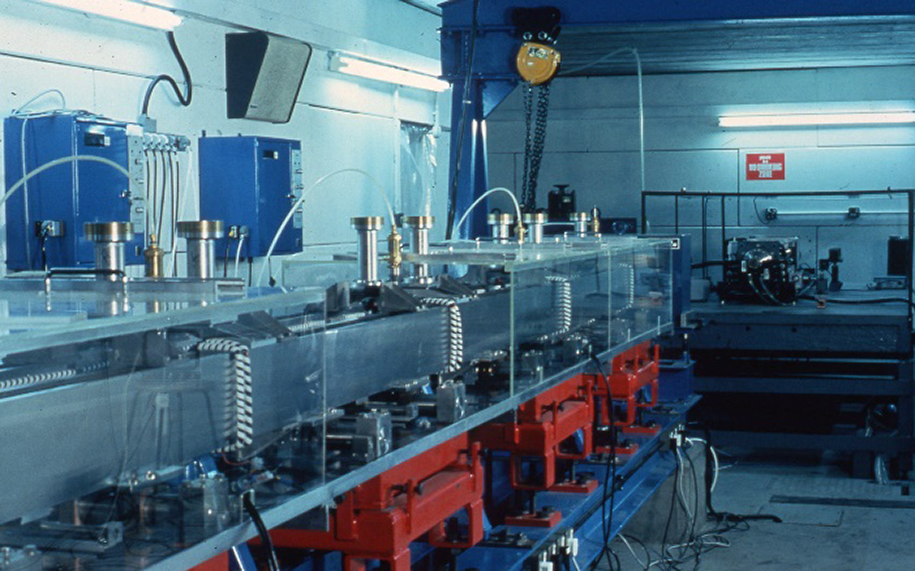
Figure 21 The UK-FEL undulator at Kelvin Laboratory, East Kilbride circa 1983.
The experience Dino gained in contributing to setting up two FEL facilities, FELIX[Reference Jaroszynski, Bakker, Vandermeer, Oepts and Vanamersfoort153–Reference Jaroszynski, Chaix, Piovella, Oepts, Knippels, vanderMeer and Weits155] in the Netherlands (which incorporated the old UK-FEL undulators) and CLIO[Reference Jaroszynski, Prazeres, Glotin and Ortega156, Reference Jaroszynski, Prazeres, Glotin, Ortega, Oepts, van der Meer, Knippels and van Amersfoor157] in France, laid the groundwork for the nascent programme at Strathclyde; by combining two previously unconnected areas of research, a very novel research area would be established. Motivated by this vision of a paradigm shifting technology, a new research area was established at the university of Strathclyde. The journey to realize it began with securing support from the university and winning several large grants from the UK Research Councils, the Scottish Universities Physics Alliance (SUPA) and the Scottish Funding Council (SFC).
In 2000, Dino’s team was the first in the world to suggest using a laser–plasma accelerator to drive an FEL[Reference Jaroszynski and Vieux151, Reference Jaroszynski, Bingham, Brunetti, Ersfeld, Gallacher, van der Geer, Issac, Jamison, Jones, de Loos, Lyachev, Pavlov, Reitsma, Saveliev, Vieux and Wiggins152, Reference Jaroszynski, Ersfeld, Giraud, Jamison, Jones, Issac, McNeil, Phelps, Robb, Sandison, Vieux, Wiggins and Wynne158], which has stimulated major initiatives across the globe (e.g., EuPRAXIA[Reference Weikum, Akhter, Alesini, Alexandrova, Anania, Andreev, Andriyash, Aschikhin, Assmann, Audet, Bacci, Barna, Beaton, Beck, Beluze, Bernhard, Bielawski, Bisesto, Brandi, Brinkmann, Bruendermann, Büscher, Bussmann, Bussolino, Chance, Chen, Chiadroni, Cianchi, Clarke, Cole, Couprie, Croia, Cros, Crump, Dattoli, Del Dotto, Delerue, De Nicola, Dias, Dorda, Fedele, Pousa, Ferrario, Filippi, Fiore, Fonseca, Galimberti, Gallo, Ghaith, Giove, Giribono, Gizzi, Grüner, Habib, Haefner, Heinemann, Hidding, Holzer, Hooker, Hosokai, Huebner, Irman, Jafarinia, Jaroszynski, Joshi, Kaluza, Kando, Karger, Karsch, Khazanov, Khikhlukha, Knetsch, Kocon, Koester, Kononenko, Korn, Kostyukov, Kruchinin, Labate, Blanc, Lechner, Leemans, Lehrach, Li, Libov, Lifschitz, Litvinenko, Lu, Lundh, Maier, Malka, Manahan, Mangles, Marchetti, de la Ossa, Martins, Mason, Massimo, Mathieu, Maynard, Mazzotta, Molodozhentsev, Mostacci, Mueller, Murphy, Najmudin, Nghiem, Nguyen, Niknejadi, Osterhoff, Espinos, Papadopoulos, Patrizi, Petrillo, Pocsai, Poder, Pompili, Pribyl, Pugacheva, Rajeev, Romeo, Conti, Rossi, Rossmanith, Roussel, Sahai, Sarri, Schaper, Scherkl, Schramm, Schroeder, Scifo, Serafini, Sheng, Siders, Silva, Silva, Simon, Sinha, Specka, Streeter, Svystun, Symes, Szwaj, Tauscher, Terzani, Thompson, Toci, Tomassini, Torres, Ullmann, Vaccarezza, Vannini, Vieira, Villa, Wahlstrom, Walczak, Walker, Wang, Welsch, Wiggins, Wolfenden, Xia, Yabashi, Zhu and Zigler159]). Research in laser–plasma accelerators took off at Strathclyde in 2002 with the award of a UK Research Council Basic Technology Project, which funded the ALPHA-X[Reference Jaroszynski and Vieux151, Reference Jaroszynski, Bingham, Brunetti, Ersfeld, Gallacher, van der Geer, Issac, Jamison, Jones, de Loos, Lyachev, Pavlov, Reitsma, Saveliev, Vieux and Wiggins152] (Advanced Laser-Plasma High-energy Accelerators towards X-rays) project (Figure 22). The project, led by Strathclyde, involved Imperial College London, University of Oxford, CLF, University of St Andrews and the University of Abertay Dundee, made several world-leading breakthroughs in laser–plasma wakefield accelerators (LWFAs) and radiation sources, including the first experimental demonstration of the laser–plasma electron accelerator (CLF experiments led by the Imperial College team), published in Nature as one of the ‘Dream Beam’ papers[Reference Mangles, Murphy, Najmudin, Thomas, Collier, Dangor, Divall, Foster, Gallacher, Hooker, Jaroszynski, Langley, Mori, Norreys, Tsung, Viskup, Walton and Krushelnick82], its use as a source of synchrotron radiation[Reference Schlenvoigt, Haupt, Debus, Budde, Jäckel, Pfotenhauer, Schwoerer, Rohwer, Gallacher, Brunetti, Shanks, Wiggins and Jaroszynski160], gamma rays[Reference Cipiccia, Islam, Ersfeld, Shanks, Brunetti, Vieux, Yang, Issac, Wiggins, Welsh, Anania, Maneuski, Montgomery, Smith, Hoek, Hamilton, Lemos, Symes, Rajeev, Shea, Dias and Jaroszynski161] and femtosecond to attosecond electron bunches[Reference Tooley, Ersfeld, Yoffe, Noble, Brunetti, Sheng, Islam and Jaroszynski162, Reference Islam, Brunetti, Shanks, Ersfeld, Issac, Cipiccia, Anania, Welsh, Wiggins, Noble, Cairns, Raj and Jaroszynski163]. It also stimulated laser–plasma research at the Cockcroft Institute in 2008, through an agreement made with its then Director, Swapan Chattopadhyay, who invited Strathclyde to join the Cockcroft Institute as an Associate Member, with Strathclyde later joining as a full member.

Figure 22 Left: ALPHA-X team members in the control area of the TOPS laboratory on the first electron beam in March 2007, (left to right) Riju Issac, Gregory Vieux, Richard Shanks and Enrico Brunetti. Right: First electrons on the SCAPA ALPHA-X beamline in Bunker C in 2017, 10 years later, (left to right) Mohammed Shahzad, Gregory Welsh, Enrico Brunetti and Giorgio Battaglia.
These growing research endeavours attracted several leading scientists to Strathclyde, including Ken Ledingham, Paul McKenna, Zheng-Ming Sheng and Bernhard Hidding, who created the germ of a new research activity that grew into four thriving teams that now include more than 50 people from across the university, which has put Strathclyde firmly on the map in the field. The teams now constitute the Strathclyde Intense Laser Interaction Studies (SILIS) group.
Establishing new facilities, including SCAPA
The initial activity, starting with the BNFL laser, resulted in the TOPS (Terahertz to Optical Pulse Source) facility[Reference Jaroszynski, Ersfeld, Giraud, Jamison, Jones, Issac, McNeil, Phelps, Robb, Sandison, Vieux, Wiggins and Wynne158], which transformed into the ALPHA-X project, and finally into SCAPA[Reference Wiggins, Boyd, Brunetti, Butler, Feehan, Gray, Hidding, Ireland, Li, Maitrallain, Manahan, McKenna, O’Donnell, Scheck, Shahzad, Sheng, Spesyvtsev, Vieux, Watts, Welsh, Wilson, Zachariou and Jaroszynski164]. The ALPHA-X project was developed around a 4 TW, Ti:sapphire laser (Figure 23), which was progressively upgraded to 40 TW. SCAPA, a brand-new university-based laser facility, was conceived in 2007 as a user facility based on the beamline concept. However, it was not until 2010 that plans for building the 1200 m2 SCAPA infrastructure were drawn up as part of the University Estates Development Framework (EDF) and progress was made towards establishing the facility. Plans for the SCAPA infrastructure to be situated in the John Anderson Building at Strathclyde were completed by 2014 (under the technical management of Mark Wiggins) and building started in earnest to create three vibrationally isolated ‘bunkers’ (radiation shields), laser cleanrooms and ancillary rooms.

Figure 23 Left: The 4 TW TOPS facility in 2002. Right: Dr. Riju Issac who developed laser–cluster interaction-based X-ray sources.
In 2016, when access was gained to the building, work started on installing the old 40 TW laser and beamlines, initially the ALPHA-X beamline and then three other beamlines, including a laser wakefield (Bunker A), laser–solid (Bunker B) and a medical beamline (Bunker C) shown in Figure 24. ‘Snagging’ continued until 2018, which severely hampered progress.

Figure 24 The SCAPA laser facility interaction areas: (a) Beamline A2 in Bunker A; (b) Beamline B2 in Bunker B; and (c) work in progress on the ALPHA-X/medical beamline in Bunker C.
The university invested in a world-leading commercial 350 TW laser from Thales (Figure 25), which was delivered in 2016 and commissioned in January 2017 to form the unique facility, which now includes three vibrationally isolated bunkers with large rapid-close concrete doors and seven beamlines. Funds were obtained in 2017 to create several beamlines, and in 2020 work started on developing a 0.6 TW, kilohertz laser laboratory at SCAPA. In 2019 funding was obtained to build a novel beamline, Plasma Accelerators for Nuclear Applications and Materials Analysis (PANAMA).

Figure 25 The SCAPA Thales 5 Hz, 350 TW laser.
Research activities of the SILIS group
In parallel to the SCAPA building programme, the group at Strathclyde grew rapidly.
Dino Jaroszynski’s group currently undertakes research using lasers on laser-driven accelerators and radiation sources, including an LWFA-driven FEL[Reference Jaroszynski and Vieux151, Reference Jaroszynski, Bingham, Brunetti, Ersfeld, Gallacher, van der Geer, Issac, Jamison, Jones, de Loos, Lyachev, Pavlov, Reitsma, Saveliev, Vieux and Wiggins152, Reference Jaroszynski, Bingham, Brunetti, Ersfeld, Gallacher, van der Geer, Issac, Jamison, Jones, de Loos, Lyachev, Pavlov, Reitsma, Saveliev, Vieux and Wiggins152, Reference Jaroszynski, Ersfeld, Islam, Brunetti, Shanks, Grant, Tooley, Grant, Gil, Lepipas, McKendrick, Cipiccia, Wiggins, Welsh, Vieux, Chen, Aniculaesei, Manahan, Anania, Noble, Yoffe, Raj, Subiel, Yang, Sheng, Hidding, Issac, Cho and Hur165], and the ion channel laser (ICL)[Reference Ersfeld, Bonifacio, Chen, Islam, Smorenburg and Jaroszynski166]. They have constructed a state of the art S-band 2.5 cell photo-injector[Reference de Loos, van der Geer, Saveliev, Pavlov, Reitsma, Wiggins, Rodier, Garvey and Jaroszynski167], which is on loan to Daresbury Laboratories and now forms part of the VELA/CLARA accelerator. His group undertook a series of unique experiments to demonstrate production of visible radiation and 20 fs pulses of 60–120 nm VUV radiation from an LWFA-driven undulator[Reference Anania, Brunetti, Wiggins, Grant, Welsh, Issac, Cipiccia, Shanks, Manahan, Aniculaesei, van der Geer, de Loos, Poole, Shepherd, Clarke, Gillespie, MacLeod and Jaroszynski168, Reference Jaroszynski, Anania, Aniculaesei, Battaglia, Brunetti, Chen, Cipiccia, Ersfeld, Gil, Grant, Grant, Hur, Gamiz, Kang, Kokurewicz, Kornaszewski, Li, Maitrallain, Manahan, Noble, Reid, Shahzad, Spesyvtsev, Subiel, Tooley, Vieux, Wiggins, Welsh, Yoffe and Yang169]. They also investigated diverse subjects such as working towards constructing an LWFA-driven FEL, investigating Raman amplification[Reference Ersfeld and Jaroszynski170–Reference Yang, Vieux, Brunetti, Ersfeld, Farmer, Hur, Issac, Raj, Wiggins, Welsh, Yoffe and Jaroszynski174], terahertz sources[Reference Jamison, Shen, Jones, Issac, Ersfeld, Clark and Jaroszynski175–Reference Jamison, Shen, MacLeod, Gillespie and Jaroszynski177], laser–cluster interactions[Reference Issac, Vieux, Ersfeld, Brunetti, Jamison, Gallacher, Clark and Jaroszynski178], ultra-high charge beams[Reference Yang, Brunetti, Gil, Welsh, Li, Cipiccia, Ersfeld, Grant, Grant, Islam, Tooley, Vieux, Wiggins, Sheng and Jaroszynski179, Reference Brunetti, Yang and Jaroszynski180], electromagnetically induced transparency[Reference Ersfeld and Jaroszynski181], gamma ray sources[Reference Cipiccia, Islam, Ersfeld, Shanks, Brunetti, Vieux, Yang, Issac, Wiggins, Welsh, Anania, Maneuski, Montgomery, Smith, Hoek, Hamilton, Lemos, Symes, Rajeev, Shea, Dias and Jaroszynski161, Reference Cipiccia, Vittoria, Weikum, Olivo and Jaroszynski182], high-field physics[Reference Kravets, Noble and Jaroszynski183, Reference Macleod, Noble and Jaroszynski184] and very-high-energy electron (VHEE) radiotherapy[Reference Subiel, Moskvin, Welsh, Cipiccia, Gil, Evans, Partridge, Desrosiers, Anania, Cianchi, Mostacci, Chiadroni, Giovenale, Villa, Pompili, Ferrario, Bellaveglia, Di Pirro, Gatti, Vaccarezza, Seitz, Issac, Brunetti, Wiggins, Ersfeld, Islam, Mendonca, Sorensen, Boyd and Jaroszynski185–Reference Kokurewicz, Brunetti, Welsh, Wiggins, Boyd, Sorensen, Chalmers, Schettino, Subiel, DesRosiers and Jaroszynski187].
Paul McKenna’s group focuses on the physics of high-power laser–matter interactions. The group has made important contributions to laser-driven ion acceleration and applications, including investigation of the scaling of ion beam properties at petawatt powers[Reference Robson, Simpson, Clarke, Ledingham, Lindau, Lundh, McCanny, Mora, Neely, Wahlström, Zepf and McKenna188], the use of multiple drive laser pulses, the first use of tens-of-nanometres-thick targets to enhance ion acceleration[Reference Neely, Foster, Robinson, Lindau, Lundh, Persson, Wahlstrom and McKenna189, Reference Gonzalez-Izquierdo, King, Gray, Wilson, Dance, Powell, MacLellan, McCreadie, Butler, Hawkes, Green, Murphy, Stockhausen, Carroll, Booth, Scott, Borghesi, Neely and McKenna190], and the production of near-100 MeV protons in targets undergoing relativistic self-induced transparency[Reference Higginson, Gray, King, Dance, Williamson, Butler, Wilson, Capdessus, Armstrong, Green, Hawkes, Martin, Wei, Mirfayzi, Yuan, Kar, Borghesi, Clarke, Neely and McKenna191]. The group has investigated the fundamental physics of fast electron transport in solids, including studies correlating the degree of ordering of the lattice structure of a material to its electrical resistivity in the transient warm dense matter state[Reference McKenna, Carroll, Clarke, Evans, Ledingham, Lindau, Lundh, McCanny, Neely, Robinson, Robson, Simpson, Wahlstrom and Zepf192–Reference MacLellan, Carroll, Gray, Booth, Burza, Desjarlais, Du, Neely, Powell, Robinson, Scott, Yuan, Wahlström and McKenna195] (relevant to the development of advanced ignition schemes for inertial fusion). They are exploring the physics of high-field phenomena such as radiation reaction and radiation generation in dense plasma in preparation for experiments at ultra-high intensities using multi-petawatt lasers[Reference Capdessus and McKenna196, Reference Capdessus, King, Del Sorbo, Duff, Ridgers and McKenna197]. In collaboration with the CLF, they have optimized the performance of plasma mirrors including focusing geometries to increase laser intensities by up to an order of magnitude and have performed pioneering studies of relativistic plasma optics and photonics phenomena[Reference Gonzalez-Izquierdo, Gray, King, Dance, Wilson, McCreadie, Butler, Capdessus, Hawkes, Green, Borghesi, Neely and McKenna198, Reference Duff, Wilson, King, Gonzalez-Izquierdo, Higginson, Williamson, Davidson, Capdessus, Booth, Hawkes, Neely, Gray and McKenna199]. Most of this research has been performed using high-power lasers at the CLF, Laserlab-Europe facilities, and a number of other international laser laboratories, in collaboration with national and international researchers.
Zheng-Ming Sheng’s research focuses on the theory and simulation of relativistic laser–plasma interactions, plasma-based particle accelerators and radiation sources relevant to the SCAPA experimental programmes and high-field studies for the next-generation lasers such as at the Extreme Light Infrastructure (ELI) and EPAC at the CLF. He and his co-workers have proposed several new injection schemes to control the beam quality in the LWFA, including ionization-controlled injection using two-colour lasers, density gradient controlled injection and magnetic field-controlled injection[Reference Zeng, Chen, Yu, Mori, Sheng, Hidding, Jaroszynski and Zhang200–Reference Zhao, Weng, Sheng, Chen, Zhang, Mori, Hidding, Jaroszynski and Zhang202]. To reach teraelectronvolt energy levels of LWFA they developed a theory for coupling multiple-stage accelerators[Reference Luo, Chen, Wu, Weng, Sheng, Schroeder, Jaroszynski, Esarey, Leemans, Mori and Zhang203]. They investigated novel plasma-based X-ray sources that are both brilliant and have ultra-short duration, with photon energies extending to gamma-rays through betatron radiation via plasma channels, two stage LWFA acceleration and laser–wire acceleration, etc.[Reference Chen, Luo, Li, Liu, Sheng and Zhang204–Reference Wang, Sheng, Gibbon, Chen, Li and Zhang206]. His studies of the generation of broadband terahertz and few-cycle mid-IR have many applications in probing materials[Reference Yu, Zhao, Qian, Chen, Weng, Sheng, Jaroszynski, Mori and Zhang207–Reference Zhang, Chen, Cui, He, Chen, Zhang, Yu, Chen, Sheng and Zhang209]. With further development of laser technology, multi-petawatt laser systems such as the ELI facilities in Europe, QED plasma can be produced, and extreme states of matter explored, including electron-positron pair production and brilliant gamma-ray sources, could be tested experimentally in the near future[Reference Zhu, Yu, Sheng, Yin, Turcu and Pukhov210, Reference Wang, Sheng, Wilson, Li and Zhang211]. These are not only interesting and relevant to plasma-based electron accelerators but are also relevant to astrophysical phenomena.
Bernhard Hidding’s research focuses mainly on beam-driven plasma wakefield accelerators[Reference Deng, Karger, Heinemann, Knetsch, Scherkl, Manahan, Beaton, Ullmann, Wittig, Habib, Xi, Litos, O’Shea, Gessner, Clarke, Green, Lindstrøm, Adli, Zgadzaj, Downer, Andonian, Murokh, Bruhwiler, Cary, Hogan, Yakimenko, Rosenzweig and Hidding212, Reference Manahan, Habib, Scherkl, Delinikolas, Beaton, Knetsch, Karger, Wittig, Heinemann, Sheng, Cary, Bruhwiler, Rosenzweig and Hidding213] that hope to produce ultra-high brightness beams for various applications[Reference Hidding, Karger, Königstein, Pretzler, Manahan, McKenna, Gray, Wilson, Wiggins, Welsh, Beaton, Delinikolas, Jaroszynski, Rosenzweig, Karmakar, Ferlet-Cavrois, Constantino, Muschitiello and Daly214].
2.10 Swansea University
Colyn Grey Morgan, shown in Figure 26, joined University College Swansea, University of Wales, in 1943 to do his electrical engineering degree but it was interrupted by the war. He was directed under National Service to work at British Thomson Houston (BTH) in Rugby where he worked on improving the reliability of radar devices. In 1947 he returned to Swansea to complete his honours degree and PhD. After a short period with the Atomic Energy Authority at Risley and Harwell, he returned to University College Swansea in 1960 and stayed until his retirement in 1992. He rose through the ranks from Lecturer to Reader and in 1972 he was made a Professor, and then went on to become Head of the Physics Department.
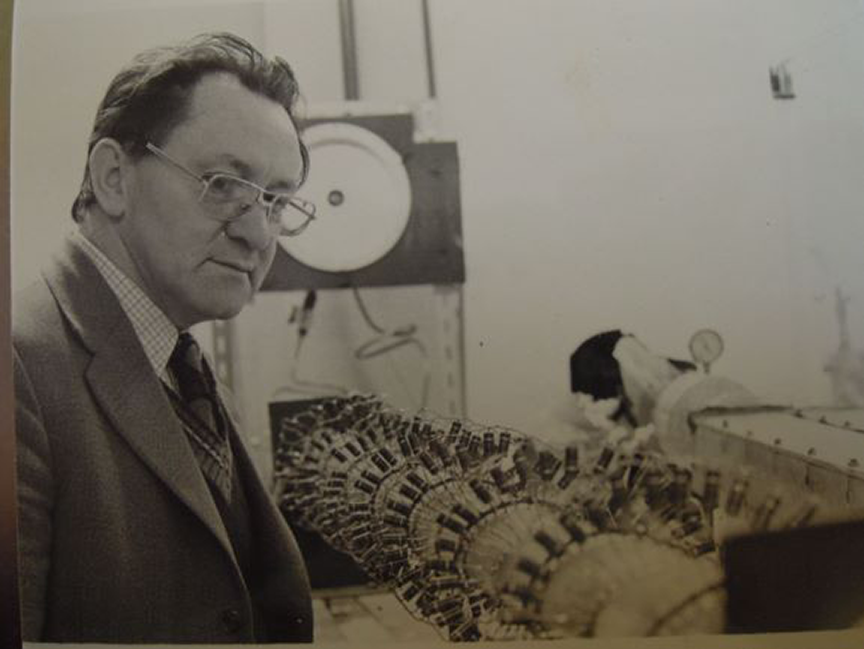
Figure 26 Colyn Grey Morgan working on a TEA laser at the University College Swansea circa 1976.
His early research interests were primarily concerned with gas discharge physics and phenomena in ionized gases. The role of electrode and gas processes in the production of electrons which initiate spark discharges using metal and semiconductor materials was investigated as electrodes[Reference Morgan and Harcombe215]. He played an important role in the development of the European Organisation for Nuclear Research (CERN) in the late 1950s and 1960s. The work on high-voltage discharge physics, useful for accelerator development, was pivotal in the early research undertaken at CERN. In March 1969, Colin Grey Morgan’s first PhD student, Lyn Evans, a miner’s son from Aberdare, spent time at CERN working on a number of accelerator development projects before moving to CERN permanently, eventually becoming project leader for the Large Hadron Collider (LHC).
It was only natural that Colyn’s research interests would turn to laser-induced breakdown. In a paper published in 1971 he reported on measurements of the laser radiation power density required to cause ionization growth and breakdown at various pressures in helium and argon, using three Q-switched lasers (ruby, Nd and dye) operating at different wavelengths. He compared the experimental results with theory based upon an extrapolation of classical microwave breakdown theory with optical frequencies. The ionization rate was shown to be proportional to the laser beam intensity. This work was also done in collaboration with CERN where Colyn conducted some of his research[Reference Morgan, Evans and Morgan216]. Clive Ireland was a young researcher in Colyn’s group studying laser-induced breakdown before establishing a career in lasers at AWE and JK Lasers in Rugby, both featured in other sections of this review[Reference Ireland and Morgan217].
Colyn’s work on resonance ionization spectroscopy won him an international reputation and his research on high-density plasma physics made a significant contribution to the development of the CLF at RAL. He was a very firm supporter of the establishment of the CLF and was a member of the Committee of Senior Academics established in 1973 to advance its formation. He maintained an active role on the CLF’s Scheduling Committee which prioritized proposals for scheduling. John Collier conducted his PhD under Colyn Grey Morgan who then went on to work at CERN and then the CLF. He is currently Director of the CLF and an Honorary Professor at Swansea.
In 1979 Colyn wrote a review article ‘Laser spectroscopy of ultra-trace quantities’ in the Chemistry Society Review [Reference Morgan218]. He examined at the rapid development of the laser during the previous two decades which provided chemists with many new and powerful techniques for the synthesis of materials, and novel methods for initiating chemical reactions and for their rapid temporal or compositional analyses. This was seen by senior staff at AWRE Aldermaston and he was asked to write a report for them outlining the principles of laser-based analytical methods applicable to chemical analysis activities. This led to the establishment of more formal links between the Swansea Physics Department and AWRE which involved joint research projects and sponsorship of a number of PhD students.
Over his career Colyn wrote four books and was involved with, and influenced, many organizations. He was a consultant to the MoD and the Atomic Weapons Research Establishment. He was a consultant to the US Department of Defence at Los Alamos Laboratory, Oak Ridge National Laboratory and the US Airforce Weapons Laboratory, and he was a visiting fellow at CERN. As well as being such a notable scientist, Colyn was such a great personality, with an irrepressible sense of humour. He was married to his wife Mena for 66 years before passing away peacefully in 2017.
2.11 University of Essex
The University of Essex was formed in 1962 with Professor Alan Gibson joining as Head of the Physics Department in 1963. Alan was recruited from the Royal Radar Establishment (RRE) to become the first professor of physics at the newly established university, and to set up the department. At RRE Alan had been Head of the Transistor Physics division running a staff of 65, where he was concerned with solid-state and IR physics. He was already internationally renowned in that area of research. Naturally, the new department of physics at Essex reflected Alan’s interests. Alan’s ‘right-hand man’ was Dr. (later Professor) Maurice Kimmitt, who also came from RRE where his speciality had been far-IR radiation physics. The department offered an MSc course in optoelectronics, which attracted many overseas students, many of whom went on to do PhDs. Most of the academics in the department were working on lasers and detectors within the general area of optoelectronics.
Alan Gibson and Maurice Kimmitt invented the ‘photon drag’ detector: a device capable of a risetime of <1 ns. The pioneering experimental work, using the Essex ‘long laser’, was done by Andy Walker, later Professor at Heriot-Watt University. Using P-type germanium, it is possible to generate ultra-fast electrical signals by illuminating it with a high-power (pulsed) laser beam. Gibson and Montasser developed the theory of the photon drag for the wavelength range 1–10 μm[Reference Gibson and Montasser219]. They were broadening the scope to wavelengths other than CO2 at 10.6 μm. They developed a range of detectors based on this technology which were widely used in the community of scientists working on high-power pulsed TEA CO2 lasers, being sold commercially by Rofin Ltd (see Section 4). The intrinsic response time was a few picoseconds, so the practical response time was limited only by the transit time of the light pulse within the crystal and the electrical circuit. The voltage pulse, a few tens to hundreds of millivolts, was displayed on an oscilloscope, so the electrical characteristics of the detector and the bandwidth of the vertical amplifier in the oscilloscope (this was 500 MHz in the 1970s) limited the usable response time to somewhat less than a nanosecond. Nevertheless, photon drag detectors were simple to use, operated at room temperature and were extremely rugged both mechanically and to damage from high-power laser pulses[Reference Gibson, Kimmitt, Koohian, Evans and Levy220].
In 1971, Peter Maggs joined the team, initially as a PhD student. He further developed the research into the so called ‘hot hole’ detector. As well as photon drag, the absorption of 10.6 μm radiation in germanium causes a photoconductive effect. The two effects interact in a complex way, but since the response time of the photoconductivity is similar to that of photon drag, i.e., a few picoseconds, this effect can also be used as the basis of an ultra-fast detector. The advantage over photon drag is that the signal amplitude can be increased arbitrarily by increasing the bias voltage. Using a pulsed bias of 500 V, it produced signal pulses of several volts and was suitable for use with a direct access oscilloscope, i.e., one with no vertical amplifier. The signal alone was adequate to drive the vertical plates of the oscilloscope, which gave the overall system a 1 GHz bandwidth: extremely useful for resolving the ever-shorter pulse widths being achieved in the laser research. For example, it was used to measure the pulse width of laser pulses produced by Brian Norris’ mode-locked CO2 laser. Pulses with full width at half-maximum of 270 ps were measured, which was, at the time, a world record.
A variety of pulsed lasers with wavelengths covering the range 2.5–11 μm were built at Essex under Alan Gibson’s supervision, to extend studies of photon drag and photoconductivity at different wavelengths.
In 1966, Alan had the insight to construct a 120 ft optical bench inside a long room in the basement of the physics building. On this bench was built the Essex ‘long laser’, a Q-switched oscillator and amplifier chain that produced 1 μs pulses of CO2 laser radiation of 200 kW peak power. This was the most intense source of 10.6 μm radiation available at the time.
Carlos Rosito, a PhD student from Argentina, built a pin to bar TEA CO2 laser. The first unit was linear, but the row of discharges gave a highly anisotropic population inversion which led to poor beam quality. He subsequently solved this by using a helical arrangement of the electrodes.
Around 1973–1974, Brian Norris built a TEA laser[Reference Gibson, Kimmitt and Norris221] using two Lamberton–Pearson modules, mode-locked using non-linear absorption in an antireflection coated P-type germanium etalon. This produced trains of pulses of less than 300 ps duration. The Lamberton–Pearson design was based on Rogowski profile electrodes (see the SERL entry in Section 5).
Between 1974 and 1976, Peter Maggs built a 100 Hz TEA laser using an intra-cavity low-pressure section to remove all but one longitudinal cavity mode. This removed the spontaneous mode-locking from non-linearities in the gas discharge producing a pulse with no fast temporal modulation. One of the main electrodes used a stainless-steel mesh covering the pre-ionizer, to allow unimpeded gas flow between the electrodes.
Tom Hughes was instrumental in setting up the CLF along with Tom Hall, who was one of the first coordinators of experimental proposals. Tom Hall was a leading academic in the area of optical spectroscopy and conducted many experiments at the CLF.
2.12 University of Reading
In the late 1960s, John Deech moved from a Postdoc position at the University of Oxford to work with Professor George Series at the JJ Thomson Physics Laboratory, University of Reading. They needed a laser for their research in atomic physics, but applications to the SRC (the forerunner of the EPSRC), proved unsuccessful. Colin Webb at Oxford, with Jim Piper, decided to build two nitrogen lasers: one for the Reading group and one for Oxford. The Reading group used the laser to pump a dye laser to study the states in caesium vapour by selective detection of the fluorescence generated in atoms, using as sources a conventional caesium lamp for the first step from the ground state and the pulsed, tunable laser for the second[Reference Deech, Luypaert and Series222].
John Deech gave up on getting a permanent post in lasers and photonics soon after he and George Series published this work and moved on to train as a solicitor. That training came in very handy when Oxford Lasers was founded, because as one of their founders he took on all the responsibilities for making sure that the company complied with all the legal requirements and indeed he is still their consultant in legal matters. Sadly, George Series died not too long after and the group’s activities in this area reduced with little laser-related research after that time.
The university maintained a very strong optics group under Professor Harold Hopkins FRS[223], a great optical theorist. His many inventions are in daily use throughout the world which include zoom lenses, coherent fibre-optics and more recently the rod-lens endoscopes which ‘opened the door’ to modern key-hole surgery[Reference Berci224]. He was the recipient of many of the world’s most prestigious awards and was twice nominated for a Nobel Prize. He passed away in 1994. Following much debate, the Physics Department at Reading closed in 2006.
2.13 X-Ray Laser Consortium
Soft X-ray laser action was pursued in the UK by a consortium, consisting of researchers from the universities of Hull, Essex, Oxford, Imperial College, QUB, York and RAL. Initial work was based on simulations by Geoff Pert at Hull who conceived the idea of generating short-wavelength lasing action using recombination from a plasma of initially limited spatial extent. Simulations indicated that it would be possible to obtain gain by rapid cooling and decoupling of the self-absorption of radiation via a strong radial Doppler effect, to prevent trapping of the decay transition. Based on this, Stuart Ramsden in about 1974 put in a grant proposal to SERC to build a Nd:glass laser at Hull giving 20 J in 100 ps to carry out experiments on plasma compression.
It became clear that a larger laser system would be beneficial with Mike Key (who was then working in Dan Bradley’s group at QUB) and Geoff Pert given the task of preparing a proposal for the CLF which came into being in 1976. Initially, soft X-ray lasing experiments at the CLF were conspicuous by their failure to produce significant lasing action, principally because the starting conditions were incorrect, with higher energy than ideal being used. This led to a programme of experimental work mainly at Hull where mass ablation rates from carbon fibres were measured to compare with theory, giving good agreement. This enabled researchers from Hull to confirm that over-heating would cause an absence of inversion.
During his final undergraduate year at QUB in 1970, Ciaran Lewis opted for a final year project topic ‘X-ray lasers’ inspired by the popular scientific press. His supervisor was Mike Key which led to him joining his research group in 1971 to start a PhD exploring options for shorter than visible wavelength laser devices. Ciaran initially worked alongside Bernard Rogers, another PhD student, working on a fast discharge VUV hydrogen laser. Parallel work, involving X-ray streak camera development[Reference Bradley, Roddie, Sibbett, Key, Lamb, Lewis and Sachsenmaier225, Reference Key, Lamb, Lewis and Sachsenmaier226] initiated time-resolved emission studies of resonance line emissions from carbon targets using the QUB laser[Reference Key, Lewis, Lamb, Lunney and Roy227, Reference Key, Lewis and Lamb228] with a view to providing a diagnostic tool to enhance understanding of gain-producing conditions on the Hα Balmer series line at 18.2 nm. This diagnostic also had applications in several other future CLF activity areas such as time-resolved radiography of imploding spherical targets[Reference Key, Lamb, Lewis, Moore and Evans229], time-resolved spectroscopy[Reference Key, Lewis, Lunney, Moore, Ward and Thareja230] and mass ablation rate measurements[Reference Goldsack, Kilkenny, MacGowan, Veats, Cunningham, Lewis, Key, Rumsby and Toner231, Reference Key, Toner, Goldsack, Kilkenny, Veats, Cunningham and Lewis232].
In 1983–1984 a group of researchers from various universities joined Hull, QUB, University of Essex, Imperial College London and the CLF to repeat the fibre experiments at RAL. Soft X-ray gain[Reference Chenais-Popovics, Corbett, Hooker, Key, Kiehn, Lewis, Pert, Regan, Rose, Sadaat, Smith, Tomie and Willi233] was successfully achieved in 1986, the results essentially reproducing and confirming those from Hull. Thus, the X-ray Laser Consortium was born. The consortium then further developed the fibre laser by overcoating a carbon fibre with a thin coating of LiF obtaining gain[Reference Grande, Key, Kiehn, Lewis, Pert, Ramsden, Regan, Rose, Smith, Tomie and Willi234] at 8.1 nm. These experiments greatly benefited from the critical mass of resources available through the Consortium working together[Reference Zhang, Key, Norreys, Tallents, Behjat, Danson, Demir, Dwivedi, Holden, Holden, Lewis, MacPhee, Neely, Pert, Ramsden, Rose, Shao, Thomas, Walsh and You235] at the CLF. The CLF had a dedicated target fabrication laboratory that was able to devote time to making and mounting the delicate overcoated fibres. The CLF also had the scientific, technical and engineering expertise to build specialized systems such as a split field microscope and an optical illumination system based on spherical aberration designed by I. Ross[Reference Ross, Boon, Corbett, Damerell, Gottfeldt, Hooker, Key, Kiehn, Lewis and Willi236]. This delivered near-diffraction-limited straight line foci of aspect ratios up to 1000:1, ideal for pumping long plasma lengths enabling many X-ray Laser Consortium studies[Reference Tallents, Abou-Ali, Edwards, King, Pert, Pestehe, Strati, Lewis, Keenan, Topping, Klisnick, Guilbaud, Ros, Clarke, Notley and Neely237, Reference Key, Blyth, Dangor, Dhez, Djoui, Dwivedi, Holden, Holden, Jaegle, Lewis, McPhee, Modena, Nakai, Neely, Norreys, Offenberger, Pert, Ploues, Preston, Ramsden, Rose, Russ, Smith, Sureau, Tallents, Walsh, Wark, You and Zhang238].
Collisionally excited soft X-ray lasers were demonstrated at high gain in America in the mid-1980s, pumped using (∼kilojoule) energy, nanosecond pulses[Reference Matthews, Hagelstein, Rosen, Eckart, Ceglio, Hazi, Medecki, MacGowan, Trebes, Whitten, Campbell, Hatcher, Hawryluk, Kauffman, Pleasance, Rambach, Scofield, Stone and Weaver239]. In 1988, Ciaran Lewis and Geoff Pert persuaded the members of the UK consortium that the collisionally pumped slab laser potentially offered a better experimental system. David Neely undertook a final year undergraduate project on flashlamp pumped lasers with Ciaran Lewis in 1986 and then subsequently started a PhD at QUB in soft X-ray lasers working alongside Domhnail O’Neill (who worked on point projection spectroscopy[Reference O’Neill, Lewis, Neely, Davidson, Rose and Lee240] and latterly photoresonant excitation[Reference O’Neill, Lewis, Neely, Ramsden, Key and Rose241]). Ciaran ultimately became head of group in the 1990s and was responsible for the development of the QUB TARANIS laser system (see Section 2.3).
In 1989 in collaboration with Ed McLean from NRL, the QUB team including Andrew MacPhee (who latterly moved to LLNL after completing his PhD at QUB) along with Stuart Ramsden, Geoff Pert (who later moved to York), Greg Tallents (who later moved to York) and Mike Key (who became Director of the CLF) observed significant gain[Reference O’Neill, Lewis, Neely, Uhomoibhi, Key, MacPhee, Tallents, Ramsden, Rogoyski, McLean and Pert242, Reference Neely, Lewis, O’Neill, Uhomoibhi, Key, Rose, Tallents and Ramsden243] in neon-like germanium. For a plasma-based amplifier, the output scales almost exponentially with the gain length product with stability and maximum efficiency only achieved when the device is operated in saturation. David Neely’s PhD studies culminated in 1991 in utilizing two opposing slab targets[Reference Lewis, Neely, O’Neill, Uhomoibhi, Key, Alhadithi, Tallents and Ramsden244, Reference Neely, Lewis, O’Neill, Cairns, MacPhee, Uhomoibhi, Key, Kodama, Norreys, Dwivedi, Krishnan, Tallents, Holden, Lightbody, Pert, Ramsden and Zhang245] to compensate for refraction to increase the gain length product. This enabled saturation to be achieved in an experiment conducted by the UK X-ray Laser Consortium in collaboration with P. Jaegle’s team from France using neon-like germanium[Reference Carillon, Chen, Dhez, Dwivedi, Jacoby, Jaegle, Jamelot, Zhang, Key, Kidd, Klisnick, Kodama, Krishnan, Lewis, Neely, Norreys, O’Neill, Pert, Ramsden, Raucourt, Tallents and Uhomoibhi246], at 23 nm with a 500 ps pump at the CLF.
Geof Pert’s team were also making significant advances including the development of a hydro/ionization code and relevant excitation rates enabling these complex systems to be modelled[Reference Holden, Healy, Lightbody, Pert, Plowes, Kingston, Robertson, Lewis and Neely247] and the strong effects of refraction to be examined. In a collaborative experiment in 1993 Ciaran’s team including David Neely (who moved to the CLF in 1993 and later took charge of the CLF’s Experimental Science Group) and Professor Y. Kato’s team using the GEKKO laser at ILE, Osaka, Japan, resolved a long-standing issue known as the ‘J = 0–1 anomaly’. When curved targets were compared with flat targets, they were shown to compensate for strong refractive effects[Reference Kodama, Neely, Kato, Daido, Murai, Yuan, MacPhee and Lewis248]. P. Jaegle’s team worked in collaboration with the UK team on developing a soft X-ray cavity in 1992 and later Bedrich Rus (who latterly moved to ELI Prague) developed polarization control[Reference Rus, Lewis, Cairns, Dhez, Jaegle, Key, Neely, MacPhee, Ramsden, Smith and Sureau249] by 1995. First experiments using the soft X-ray laser beam characterizing its coherence[Reference Burge, Slark, Browne, Yuan, Charalambous, Cheng, Lewis, MacPhee and Neely250] and using it for high-resolution imaging[Reference Burge, Browne, Charalambous, Slark, Smith, Lewis and Neely251] were conducted in a collaboration with R. Burge from King’s College London in the mid-1990s. Figure 27 shows Jiun-Yuan Lin, then at the University of Essex, working on the X-ray laser set-up in the VULCAN target chamber in the late 1990s.

Figure 27 Jiun-Yuan Lin, then at the University of Essex, adjusts an X-ray laser target in the VULCAN target chamber circa late-1990s. (Picture courtesy of STFC.)
A collaboration involving MHR Hutchinson’s team from Imperial College, including T. Ditmire (latterly moving to Texas) and R. A. Smith (who became Head of the Plasma Physics Group at Imperial College in the early 2000s) and Mike Perry from LLNL, demonstrated the amplification of a harmonic in a plasma amplifier[Reference Ditmire, Hutchinson, Key, Lewis, MacPhee, Mercer, Neely, Perry, Smith, Wark and Zepf252] for the first time.
Throughout the 1990s the X-ray Laser Consortium were often vying with the US labs to hold the record for the shortest-wavelength laser. Much of the experimental work was led by Oxford Postdoctoral Fellows Jie Zhang and Elisabeth Wolfrum. Advances in recombination pumped systems were also being made at this time using the 2 ps pulses available at VULCAN. Experimental evidence of the importance of multiple pulse illumination[Reference Cairns, Lewis, Lamb, MacPhee, Neely, Norreys, Key, Healy, Holden, Pert, Plowes, Tallents and Demir253, Reference MacPhee, Behjat, Cairns, Healy, Key, Kim, Kurkcuoglu, Lamb, Lewis, McCabe, Neely, Pert, Plowes, Tallents, Warwick, Wolfrum and Zhang254] and laser contrast and its role in the plasma interaction were also mounting. By the mid-1990s both modelling and experimental results were confirming that that collisional systems offered a much better output[Reference Burge, Slark, Browne, Yuan, Charalambous, Cheng, Lewis, Cairns, MacPhee and Neely255] over recombination pumped lasers and by 1997 saturation was achieved with nickel-like samarium[Reference Zhang, MacPhee, Lin, Wolfrum, Smith, Danson, Key, Lewis, Neely, Nilsen, Pert, Tallents and Wark256], at 7 nm using a 50 ps pump. This work was featured in the UK popular science magazine New Scientist as a cover story[Reference Welbourne257] shown in Figure 28. Jie returned to China and became an Academician of the Chinese Academy of Sciences, and later President of Shanghai Jiao Tong University. Elisabeth returned to the Max Planck Institute for Plasma Physics in Garching, Germany, in 2000 to work on tokamak fusion.
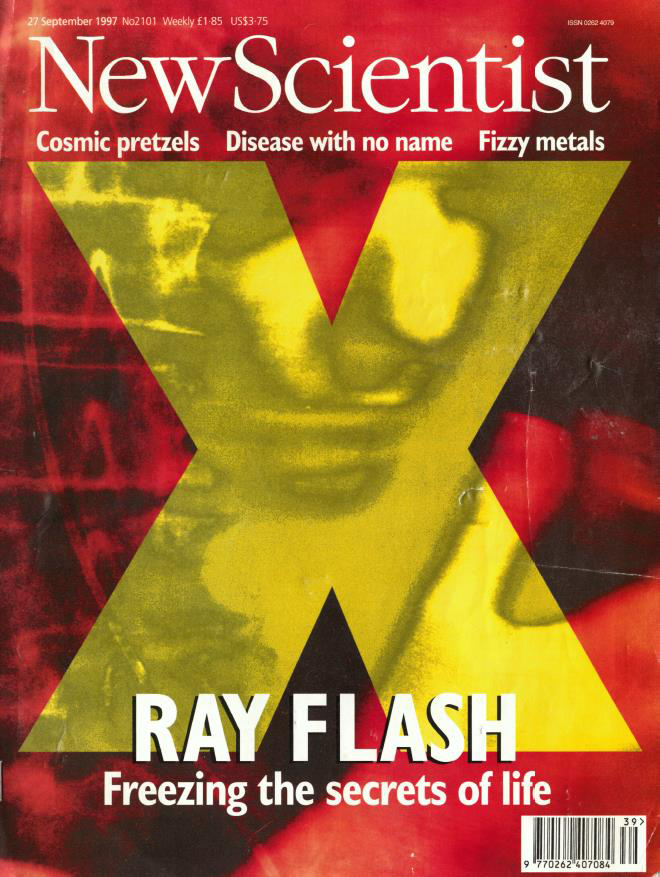
Figure 28 The front cover of the popular science magazine New Scientist featuring the work of the UK X-ray Laser Consortium. (Image copyright New Scientist.)
The soft X-ray laser output was used in many studies by the consortium from examining laser plasma instabilities[Reference Wolfrum, Wark, Zhang, Kalantar, Key, Remington, Weber, Neely, Rose, Warwick, MacPhee, Lewis, Demir, Lin, Smith and Tallents258], through to biological imaging. To improve the efficiency of the soft X-ray lasing action, shorter pulse pumping using a mode of operation termed ‘transient collisional excitation’[Reference Kalachnikov, Nickles, Schnurer, Sandner, Shlyaptsev, Danson, Neely, Wolfrum, Zhang, Behjat, Demir, Tallents, Warwick and Lewis259, Reference Klisnick, Kuba, Ros, Smith, Fourcade, Jamelot, Miquel, Wyart, Chenais-Popovics, Keenan, Topping, Lewis, Strati, Tallents, Neely, Clarke, Collier, MacPhee, Bortolotto, Nickles and Janulewicz260] helped to push the development of shorter pulse laser drivers, with collaborative experiments being performed through the Laserlab-Europe network[261]. Grazing incidence pumping in which the turning point in the plasma could be optimally tuned to overlap with where the conditions for a desired soft X-ray lasing transition were optimized, enabled high transient collisional excitation gain[Reference King, Pert, McCabe, Simms, MacPhee, Lewis, Keenan, O’Rourke, Tallents, Pestehe, Strati, Neely and Allott262].
A number of the UK X-ray Laser Consortium’s results were world firsts, with many confirming results from other groups, enabling numerous refinements to be delivered. These various improvements all led to a workable soft X-ray laser for applications in the 5–30 nm wavelength region. Geoff Pert was elected a Fellow of the Royal Society in 1996 mainly for his work on X-ray lasers and for developing computer models of laser produced plasma, all associated with the CLF. Unfortunately, the plasma XUV laser was overtaken by events namely the development of bright harmonic sources[Reference Norreys, Zepf, Moustaizis, Fews, Zhang, Lee, Bakarezos, Danson, Dyson, Gibbon, Loukakos, Neely, Walsh, Wark and Dangor22] and latterly by the construction of XFELs. These, however, are large and complex devices which may leave a role for the VUV laser in specialist applications. In conclusion, taken as a goal-oriented programme, the X-ray Laser Consortium achieved its aims. However, the experimental complexity was high and length of time taken to achieve reliable and stable performance was too long, and as a result the community as a whole lost confidence that a sufficiently useful and cost-effective device could be achieved using flashlamp pumped driving lasers.
3 UK national laboratories
3.1 Introduction
The national laboratories have played a pivotal role in the development of laser technology and laser applications. They have sufficient budget to allow the construction of large facilities; they contract development work out to both industry and universities; they have spun out a number of successful laser companies; they have created a large pool of skilled people; and they provide a national focus for international collaboration. As well as providing services for the user community, each of the laboratories has itself made significant contributions to the field through its own research and development programmes.
This section covers the history of three of these laboratories in some detail.
• The CLF at RAL, which has provided the UK and international user communities with access to several major central laser facilities, which are used free of charge at the point of access. For many years it also operated the ‘Laser Loan Pool’ (LLP) of equipment that would not be affordable or appropriate for ownership by a single institution.
• AWRE/AWE Aldermaston, which has driven a number of laser developments through its use of high-power lasers to provide data for its nuclear weapon stockpile stewardship.
• UKAEA Culham, where the use of lasers in the diagnostics of magnetically confined plasmas has pulled through some significant advances in the laser sources and applications.
3.2 CLF
The CLF at RAL has become a cornerstone of the UK and international academic and industry research programme using lasers of all types and capabilities. The CLF was established in 1976 and has a broad range of facilities which can be accessed through peer reviewed or commercial application. It has been innovative in the development of these lasers and has produced several spin-out companies to exploit those technologies. It has been operating for over 40 years[Reference Key35, 263, 264], and continues to develop its facilities for the next generation of users.
3.2.1 Early years: the setting up of the CLF
There was strong research activity within the UK academic community in the area of laser–plasma interactions with lasers at the University of Hull and QUB, and strong research interests at Imperial College London, University of Essex and Swansea University. It was difficult, though, to compete with work carried out at national laboratories worldwide. A committee of senior UK academics chaired by Professor Dan Bradley (QUB and Imperial College London), Dr. Dave Burgess (Imperial College London), Dr. John Colles (Heriot-Watt University), Professor Colyn Grey Morgan (University College Swansea), Dr. Malcolm Haines (Imperial College London), Mr. Tom Hughes (University of Essex), Dr. Mike Key (QUB), Dr. Geoff Pert (University of Hull), Professor Stuart Ramsden (University of Hull) and Dr. Eric Wooding (Royal Holloway College) was formed circa 1973 to discuss setting up a national high-power laser facility. There was discussion about hosting this facility within a university, either QUB or Hull. The increasing issues with the political conflict in Northern Ireland ruled out Belfast as a viable option. A laser facility already existed at AWRE and the option was proposed that academics could also access that facility; it was thought by some that two separate facilities serving the defence and academic communities could lead to funding issues. It was eventually decided that a large central laser facility would be the best option to put the country in a competitive world position.
In July 1974, the Chairman of the SRC, Sir Sam Edwards, called a meeting to discuss the proposal to build a large laser facility at the Rutherford Laboratory, tabled by Godfrey Stafford, Director of Rutherford Laboratory. At the time Rutherford was predominately a laboratory for the study of high-energy nuclear physics based around the Nimrod proton accelerator. However, the superior engineering capabilities within a large national laboratory were widely recognized as a key advantage and eventually it was agreed to build a facility at the Rutherford Laboratory dedicated to the needs of the academic community.
The CLF was intended from the start to provide laser facilities for use by university and polytechnic research groups[265]. The CLF received UK governmental approval in October 1975 under its first Director Alan Gibson (formerly founding Head of Physics Department, University of Essex). Space was made available at the Rutherford Laboratory in Oxfordshire (eventually to be RAL) in April 1976.
The CLF was soon up and running with the installation of a Nd:glass laser (later to be called VULCAN). Paul Williams led the laser facility development. Operations began with a single beam delivering 100 ps pulses at a power of 100 GW, in December 1976, using technology supplied by JK Lasers Ltd, Rugby and Quantel, France. April 1977 saw the completion of the commissioning of the disc amplifiers, supplied by ILC (International Lamp Corporation) to LLNL, USA design.
The Laser Facility was formally inaugurated by Sir Sam Edwards, Chairman of the SRC, on Monday 20 June 1977, shown in Figure 29, hosted by Professor Alan Gibson, Director of the CLF, and Dr. Paul Williams, Deputy Director and later Director of RAL. The inauguration included the successful firing of a Nd:glass laser facility shot.

Figure 29 The inauguration of the CLF with, from left to right, Professor Alan Gibson, Professor Dan Bradley, Sir Sam Edwards and Godfrey Stafford, RAL Director. (Picture courtesy of STFC.)
High-power plasma experiments started immediately, initially in to one target area, but within a year a second target area (TA2) was brought on-line. Experimental programmes were coordinated by Tom Hughes (University of Essex) and Dr. Mike Key (QUB). Detailed proposals originated primarily from groups which were convened by:
• Dr. Joe Kilkenny, Imperial College London, optical and magnetic measurements;
• Dr. Brian Fawcett, Appleton Laboratory, X-ray and XUV spectroscopy;
• Dr. Tom Hall, University of Essex, optical spectroscopy;
• Dr. Howard Miles, Swansea University, particle emission studies;
• Dr. Richard Dewhurst, University of Hull, gas breakdown;
• Dr. Nick Peacock, Culham Laboratory, X-ray lasers and harmonic generation;
• Professor Malcolm Haines, Imperial College London, theoretical and computational support.
The group structure evolved rapidly to target scientific objectives, together with committees to advise on the scientific programme, and on the scheduling of proposals. The programme was overseen by the Laser Facility Committee (LFC) whose membership was made up of the university users.
In 1980, Alan Gibson decided that the Nd:glass laser should be renamed something more media-friendly. Various suggestions were made including ‘British Universities’ Neodymium Glass Laser Equipment’ (BUNGLE), but the eventual choice was a name derived from Latin proposed by Roger Evans: VULCAN (Versicolor Ultima Lux Coherens pro Academica Nostra) or ‘The latest multi-coloured coherent light for our academics’[Reference Key35].
3.2.2 The laser programmes
Gas/excimer laser programme. Following the setting up of the CLF there was some initial CO2 laser development, with Alan Gibson at the helm, but this was quickly phased out.
In the late 1970s there was a strong interest in inertial-fusion applications, and the development of high-power lasers, which would directly produce light at the necessary UV wavelengths. Excimer gas lasers using KrF or ArF, pumped by Marx generators, were a leading candidate to meet this criterion. The CLF embarked on a programme of laser development of these systems.
The construction of an Electron-beam excited Laser Facility (ELF) started in 1978 to a general design supplied by AWRE with commissioning being completed in March 1979. ELF was the first pulsed excimer laser in the world using ArF operating at UV wavelengths (193 nm). It was initially intended to act as a pump to investigate the selenium laser operating at 488 nm. The laser produced 3 kJ of energy in a 50 ns pulse. The electron beam itself was 5 × 50 cm2 and could operate up to 1.5 MeV.
Work on a new e-beam pumped KrF laser operating at 249 nm started in 1981 to provide increased capability. The laser known as Sprite[Reference Lister, Divall, Downes, Edwards, Hirst, Hooker, Key, Ross, Shaw and Toner266] was used to develop the next generation of high-power gas lasers and study bright X-ray sources. It had a 27 cm aperture e-beam pumped gas cell, shown in Figure 30. Sprite had an e-beam pumped KrF pre-amplifier laser system named Goblin, which used repurposed ELF hardware.
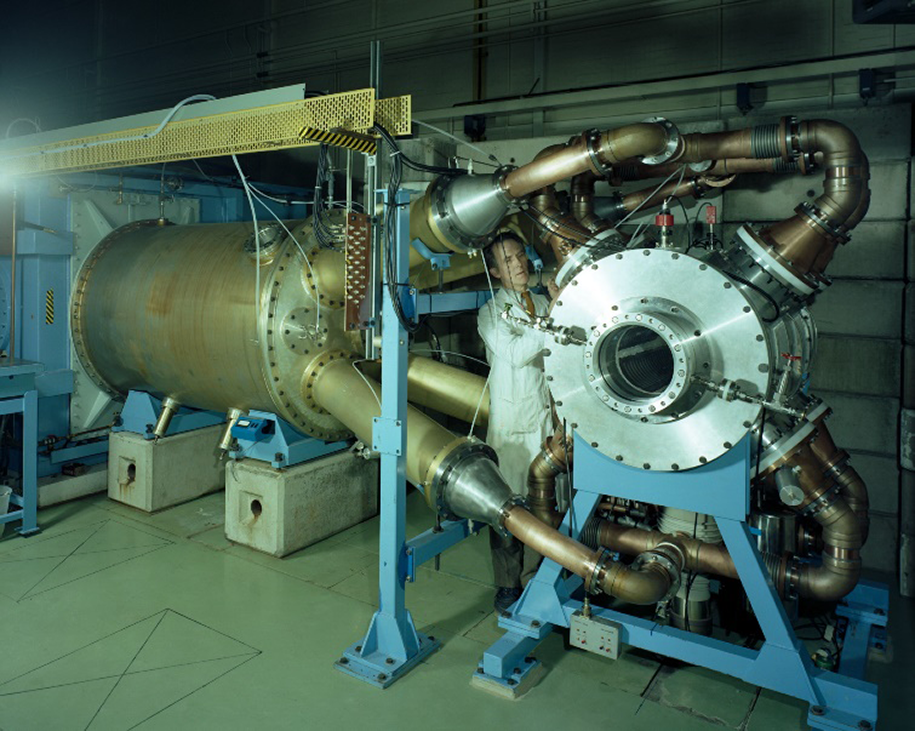
Figure 30 Dave Wood shown with the Sprite e-beam pumped amplifier cell in 1982. (Picture courtesy of STFC.)
Sprite was initially used in a seeded unstable-resonator configuration to generate long, ~60 ns, pulses for irradiation experiments. With increasing interest in shorter pulses, for which Sprite would be used as an amplifier, it was obvious that the long duration of the electron beam combined with the short optical path through the gain medium would lead to very inefficient energy extraction, because KrF is not an energy-storage medium. A time-multiplexed arrangement, in which nanosecond duration pulses were sent through the amplifier at regular intervals on angularly separated beam paths, allowed the majority of the electron-beam energy to be extracted from the gain medium.
To make efficient use of the energy extracted with multiple KrF beams, a scheme of Raman beam combination was developed[Reference Ross, Shaw, Hooker, Key, Harvey, Lister, Andrew, Hirst and Rodgers267]. This used stimulated Raman scattering in methane gas to transfer the energy of a number of 249 nm KrF laser beams into a single beam at a wavelength of 268 nm. Of the eight multiplexed KrF beams, one was used to pump a Raman preamplifier, and the remaining seven pumped a second power amplifier whose single output combined 70%–80% of the total pump energy. Seed pulses for both the KrF and Raman amplifiers were generated in a front-end, which over the years developed through various technologies from discharge-pumped excimer lasers, to dye lasers and then titanium-doped sapphire. A fraction of the initial KrF pulse was focused into a methane gas cell, and the first Stokes beam was selected from the spectrum of pulses emerging from the cell to form the seed for the Raman amplifiers. The multiplexing technique was initially used with nanosecond-duration pulses, delivering up to 100 J of energy, and was later also applied to pulses of 12 ps duration once a short-pulse dye laser was introduced in the front-end. The advantage of the Raman combining scheme is that it generates near-diffraction-limited pulses in a high-contrast beam; ideal for clean high-intensity operation.
By 1983, Sprite was the most powerful operational KrF laser in the world, and in 1984 it became the world’s first high-power KrF laser to be used for the irradiation of targets, supporting a full scheduled user interaction programme. At pulse lengths of 3.5 ps it demonstrated energies of 2.5 J giving a peak power of 0.7 TW[Reference Barr, Everall, Hooker, Ross, Shaw and Toner268]. One of its main advantages for an ultra-high-intensity laser was that it had a relatively high shot rate, being able to fire 12 shots per hour. Experiments for the academic community covered a broad range of studies from laser/plasma interaction studies, X-ray laser investigations and work on multi-phonon ionization in gases. In an unusual experiment Sprite was used to calibrate the dust sensor for the Giotto space probe mission to Halley’s comet by firing laser pulses at the dust shields of the satellite, taking advantage of the cross-disciplinary nature of RAL. The energy and duration of a laser shot were similar to those of a small dust particle impacting the shield.
The technique of CPA[Reference Strickland and Mourou50] was also implemented on Sprite in 1992–1993. The gain bandwidth in KrF is broad enough to support pulse amplification at pulse durations of <100 fs. The configuration used on Sprite generated the ultra-short pulses in Ti:sapphire at 746 nm, frequency tripled the output to produce pulse of 249 nm, and then stretched the pulse to ~12 ps prior to amplification. Amplification took place in three stages: a pre-amplifier, Goblin and then the main Sprite output amplifier. Asymmetric gain narrowing in the three amplifier stages limited the compressed pulse duration to 300 fs with 300 mJ on target, delivering 1 TW, with focused intensities >1019 W·cm–2.
Sprite’s last shot was fired by Paul Williams in a small ceremony on 31 March 1995; it was then repurposed as the pre-amplifier for a new laser called Titania. Titania[Reference Divall, Edwards, Hirst, Hooker, Kidd, Lister, Mathumo, Ross, Shaw, Toner, Visser and Wyborn269, Reference Hirst, Divall, Edwards, Hooker, Key, Kidd, Knott, Lister, Neely, Norreys, Ross, Shaw and Wyborn270] was designed to have 10 times the energy of Sprite to produce higher brightness than any other laser in the UV range. The inauguration of the facility took place on 2 April 1996 by Mike Key (CLF Director) and Paul Williams (CEO of CCLRC) successfully firing a test shot.
Titania, like Sprite, could be operated in two alternative modes, CPA (249 nm) and Raman (268 nm), which could deliver peak intensities to target of 1019 W·cm–2 with f/3 focusing optics. The first mode, which became operational in 1996, used CPA to produce pulses of 300 fs with a pulse energy of 6–8 J from the 42 cm aperture final e-beam pumped amplifier. Smaller aperture compression gratings used to recompress the pulse limited the energy on target to <10% of this.
The energy limitations of the CPA scheme were removed in an alternative architecture that was based on Raman beam combination. Here the KrF amplifier’s energy was extracted by a train of 24 short pulses, each of which can have an energy of up to 8 J. These pulses were then resynchronized and used to pump a chain of methane-filled Raman amplifiers which combined into one pulse with an efficiency of up to 70%, delivering pulses of 30–500 ps duration. As well as the increased energy, other benefits included higher beam quality and ultra-high contrast pulses.
The VULCAN laser facility. In 1980 the CLF’s Nd:glass laser, now called VULCAN, was upgraded to deliver six 1053 nm, 108 mm diameter beams to target, 300 J per beam at 1 ns, with an additional full aperture beam used largely for X-ray backlighting[Reference Ross, White, Boon, Craddock, Damerell, Day, Gibson, Gottfeldt, Nicholas and Reason271], and the output disc amplifier array is shown in Figure 31. At the same time, synchronized long- and short-pulse oscillators[Reference White, Damerell, Hodgson, Ross, Wyatt and Ireland272] were installed in a system designed by Malcolm White. It was a world’s first, allowing the synchronization of a laser-driven implosion pulse with an X-ray diagnostic backlighting pulse. This system used an actively mode-locked and Q-switched 70 ps Nd:YLF oscillator, developed by JK Lasers, and a Q-switched Nd:YLF multi-nanosecond pulse oscillator from which a synchronized nanosecond slice could be delivered using an Austin switch (laser-driven high-voltage switch) driven Pockels cells, giving ultra-low temporal jitter (≲5 ps).
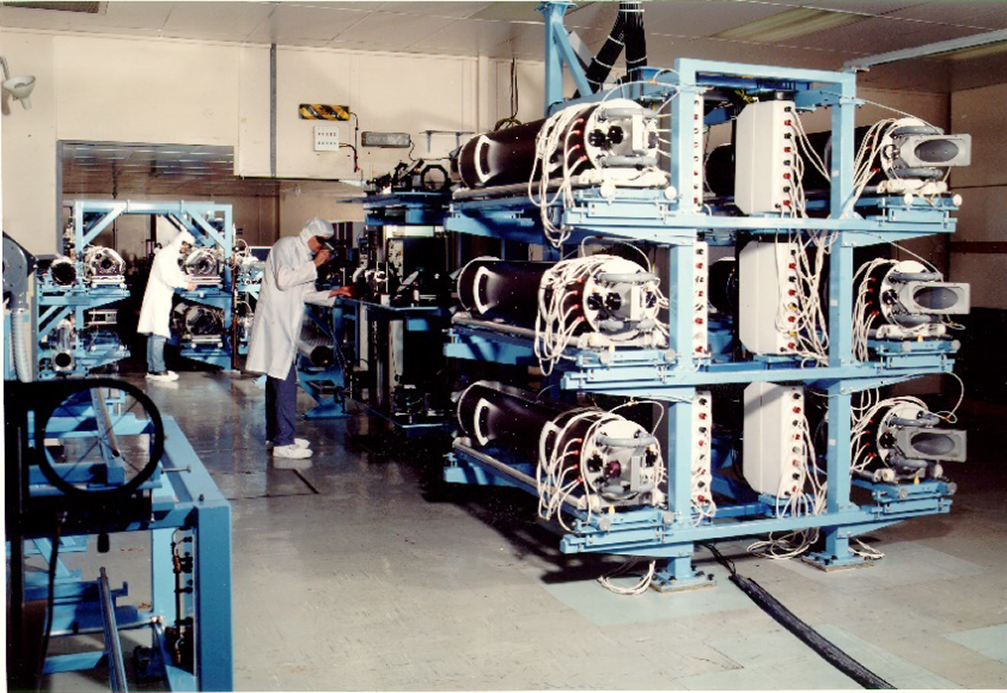
Figure 31 The VULCAN laser hall showing the output disc amplifiers with Colin Danson, foreground, and Bob Bann carrying out final system alignment circa 1986. (Picture courtesy of STFC.)
This established the facility as world class, with researchers collaborating with the UK leads from around the world. The upgrade also saw the first of a number of building additions with two new target areas TAE (Target Area East) and TAW (Target Area West) coming on-line to exploit the increased capability. The six beams were also converted to green to reduce the fast-electron heating and improve the implosion performance of microspheres.
The laser system was completely rebuilt in 1988–1989 with in-house designed rod and disc amplifiers. The disc amplifiers had an improved box design, giving good beam quality whilst being able to fire every 20 minutes. The auxiliary backlighter beam was upgraded by being split into two parallel arms that boosted the total energy to 1 kJ, using two 15 cm aperture disc amplifiers of CLF box design.
The main research programmes on VULCAN at this time included: XUV and X-ray lasers; applications of laser-produced plasma sources; laser–plasma interactions and energy transport; laser compression and dense plasmas; and later ultra-high-power laser–plasma interactions.
The development of all the lasers within the CLF has largely been driven by the requirements of the user community. This is exemplified by the development of ultra-short pulse lasers, and in particular CPA on VULCAN. The initial driver for this development was for electron acceleration studies. VULCAN had been adapted to study the beat-wave electron acceleration technique through the mid-1980s[Reference Dangor, Afshar-Rad, Cole, Danson, Dymoke-Bradshaw, Dyson, Edwards, Evans, Garvey and Mitchell49], where two wavelengths were generated and amplified to interact in a pre-formed plasma. Alternative acceleration schemes started focussing on ultra-short pulse interactions following the concept of the laser wakefield acceleration scheme being proposed[Reference Tajima and Dawson273].
Work then started on providing VULCAN with ultra-short-pulse capability in the early 1990s. The CPA technique was invented in 1985 by Strickland and Mourou[Reference Strickland and Mourou50]. Its first implementation on VULCAN converted TAW into a single beam short pulse system with dedicated front end, initially home produced in collaboration with academia: Imperial College London, University of St Andrews and University of Southampton. The system commenced operations at 8 TW[Reference Danson, Barzanti, Chang, Damerell, Edwards, Hancock, Hutchinson, Key, Luan, Mahadeo, Mercer, Norreys, Pepler, Rodkiss, Ross, Smith, Smith, Taday, Toner, Wigmore, Winstone, Wyatt and Zhou274] as the pulse duration was limited to >2 ps, but gradually the system was upgraded generating 40 TW and ultimately 100 TW[Reference Danson, Collier, Barzanti, Damerell, Edwards, Hutchinson, Key, Neely, Norreys, Pepler, Ross, Taday, Trentleman, Walsh, Winstone and Wyatt275]. One unique feature of the system was a single passed grating compressor, with the first grating in air, largely driven by cost issues. The system worked well and produced a wealth of pioneering publications in laser–plasma interactions[Reference Norreys, Zepf, Moustaizis, Fews, Zhang, Lee, Bakarezos, Danson, Dyson, Gibbon, Loukakos, Neely, Walsh, Wark and Dangor22, Reference Bell, Beg, Chang, Dangor, Danson, Edwards, Fews, Hutchinson, Luan, Lee, Norreys, Smith, Taday and Zhou61, Reference Modena, Najmudin, Dangor, Clayton, Marsh, Joshi, Malka, Darrow, Danson, Neely and Walsh62, Reference Fews, Norreys, Beg, Bell, Dangor, Danson, Lee and Rose276].
In 1996 the CLF developed the pioneering technique of OPCPA for use on high-power lasers. The initial concept was first demonstrated by Dubietis et al., at Vilnius University, Lithuania, in 1992[Reference Dubietis, Jonusauskas and Piskarskas277]. but the concept was first postulated for high-power applications within the CLF by Ian Ross et al. [Reference Ross, Matousek, Towrie, Langley and Collier278] for large-aperture systems, to generate powers in excess of 10 PW and focused intensities >1023 W·cm-2.
In this technique the frequency-doubled light from a high-energy Nd:glass laser facility is transferred to a chirped short-pulse laser via parametric amplification in typically BBO, LBO or KDP crystals, depending on beam aperture. The first terawatt OPCPA laser was demonstrated on VULCAN by Ross et al. in 2000[Reference Ross, Collier, Matousek, Danson, Neely, Allott, Pepler, Hernandez-Gomez and Osvay279]. The OPCPA technique is now recognized as the primary method of generating multi-petawatt laser systems and it has been implemented across the world.
VULCAN Petawatt[Reference Danson, Brummitt, Clarke, Collier, Fell, Frackiewicz, Hancock, Hawkes, Hernandez-Gomez, Holligan, Hutchinson, Kidd, Lester, Musgrave, Neely, Neville, Norreys, Pepler, Reason, Shaikh, Winstone, Wyatt and Wyborn280] came on-line in 2003 operating to a separate target area with high-energy petawatt capability (500 J in 500 fs). The petawatt output compressor, in the newly constructed target area, is shown in Figure 32 during final commissioning. OPCPA was used, for the first time worldwide, as a front-end driver for the system[Reference Collier, Hernandez-Gomez, Ross, Matousek, Danson and Walczak281]. A later upgrade saw the addition of a synchronized single long-pulse beamline[Reference Musgrave, Boyle, Carroll, Clarke, Heathcote, Galimberti, Green, Neely, Notley, Parry, Shaikh, Winstone, Pepler, Kidd, Hernandez-Gomez and Collier282]. VULCAN Petawatt was recognized as the ‘highest intensity focused laser in the world’ by the Guinness Book of World Records in 2004[283] and was a scientific feature in the 2005 edition[284].
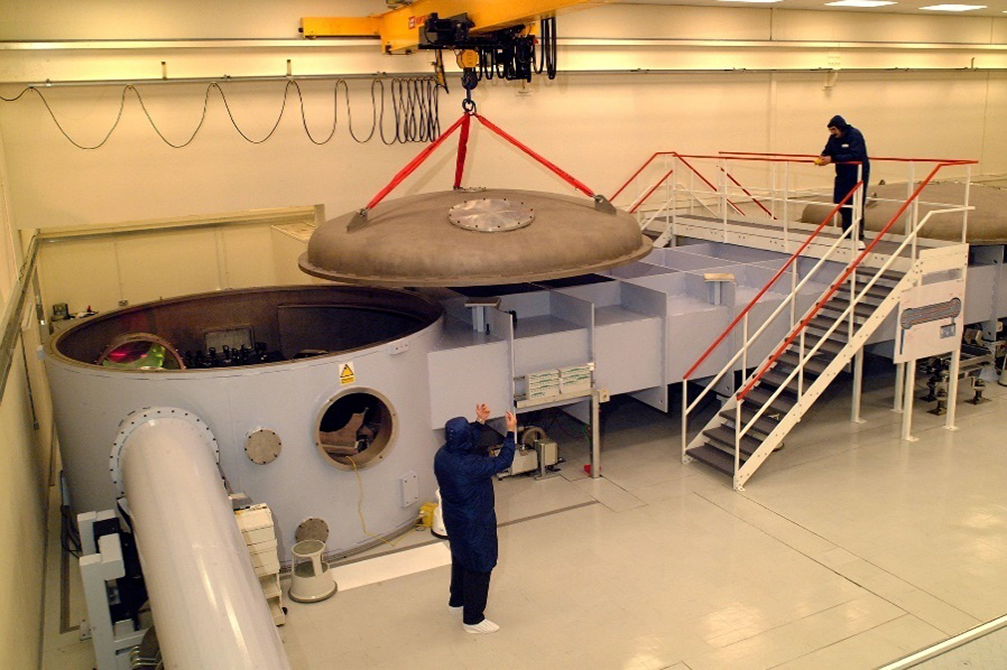
Figure 32 The VULCAN Petawatt target area during final commissioning with Andy Frackiewicz on the platform operating the crane and Trevor Winstone guiding from the ground in 2003. (Picture courtesy of STFC.)
Experimental breakthroughs on VULCAN were not only limited to ultra-short pulse interactions. In 2014, in a campaign led by Professor Gianluca Gregori, University of Oxford, VULCAN was used to simulate turbulent amplification of cosmological magnetic fields in laboratory experiments, creating conditions similar to those generated during the formation of galaxies. The experiment became one of the top-10 scientific breakthroughs of the year as listed by Physics World [Reference Meinecke, Doyle, Miniati, Bell, Bingham, Crowston, Drake, Fatenejad, Koenig, Kuramitsu, Kuranz, Lamb, Lee, MacDonald, Murphy, Park, Pelka, Ravasio, Sakawa, Schekochihin, Scopatz, Tzeferacos, Wan, Woolsey, Yurchak, Reville and Gregori285].
The VULCAN Petawatt target area is currently undergoing an upgrade with the addition of a petawatt-class OPCPA-based beamline delivering pulses with 30 J and 30 fs with a centre wavelength of 880 nm[Reference Musgrave, Blake, Boyle, Clarke, Collier, Galimberti, Hernandez-Gomez, Pepler, Oliviera, Shaikh, Winstone, Wyatt and Wyborn286]. A new laser area was created that housed a front-end based on a DPSSL-pumped picosecond OPCPA scheme, whereby the output from a Ti:sapphire oscillator is amplified to the millijoule level in LBO. These pulses are then stretched to 3 ns before undergoing further stages of amplification in LBO, the final stage employing one of the VULCAN long-pulse beamlines as a pump laser. The pulses are then compressed in the target area and focused into the same target chamber as the existing petawatt beamline.
The VULCAN 2020 upgrade project is a proposal to increase the peak power of VULCAN to 20 PW delivering 400 J in 20 fs, and to significantly enhance its long-pulse capability. This developed from an initial proposal for 10 PW operation[Reference Hernandez-Gomez, Blake, Chekhlov, Clarke, Dunne, Galimberti, Hancock, Heathcote, Holligan, Lyachev, Matousek, Musgrave, Neely, Norreys, Ross, Tang, Winstone, Wyborn and Collier287]. The facility would include a new target area for interactions at extremely high intensities. The peak power would be increased by the installation of an OPCPA beamline using DKDP crystals pumped by two dedicated 1.5 kJ Nd:glass lasers. The long-pulse provision would be increased by the use of additional 208 mm aperture Nd:glass amplifiers, increasing the output energy of each of the six long-pulse beams to ∼2 kJ per beam.
Lasers for science facility. The Ultra-Violet Radiation Facility (UVRF) began operations in April 1982, led by Fergus O’Neill, to establish programmes in photochemistry, photobiology, resonance Raman spectroscopy, physics and micromachining. The first operational laser was a commercial rare gas halide laser using KrF operating at 249 nm producing 1 J at 25 Hz. The first photobiology experiment used UV spectroscopy to obtain structural information of proteins and enzymes in solution. The UVRF became the Lasers Support Facility (LSF) in 1985, after user demand began to exceed available time. This incorporated various laboratories and introduced the LLP whereby universities could borrow lasers for use at their own institutes.
The LSF laboratories were initially intended for picosecond, nanosecond and X-ray research. The use and names of the laboratories changed significantly over the years as the programme of work altered. In the 1990s two new laboratories were added: the Femtosecond Laboratory (later moved building to become the Astra laser facility); and the X-ray Laboratory.
The LLP officially began on 1 May 1985. It was funded by EPSRC, operated a range of state-of-the-art excimer and dye lasers, and provided national support for a wide range of research programmes in chemistry, physics, life science, materials and engineering. The lasers were loaned to UK academics for use in their home institutions for periods of 3–6 months. By the time of its closure in 2016, the LLP had supported 76 departments in 49 institutes across the UK and Europe.
In 1995, the LSF was rebranded as the ‘Lasers for Science Facility’ to reflect its mission to enhance the use of lasers throughout all scientific disciplines. The LSF was then led by Dr. Tony Parker and continued in the role until 2011.
By 2003 the LSF comprised the world-leading Time Resolved Resonance Raman (TR3) Spectroscopy Facility[Reference Kwok, Ma, Matousek, Parker, Phillips, Toner, Towrie and Umapathy288], the Picosecond Infra-Red Absorption and Transient Excitation (PIRATE) project[Reference Towrie, Grills, Dyer, Weinstein, Matousek, Barton, Bailey, Subramaniam, Kwok, Ma, Phillips, Parker and George289], the Laser Microscopy Laboratory, the Laser Tweezers Facility[Reference Aveyard, Binks, Clint, Fletcher, Paunov, Annesley, Botchway, Parker, Ward and Burgess290] and the LLP. The PIRATE laser was funded in 1999, by the EPSRC, to revolutionize tunable lasers for studying chemical and biological events on the picosecond time scale and is shown in Figure 33 being adjusted by Mike Towrie.

Figure 33 Mike Towrie lining-up PIRATE in 2000. (Picture courtesy of STFC.)
In 2005 the CLF developed and patented the technique spatially offset Raman spectroscopy (SORS) to look beneath the surface of a material to reveal its properties[Reference Matousek, Clark, Draper, Morris, Goodship, Everall, Towrie, Finney and Parker291].
The Artemis system, opened in 2008 under the leadership of Dr. Emma Springate, provides ultra-short pulses in the XUV through the process of laser–plasma HHG, for the study of electron dynamics and structure in materials, via techniques such as time-resolved photoemission spectroscopy.
In 2009 the Ultra laser system[Reference Greetham, Burgos, Cao, Clark, Codd, Farrow, George, Kogimtzis, Matousek, Parker, Pollard, Robinson, Xin and Towrie292] opened for users under the leadership of Professor Mike Towrie, developing on the technology used in the PIRATE laser system. This was funded by STFC and BBSRC, representing a change from a chemical focus to looking at more complex biological molecules, proteins and DNA, furthering the capability to study structure and function of molecules in the more biologically relevant solution phase.
In 2019 Artemis was upgraded with the addition of a 100 kHz IR OPCPA system and relocated to the Research Complex at Harwell (RCaH), in a joint project with the Ultra group. This opened up new opportunities in ultra-fast Raman and unique hybrid narrowband/broadband capabilities, such as surface sum frequency generation and multidimensional spectroscopy techniques. The Artemis system opened in 2008 providing ultra-short pulses in the XUV, allowing the creation of movies of electrons moving within molecules.
The Octopus system (Optics Clustered to OutPut Unique Solutions) opened in 2010 under the leadership of Professor Marisa Martin-Fernandez, providing a world-leading laser microscopy imaging facility focusing on bioscience, giving access to a wide range of multicolour laser-light sources giving unprecedented flexibility to combine multiple beams, multiple colours and timing capabilities.
In 2010/2011 the LSF moved into purpose-built facilities in the newly established RCaH, encouraging cross-disciplinary research.
The Astra/Gemini titanium sapphire laser facility. Astra was an ultra-short-pulse CPA laser using titanium-doped sapphire (Ti:sapphire) as its gain medium operating at 800 nm. It was built to take advantage of the CPA technique and to ensure that CLF was at the forefront of short-pulse plasma physics. It started operations in 1997. Ti:sapphire, with its extremely broad bandwidth, can produce pulses of duration <30 fs, a factor of 10 shorter than Nd:glass. Thus, although it cannot produce the same energies as Nd:glass, it can produce equivalent or even greater power and, hence, intensities onto a target.
Two target areas were in operation: one used for experiments on photo-physics and photo-chemistry, and the other for generating high harmonics and experiments on electron acceleration.
In 2004 an international team, led by researchers from Imperial College London, conducted a landmark experiment using Astra to demonstrate the world’s first ever monoenergetic, high-quality electron beam from a laser interaction in a gas jet. The team, led by Stuart Mangles, are shown during the campaign in Figure 34. The results were published in Nature, and appeared as a front cover feature, under the heading ‘Dream beam’[Reference Mangles, Murphy, Najmudin, Thomas, Collier, Dangor, Divall, Foster, Gallacher, Hooker, Jaroszynski, Langley, Mori, Norreys, Tsung, Viskup, Walton and Krushelnick82].
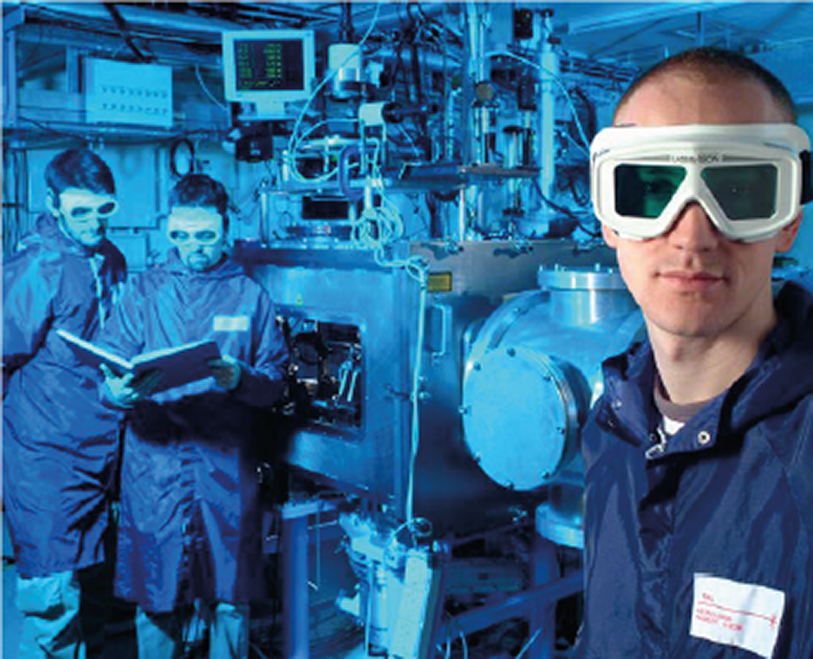
Figure 34 Alec Thomas, Chris Murphy and Stuart Mangles (foreground), experimental lead, in Astra Target Area 2 during the monoenergetic electron beam experiment in 2004. (Picture courtesy of STFC.)
Following a three-year programme of construction, in 2007 Astra was upgraded to become the front-end of Gemini[Reference Hooker, Collier, Chekhlov, Clarke, Divall, Ertel, Foster, Hancock, Hawkes, Holligan, Langley, Lester, Neely, Parry and Wyborn293]. The building in which Astra was housed required modification to accommodate a new target area (TA3) and associated control room, a new laser area (LA3) directly above the TA3 bunker, and to convert the old Titania Target Area Control Room into what is now the Services Area.
Gemini, which opened to users in 2013 under the leadership of Dr. Rajeev Pattathil, has two ultra-high-power beamlines, each delivering 15 J in 30 fs pulses at 800 nm, giving 500 TW beams to target, generating focused intensities >1021 W·cm–2. Routine high-contrast operation can be achieved with the use of a double plasma mirror assembly within the target chamber.
The Centre for Advanced Laser Technology. In 2011, the Centre for Advanced Laser Technology and Applications (CALTA) was created, led by Chris Edwards, to deliver societal, scientific and economic impact from developments in the CLF, principally through development of the CLF’s DiPOLE laser architecture. DiPOLE is a diode-pumped, solid-state laser system delivering high energy, high repetition rate with high wall-plug efficiency. This established and proven concept is based on a cryogenically cooled multi-slab amplifier head operating at 140 K.
DiPOLE laser technology development started in 2012 with the production of a prototype laser designed to operate at 10 Hz pulse repetition rate, generating 10.8 J of energy in a 10 ns pulse at 1029.5 nm. The system was pumped by 48 J of diode energy at 940 nm, corresponding to an optical-to-optical conversion efficiency of 22.5%. The DiPOLE concept was applied to a two-amplifier head design, resulting in 100 J of laser radiation within a 10 ns pulse at a 10 Hz repetition rate, in a design known as D100.
The first laser was delivered to HiLASE, Dolni Brezany, Czech Republic, in 2014[Reference Mason, Divoký, Ertel, Pilař, Butcher, Hanuš, Banerjee, Phillips, Smith, De Vido, Lucianetti, Hernandez-Gomez, Mocek and Collier294]. A second laser is currently being commissioned at the Euro-XFEL facility, Hamburg, Germany[Reference Mason, Banerjee, Smith, Butcher, Phillips, Höppner, Möller, Ertel, De Vido, Hollingham, Norton, Tomlinson, Zata, Merchan, Hooker, Tyldesley, Toncian, Hernandez-Gomez, Edwards and Collier295]. Recent advances have demonstrated 150 J pulse energy output at 1 Hz[Reference Phillips, Banerjee, Ertel, Mason, Smith, Butcher, De Vido, Edwards, Hernandez-Gomez and Collier296], a world record for diode-pumped technology, and stable 10 Hz operation of 77% conversion efficiency for frequency doubling using a type-I phase-matched lithium triborate crystal[Reference Banerjee, Mason, Phillips, Smith, Butcher, Spear, De Vido, Quinn, Clarke, Ertel, Hernandez-Gomez, Edwards and Collier297].
The Extreme Photonics Applications Centre. In 2020 the CLF began construction of the Extreme Photonics Applications Centre (EPAC), under the leadership of EPAC Technical Director and CLF HPL division leader Cristina Hernandez-Gomez. The ground-breaking ceremony, held on 11 February 2020, was attended by Professor Donna Strickland, winner of the Nobel Prize in Physics 2018, and MP Chris Skidmore (then UK Government Science Minister). EPAC will enable experiments using a 10 Hz petawatt laser for academic, industry and security users and will impact on a wide range of research fields and industry sectors, from fundamental discovery science to inspection tools for high-value manufacturing.
The facility will use the CLF’s patented diode-pumped laser technology, DiPOLE, utilizing the D100 laser to pump a Ti:sapphire amplifier with an OPCPA front end, delivering 30 J in 30 fs at 10 Hz. EPAC will be an ecosystem for innovation by bringing together a diverse user community and delivering a wide range of capabilities, mainly exploiting the huge range of applications enabled by laser-driven plasma accelerators. The facility will enable rapid, high-resolution X-ray computed tomography imaging for advanced manufacturing industries and for biological, materials, environmental and cultural heritage communities, along with innovative inspection technologies for defence and advanced plasma-based accelerator physics concepts and experimental exploration of quantum electrodynamic phenomena.
3.2.3 CLF support facilities
As a facility provider for the UK and international plasma physics user community it is vital to provide comprehensive user support in all activities including travel and accommodation, experimental preparation, operational support and post experimental analysis. In this section, we highlight the support provided by the Target Fabrication, Plasma Physics and Engineering Groups.
Target Fabrication Group. From its early days in the 1970s the CLF had a Target Preparation Laboratory which produced the micro-targets required to support the experimental campaigns on its laser facilities. Back in the late 1970s to early 1980s, the majority of targets were spherical glass spheres, typically 70–100 μm in diameter with a glass wall thickness of about 1 μm. The spheres were individually selected and hand-mounted onto 4 μm carbon fibres which were bonded to pulled glass stalks attached to magnets, designed to be mated with the mounting system inside the target interaction chamber. Most were given a flash-coating of aluminium to aid alignment in the target chamber. Even in those early days, thin foil targets were in demand. Formvar and carbon thin-foil strips mounted on an angled brass holder were cut using a home-made CO2 laser housed in the Target Preparation Laboratory. Figure 35 shows the Micro-Assembly area of the Target Fabrication Laboratory in 1982.
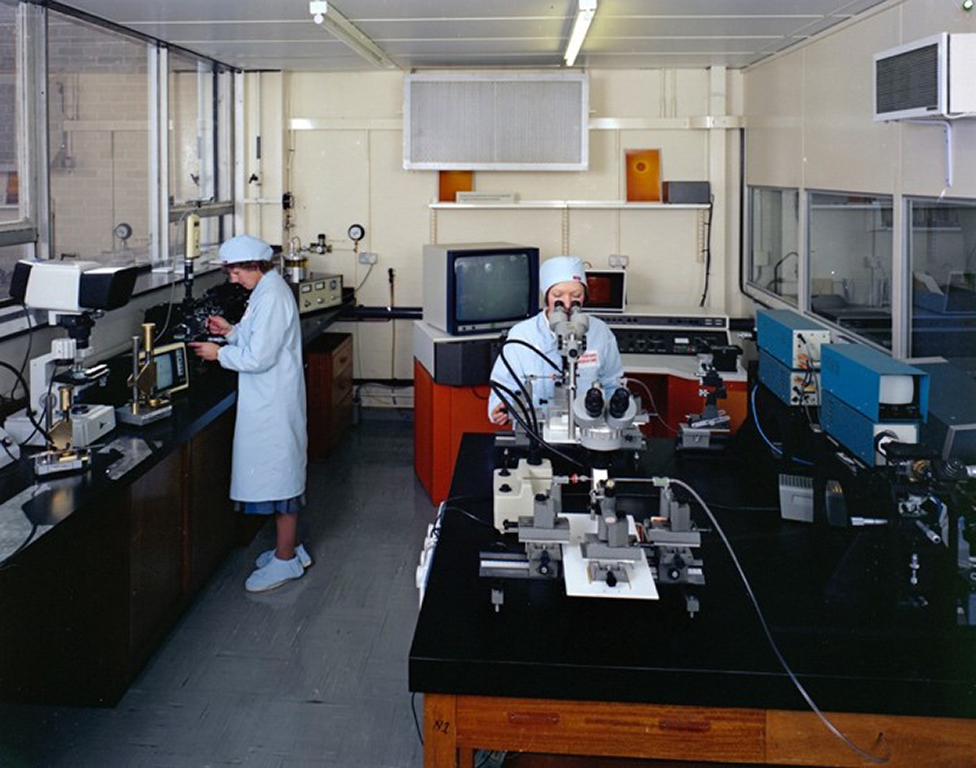
Figure 35 Beryl Child, standing, and Sarah Hallewell in the CLF’s Target Preparation Micro-Assembly Laboratory in 1982. (Picture courtesy of STFC.)
Deep UV (excimer laser) lithography and micromachining systems were developed at RAL in 1985–1996. The deep UV optics required for this were designed in-house and manufactured by UK optics companies such as IC Optical Systems Ltd (ICOS). Early work concentrated on deep UV lithography projection systems with reduction ratios of up to 10:1. Today laser micromachining, which can trace its path back to this early work, is an integral part of CLF’s Target Fabrication Group and is used every day for target-making as well as other micro-engineering applications.
The Target Fabrication Group’s capabilities were extended in 2008 and have recently been expanded again to house a state-of-the-art deep reactive ion etcher for MEMS (microelectromechanical systems) target fabrication, along with new laser micromachining laboratories which house femtosecond, nanosecond and excimer laser machining operated by the CLF’s spin-out company Scitech Precision Ltd.
The present-day CLF has a world-class Target Fabrication Laboratory capable of producing a huge variety of solid micro-targets. Micro-components are produced using a range of techniques such as micromachining, thin film coating and wafer-based manufacturing (to name but a few). These are then assembled, and micro-targets are measured using a range of high-accuracy techniques. Accurate metrology is critical to the understanding of the interaction physics on experiments. Scitech Precision Ltd supplies micro-targets commercially for use on many international laser facilities worldwide.
Plasma Physics Group. The Plasma Physics Group formally started in 2001 but grew out of the CLF Theory Group which had been in place since the founding of the CLF in support of the user community. The early group consisted of internationally renowned theorists in Tony Bell, Roger Evans and Dennis Nicholas; with Steve Rose joining in 1983. The group started a tradition of having a user meeting just before Christmas held at the Coserner’s House in Abingdon, Oxon. This initially small annual meeting has grown over the years to become the Christmas Meeting of the UK High Power Laser Community now attracting over 170 attendees from largely the UK plasma physics community.
Peter Norreys took over the reins of the newly formed Plasma Physics Group following the departure of Steve Rose in 2001. Alex Robinson joined in 2005 eventually taking over the leadership of the group in 2015. The group still exists to support the users of the CLF and to explore new avenues of research through its world-class theoretical and computational plasma physics research and simulations. The CLF has used the SCARF resource (an STFC high-performance computing cluster), and, over a number of years, has invested in a number of its own clusters that are part of the SCARF infrastructure, with the largest (to date) being SCARF-Derevolutionibus.
Engineering Division. The Engineering Division provides engineering support for experiments, from design and manufacture to safety systems and diagnostic development. The process starts with the experimental design team that lays out the experiment and designs any bespoke engineering components necessary to facilitate the experiment. The CLF mechanical workshop, CLF electrical workshop and target area technicians manufacture, assemble and install all aspects of the experiment in advance of the experiment’s allocated time slot. During the experiment, the whole team is on hand to deal with experimental changes and unexpected developments.
The engineering team operates across all of the CLF’s facilities and is responsible for ensuring the safe operation of systems required for all laser areas, target areas and R&D labs. The CLF interlock systems ensure the safety of CLF staff and visiting scientists by controlling access to areas and the operation of lasers and shutters. The engineering team installs and maintains all the services required, including the vacuum systems, gas delivery, cooling water, gas detection, power supplies, drive system, control system and communication. They also support and develop the mechanical and electrical systems for all areas to improve the capability and efficiency of the whole facility. These development projects range from developing new diagnostics to setting up new development laboratories.
3.2.4 Other CLF programmes
European Laser Facility. In 1989 the CLF proposed the construction of a 100 kJ European Laser Facility (ELF). The facility was based on either the Nd:glass or KrF technologies being developed at the CLF. The more than £100 million estimated cost was, in the case of KrF[298], an extrapolation from where the CLF development had reached. For Nd:glass[299] the estimate was based on the project costs of relevant international facilities, including the Omega and NOVA facilities in the USA and the Gekko XII facility in Japan. Unfortunately, the proposal did not go forward, but the programme developed in-house expertise in the design and costing of much larger systems, essential for what was to come, and gave further international credibility to the CLF.
Laserlab-Europe. The CLF has been one of the leading laser laboratories in Europe engaging with the EU through its mobility and access programmes. This began in the 1980s, initially with a pilot programme in the FP2 (Framework Programme), and then individual contracts under FP3 and FP4 (the Framework Programmes were each four-year research and development mobility initiatives). This enabled numerous research groups from across Europe to access the facilities at the CLF, including VULCAN, Astra and the Lasers for Science Facility. These access experiments were not only of benefit to the visiting scientists but quickly established collaborations with both groups in UK universities and researchers at the CLF.
The EU introduced a more coordinated approach under FP5 in 2001 with the establishment of LASERNET. This was a management consortium of all the laser facility access providers across Europe, while still maintaining individual contracts with each facility. As the largest provider of access to its lasers, the CLF was able to take a leading role in the development of the consortium. This was important as in the next phase, during FP6 the EU established I3s (Integrated Infrastructure Initiatives), resulting in a single access contract with all LASERNET partners. Laserlab-Europe[261] was therefore established in 2004 with 17 infrastructures from nine countries. Under these new arrangements the research portfolio increased to not only cover access but joint research activities (JRAs) and training.
For over 30 years there have been EU funded access arrangements to the CLF facilities for European researchers. This initiated many of the individual collaborations which would last, in many cases, a lifetime. The relationships developed between the CLF and its European researchers also gave rise to their participation in its annual meetings and provided an opportunity for European members of the CLF experimental selection panels. This has partly been responsible for developing an integrated European research community amongst the users of its laser facilities with numerous joint initiatives outside of EU funding.
Announced in 2019, the EU is funding an unprecedented fifth phase of the Laserlab-Europe contract. The initiative has significantly grown and now has 35 partners from 18 member countries, including the UK’s University of Strathclyde and Orion at AWE as members/associate members. It provides the access, networking and training opportunities, to plasma physicists as well as biologists, chemists and material scientists, treating lasers in a very similar way to any other conventional beamline user facility, such as synchrotrons or particle accelerators.
The High Power Laser Energy Research Facility. The High Power Laser Energy Research Facility (HiPER)[300] was a pan-European research project co-ordinated from the UK by the CLF. The initial idea came from the CLF’s Peter Norreys and championed by the then CLF Director, Henry Hutchinson. The project was then coordinated by the new CLF Director Mike Dunne and managed by Chris Edwards. HiPER brought together 26 partners from 10 EU countries to demonstrate the technical and economic viability of laser fusion for the production of energy. The project was accepted on to the EU ESFRI (European Strategy Forum on Research Infrastructures)[301] Large Scale Facilities Roadmap in January 2007. At the time it was believed that NIF[302] would demonstrate ignition in a laser-driven fuel pellet in 2010. HiPER was designed to move forward from this landmark demonstration. In an initial three-year preparatory phase funded by the EU the project studied the feasibility of laser-driven fusion, looking at ignition schemes, laser development, diagnostics and target design. A conceptual artists impression of the HiPER facility is shown in Figure 36. Following the issues with NIF the project eventually came to an end in 2015 following the last dedicated SPIE workshop in Prague. The HiPER project provided a unifying force for the laser, theoretical plasma and experimental plasma physics communities leaving a lasting legacy for the project.
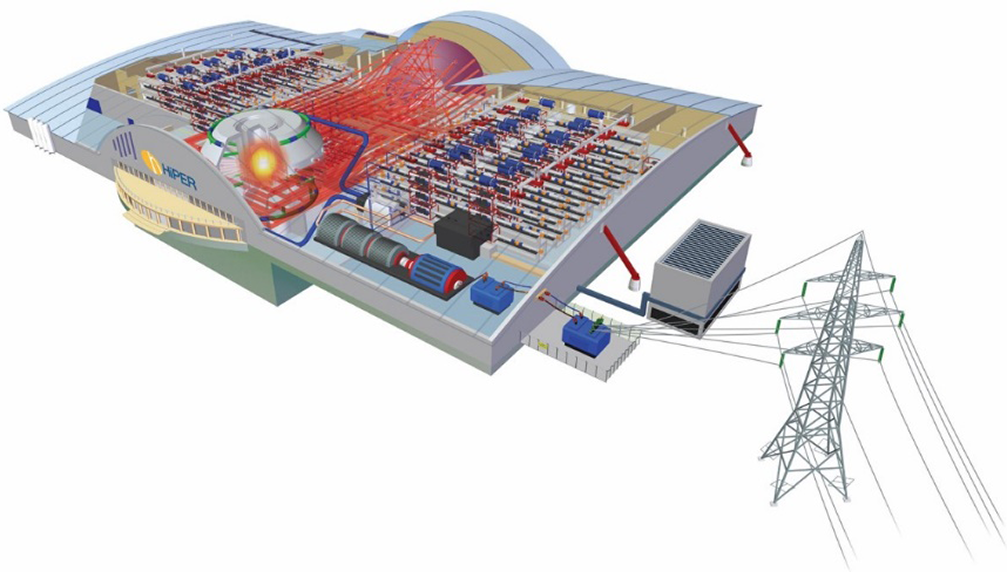
Figure 36 Artists impression of the High Power Laser Energy Research Facility – HiPER. (Picture courtesy of STFC.)
3.2.5 CLF spin-out companies
An important aspect of the CLF’s work has been its contribution to the UK economy through the establishment of spin-out companies exploiting its developments. The following companies established themselves in the marketplace.
• Exitech was the first company to spin out of the CLF in 1984 to manufacture specialized laser micromachining systems. It grew quickly and established itself as an important supplier of these systems.
• Colsicoat Ltd established in the mid-1980s specializing in optical coatings and phase plates for focal spot smoothing techniques.
• Oxford Framestores developed image-capture technology.
• LaserThor was spun out of the CLF in 1999 in conjunction with the rail industry to provide a high-tech approach to the cleaning of railway tracks.
• L3 Technology Ltd in 2001 to develop medical applications for an optical spectroscopic technique that can be used to tell good cholesterol from bad.
• Cobalt Light Systems spun out in 2006 to find new applications for SORS, developing scanners and explosive detection at airports and product lines for the pharmaceutical industry. It was acquired by Agilent Technologies in 2017, now operating as part of Agilent’s global centre for Raman spectroscopy, located on Harwell Campus.
• Scitech Precision was formed in 2009 supplying bespoke micro-targets for high-energy/power laser facilities globally.
3.2.6 Summary of activities at the CLF
The CLF was established to provide a centralized large-scale laser facility for laser–plasma interaction research. This remit has significantly broadened through its history to provide facilities covering photochemistry, photobiology and micromachining. It has always been at the leading edge of facility provision and development, with its experimental programmes gaining international recognition. It has been highly proactive, working with its university partners, industry and the international community. Through spin-out companies and the work of CALTA the CLF has also made significant contributions to the UK economy.
3.3 AWRE/AWE Aldermaston
3.3.1 The early years
Laser development began at AWRE (later to be shortened to AWE) Aldermaston in 1962[Reference Hunt303, Reference Flynn304]. A High Power Laser Group was set-up led by Richard Fitch, an expert in pulsed power. Although there was no immediate goal, it was thought that developing devices which could generate high power would have some relevance to the AWRE programme. An Applied Optics Group under Ken Coleman was tasked with investigating some of the special properties of laser radiation. The operation of a ruby laser was soon realized with a technique, exploited by the group, using a rotating mirror to produce Q-switching, multi-nanosecond giant pulse operation. AWRE had developed an ultra-fast camera using a high-speed rotating mirror and using it in the laser became an early success in the programme. Also at this time, the Analysis Section was using a ruby laser for vaporizing samples for analysis.
It was clear at an early stage that the construction of large lasers using ruby would have severe technological limitations. Fortunately, in 1961, laser action was discovered in neodymium-doped glass by E. Snitzer, Hughes Research Laboratories[Reference Snitzer305]. A number of companies, including Chance-Pilkington in the UK, were able to produce high-quality doped glass. This was to become an important development in the construction of high-power lasers.
This was an exciting time in the laboratory with many of the necessary technologies (glass blowing, high-voltage capacitors, flashlamps, etc.) being close at hand. Several different types of gas laser were constructed (argon, nitrogen, carbon dioxide) as well as liquid lasers (selenium oxychloride and a rhodamine 6G dye laser). Using the technique called ‘mode-locking’[Reference Hargrove, Fork and Pollack306], the generation of picosecond laser pulses was also achieved. The first demonstration of a laser-triggered spark gap was made at AWRE.
Using entirely theoretical criteria, Ron Wilson (AWRE) proposed a mercury laser operating at 546 nm. Although a laser was constructed at AWRE it was left to a US laboratory to make the system operational. In 1963, a CO high-repetition-rate laser was constructed giving an output at 607 nm and operated at 50 Hz. In parallel with this experimental work, computer techniques were being developed to understand laser behaviour and to predict performance. In 1973, an internal paper was published ‘Simulation of laser action and iterative solution of laser problems using a computer’[Reference Hunt307]. The use of similar programs became vital in the development of high-power lasers.
An unusual type of laser was discovered by David Hunt. It was a laser that used the nitrogen and carbon dioxide in human breath to operate[Reference Hunt308]. Colloquially it was called the ‘breathalaser’ and is shown in Figure 37 being optimized by David Hunt. It was demonstrated in a television programme called The Frontiers of Science in 1969. The compere was Professor Oliver Heavens (University of York) and it was his breath that was used in the demonstration.

Figure 37 Dave Hunt with the ‘breathalaser’. (Picture courtesy of AWE.)
In the Applied Optics Group, Mike Wall, John Turpin and Ivor Pearce used lasers for applications in holography and interferometry. One of their first applications was pressure vessel testing, observing the deformations on the vessel during operations.
There were a number of industrial collaborations in these early days: with the National Physical Laboratory (NPL; Ian Ross et al., who soon moved to the CLF); Pockels cell development with EOD Ltd; transfer of flashlamp technology from AWRE to Noblelight; and image converter cameras commercialized by Hadland (later Hadland Photonics). In the mid-1960s AWRE aided Culham in the construction of a 1 GW, 10 ns ruby laser for plasma diagnostics.
In 1965 all laser work at AWRE was transferred to a single building. This included development of a 1 kJ Nd:glass laser with a pulse width of 6 ms. This was the highest-energy laser in the UK at the time. Development also started on CO2 gas lasers in the mid-1960s, with a 5 W system built.
Following a revision of work at AWRE in 1965, a diversification programme was initiated. This was a conscious national effort by the UK Government’s Ministry of Technology, under Anthony Wedgwood Benn, to bring the resources and expertise of the aerospace and nuclear industries to bear on the civilian economy. It was thought that the national R&D effort had been too closely focused on defence, and the rest of the economy needed a kick-start, so the whole programme had top-level political support and related to Harold Wilson’s ‘white heat’ revolution. It was therefore a vote of confidence in AWRE’s scientific excellence. The opportunity was taken to look at medical applications of lasers including clearing atheroma deposits in arteries, cutting heart tissue and drilling holes in teeth.
Ken Coleman took over group when Fitch left to go to the US. In 1968, high-power laser research stopped at AWRE Aldermaston as it was believed there was a lack of relevance to the core programme. The high-power Nd:glass laser was transferred to Foulness, Essex, at that time part of AWRE, where Peter King and Hugh McPherson were responsible for its operation and development. The laser initially produced an output of 1 GW and was later developed to produce 10 GW.
In 1970 AWRE set up the Laser-Fusion Study Group under Alan Fraser to coordinate theoretical and experimental work on lasers to initiate fusion reactions. A two-year programme was established at AWRE to identify the most promising laser for fusion research. On 9 May 1972, at the 7th International Quantum Electronics Conference in Montreal, Dr. Edward Teller disclosed for the first time the previously classified work on laser fusion taking place at the Lawrence Livermore Laboratory[Reference Teller309]. Later that year John Nuckolls et al., from Livermore, published this work in the open literature[Reference Nuckolls, Wood, Thiessen and Zimmerman310]. This changed the whole dynamic of how, and with whom, discussions on fusion could happen.
3.3.2 Early 1970s: AWRE’s three-pronged approach
The importance of laser-driven indirect drive for HEDP experiments was recognized at AWRE in 1971[Reference Thomas311]. The paper describes how experiments on high-power laser systems can be used to measure less well-understood aspects of radiation hydrodynamics and material properties. Hence, many of the techniques used for HEDP relevant to stockpile stewardship were largely developed at AWRE/AWE by Brian Thomas et al. for the study of materials in extreme conditions. This was reinforced as the world moved towards the era of the Comprehensive Test Ban Treaty (CTBT).
The continued investment in high-power lasers was justified as part of the UK’s commitment to be a responsible nuclear weapons state, continuing safety and stockpile stewardship. There was an awareness in the US of lasers being used for stockpile stewardship but their programme through the 1970s and 1980s concentrated on the fusion aspect of laser interactions. There was therefore a requirement for AWRE to have its own large-scale laser capability and so it developed a three-pronged approach to finding a suitable laser, with CO2 and Nd:glass laser development in-house, and iodine laser development under contract at the University of Manchester.
The AWRE was transferred to the MoD in 1973, and later merged with the Directorate of Atomic Weapons Factories (Royal Ordnance Factories (ROF)) at Burghfield and Cardiff to form the Atomic Weapons Establishment (AWE) on 1 September 1987.
Carbon dioxide laser. CO2 lasers are electrically discharged pumped gas lasers delivering pulses at a wavelength of 10.6 μm. One of the main advantages of these lasers is their relatively high efficiencies, of several per cent.
With many years’ experience of AWRE developing CO2 lasers at beginning of 1974 they constructed a 200 MW CO2 system (10 J in 80 ns). This was operated by Frank Morgan and used for laser plasma experiments led by Brian Thomas, primarily foil studies, relevant to the behaviour of thin fusion shell targets during compression and the development of instabilities.
A second CO2 laser with output of 1 GW (specified at 1 J in 1 ns) was designed and commissioned in 1975, led by Peter Blyth and later aided by David Hull. This was a master oscillator power amplifier (MOPA) design with a well-defined low-energy pulse generated in an oscillator and amplified in a series of four amplifiers. The system’s detailed operational parameters were characterized, and it demonstrated performance of ~1.5 GW at both 1 and 20 ns[Reference Hull and Blyth312].
At this time, there were no central laser facilities available to the academic user community. One of its most senior members, Professor Malcolm Haines, Imperial College London, requested time on the AWRE lasers, which led to Joe Kilkenny and PhD student Malcolm White performing interaction experiments on the 1 GW system in 1975. The laser was reconfigured with an AWE designed laser-triggered spark gap and a Pockels cell switch which would allow synchronization of the CO2 laser to a Q-switched diagnostic ruby laser. The campaign led to high-level publication in Physical Review Letters by Gray et al. in 1977[Reference Gray, Kilkenny, White, Blyth and Hull313].
Following developments at Los Alamos, there was a project to build a much larger CO2 laser amplifier which would be e-beam pumped to boost the output of the laser to 50 J. An initial design was developed and commissioned by Ted Thornton, Terry Taylor and Steve Davidson, although technical issues limited its effectiveness. An alternative amplifier was designed and built by Peter Blyth working with Charlie Martin; affectionally known as the ‘father of pulsed power’[314]. The amplifier with an aperture of ~20 cm worked extremely well, but was never fully integrated into the laser.
Iodine laser. An iodine laser is a flashlamp-pumped gas laser operating at an output wavelength of 1.315 μm. For AWRE’s programme, the iodine laser development was contracted out to the University of Manchester under the stewardship of Professor Terry King. A system was constructed delivering 30 J in 1 ns. The work proved very productive with over 50 journal papers published; see, for example, Ref. [Reference Baker and King315].
The leaders in the field at this time were the group at Garching, Germany, who developed the Asterix III laser which was producing 300 J in 1 ns; Asterix was later transferred to Prague to become PALS (Prague Asterix Laser System)[Reference Rus, Rohlena, Skála, Králiková, Jungwirth, Ullschmied, Witte and Baumhacker316]. This gave confidence on the scaling of these systems and the Manchester group designed an iodine system to deliver 1 kJ in 100 ps (10 TW)[Reference Baker and King317]. This was much higher than the value that could be delivered by Nd:glass at the time, but demonstration of shorter pulses had not happened in Manchester at this point.
Nd:glass laser. The well-established Nd:glass laser at Foulness was moved back to AWRE in 1972. Hugh McPherson and Peter King came from Foulness to help set it up in the tunnel in building N78 (known as the N78 laser). The group expanded with Edward (Ted) Thornton, a pulsed power engineer. When Hugh and Peter returned to Foulness Robin Pitman took over the laser joined by laser scientists Clive Ireland, Tom Bett and later Peter Blyth. The system eventually became known as MERLIN.
The laser was a seven-stage Nd:glass laser system with initially a final rod amplifier diameter of 64 mm. There were no spatial filters at that time: the beam simply expanded from a pinhole through a series of rod amplifiers of increasing aperture: 10, 16, 23, 32, 45, and 64 mm. The system was designed to operate at output levels up to 100 GW with a pulse duration of 1 ns or 25–100 ps duration from a mode-locked Nd:YAG oscillator. One unique feature of the laser was a superconducting magnet Faraday rotator generating a DC field of ~4 T with an aperture of 45 mm developed by Thor Cryogenics, Oxford.
The laser was first used for experiments in 1975 operating at 10 GW (40 J in 1 ns) by Frank Morgan and David Hull, pioneering new techniques for equation of state measurements. The MERLIN target chamber is shown in Figure 38. The system realized its full design performance of 100 GW in the following year. The final amplifiers suffered from filamentation as non-linear effects were only just being discovered at that time, and therefore a 90 mm rod was added to reduce the peak fluence[Reference Bett, Flynn, Ireland and Pitman318].
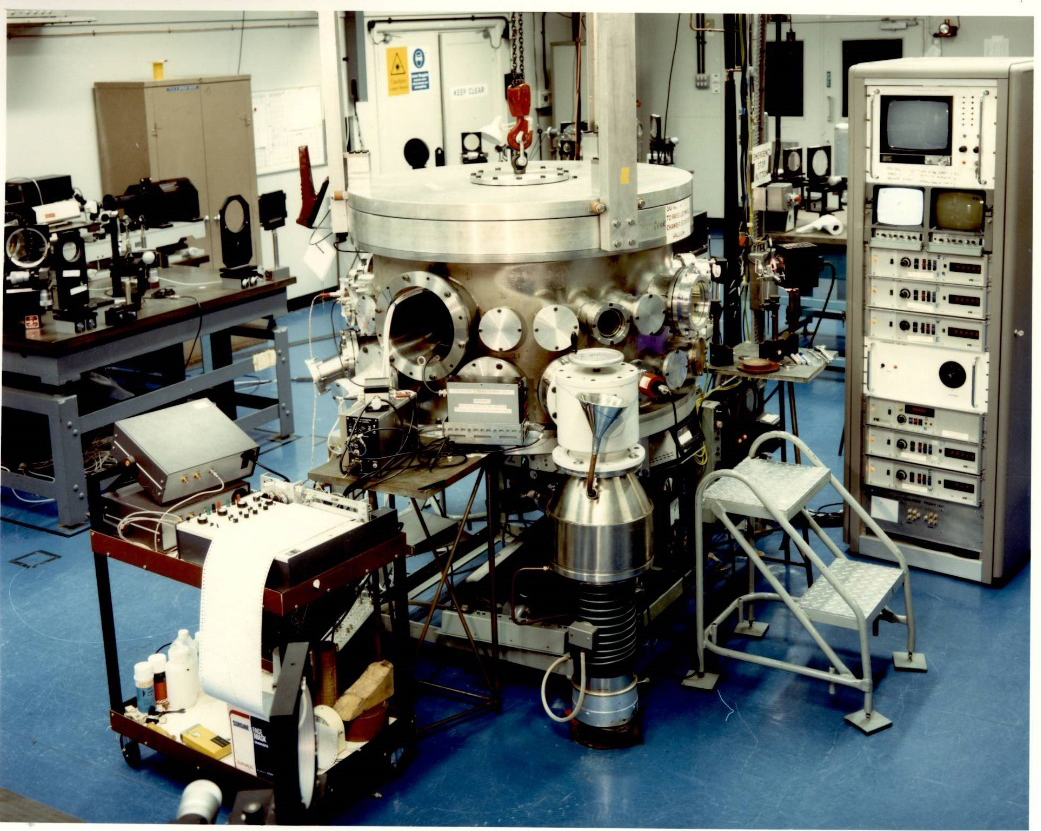
Figure 38 The MERLIN target chamber. (Photo courtesy of AWE.)
Choosing the way forward. In the mid-1970s the Superintendent for Fusion and Optics (SFO) evaluated what would be required from a future laser system. It was decided that a new larger laser would be required in late 1970s with an estimation that 10 times more energy/power would be needed, i.e., a 1 TW system. Tom Bett[Reference Bett319] assessed the suitability of all potential laser systems for laser fusion including excimer, gas, molecular, solid-state, liquid and dye lasers. The conclusion was that the only realistic candidates for fusion were Nd:glass, pulsed CO2 and the iodine gas laser, consistent with AWRE’s three-pronged programme which was already in place.
An SFO team was tasked with identifying how the higher-power laser requirements could be met. The team of McCormick, Hunt, Turpin and Bett, held discussions with the US laboratories and with the broader community at the 10th and 11th European Conferences on Laser Interaction with Matter held in 1976 in Palaiseau, France, and in 1977 in Oxford, UK, respectively. The SFO was soon to be split into two to become the Superintendent Laser Facilities (SLF) under Pat Flynn and the Superintendent Plasma Experiments (SPE) under Norman Daly.
There was a very active programme on CO2 development at Los Alamos with a system designed to deliver 2.5 kJ in 1 ns from two beams. A separate system delivering 250 J was already operational. Flynn et al. [Reference Flynn, Hunt and McCormick320] identified that although CO2 systems had higher efficiencies, the longer wavelength would be an issue in target interactions. Thus, even though CO2 was the more advanced programme at AWRE, the decision was made to concentrate on the shorter-wavelength options of both iodine and Nd:glass.
The iodine laser was identified as a viable larger-scale facility but there were still some unresolved design issues, including sub-nanosecond operation. If these could be resolved it was seen as a faster route to a 10 TW, cost-effective laser system.
The largest Nd:glass laser being developed at the time was the 10 kJ, 500 ps Shiva multi-beam system at Lawrence Livermore Laboratory. A 270 J laser, Cyclops, at <200 ps was already operational. The advantage of Nd:glass was that it was an energy storage medium and it could be scaled up to large aperture with good optical quality. The technical risk was low because the technology was well advanced, as demonstrated by the existing facilities. Livermore also prepared to allow AWRE access to its laser component designs[Reference Flynn, Hunt and McCormick320]. It was therefore decided to proceed with the Nd:glass option and curtail the iodine programme.
3.3.3 The HELEN laser facility
The new laser facility, later to be called HELEN, was specified as a 1 TW two-beam Nd:glass laser. The energy specification of 500 J per beam would require the use of disc amplifiers, as developed in the USA for use in the Shiva laser facility that was under construction at the Lawrence Livermore Laboratory. It would be impractical for AWRE to design their own disc amplifiers, but there were restrictions on information exchange directly from LLNL. There were two possible ways forward: the supply of custom amplifiers from General Electric; or using those of Livermore design using a private company, ILC (International Lamp Corporation), as a subcontractor. General Electric had delivered disc amplifiers to KMS Fusion, USA, and CILAS, France, for use in their laser systems, but at the time they were untested. Their amplifiers were of lower gain than that of the Livermore design, which was an important consideration, and hence the only viable option was to go with ILC. A contract was therefore placed with them in 1977 to construct a two-beamline facility to an AWRE design, initially called the AFL-1 laser (Aldermaston Fusion Laser).
The transfer of information to ILC went well, and the delivery and installation of the components to AWRE started in 1978 but, there were many details of the Shiva components and design that were not captured in the drawings. The contract with ILC stipulated that it was their responsibility to commission HELEN to low-power operation, but it soon became very clear that this small company was not going to be able to build and install the major laser components for HELEN without assistance. In early 1979, Livermore was given permission by DoE/DoD to send personnel to assist ILC. Two senior LLNL staff, Bill Martin and Larry Berkbigler were seconded to AWRE for six weeks in early May 1979. Bill had experience of the development of Shiva’s front-end systems and amplifiers. In addition, the AWRE laser team were also allowed to get involved, with Ivor Pearce looking after the front-end oscillator, Robin Pitman for system alignment and Peter Blyth for beam characterization and laser diagnostics.
In 1978 it was announced that Her Majesty the Queen would visit AWRE to open the new laser facility and to recognize the 21st anniversary of the 1958 defence agreement between the USA and UK. The Queen and Duke of Edinburgh visited on 29 June 1979 to formally open HELEN. A remote-control room was set up to initiate a firing of the laser by the Queen. TV images from the HELEN control room were relayed to this ceremonial area. AWRE and Livermore staff worked very long hours and succeeded in getting HELEN to work end to end on several occasions and one of these was a successful commissioning target shot that was captured on video. As it happened, due to a fault with HELEN, instead of the live pictures being used during the ceremony this video back-up had to be deployed to save the day. Thus, when the Queen pressed the button, the video was played. The Queen and Duke of Edinburgh had a tour of the HELEN laser, as shown in Figure 39 in the Target Hall with John Weale, Head of the Radiation Physics Department. The Queen was then presented with an encapsulated laser amplifier rod.

Figure 39 Queen Elizabeth II is shown the HELEN target chamber by John Weale, Head of Radiation Physics Department, to mark the formal opening of the facility in 1979. (Picture courtesy of AWE.)
Following the departures of Robin Pitman, Clive Ireland and Peter Blyth, Colin Danson joined the group in 1980 fresh from an undergraduate Physics degree at Nottingham University. There was a steep learning curve for the newly assembled young team since they had no hands-on experience with the electronics or optics of the laser system. The HELEN Laser Hall is pictured during commissioning in Figure 40. The early section of the laser was redesigned by Clive Ireland of AWE. Bill Martin, one of the Livermore scientists, returned to assist the group and the laser was eventually made operational. Electrical interference caused by an earth loop had been a major stumbling block to commissioning efforts. Target shots to support AWE’s experimental programme were first time in 1981. At this time HELEN operated with pulse lengths of 100–300 ps, delivering 100–200 J per beam at 1064 nm.

Figure 40 The HELEN laser during commissioning. (Picture courtesy of AWE.)
Electrical noise problems were largely solved by moving the pulse generation system to a separate dedicated area in 1983–1984, plus an upgrading of the control electronics. Around the same time, harmonic conversion in KDP of the beam outputs (from 1064 to 532 nm) was implemented. The ~30% reduction in delivered energy was more than offset by increased absorption at the target. The next significant enhancement in 1989–1990 involved the conversion from Nd:silicate to Nd:phosphate glass, increasing of the main beam aperture from 200 to 300 mm and increasing of the nominal output to 500 J in 1 ns at 527 nm. A couple of years later a third ‘backlighter’ beamline providing 100 J in 100 ps, fed by a separate synchronized oscillator, was also commissioned. It was realized that X-ray backlighting was a powerful diagnostic tool that required a main interaction beam onto the target and a separate beam to a second target generating a synchronized X-ray source. Figure 41 shows a photograph of the HELEN Target Hall under self-illumination from the scattered laser light following frequency conversion of the laser beams to the green (527 nm).

Figure 41 The HELEN target area with self-illumination from the green light produced when the laser beams are frequency doubled. (Picture courtesy of AWE.)
Continuing the theme of incremental improvements, the late 1980s/early 1990s saw the arrival of distributed phase plates for focal spot smoothing, initially binary random DPPs but then moving to phase zone plates (PZPs). These concentrate more energy in the central pattern[Reference Bett, Danson, Jinks, Pepler, Ross and Stevenson321] and for these a UK patent was subsequently awarded to staff from AWE and RAL.
HELEN saw further upgrades with the provision of a front-end whose technology originated from LLNL transferred through AWE staff secondments to work on Beamlet. The system was commissioned in 1996 featuring: flexible pulse shaping (100 ps–5 ns); a diode-pumped oscillator; fibre-based integrated optics amplitude modulators; and a ring-regenerative amplification stage. A multi-pass amplifier design[Reference Norman, Andrew, Bett, Clifford, England, Hopps, Parker, Porter and Stevenson322] of HELEN was implemented in 2000.
Owing to a requirement for greater efficiency a new configuration, multi-pass, was planned for the NIF and LMJ laser facilities. This was realized on HELEN with the availability of laser components, in particular 50 mm aperture rod and 200 mm aperture disc amplifiers, following the closure of the NOVA laser facility at LLNL. The architecture contains fewer components with benefits in reduced cost and maintenance, and increased system availability. This configuration would later be used for the Orion long-pulse (nanosecond) beamlines. The HELEN multi-pass project was delivered by an in-house team, led by Mike Norman, highlighting the build-up of high-power laser expertise at AWRE over the previous 20 years.
There was awareness of the work at RAL on the implementation of CPA on VULCAN. Steve Rose was Department Head at the time and was key in promoting an ultra-short-pulse beamline on HELEN. This led to the conversion of the HELEN long-pulse backlighter beam to sub-picosecond operation during 2001–2004. The baseline performance was >100 TW (70 J in 500 fs, f/3 focusing), limited only by the compressor grating size[Reference Hopps, Nolan, Girling, Kopec and Harvey323]. Frequency doubling of the output was also implemented, providing greatly enhanced pulse contrast on target. This capability proved critical for laser–plasma investigations (e.g., opacity measurements), driving its inclusion on Orion. Subsequently, the operation of HELEN for several years in long and short pulse mode underpinned the development of several of the key experimental techniques later implemented on Orion. A particular example was the ‘multi-target mount’, which allowed precise independent alignment of different target elements for long and short pulses.
HELEN operations were finally halted in April 2009 after ~30 years of successful operations, in order to free up resources, both staff and cleanroom space, for the construction and commissioning of Orion. Many components of HELEN were then recycled, for use in the construction of facilities at Imperial College London, the CLF at RAL and SLAC in the USA. The large-aperture Faraday rotators from HELEN were used on the Orion facility.
3.3.4 The Orion laser facility
A successor to HELEN had been planned for many years. Numerous variants were considered, ranging from maximizing the use of the existing facility by adding extra HELEN-like beams, up to a new building housing 32 NIF-like multi-pass beams. An alternative proposal was to pay for an additional target chamber on the NIF at LLNL, USA, in a project called TAURUS (Target Area for UK Research in US). The key step, in the early 2000s, driven by then Head of Plasma Physics, Steve Rose, with the support of Brian Thomas and others, was to define more precisely the range of conditions required for the various experiments of interest at AWE and the laser parameters required to deliver them. The advent of ultra-high-power lasers[Reference Danson, Haefner, Bromage, Butcher, Chanteloup, Chowdhury, Galvanauskas, Gizzi, Hein, Hillier, Hopps, Kato, Khazanov, Kodama, Korn, Li, Li, Limpert, Ma, Nam, Neely, Papadopoulos, Penman, Qian, Rocca, Shaykin, Siders, Spindloe, Szatmári, Trines, Zhu, Zhu and Zuegel141], using the CPA technique[Reference Strickland and Mourou50], presented an opportunity to design a unique (and affordable) facility able to reach relevant conditions for many experiments as well as being complementary to larger more conventional lasers, offering scope for collaboration. This was the genesis of Orion whose name originates from Orion the hunter’s association with Taurus the bull.
Orion was uniquely designed to deliver 10 ‘long-pulse’ beams, each delivering 500 J at 3ω (351 nm) in a nanosecond pulse and two ‘short pulse’ beams each delivering a petawatt in the IR[Reference Hopps, Danson, Duffield, Egan, Elsmere, Girling, Harvey, Hillier, Norman, Parker, Treadwell, Winter and Bett324, Reference Hopps, Oades, Andrew, Brown, Cooper, Danson, Daykin, Duffield, Edwards, Egan, Elsmere, Gales, Girling, Gumbrell, Harvey, Hillier, Hoarty, Horsfield, James, Leatherland, Masoero, Meadowcroft, Norman, Parker, Rothman, Rubery, Treadwell, Winter and Bett325]. The Orion Laser Hall is shown in Figure 42. This dual pulse design enabled compression of a target with the long-pulse beams, target heating with one short pulse and diagnosis with second short pulse. This combination enabled conditions on target to be achieved that were similar to those achieved on very much larger lasers such as the NIF, albeit on smaller targets.
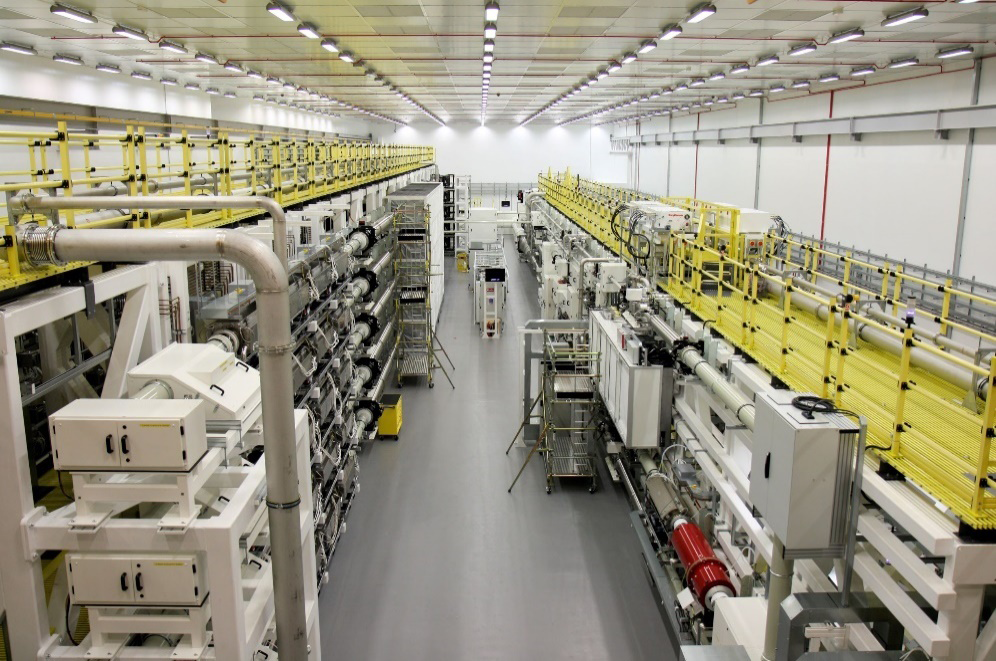
Figure 42 The Orion Laser Hall showing the long pulse beamlines on the left and the two petawatt beamlines on the right. (Picture courtesy of AWE.)
AWE conducted a feasibility study of the Orion baseline design in 2003–2004 and the project was given the go-ahead by the MoD in 2005. The official ground-breaking ceremony to start construction took place in July 2006. The Orion project broke new ground at AWE as it was the first large capital project in over 20 years. The formal project, included the building, installation and initial commissioning demonstration phase, was completed in 2010 and was delivered on-time and on budget (£170 million). Full system commissioning was completed a year later. Project completion, which included a demonstration of achieving relevant conditions[Reference Hoarty, Allan, James, Brown, Hobbs, Hill, Harris, Morton, Brookes, Shepherd, Dunn, Chen, Marley, Beiersdorfer, Chung, Lee, Brown and Emig326] on target, was achieved in March 2013.
Orion is housed in a custom multi-storey building with a 100 m × 60 m footprint supported on 300 sleeved piles for stability. It is by far the largest laser system constructed within the UK. Over 70% of the building volume has high-quality air-conditioned cleanrooms, with two major halls housing the laser and target systems. The Orion laser system was designed in-house with the construction project managed by Jacobs Engineering overseen on the AWE side by Tom Bett with his laser team from HELEN critically involved in the laser system construction and subsequent commissioning. Key staff included Nick Hopps, Mike Norman and Colin Danson becoming the first shot directors enabling completion of the formal project milestone and subsequent transitioning to operations. The project involved several hundred people and requires a team of 20 or so scientists, engineers and technicians to operate the system.
The transition from HELEN to Orion operations was a step change in complexity. On the practical scale, HELEN was a two-dimensional system where alignment was mostly a hands-on process with easily accessible components. The shift to a vast three-dimensional structure required a culture change where everything is motorized and viewed remotely. Staff who had previously spent most of their day within the laser hall were now doing the same job behind a desk. To manage all of this, the scale of the control systems required meant that the engineering and support teams had to be substantially larger.
The added complexity also required an increased level of oversight and control of operations to ensure that the right beams were delivered to target at the right time, safely. To facilitate this, Orion moved to a ‘Shot Director’ model (this was trialled on HELEN in its last year of operation), where one person was responsible for all aspects of a laser shot and had the final say on whether the shot would go ahead. What had previously been ‘quick simple jobs’ now require careful planning to ensure that any work is de-conflicted with the operations of the rest of the facility.
Orion has been operating continually since it began full operations in April 2013. The versatility of the facility means that it has been used as a tool to study a huge range of phenomena from simulating the interactions of binary stars, high-temperature/pressure opacity measurements, proton heating and imaging, studying the equations of state of materials in extreme conditions, to driving impulses through large (1”) samples. Figure 43 is a photograph of the Orion target chamber showing the vacuum propagation of one of the petawatt beamlines into the chamber on the left, a long-pulse beamline top right, and one of the six TIM (Ten Inch Manipulator) diagnostic insertion systems lower right.

Figure 43 The Orion 4 m diameter target chamber. (Picture courtesy of AWE.)
From the outset the UK’s MoD planned that up to 15% of Orion’s operational time should be made available to the UK academic community. Time is allocated on the facility using a competitive peer review process managed by the CLF through their High Power Laser Facility Access Panel, which also prioritizes access to VULCAN and Gemini. The first two campaigns, scheduled in 2013, produced research papers of the highest calibre being published in the Nature family of journals[Reference Cross, Gregori, Foster, Graham, Bonnet-Bidaud, Busschaert, Charpentier, Danson, Doyle, Drake, Fyrth, Gumbrell, Koenig, Krauland, Kuranz, Loupias, Michaut, Mouchet, Patankar, Skidmore, Spindloe, Tubman, Woolsey, Yurchak and Falize327, Reference Higginbotham, Stubley, Comley, Eggert, Foster, Kalantar, McGonegle, Patel, Peacock, Rothman, Smith, Suggit and Wark328].
Orion has been progressively upgraded through its life to meet user demands. The pulse duration on the long pulse beamlines has been extended from the original 5 ns up to 10 ns with the option to delay beamlines relative to each other to further extend the effective pulse duration as seen by the target. The contrast of the short pulse beamlines has been enhanced through a series of upgrades: the introduction of a picosecond optical parametric amplifier (OPA) to the front-end and frequency doubling of the output of one of the short-pulse beamlines. This allowed Orion to generate ~200 TW pulses with a contrast of ~1018[Reference Hillier, Elsmere, Girling, Hopps, Hussey, Parker, Treadwell, Winter and Bett329], the highest contrast demonstrated on any facility worldwide. An upgrade to the frequency-doubled system has since been implemented, with larger-aperture crystals and a double-aperture geometry to deliver ~400 TW[Reference Parker, Danson, Egan, Elsmere, Girling, Harvey, Hillier, Hussey, Masoero, McLoughlin, Penman, Treadwell, Winter and Hopps330].
3.3.5 Target fabrication
To support the laser–plasma programme, AWRE/AWE has instigated, and then continuously developed, the capability for providing the required micro-scale targets. To deliver viable data on the conditions of the experiment, targets must be carefully designed, fabricated and characterized. The size of target components and assemblies ranges from millimetres down to tens of micrometres and they can be made of a wide array of materials, from precision-machined gold enclosures (termed hohlraums), to low-density foams and aerogels, metal and polymer coatings, laser-machined foils and laser-machined strips. Any components and assemblies that are created must also be measured to high precision, so that the experimenters can properly interpret their results. This requires a sophisticated suite of characterization equipment, from coordinate measuring machines to interferometers, micro-balances, scanning electron microscopes and micro X-ray computed tomography (CT) scanners.
It was quickly evident that target fabrication required a multi-skilled science and engineering workforce, cooperating closely across disciplines to help solve complex problems, often at the edge of the possible. AWE target fabrication has sustained this over several decades, supporting programmes on the MERLIN, HELEN and Orion lasers as well as collaborative experiments outside the UK. The success of AWE target fabrication continues to rely on the exceptional skills developed by its teams, while steadily augmenting this with increasingly sophisticated technology to enable uplifts in target complexity and enhanced diagnosis of the finished targets.
Over the lifetime of the AWE programme, target fabrication has been based in several locations, occasionally benefitting from being co-located with its main customer facility. Having been alongside HELEN, from around 2000 to 2012, with the opening of Orion, target fabrication was again remote from the laser. However, in 2019, target fabrication was relocated into the Orion building. This had the added benefit of improving integration of some capabilities (e.g., precision machining) whilst also providing modern workspaces with improved environmental control. At the same time the opportunity has been taken for another phase of equipment renewal, meaning that the target fabrication team is well placed to support the laser–plasma programme into the next decade and beyond. Figure 44 shows the target assembly area with a target for NIF operations under construction.

Figure 44 NIF target being assembled at AWE using video coordinate measuring machine supported assembly techniques. (Picture courtesy of AWE.)
3.3.6 Summary of activities at AWE
AWRE/AWE recognized the potential for lasers soon after their invention and explored development initially for wide application to varied work within the establishment but very early on, the ability of high power lasers to generate hot dense matter was identified and significant effort put into this field, particularly close to one of the main objectives of the establishment. The laboratory over the last 40 plus years developed and built several generations of high power systems, building enduring relationships with national laboratories, academia and industry both within the UK and internationally in the field of high power lasers, optics and plasma interaction experiments. This ongoing programme continues today with its current world class facility Orion.
The expertise developed within AWE has been used extensively over the years in both active collaboration and in an advisory capacity. Many AWE scientists, both laser and plasma physicists, have been on secondment at LLNL in the US, contributing to their programme. Recently, many have also been members of international boards, for example: the ELI-Beamlines facility, Czech Republic[331]; Laser Megajoule, France[Reference Ebrardt and Chaput332]; and Laserlab-Europe[261].
3.4 UKAEA Culham
UKAEA (United Kingdom Atomic Energy Authority) Culham, opened in 1965, has been working on fusion research for many years and has been using lasers in a number of applications.
One incentive of the CO2 laser work was to evaporate pellets to fill magnetic confinement systems or a laser could also be used to heat a confined plasma. The teams had the additional brief to develop any laser that was suitable for commercial applications and the systems were used to machine many types of material, from ceramics to cloth. An early device was a 5 kW CW CO2 laser. Another system, an atmospheric pressure, channel cathode, TEA CO2 oscillator/amplifier system produced an output energy of 90 J in 50 ns pulses. A 10 J ruby laser was used to evaporate solid deuterium pellets as a means of filling ‘magnetic bottles’ without the trapping of magnetic field lines (work by Peter Saunders). More recently, Nick Peacock developed a 10 J Nd:glass laser used to produce plasma to emit UV and X-ray radiation. Other work included different plasma production methods (plasma focus) and sources for diagnostics.
Early fusion experiments lacked diagnostic information until, following the advent of the laser, the technique of Thomson scattering was invented in the UK. It was first applied to a British ‘pinch’ style fusion machine called Zeta which became operational in August 1957[333]. Thomson scattering is still used on fusion devices to this day, providing essential electron density and electron temperature profile measurements of the fusion plasma.
One of the pioneers in the field was Michael J. Forrest. Michael was part of a team that travelled to Russia in the spring of 1969 during the height of the cold war to check the claims by the Russian researchers that their fusion device (tokamak) was reaching temperatures more than 100 times higher than anybody else had achieved. They travelled to the lab near Moscow, bringing their own laser, to prove or disprove the claims. This does demonstrate the openness and international collaboration in fusion research at that time[334]. Mike has written a book about the adventure, Laser Across the Cherry Orchards [Reference Forrest335]. Mike is shown in Figure 45 in 1964 working on a laser used for Thomson scattering to measure plasma temperature.
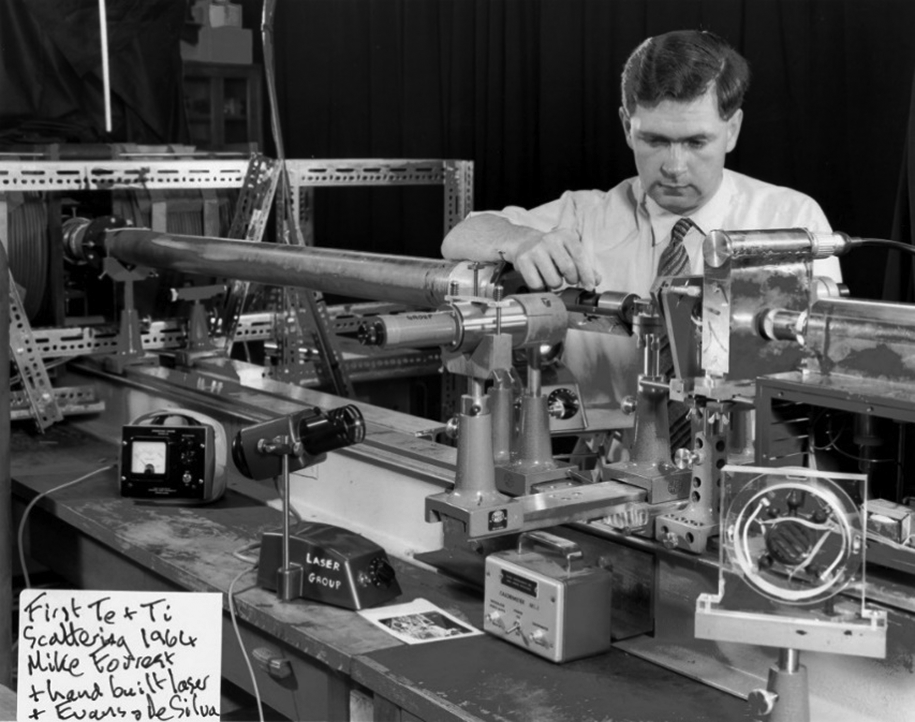
Figure 45 Mike Forrest operates a hand-built laser that is part of a Thomson scattering system used to measure plasma temperatures. This became a major diagnostic technique in the fusion field and is used to this day. (Picture courtesy of Wikipedia.org.)
In 1983, the largest tokamak fusion device currently operating became operational: the Joint European Torus (JET). As has become standard, this device had a Thomson scattering diagnostic. Initially this was a single-point system, which measured the electron temperature at a single point in the core of the plasma. In the mid-1980s a new Thomson scattering system was added. Instead of the ‘conventional’ arrangement where the collection of the scattered light happens at 90°, this approach used a 180° backscattering approach, called LIDAR. This relies on a time-of-flight calculation to derive a profile measurement of the plasma, instead of just a single-point measurement. The technique was pioneered at JET by H. Salzmann, K. Hirsch, P. Nielsen and C. Gowers, with the first results published in 1987[Reference Salzmann, Hirsch, Nielsen, Gowers, Gadd, Gadeberg, Murmann and Schrödter336].
The LIDAR diagnostic required a completely new type of short pulse ruby laser and a suitable device was developed by JK Lasers/Lumonics (Dave Peach, Jim Wadley, Janet Hull, et al.). It was a unique mode-locked system producing 300 ps laser pulses, eventually producing an output energy of up to 3 J and a power of ~10 GW at a 1 Hz repetition rate. This system was upgraded in the mid-1990s to a 4 Hz, 1 J system. Mark Kempenaars is shown in Figure 46 examining a ruby rod used in the LIDAR laser system.
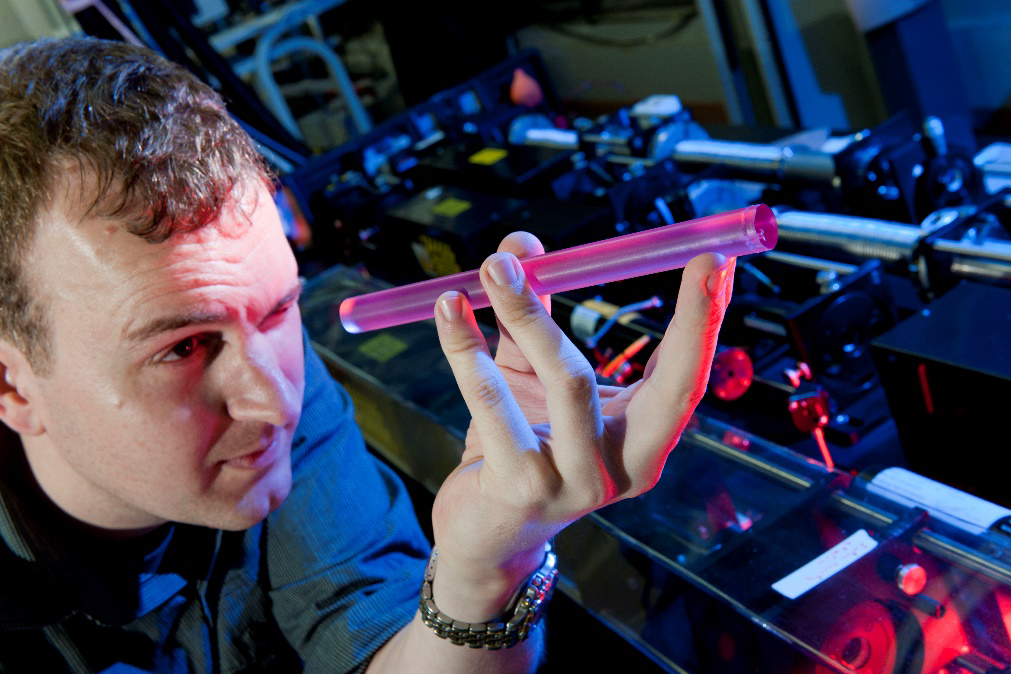
Figure 46 Mark Kempenaars, from the ITER organization (who provided most of the material for this section) examining a ruby rod from the LIDAR laser system while he was working at JET. (Picture courtesy of EUROfusion.)
In order to be able to perform these measurements the optical system was installed next to JET on a 20 Tonne concrete tower, with all the sensitive electronics and lasers located in a lab on the roof of the tokamak hall (a large concrete chamber, ~30 m high). The optical path length from the laser to the plasma was approximately 50 m and the same again for the data collection, requiring an exceptionally stable optical system. This diagnostic is still operational today, with the same 4 Hz laser. Some upgrades have been performed on the detectors allowing for a higher spatial resolution[Reference Maslov, Beurskens, Kempenaars and Flanagan337].
In 2004, the latest Thomson scattering system was installed on JET[Reference Pasqualotto, Nielsen, Gowers, Beurskens, Kempenaars, Carlstrom and Johnson338]. It used a conventional 90° layout and a fibre optical array to achieve 1 cm spatial resolution. The 20 Hz, Q-switched, Nd:YAG laser, delivering 5 J, 15 ns pulses at 1064 nm, was built by Quantel, France. In order to achieve the high power and high repetition rate, the final stages of amplification were split, running in parallel, so the laser produced two beams at the same time.
Another laser system in operation since the beginning of JET operations is the dual-wavelength far-IR interferometer, an extremely robust and impressive diagnostic system. It contains two deuterated cyanide (DCN) lasers and a set of methanol lasers pumped by CO2 lasers. The latter are from Edinburgh Instruments, whilst the DCN lasers were custom built in-house. Figure 47 shows Alexandru Boboc tuning one of the JET DCN lasers. The huge interferometry optical system measures the plasma line-integrated electron density and provides real time feedback to the JET control room where it can be used to control the fast feedback systems which control the fusion plasma. It also provides a machine protection interlock to prevent damage to the plasma-facing components. This diagnostic is of such importance to JET operations that the laser systems are designed in pairs to provide a backup, enabling reliable 16-hour-a-day operation.

Figure 47 Dr. Alexandru Boboc, Responsible Officer for the JET Interferometer system, tuning the DCN laser. (Picture courtesy of EUROfusion.)
3.5 Conclusion on national laboratories
In this section we have covered in detail the contributions from three of the government laboratories, but there have also been major contributions from other establishments. During the 60 years, some establishments were merged, some were privatized and there were many name changes. Other laboratories are mentioned in a separate section of this paper, for example, the crucial inputs to developments in the defence field from the Royal Aircraft Establishment (RAE), Farnborough, the Royal Signals and Radar Establishment (RSRE), Malvern, the Royal Armaments Research and Development Establishment (RARDE), Fort Halstead, and the Services Electronics Research Laboratory (SERL), Baldock. In summary, it is clear that the government laboratories have played a crucial part in driving forward the overall national effort in the development and applications of high-power lasers.
4 UK industry
The UK has been at the forefront of high-power laser system and component manufacture since the 1960s. Many companies grew up to service the rapidly expanding number of laser-based applications and to exploit new laser technologies as they emerged. Some of these companies were spin-offs from universities, some spun out of other companies, some started life as cottage industries and some went on to be world leaders in their field. There was a lot of collaboration between the companies and the government laboratories and there was much cross-fertilization as people moved around. Overall, it was a period of rapid, productive growth.
It is impossible to be totally inclusive and, in this review, we do not cover the industrial lasers used for machining, welding, cutting and surface treatment nor the medical lasers transforming the world around us, but many of these companies spun out of areas included here. Some key examples are given which are close to the heart of the authors.
In general, this section profiles a representative sample of the companies supplying the technologies involved, but there are three geographical areas worthy of specific mention: Isle of Man; Rugby, Warwickshire; and St Asaph, North Wales. These regions became hotspots for the manufacture of precision optics, solid-state lasers and photonics, respectively.
4.1 UK industrial regional centres
4.1.1 Isle of Man
The Isle of Man established itself as a hotspot for precision optics manufacturing, with a global reputation. Technical Optics Ltd was established in 1973 by brothers Mike and David Lunt. They first set up business in North Wales but moved to the Isle of Man as there were attractive start-up grants for small companies to diversify the island’s economy. They were taken aback when arriving in the Isle of Man to have the Tynwald (the Isle of Man’s Parliament) Member for the Economy meet them and help them unpack their van. Their board room had a large statement image of a range of optics they produced shown in Figure 48.
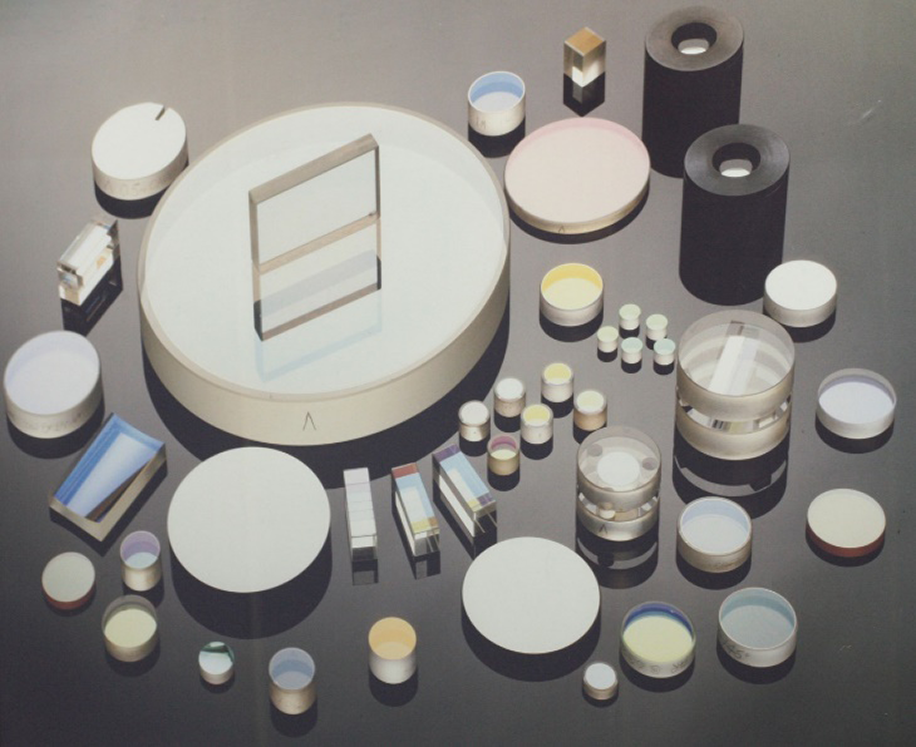
Figure 48 Photograph that graced the Boardroom of Technical Optics for many years. Courtesy of Helmut Kessler, Manx Precision Optics, where the picture now resides.
J. Bibby Ltd bought out Technical Optics in the early 1990s and when in 1995 Bibby acquired Melles Griot, Technical Optics was renamed Melles Griot Technical Optics to mark its integration into the Melles Griot Group. CVI bought Technical Optics out in 2000, renaming it CVI Technical Optics. In 2011 it became part of the IDEX Group. It finally closed as CVI Technical Optics in early 2014 after nearly 40 years of trading.
Quality Laser Optics (QLO) was set up in 1992 by Gary Thomas, who had led the Nd:phosphate glass slab polishing at Technical Optics. Previously, from 1981 to 1987, he had gained significant experience at Zygo Corporation, USA, working on the largest optics used on any laser systems worldwide: mirrors up to 1 m diameter and phosphate disks at 46 cm clear aperture for the US, French and Japanese lasers. QLO was sold to CVI Technical Optics in 2006 and integrated into their operation. Gary emerged again to set up Island Optics Ltd in 2013[339]. Island Optics Ltd remains as a precision optics manufacturing company specializing in precision flats such as mirrors, windows, beamsplitters and polarizers.
In 1997, a new company was to spin out of Technical Optics, SLS Optics Ltd[340], specializing in the manufacture of Fabry–Pérot etalons, precision laser optics and thin film coatings. The name SLS refers to its founders Lionel Skillicorn, Mike Lunt and Jim Schwarz.
Solarscope[341] was set up in the early 2000s by Ken Huggett, who was in charge of the instrumentation department of Technical Optics. Ken had previously, after leaving Technical Optics in the late 1990s, worked with David Lunt at Coronado Instruments who re-located from the Isle of Man back to the US. Solarscope quickly established itself as one of the leading high-quality manufacturers of hydrogen alpha filters for solar observation. The etalon plates and coating were manufactured on the Isle of Man, first by Technical Optics, then by QLO and SLS Optics, drawing on the vast experience present in the Isle of Man for these very high-end products.
In 2013 a further company was to establish itself in the Isle of Man, Manx Precision Optics Ltd[342]. Its founder was Helmut Kessler, who had started at Technical Optics in 1995 as a coating designer and later became their General Manager. The company specializes in the manufacture of precision optics (flat and spherical) for high-power lasers, having polishing and coating facilities to produce optics up to 500 mm diameter. Since 2014, Manx Precision Optics supplied the etalons to Solarscope and when Ken Huggett retired in 2018 Helmut Kessler and his wife bought the company to continue the manufacture of hydrogen alpha filters in the Isle of Man. Solarscope is now operating from a laboratory within the Manx Precision Optics building.
4.1.2 Rugby, Warwickshire
Rugby, Warwickshire, established itself as a world centre for the manufacture of solid-state lasers. The story started in 1964 when the Associated Electrical Industries (AEI) Central Research Laboratories were consolidated in Rugby in purpose-built facilities[Reference Marshall and Williams343]. Their laser development group was to employ several people who would become major players in the story of high-power lasers in Rugby: Jim Wright, Ron Burbeck and Paul Sarkies. There they developed the first Nd:YAG lasers for military guidance applications.
Jim Wright[344], on leaving University in 1962, was awarded a Civil Service research fellowship to work on lasers at the Signals Research and Development Establishment (SRDE) in Christchurch. Here, he developed the first Q-switched Nd:glass lasers in the UK. He then joined AEI to concentrate on developing laser technology for applications rather than pure research.
In 1967, when GEC acquired AEI[Reference Clayton and Algar345] they moved the laser development work to Wembley, London. Jim, Ron and several other colleagues decided against the move and formed a branch of Laser Associates (Rugby), in 1968, to manufacture the first commercial Nd:YAG lasers in the UK. Laser Associates Ltd was started in Slough in January 1967, by Dillon Harris and colleagues who had left G&E Bradley, a subsidiary of Lucas, to develop lasers[Reference Clutterbuck346]. Ted Payne, later founder of Laser Lines Ltd, joined Laser Associates in 1969. Laser Associates established itself as one of the world’s leading laser manufacturers and even grew its own ruby crystals. However, concerns about the management of Laser Associates led Jim Wright and Ron Burbeck to resign and form JK Lasers Ltd at the beginning of 1972. Laser Associates, Rugby, was to be wound up in the same year and taken over by Ferranti.
JK Lasers specialized in the production of solid-state laser systems. The company first launched a range of pulsed lasers using ruby, Nd:YAG and glass laser rods. This was followed by the MS-Series of Nd:YAG laser systems that were designed for industrial welding, cutting and drilling applications.
The main task in those early years was to identify materials processing applications for which pulsed Nd:YAG lasers provided a competitive advantage or benefit, either as a replacement technology or as an enabling technology to allow designs and industrial processes that would otherwise not be possible. The company also started to develop overseas markets as it opened up offices and support centres across mainland Europe. In 1978, JK Lasers won the Queens Award for Export Achievement. The staff of JK Lasers were photographed (see Figure 49), outside their Somers Road premises in the late 1970s.
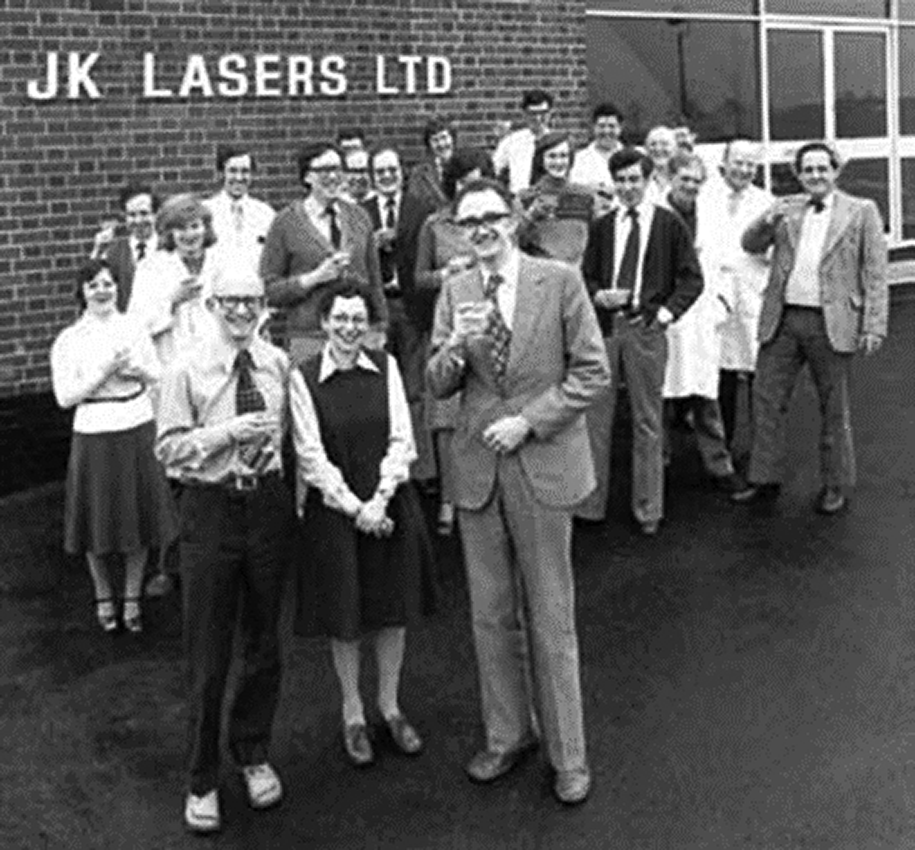
Figure 49 The staff of JK Lasers outside their premises at 23 Somers Road, Rugby in the late 1970s.
Throughout the 1970s and into the 1980s, JK Lasers worked collaboratively with end users to pioneer the development of numerous applications including the precision spot welding of TV electron guns and components, the seam welding of heart pacemaker cans (the lower average powers of pulsed laser technology allowing the can to be welded without damaging the delicate electronics inside) and the drilling of aircraft nozzle guide vanes and combustion chamber rings.
In July 1982 there were 100 employees in JK Lasers when they merged with Lumonics of Canada to form one of the (then) largest laser companies in the world. The merger was mutually beneficial with Lumonics manufacturing CO2, excimer and dye lasers, whereas JK Lasers produced solid-state lasers. Lumonics represented the UK products into Canada and the USA, and JK Lasers represented the Canadian products into Europe which worked very well. The JK Lasers division of Lumonics moved from Somers Road and in 1985 it opened a purpose-built facility in Cosford Lane, Rugby.
Within Lumonics, Jim Wright continued to champion the development of the industrial laser business. In 1986, the company launched the JK700 Series of pulsed Nd:YAG lasers, the first truly industrial lasers that gained wide acceptance in the aerospace, automotive and electronic industries.
As well as developing the laser source, Lumonics provided a range of standard and bespoke laser processing systems that were often customized to a particular application. During the 1980s and 1990s, the company also developed a range of fibre-optic beam delivery systems which extended the practical application of lasers within industry by allowing the laser source to either be time shared between multiple work stations within a manufacturing facility, or by beam sharing to allow simultaneous welding, for example, in the attachment of telecommunication fibre-optic cables to laser diodes while maintaining their precise alignment. Fibre delivery also enabled remote processing to be carried out within the nuclear industry.
Jim Wright left the company in 1988 and Sumitomo Heavy Industries (SHI) of Japan bought Lumonics in the same year. Lumonics continued to develop pulsed Nd:YAG lasers across a range of powers, introducing the first 1 kW industrial laser product, and in 1990 the company won the Queens Award for Technological Achievement. It participated in various collaborative programmes to advance Nd:YAG laser materials processing capability and also extended its geographical reach into East and South East Asian markets.
As part of these developments Neal Croxford and Tony Hoult demonstrated welding and cutting at powers over 2 kW under a UK Eureka project led by Clive Ireland, producing welds over 25 mm deep in steel and over 10 mm deep in copper for the first time. This led to the development of 2 kW industrial lasers used for a variety of applications including those within the automotive industry.
During its long spell as a major force in the UK laser industry, JK Lasers and then Lumonics grew and nurtured a lot of strong teams and highly skilled individuals. Some went on to establish other laser companies, while others went on to become major players elsewhere in the market.
In 1999, SHI sold shares to General Scanning Incorporated (GSI) of Boston, MA, USA, to form GSI Group Laser Division. In 2012 GSI changed the name back to JK Lasers[347]. In April 2015 GSI sold its JK Lasers subsidiary to SPI Lasers, part of the TRUMPF Group. All products were rebranded with the SPI logo, essentially ending the JK brand. SPI[348] was established in 1999 as a spin-out from the University of Southampton’s ORC specializing in fibre lasers, becoming part of the TRUMPF Group in 2008. In 2018 SPI expanded their laser manufacturing capability in Rugby where they still operate today.
In 1997, InnoLas UK[349] was formed to buy out the scientific product lines of Lumonics/JK Lasers/GSI. The founders were Bill Brown (ex JK, Lumonics, Brown & James), Dave James (ex JK, Lumonics, Brown & James), Reinhard Kelnberger (ex JK, Lumonics and InnoLas GmbH) and Janet Hull (ex JK & Lumonics). InnoLas UK continues to be a leading UK-based laser manufacturer, renowned for developing innovative solid-state laser equipment and technology for industrial and scientific users. Applications range from drilling and cutting of aerospace metals through to welding, holography, optical damage measurements and plasma diagnostics.
Paul Sarkies worked with Jim Wright and Ron Burbeck at AEI but when they went to Laser Associates, he left and went to Sheffield for a PhD working on laser glass. Paul re-joined Jim Wright at JK Lasers in 1975, then broke away to found Spectron Laser Systems in 1981. Spectron specialized in Q-switched lamp pumped scientific, medical and precision industrial processing. In 1997 Spectron was sold to Laser Industries Ltd, an Israeli company specializing in the supply of medical laser equipment. Spectron was taken over by GSI Lumonics in 2003, effectively bringing Spectron and JK Lasers back together.
Litron Lasers Ltd was set-up by Paul Sarkies, with his son Julian Sarkies as first Director, in 1997. The company pioneered commercial photodiode energy monitors as initially they were not allowed to compete with Spectron in selling lasers. In the meantime, they were developing a technology base of solid-state lasers for manufacturing. Litron’s first laser products were launched in 2002 and these have developed into a set of standard models and configurations including high-energy pulsed lasers, both flashlamp and diode pumped, for science and industry. Litron continues to be run by Paul’s three sons[350].
Elforlight was established in early 1997 in Daventry by Keith Oakes, ex Laser Lines Ltd, and Simon Jenny, ex Spectron Laser Systems. They specialize in DPSSLs[351]. They originally were IE Optomech and did work with the University of St Andrews. Uniphase was so impressed with the microchip laser work that they bought IE Optomech. Keith and Simon then set up Elforlight.
The legacy of the long history of laser innovation and manufacturing in Rugby is that it remains as a centre of excellence in lasers with many of the companies highlighted still trading. Other companies include: JEH Lasers Ltd[352] established in 2019 by Janet Hull (shown in Figure 50 maintaining an old JK Lasers Nd:YAG system) who has many years’ experience designing, building, testing and servicing solid-state lasers in Rugby; and MSS Lasers[353] providing CO2 laser system build and service.
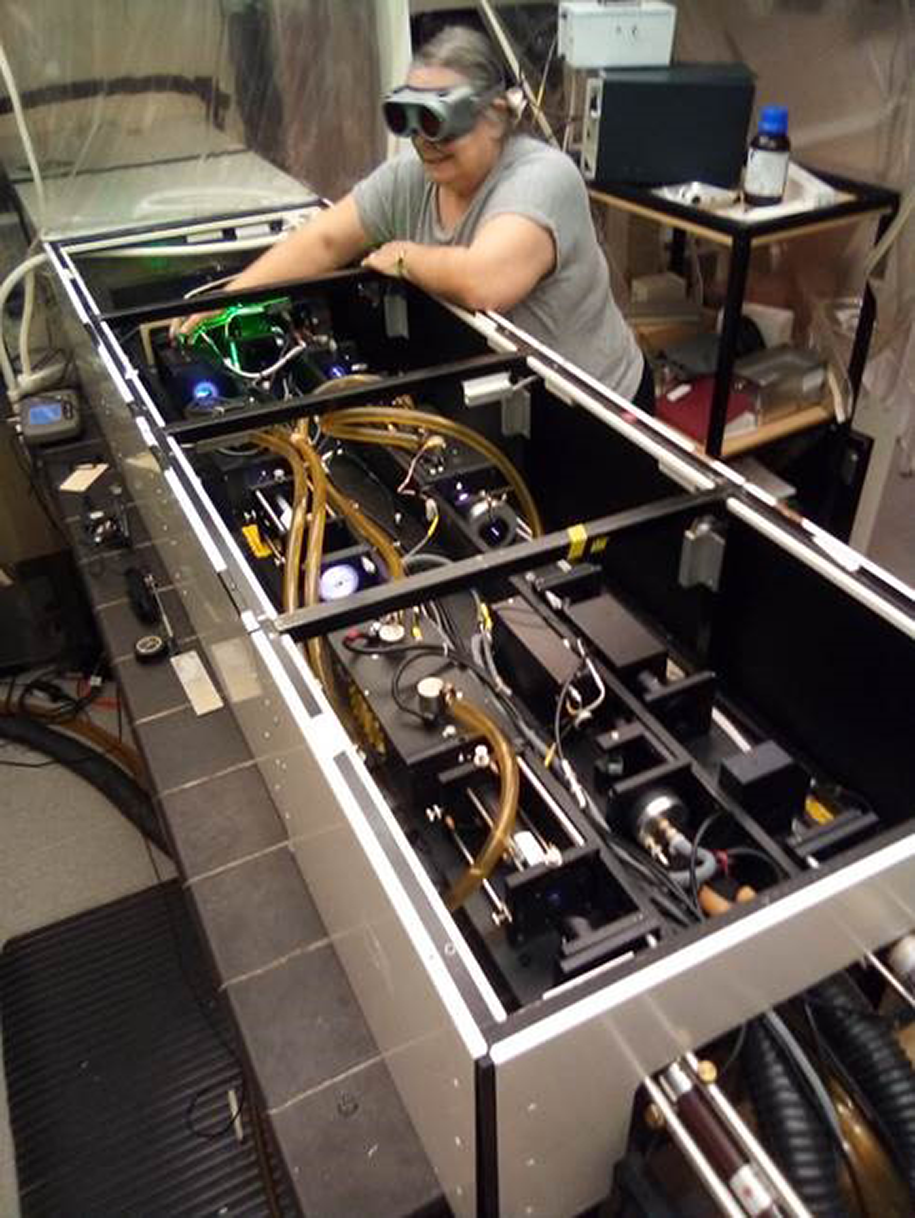
Figure 50 Janet Hull, JEH Lasers, maintaining a JK Lasers Nd:YAG mode locked dye system in 2020 at the Space Geodesy Group, Herstmonceux, East Sussex. Parts of the laser date back to the late 1970s, it was heavily modified in the early 1980s and is still operational.
Many laser-based manufacturing companies across the local area owe their existence to the manufacture of lasers in Rugby including DP2000 Ltd formed in 2003[354] using lasers for cutting and welding and Precision Laser Processing Ltd (PLP)[355], established in 1994. PLP was formerly called The Laser Job Shop Ltd. They use high-power CO2 and YAG lasers for applications in precision manufacture for the aerospace, nuclear, automotive, medical and other industrial sectors, for laser drilling, cutting, welding and parts fabrication. PLP came out of Brown & James Ltd, a job shop started by Bill Brown and Dave James, of JK Lasers/Lumonics. They sold the company to Bob Ghavami and Graham Lucas, who were both also ex JK Lasers/Lumonics.
Aside from providing many hi-tech employment opportunities in the area for decades, one of the biggest contributions of Rugby lasers’ heritage is in aerospace blade drilling. This is used by Rolls Royce Aerospace in their production of jet engines, to improve the efficiency of the engine to the benefit of us all.
4.1.3 St Asaph, Wales
There is a significant cluster of optics and photonics companies in North Wales, centred around St Asaph. This cluster now totals about 100 companies which are within a thirty-mile radius of St Asaph and which have total revenues of over £1 billion. The cluster had its origins when Pilkington decided to move its glass manufacturing operations to St Asaph in the 1950s, which established the core focus of the cluster and brought in many suppliers and users of glass products to the area. Pilkington moved away from St Asaph in 2008, following a takeover by NSG, Japan, but crucially many of the supply chain and the skilled workforce remained in the region, and this expertise has continued to seed and grow the cluster.
Currently the largest company in the cluster is Qioptiq[356] which designs and manufactures photonic products for applications in defence and aerospace, and it is now part of Excelitas Technologies. Other notable companies include: Tyco Electronics[357]; Leader Optec[358] specializing in advanced fibre-optic systems; Kent Periscopes[359] producing vision systems for military applications; Ultra Precision Structured Surfaces Ltd[360] using nanometre machining to produce Fresnel lenses and diffraction gratings; Laser Micromachining Ltd[361] featured later in this section; and Phoenix Optical Technologies Ltd[362], which produces precision optics.
4.2 UK laser system suppliers
From the 1960s onward, many applications of lasers were developed to provide solutions to a broad range of issues. Manufacturing industry was making great strides in automation. The laser industry was making progress in the types of source and the powers available. As a result, there was a boom in the industrial application of many types of laser for cutting, welding, marking and diagnostics. It would be impossible to list them all, but the companies profiled below are representative of the many players who were active at the time.
Edinburgh Instruments Ltd was founded in 1971 by Professor S. D. Smith OBE FRS, FRSE, FinstP as a spin-out from Heriot-Watt University and was the first private company on Britain’s first University ‘Research Park’ just outside Edinburgh. At the time they were producing precision CW CO and CO2 lasers. Edinburgh Instruments Ltd has become one of the world’s largest manufacturers of leading-edge spectroscopic instrumentation and gas detection solutions. The company is involved in the development, manufacture and sale of a wide range of high technology products for the scientific research and industrial markets. Product ranges include lasers and analytical spectrometers supplied by the Photonics Division and gas detection and monitoring products supplied by the Sensors Division. Following rapid expansion, by the 1980s a full range of IR and far-IR gas lasers (CW and pulsed CO2 and CO lasers and optically pumped terahertz lasers) was made available to the market designed for pumping a spin-flip (tunable) Raman laser.
Photon Control was an opto-mechanical company founded by John Galpin circa 1983–1984 based just outside Cambridge. John Girkin, following a PhD in Southampton with Professor Allister Ferguson, joined Photon Control in 1985 as their design engineer. He designed the world’s first commercial diode-pumped Nd:YAG laser, known as Micro-YAG (see Figure 51), which was launched at the Brighton Laser Show in March 1986. The system delivered up to 5 mW at both 1064 and 1300 nm. Adlas, a US laser company, launched a similar product at CLEO, USA, in May 1986. The laser was featured on the front cover of Photonics Spectra and was awarded the Photonics Circle of Excellence award for 1987. Photon Control sold a number of these systems including some that went into commercial injection-locked lasers. Photon Control was sold to Melles Griot circa 1991.
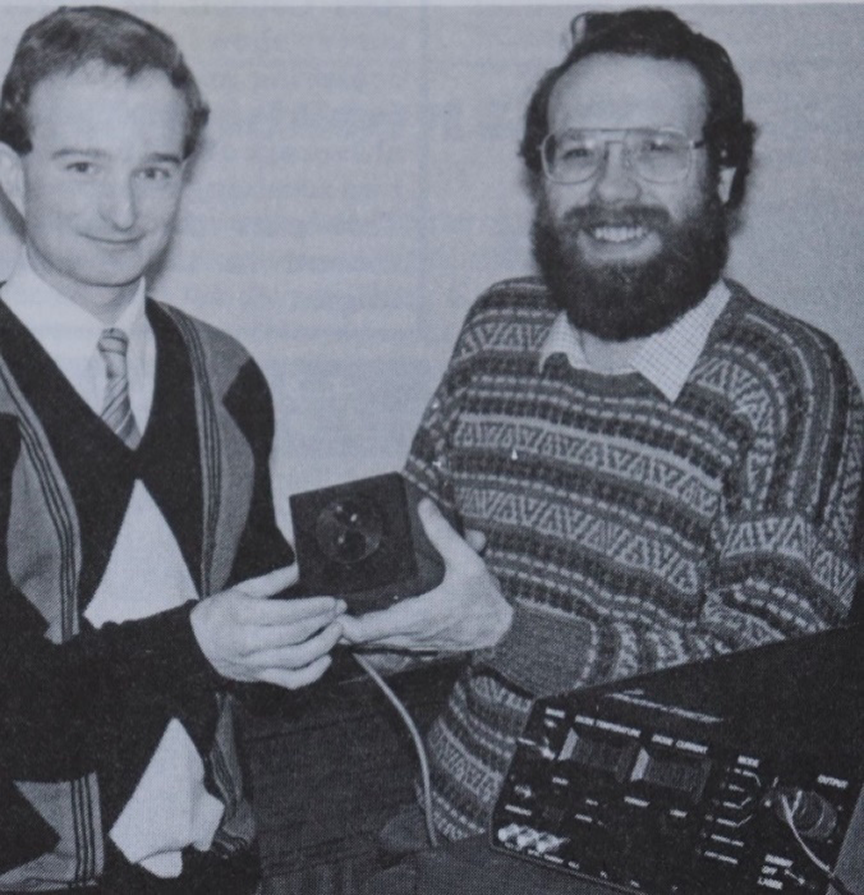
Figure 51 John Girkin and Allister Ferguson with the Photon Control Micro-YAG (Southampton University Newspaper).
EPL was established in Northern Ireland as a spin out of QUB by Professor Dan Bradley and Dr. Bill Sleat. They were best known for the flashlamp-pumped model 33 dye laser, which became a standard research tool for many laboratories. Its popularity waned when CW mode-locked dye lasers became practical. Electro-Photonics also produced an optical streak camera with 15 ps resolution. The company ceased trading in 1976 when it was absorbed into Hadland Photonic Ltd, which came from a long-standing association between Hadland, EEV (image convertor tube suppliers) and Dan Bradley.
Oxford Lasers Ltd[363] was founded in 1977 to exploit the newly developed excimer laser technology at the University of Oxford. Colin Webb, John Deech, Alan Corney and Andrew Kearsley each put up the funds to buy the parts needed to build the first excimer laser in the garage of Alan Corney’s home in Victoria Road, Oxford. The first laser, shown in Figure 52, was sold to AEA Harwell Laboratories who needed a pulsed UV laser for the work on isotope enrichment of uranium for fission reactor fuel. The company existed purely on a part time basis until 1981 when they decided to opt for full time operation and transferred their base to an old slaughterhouse in Middle Way, Summertown, Oxford.

Figure 52 In 1978, Andrew Kearsley put the first commercial excimer laser in Europe through its paces at Oxford Lasers.
During those early years, the company produced gas purifiers for excimer lasers and started to manufacture copper vapour lasers (CVLs). CVLs are high-power, pulsed lasers operating at two wavelengths in the visible region of the spectrum, green and yellow, initially used to power the dye lasers used in the atomic vapour laser isotope separation (AVLIS) process at Harwell. In 1984 Oxford Lasers outgrew the premises at Middle Way and moved to new premises at Magdalen Road, Oxford. Copper lasers were improved and exported to USA, Japan and Western Europe. In 1987 Oxford Lasers received their first of three Queens Awards for Export.
In 1991 the demand for laser isotope separation collapsed and the company briefly diversified into medical and stage lighting applications. Oxford Lasers used the CVLs for high-speed photography of fast events, imaging of air-flow in wind tunnels and gas manifolds of engines, exploiting the ability of the CVL to produce short bursts of light lasting only 30 billionths of a second repeating at up to 30,000 times per second in synchronism with a high-speed movie or video camera. In the 1990s the company successfully moved into precision micromachining which is described in more detail later in Section 4.4 .
Electrox was founded in the early 1970s by Brian Doxey, Martin Adams and Peter Bright in a garage in Arlesey, Bedfordshire. After its first phase of successful growth the company moved to purpose-built facilities in nearby Stotfold. Its early success was based on fast axial flow CO2 lasers in the 1.5–2.5 kW range with exceptional pulse to pulse stability. As a result, these products dominated the market niche for lasers to peck away the cells on the large rubber-coated rollers used in the printing industry. Given that these rollers were up to 6 m long and had to be engraved one focal spot at a time with zero tolerance of any inaccurate pulses, it was a highly demanding application. The company was acquired by 600 Group, a machine tool PLC, in 1986.
In 1992 the 600 Group installed a new Electrox management under Managing Director Malcolm White. The original management team comprised Don Bishop as Technical Director, David Price as Production Director, Trevor Rowley as Finance Director and Steve Mitchell as Sales Director. Over time, other directors were appointed including Baz Hartnell and Ray Gawn (Sales), Jon Larsen and Neal Croxford (Technical) and Howard Moore (Manufacturing and then eventually Managing Director after Malcolm White left.)
The task for the new team in 1992 was to improve financial performance and enter new markets owing to obsolescence of the CO2 products. In the late 1980s, Electrox had acquired International Laser Machines (ILM) of Indianapolis. In 1992 and 1993 the companies were consolidated so that all administration, manufacturing and development were in the UK. Sales, service and applications were run out of the USA as well as the UK. The product emphasis was shifted into the emerging field of laser markers that were used for traceability and identification. The company grew substantially through the 1990s and early 2000s based on the Scriba (Latin for writing clerk) range of laser markers that had been designed by Chris Hadley and Don Bishop in Indianapolis. Don subsequently relocated to the UK.
A much larger purpose-built facility was acquired in Letchworth which was opened by the Duke of Kent, with the official unveiling ceremony shown in Figure 53 hosted by Malcolm White. The company won the Queen’s Award for Export. At its peak, Electrox lasers were used to mark one third of the world’s mobile phone keypads and a quarter of the world’s computer keyboards.

Figure 53 Malcolm White welcoming the Duke of Kent and guests to the opening of the new Electrox factory.
In 2015 the 600 Group acquired a majority share in the US laser marker company Tykma and over time combined the Electrox and Tykma companies. The new management moved all production and development to Ohio, eventually closing all UK operations.
Neal Croxford had moved to Electrox from Lumonics as Senior Laser Engineer (later Technical Director) to continue the development of the ILM and Scriba product ranges. Neal went on to develop a new range of diode side-pumped lasers in the 20 to 60 W range and the world’s first direct to upper laser level end-pumped vanadate industrial laser with exceptional beam brightness and operational lifetime.
In 1998 Neal Croxford and Ian Bell established DeBe Lasers to address the growing demand for high-quality beam delivery products, including metal powder feed nozzles for high-power industrial lasers, developing solutions for, amongst others, the laser department of the University of Manchester, SPI Lasers of Southampton and Fimark laser engraving. Ian Bell relocated to Singapore to establish Laser Machining Services pte (LMS). In 2012, Wendy Shearer replaced Ian Bell as co-director at the start of substantial expansion of DeBe’s business, developing fibre laser and direct diode laser applications and products.
In 2018 DeBe Lasers and The Needham Group established a new company Needham Laser Technologies[364] in Whitchurch, Shropshire. The Needham Group was, until this time, importing lasers from Chinese and American companies. Needham Laser Technologies replaced these with UK designed and manufactured products for marking, cutting, welding and drilling. It continues to be at the forefront of UK industrial laser development.
M Squared Lasers Ltd[365] was founded by Graeme Malcolm OBE, shown in Figure 54, and Gareth Maker in 2006: a subtle nod to the company name, itself both a reference to the names of the founders and the formula for the multiplication factor in a laser beam’s propagation. They initially met at the University of Strathclyde, while completing their PhDs, and set out to create novel laser-based solutions for use in academic research. A shared passion led them to co-found their first company Microlase Optical Systems in 1992, a spin-out from the University of Strathclyde. Their first company eventually caught the eye of Coherent Inc., which purchased Microlase in 1999. Graeme continued to lead Coherent Scotland during the transition and beyond.

Figure 54 Graeme Malcolm in M Squared’s open-plan laboratory in 2007 at their first premises at Todd Campus which is part of the West of Scotland Science Park, Glasgow.
In 2006, the former partners came together at M Squared to develop a best-in-class laser system: a laser that would be scalable, compact, robust, fully automated and more accurate than existing systems. This idea was realized with their award-winning CW Ti:sapphire SolsTiS laser, which has had a significant impact on scientific studies in quantum technologies and physical sciences worldwide. Today this laser is a complete platform offering unparalleled CW performance in the UV, visible and IR (210 nm–4 μm) bands. The SolsTiS platform has been intrinsic in world firsts including the world’s most accurate clocks, the teleportation of quantum states, single-pixel cameras, antimatter experimentation and spacecraft ‘ion drives’.
M Squared has a dedicated quantum division in Glasgow and London which has already released several UK commercial quantum firsts. The company’s Life Division in Surrey focuses on Airy beam light-sheet microscopes that allow progress in the non-invasive study of cancers and degenerative diseases including dementia, motor neurone disease and Parkinson’s. Recently M Squared re-calibrated the Tropomi spectrometer onboard the Sentinel 5-Precursor satellite that is providing data on critical atmospheric pollutants.
M Squared employs more than 100 people and has offices throughout the UK, Europe and the USA. Founded in Scotland, it has established itself as one of the UK’s most innovative disruptive technology businesses. It has gained recognition from the Deloitte Technology Fast 50, The Sunday Times Fast Track 100 and Export Track 100, the Lloyds National Business Awards, the Institute of Physics and the Queen’s Award for Enterprise.
LAL/Rofin-Sinar UK Ltd. Based on the globally recognized research generated by the Molecular Gas Laser Group led at the time by Peter Dyer, in 1977 a company LAL was spun off from the Department of Applied Physics at University of Hull. Initially led by Stuart Ramsden, Ken Andrews and David Hamilton and bolstered by the arrival of Ken Lipton as Technical Director in 1980, LAL developed custom TEA and CW CO2, HF/DF and excimer lasers for military and scientific markets. However, by the early 1980s date coding on consumable products had become a legal requirement, thereby creating a new global high-volume market for commercial products based on multi-joule TEA CO2 lasers.
RF-excited CO2 lasers were added to the portfolio in 1980 through collaboration with Denis Hall’s group at University of Hull, resulting in the development in 1985 of the first European sealed medical laser system for surgical procedures. At the same time, the company’s industrial focus narrowed to the larger coding and materials processing markets with TEA lasers and increasingly powerful RF sealed CO2 lasers.
These activities caught the attention of Coherent Inc., who purchased the company in 1986. LAL together with Denis Hall’s group championed the concept of scalable RF-excited large area (slab) discharge lasers, resulting in Coherent adopting this technology for their 100 W Ultrapulse medical laser systems and Diamond industrial products. LAL, by now renamed as Coherent Hull Ltd, and with Ken Lipton as MD produced their own slab-laser medical variant, and a novel dot-matrix coding product (Xymark), exploiting the compactness, long sealed lifetimes and reliability of the new planar waveguide RF laser technology. Subsequently, the industrial part of the Coherent Hull company was sold to Lumonics during the recession of 1992 and the MD, Dr. Ken Lipton, left to set up Rofin-Sinar UK Ltd with Professor Denis Hall as a joint venture with Rofin-Sinar GmbH. This company attracted LAL’s key staff and pursued the development of CO2 slab lasers below 1 kW for cutting, drilling and coding.
During the next few years, the company’s progress was recognized with the Queen’s Awards for Innovation for the highest-power sealed industrial laser and for international trade, with Ken Lipton shown receiving the award in Figure 55. It has grown into a highly successful business with a turnover of ~£40 million employing 170 people and exporting 95% of its products worldwide. Its lasers are used in a wide range of markets including automobile, aerospace, glass, textile, electronics and packaging. The company’s foundation links directly back to LAL and to University of Hull and is the only remaining laser production company in the Hull area.

Figure 55 Ken Lipton receiving the Queen’s Award for Export from the Lord Lieutenant (Rofin Sinar UK Ltd).
Coherent Scotland Ltd was the result of the acquisition in 2000 by Coherent Inc.[366] of Microlase Ltd, a spin out from the University of Strathclyde. Coherent Scotland specializes in a wide range of CW and ultrafast lasers, for applications such as biological imaging (multiphoton microscopy), semiconductor wafer inspection, flat panel display manufacturing and gravitational wave detection. With a very high proportion of lasers exported, over 150 staff and a strong record of growth, the business is well positioned to continue its successful journey.
British Oxygen Company (BOC) had strong interests in developing lasers for machining. They commercially sourced a slow-flow CO2 laser cutting machine, developed by SERL and provided commercially by Ferranti, for use in Cricklewood, London in the late 1960s[367]. They developed a die cutting machine that was sold to William Thynes in Edinburgh for cutting the grooves in wooden blanks that were used to cut out cardboard packaging, one of the first real applications in the UK. BOC also had a factory in Daventry, where they manufactured fast axial flow CO2 lasers. Control Lasers from the USA bought them in 1980. Control Lasers was taken over by Patlex in 1987 and they then shut the UK factory. Control Lasers was unfortunate enough to be the first company that was judged to be infringing Gordon Gould’s patents on electrical and optical pumping of lasers[368].
4.3 Laser component suppliers
The rapid growth and diversification of the laser systems industry naturally led to a corresponding expansion in the size and breadth of the market for components. Many new companies were formed to service this market. It should be noted that many of the component suppliers were servicing not just the needs of the industrial laser community, but also the government laboratories in the UK and abroad, including some ‘flagship’ laser facilities such as Orion, VULCAN, ELI, Shiva, Nova, NIF and Omega.
Optical Surfaces Ltd, Kenley, Surrey[369] was established in 1962 by John Mortleman, John Thompson and Jim Hysom. The company’s roots go back to 1947 when the firm of Cox, Hargreaves and Thomas Ltd was founded in Coulsdon, Surrey turning a hobby of making mirrors for astronomical telescopes into a business. The company originally occupied garages knocked into one but the need for temperature control became critical, and in 1951 the company took over the WWII Tunnel Shelter underneath Cane Hill Hospital in Coulsdon. Optical Surfaces broke away from the original company in 1962 and spent four years in temporary accommodation before finding their own ‘tunnels’ in 1966.
Their location is therefore probably the strangest of all the suppliers covered, in that when visiting them you are faced with a large door in a chalk cliff face. The manufacturing is in underground tunnels in the chalk hillside originally used by the government in WWII, with an early view along one of the tunnels shown in Figure 56. Being underground provides an incredibly stable platform with automatic temperature control for polishing precision optics, with the polishing equipment mounted off wooden supports. Optical Surfaces is particularly well known for supplying large aperture off-axis parabolic mirrors, off-axis reflecting collimators and beam expander systems to the international laser and astronomical communities. They supplied the original 600 mm beam aperture f/3 off-axis parabola for the VULCAN petawatt facility, the f/4 aspheric target focusing lenses for Orion and large beam aperture, 500 mm, beam expanders for ELI-Beamlines laser facility in the Czech Republic.
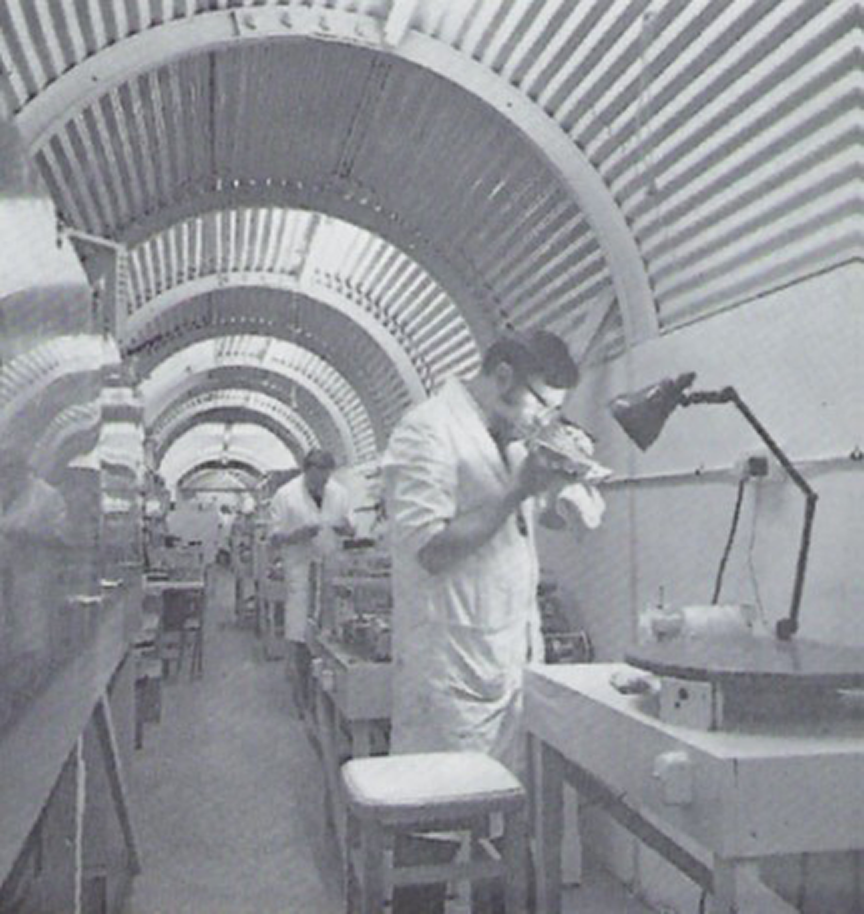
Figure 56 A view along one of the tunnels at Optical Surfaces from an early brochure with Mr. Moress, foreground, and Mr. Harrington.
ICOS[370] was incorporated in 1970 and located in the Blackett Laboratory, Imperial College London to provide high-quality optical components for the astronomy, optics and spectroscopy research groups. After a short time, the business expanded and moved to Franklin Road in Beckenham, Kent and then in 1986 to its present site at Ravenscroft Road also in Beckenham.
Harry Yates and Charlie Pataky came from Hilgers, via a stint at Optical Surfaces Ltd, to form ICOS and were on the board of directors with landmark Imperial College academics Walter Welford, Charles Wynne, Reg Garton and Jim Ring. They were later joined by Terry Dines (the present-day Managing Director) who also came from Hilgers and specializes in large aperture etalons with λ/200 flatness.
As a young astronomer Jim Ring chased solar eclipses around the world but during his time as the Head of the Imperial College Astronomy group he pioneered the use of lightweight telescopes (including UKIRT) and built instruments for them based on Fabry–Pérot etalons made by ICOS to perform ground-breaking spectroscopic and radial velocity work intended to lead to the detection of extra-solar planets.
ICOS has made lenses for pioneering laser work for customers such as RAL that included 5-inch aspheric f/0.65 final focusing lenses on VULCAN which required central bores to pass the on-axis high energy. ICOS also made many early laser mirrors and rods.
ICOS is most well known for its Fabry–Pérot etalons and continues make these to this day including the CS100 stabilized tunable etalons that are found in prestige institutions and observatories all over the world and beyond, an example of which is shown in Figure 57. Atmospheric researchers, notably at NASA, use their double-edge lidar technique etalons to measure aerosol and particulate wind movements. HARPS has a Zerodur-framed, fibre-fed etalon-based stable wavelength reference source used for planet hunting and some of the company’s largest etalons have been used in solar astronomy. ICOS etalons and lens assemblies have been used on space missions including two pairs of lens assemblies currently on STEREO satellites that are moored at the Lagrangian points to view the sun from two directions.

Figure 57 A large aperture, servo stabilized, tunable Fabry–Pérot etalon viewed in sodium yellow light manufactured by ICOS.
It is a happy synergy that lasers and Fabry–Pérot etalons are resonant cavities and that the first laser was demonstrated about 60 years after the first etalon.
PowerPhotonic Ltd[371] was founded as a spin-off to commercialize research in the group of Howard Baker and Denis Hall at the Institute of Photonics and Quantum Sciences at Heriot-Watt University, Edinburgh, to develop freeform custom optics to optimize the coupling efficiency of light from diode laser array stacks to pump high-power planar waveguide solid state lasers. With key initial backing from the University Innovation Team, the support of Archangels Investments and Roy McBride’s leadership since the outset, the company established a centre for freeform optics design and manufacture at Dalgety Bay, Fife. Over the years PowerPhotonic has expanded its product range beyond optics for high-power diode laser arrays, and now supplies freeform beamshaping and collimation optics to laser systems original equipment manufacturers (OEMs) with a wide range of applications in laser material processing (see the example shown in Figure 58), UV and VIS illumination systems, ophthalmology and medicine, optical telecommunication, science and defence markets.
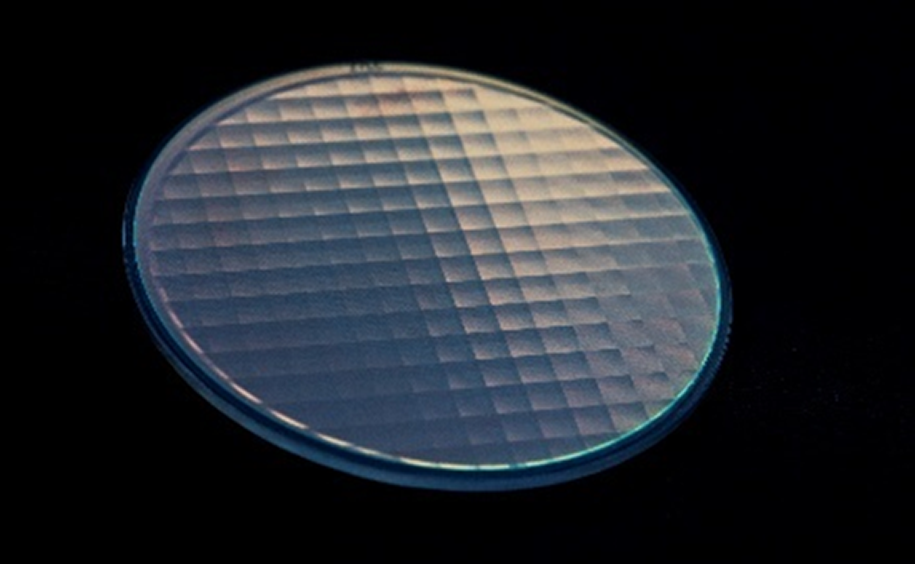
Figure 58 PowerPhotonic beam shaper for multi-kilowatt laser welding.
PowerPhotonic specializes in using freeform optics to shape laser beams in order to maximize laser system performance. For example, in 2015 PowerPhotonic announced a collaborative project with Lasertel Inc. (now Leonardo Electronics Inc.) to supply a new generation of precision micro-optics for compact megawatt-class laser diode pump sources, manufactured using PowerPhotonic’s unique laser direct-write technology. The novel patented optics provide precise beam shaping in an ultra-compact and reliable optic assembly, enabling Lasertel to collimate the world’s highest peak-power laser diode arrays supplied to LLNL for installation in the High Repetition-Rate Advanced Petawatt Laser System (HAPLS) supplied by LLNL for the EU’s ELI facility in the Czech Republic. HAPLS is capable of delivering laser pulses at a repetition rate of 10 Hz, each with peak power >1 PW.
Gooch and Housego (G&H)[372] was founded in 1948 and the headquarters are in Ilminster, Somerset. Over the years, G&H has grown through acquisition and organic growth. The company’s expertise in optical systems, subsystems and components extends from research through the development of prototypes to volume manufacturing, which allows them to service the aerospace, defence, industrial, telecoms, life sciences and biophotonics sectors. From 13 sites across the UK, USA and Asia, the capabilities span a broad range of photonic technologies: crystal growth, optical materials processing, acousto-optics and electro-optics, active and passive fibre-optic components, precision optics, opto-mechanical and medical systems.
As a spin-out from Merck Chemicals in 1993, Crystran Ltd[373] has decades of experience in crystal growth and optical polishing. With a 10,000 sq ft manufacturing facility based in Poole, Dorset, Crystran supplies a wide range of glass and crystalline materials covering the complete optical spectrum from 120 nm through to 60 μm. Such products include prisms, lenses, etalons and optical windows polished to form errors better than λ/20. Their range of processing equipment includes a whole host of CNC cutting/grinding machines (five-axis), double-sided and planetary pitch polishing machines. In addition, the company is heavily invested in metrology, able to objectively characterize material transmission, surface form and finish, and cosmetic quality to most international standards. Crystran has a global customer base, ranging from major international manufacturers of analytical and control instrumentation, aerospace companies and space agencies, to research establishments and most leading universities worldwide. Many of the original founding team still work at Crystran, passing on their expertise to the next generation.
Elliot Scientific Ltd[374] is a major supplier of opto-mechanic, laser, cryogenic, microscopic and spectroscopic systems and components to science, research and industry. Diversifying under its current Managing Director, Adrian Knowles, into optical and laser-based microscopies and spectroscopy, the company has grown and expanded from its roots in 1990 when it was founded by Mike Elliot in St Albans, Hertfordshire. Starting out as a distributor of lasers, optics and components, Elliot Scientific took over the product range and manufacture of some of the key building blocks used in optical alignment from Martock Design, a company dating back to the late 1970s and specializing in engineering design and fabrication of specialized mechanical parts and assemblies. The reputation was built upon the quality engineering of flexure stages (highly accurate and stable XYZ positioning mechanics), which are still today regarded as the ‘gold standard’ in positioning alignment, shown in Figure 59 with an earlier advert for the original Martock designed mount. Today, Elliot Scientific manufactures its own ranges that are marketed under the Elliot/Martock and Elliot Scientific brands, and also supplies products sourced from many leading companies. Their own brand products include the award-winning Elliot Scientific laser tweezer systems, optic mounting ranges, fibre positioning components, waveguide manipulators, automated alignment systems, micropositioners and the Elliot ‘gold’ flexure stages: still based upon the engineering excellence of the Martock Design ingenuity.

Figure 59 Advert from circa 1984 for the Martock Design opto-mechanics systems and accessories and its current successor the Elliot Scientific ‘Gold’ flexure stage.
John Hadland Photographic Instrumentation Ltd produced its first image converter-based framing camera in late 1966, and some three years later the first in-house designed streak camera was designed with 10 ps time resolution. Although physically cumbersome in design, it was soon adopted as a key diagnostic at AWE, several CEA laboratories in France and many universities across Europe. Figure 60 shows Alec Huston and John Hadland with the first production Imacon Streak Camera circa 1966–1967.

Figure 60 Alec Huston and John Hadland with the first production of Imacon Streak Camera circa 1966–1967.
The initial design was optimized, the resolution was upgraded to 5 ps and the dynamic performance improved by the incorporation of a multi-channel plate (MCP) intensifier in the mid-1970s. This new Imacon 675 camera design then became a key diagnostic at RAL and AWE for the characterization of the VULCAN and HELEN Nd:glass lasers at the primary, frequency doubled and frequency tripled wavelengths. The 675 technology was also used in a soft X-ray streak camera designated Imacon 475, which gave 12 ps resolution in the 0.2–1 keV range.
The 675 family was replaced by a new compact design in the early 1980s, which gave enhanced performance with 1.5–2.0 ps time resolution, improved dynamic range and low jitter. This new family of cameras was designated the Imacon 500. A mixture of Imacon 675 and 500 systems was used up to the early 2000s as on-line monitors at RAL.
During the middle 1970s, EPL, Belfast, and John Hadland Photographic Instrumentation Ltd were in competition for the streak camera market. Eventually EPL was absorbed into Hadland Photonics Ltd, the group name for the rapidly growing organization, which provided technology for the scientific and military research and services for the graphic industry. Hadland continued to manufacture and support their streak camera systems until the closure of the company in 2009 with support continuing to be provided by Specialised Imaging Ltd[375] of Pitstone, Buckinghamshire.
Photek Ltd[376] was formed in 1991 by Jon Howorth (see Figure 61), Ralph Powell, Martin Ingle, Geoff Holt and Mehmet Madakbas in St Leonards on Sea in East Sussex. They are a specialist manufacturer of vacuum-based tubes and camera systems for photon detection including photomultiplier tubes, streak tubes together with a range of associated electronics. Photek is considered the expert in large-area, ultra-high-speed imaging and advanced photon counting camera systems. Photek has a successful history of developing UV detectors for a number of high-profile space missions. Photek has collaborated with AWE and various US laboratories (LANL, LLE, LLNL) to push the performance of very high-speed photomultipliers and photodiodes, reaching a full width at half maximum of <100 ps and < 60 ps, respectively. The gating of the photomultipliers was improved to the point where the transition time from off to on can be as short as ~2 ns. Photek also collaborated with Kentech Instruments Ltd, AWE and LANL to produce the pulse-dilating photomultiplier, capable of resolving optical events to <10 ps.
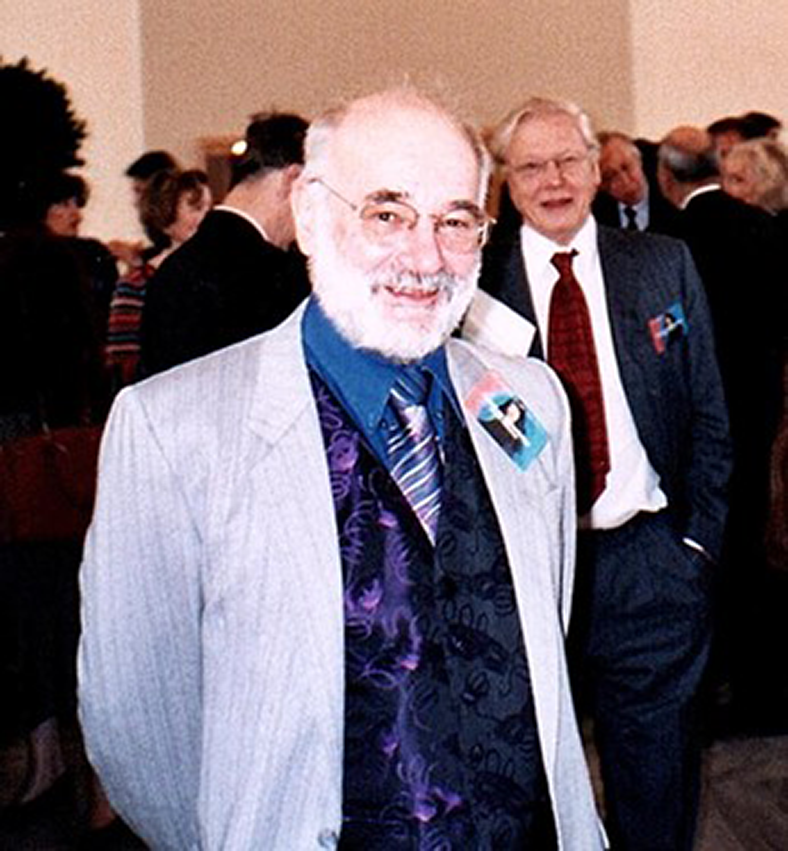
Figure 61 One of the founders of Photek, Jon Howorth, attending the Descartes Prize ceremony In Prague in 2004. Jon sadly passed away in October 2020. (Image courtesy of Jon’s family.)
Heraeus Noblelight Ltd[377], Cambridge, UK, is a manufacturer of xenon and krypton flashlamps for laser pumping. The company was originally founded as Noblelight in 1979 by brothers, John and David Littlechild. John had built up his skill as a scientific glassblower, previously working for TW Wingents, who won the early contracts to build flashlamps for AWE Aldermaston in the early 1960s. As the laser market expanded rapidly from research to industrial applications, Noblelight became a market leader in flashlamp design and expertise. They moved into purpose-built premises on the Cambridge Science Park, where they still reside and manufacture lamps today. Noblelight CW lamps were favoured by the industry and the original ‘Supalamp’ series significantly increased the operating life of flashlamp technologies.
In 1987, Noblelight was acquired by the German family company Heraeus and today continues to produce high volumes of predominantly pulsed flashlamps for lasers and other application areas. Heraeus has since engineered its own automated flashlamp manufacturing process, replacing the traditional highly skilled manual glassblowing. This automation won the Queen’s Award for Enterprise: Innovation in 2015. More importantly, this improved quality and extended operating life of flashlamps to such a degree that flashlamps now see continued use in applications previously predicted to lose out to other technologies. Today Heraeus is also designing and producing their own high-powered flashlamp-based systems which can be used in new application areas such as composites heating and rapid thermal processing. Many of the original team from Noblelight (and Q-Arc) including John Littlechild, Mike Garner, Martin Brown, Ian Grange (shown in Figure 62 working on a lamp in 1981), Debbie Playle, Abby Littlechild and Ben Jones are still involved today.
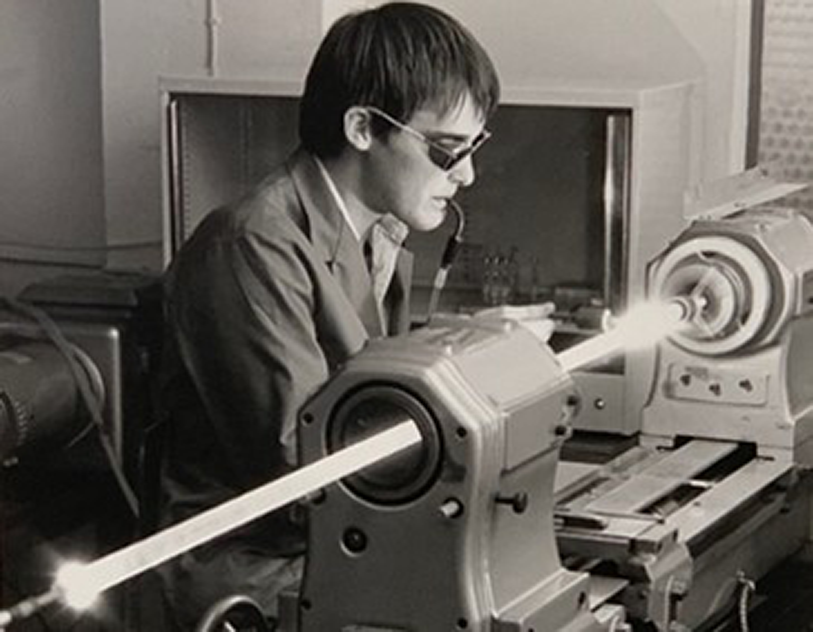
Figure 62 Lamp assembler Ian Grange operating a lathe at Noblelight circa 1981.
In 1985, John Littlechild decided to branch away from Noblelight and start his own flashlamp company Q-Arc Ltd. Q-Arc was originally based in Over, near Cambridge, but eventually had various premises in Bar Hill as the company expanded. Q-Arc started with just three employees and the first equipment and lamps were built in John’s home garage before premises could be secured. Q-Arc rapidly built a reputation for delivering high-quality pulsed lamps through innovative cathode development, backed up with strong technical knowledge. Hence it secured business with the major laser OEMs of the day including Lumonics, Haas Laser, Baasel Lasertech, Lasag and many others including the large flashlamps used in the VULCAN laser at RAL. At the time there was a large drive from the industrial laser sector and lamp pumped lasers were in high demand. The laser companies of the day were keen to push flashlamp performance to the limits. Eventually, in 1991, Q-Arc was acquired by ILC Technology (Sunnyvale, USA) and went on to form a very successful transatlantic partnership for many years to come. Finally, ILC Q-Arc went through several acquisitions and today the only remainder of the company is Excelitas, USA[378].
4.4 Micromachining companies
One area where lasers have made a unique contribution to industry is in the machining of micro components that cannot be manufactured conventionally, either due to their size or the material composition. A suite of capabilities has been developed over the years using a range of pulse lengths and wavelengths. Numerous companies and spin outs have been founded that have contributed and developed this area, and many are now leaders in the field.
Exitech Ltd was founded by Phil Rumsby and Malcolm Gower in 1984, as a spin-out from the CLF at RAL. The company concentrated on the development of novel industrial laser micromachining applications and the design and manufacture of industrial laser micromachining tools. M-Solv Ltd[379] was then founded by CEO Phil Rumsby. He has worked with lasers and their industrial applications for over 40 years. Initially Phil worked with ultra-high-power lasers for fusion reactor refuelling at the UK atomic energy authority at Culham and then within the CLF at RAL where he headed the High Power Laser Group supervising development and scientific use of VULCAN as well as their target fabrication group. After a short period as Business Development Manager for Oerlikon Optics UK he founded M-Solv Ltd in 2007. The company uses a number of laser sources ranging in wavelength from 266 to 1064 nm, and pulse widths from picoseconds up to microseconds. Techniques used are laser micromachining, laser scribing, laser ablation, laser annealing, laser micro-hole drilling, thin film removal, laser etching, laser micro-cutting, laser micro-marking, laser direct exposure, laser direct imaging (LDI) and many more direct write laser processing techniques.
In the 1990s, Oxford Lasers Ltd[363] successfully moved into precision micromachining, having been founded in 1977 to exploit the newly developed excimer laser technology at the University of Oxford. The company developed CVLs and exploited their ability to deliver high-power pulses which could be focused down to a spot of only a few thousandths of a millimetre in diameter. That allowed precise drilling of holes in very hard and difficult materials such as ceramics, aerospace alloys, silica, stainless steel and even diamond. Drilling the high-quality holes needed for gasoline injectors and ink-jet printers also became part of the company’s expertise.
The company is now a systems integration house supplying the semiconductor industry with state-of-the-art laser micromachining systems, shown in Figure 63, and undertaking batch manufacture of components under contract. CVLs are now a distant memory with Oxford Lasers now using the latest DPSSLs with nanosecond, picosecond or femtosecond pulse width as appropriate for each application. The company is now a supplier to many of the world’s largest semiconductor device manufacturers. It also has a business in high-speed imaging using short-pulse lasers and illuminators, some of which are manufactured in house.
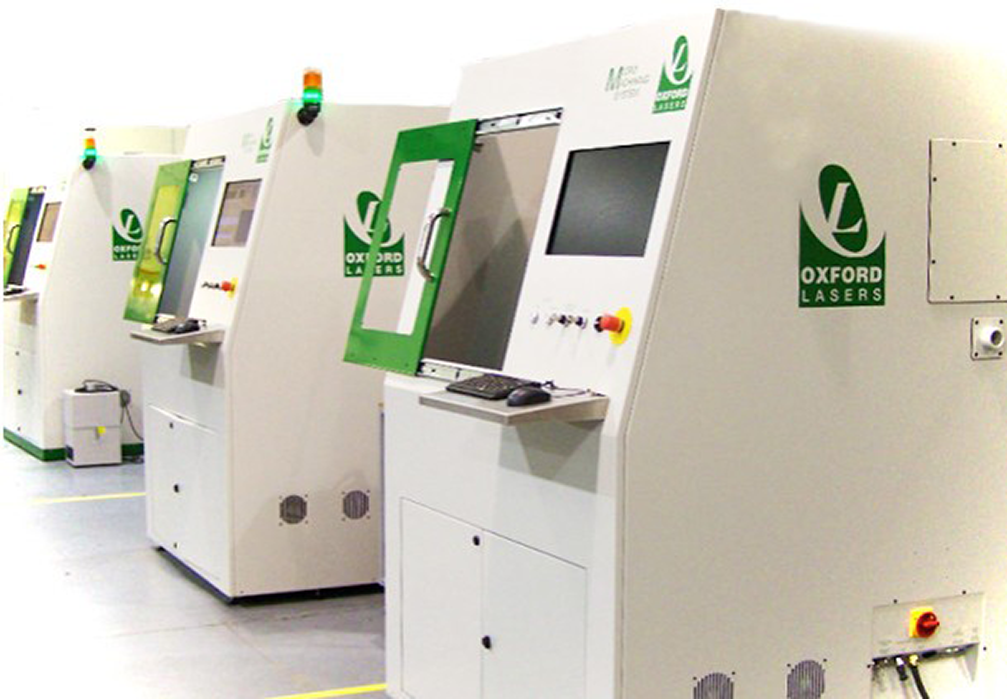
Figure 63 Oxford Lasers Ltd’s 3 J-Series micromachining systems.
Laser Micromachining Ltd[361] was founded by Nadeem Rizvi, shown in Figure 64, in 2005 to provide laser manufacturing services for industry. The company has since grown steadily and now supplies laser-made parts to over 600 companies worldwide, all produced at the company’s base in North Wales using laser tools built in-house by the company. Nadeem started his laser career at the CLF working on the VULCAN laser, before completing a PhD at Imperial College on femtosecond solid-state lasers. Following a move to Exitech, Nadeem worked with Phil Rumsby for nearly 10 years developing numerous industrial laser applications, especially with DUV excimer lasers. In the early years of Laser Micromachining Ltd, the company offered laser machining services using both excimer lasers and solid-state lasers. However, over the past few years, the excimer laser tools have been phased out to be replaced by the latest industrial nanosecond, picosecond and femtosecond laser systems. The company now makes millions of precision micro-parts for many industries with the main areas being medicine, biotech, microelectronics and sensors.
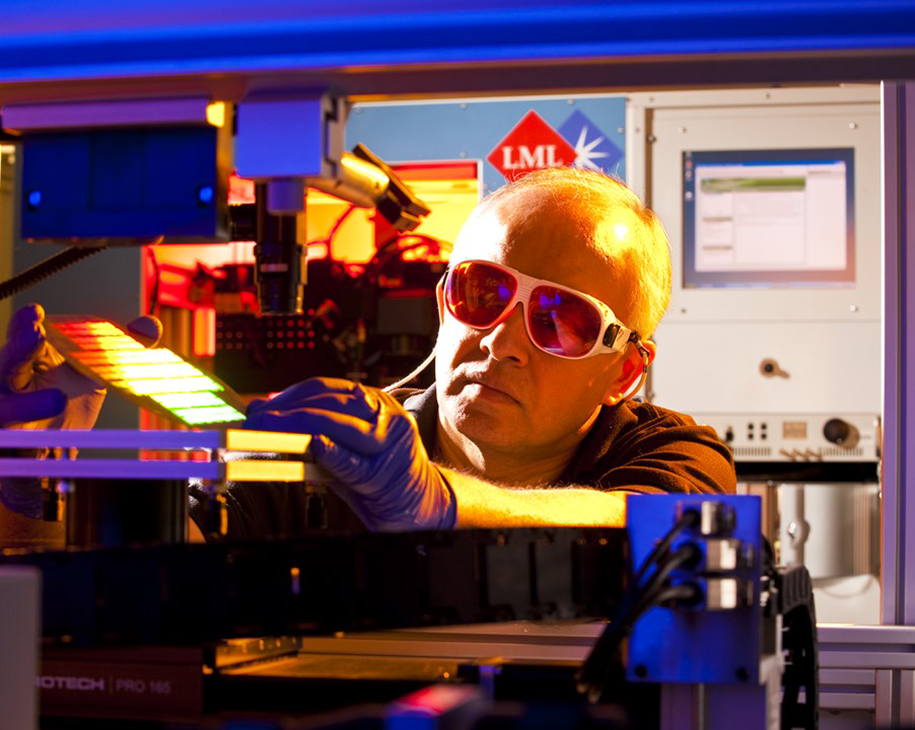
Figure 64 Nadeem Rizvi works on one of Laser Micromachining Ltd’s short-pulse laser tools for wafer patterning.
Scitech Precision Ltd[380] was set up in 2009 as a spin-out from CLF founded by Chris Spindloe and Martin Tolley, capitalizing on several decades of accumulated CLF expertise in the fabrication of specialist micro-targets for high-power laser experiments. It combines expertise in micro-assembly and micro-engineering with extensive insight into the physics behind high-power laser science. In 2016 Scitech Precision purchased the laser machining job shop business and the lasers from Micronanics[381], a company set up by Neil Sykes. It provided machine build and processing capabilities using nanosecond laser systems with sources from 193 to 1064 nm, thus reintroducing laser micromachining into the CLF. Micronanics still provides machine build services and Scitech Precision has since developed the capability to include fs laser machining and provides a laser micromachining service using excimer, 355 and 1033 nm lasers. They manufacture micro-targets and provide a laser machining service for the scientific community. Scitech Precision supplies components internationally and has delivered targets and machined components to facilities in the US, Europe and recently to a medical company in Australia.
4.5 Pulse power suppliers
Pulse power for lasers is provided by the discharge of a capacitor charged to between a few thousand volts and tens of kilovolts. This is switched either directly into a laser gas mixture itself or into a flashlamp which optically pumps a solid-state laser. The process requires a switch capable of holding off the required voltage, and then switching very large currents rapidly and reliably.
The pulse power requirements for different lasers vary. In the case of an excimer laser, a capacitor charged to 30 kV must deliver several thousand amperes into the laser gas with a current rise time measured in hundreds of nanoseconds or less. Power supplies for CVLs operate at lower voltages and currents, but must be switched at least 5000 times per second, requiring a switch with a high shot life as well as a very fast recovery time. Flashlamp-pumped lasers operate single shot or at very low repetition rates, generally between a few hundred and a few thousand volts with currents measured in the hundreds to low thousands of amperes. These pulses, although slow, can last for hundreds of microseconds.
The demand for commercial laser systems grew, so did the need for commercial high-reliability switches. Other high-voltage applications meant that mature switching technologies already existed in the UK at: the English Electric Valve Company (EEV, later e2V) Chelmsford, Essex using thyratrons; EEV Lincoln using spark gaps and ignitrons; and Marconi Electronic Devices Ltd (MEDL), also in Lincoln, using silicon-controlled rectifier SCR switches.
Thyratrons were developed in the early 1950s at EEV Chelmsford by Hugh Menown and by Ken Cook at MO-V, Hammersmith, West London (EEV and MO-V were part of the same group, a unit of GEC). Ignitrons were developed initially by ON Hooker, and cold cathode spark gaps came from the work of H. de B. Knight and Herbert, all at BTH in Rugby.
Gas discharge lasers, with the exception of copper and gold vapour, could use either a spark gap or a thyratron to discharge the energy storage capacitor. Sealed (cold cathode) spark gaps were designed for receiver protection, transient protection, jet engine ignition and subsequently crowbar protection. They operate single shot or at low repetition rates. Thyratrons, an example of which is shown in Figure 65, were developed for radar modulators switching the power into microwave tubes usually a magnetron or klystron. They use a hot cathode and a hydrogen (or deuterium) reservoir, both requiring heater power and designed to operate typically at several hundred pulses per second switching relatively modest currents. The choice of switch depended on the application. Where power and space were at a premium, for example, in portable or militarized systems, and provided that the repetition rate was relatively low and a modest shot life was acceptable, a sealed spark gap was the ideal choice.
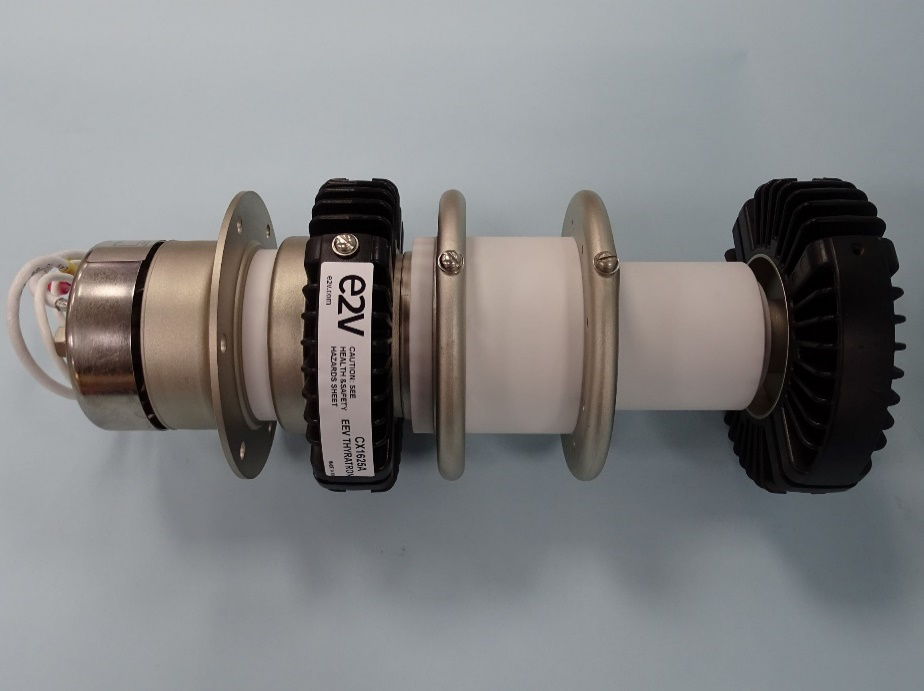
Figure 65 EEV’s CX1625A hollow anode thyratron designed for excimer lasers.
The flashlamps for very-high-power Nd:glass laser disc amplifiers such as VULCAN, RAL, and HELEN, AWRE, were switched with ignitrons manufactured at EEV Lincoln. These ignitrons operate at voltages of 25 kV and peak currents approaching 20 kA. They were filled with mercury vapour and developed for welding and similar applications. Figure 66 is a photograph of inside the VULCAN capacitor bank with an ignitron cabinet on the left; Ray Wyatt is seen making the bank safe. Much smaller compact systems could use a spark gap or even SCRs to switch the flashlamp.
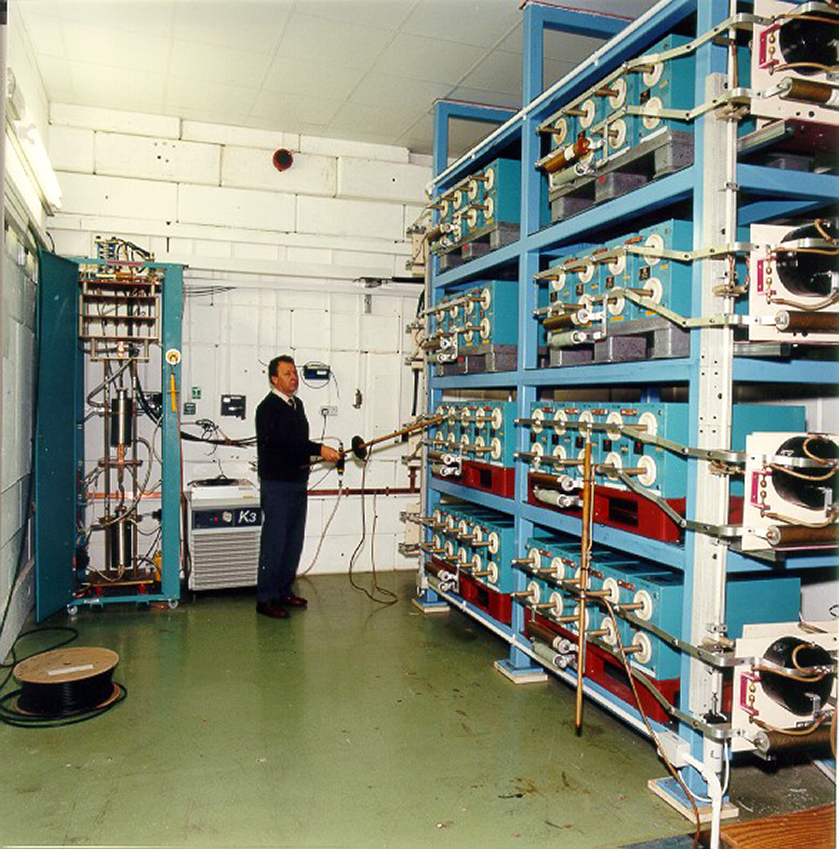
Figure 66 The CLF’s Ray Wyatt inside the VULCAN capacitor bank showing ignitrons in the left cabinet and HVR resistors in the main circuit. (Picture courtesy of STFC.)
Thyratrons (and spark gaps) are consumable devices, even if operated well within specification. Eventually the hydrogen or deuterium gas reservoirs in thyratrons will become exhausted and the device will cease to function. Several manufacturers in the UK sought ways of using solid-state switches since, in principle, these devices have a very long or infinite life. The most difficult task was to achieve the very fast rising currents needed for the laser discharge, and this was done with the use of rapidly saturating low-loss magnetic materials. It is notable that whereas a spark gap or thyratron can withstand occasional fault overloads exceeding specification by many times, solid-state devices will sustain damage from a single event where the fault-maximum, voltage, current or the rate of change of current is substantially exceeded. Thus, to be successful, laser discharge circuits using solid-state devices had to be very carefully designed such that these specifications were never exceeded. UK laser companies began to exploit these technologies such as Oxford Lasers and Laser Applications in Hull.
Important work by Frank Wakeman and Ashley Golland at Westcode Semiconductor[382] in Chippenham, with significant developments in magnetic pulse compression techniques at Cymer Laser meant the San Diego company used Westcode’s R355 series distributed gate thyristor for pulsing excimer lasers. The application was semiconductor lithography, very important in the development of silicon chip technology. For a long period in the early 2000s these Westcode devices gave the Cymer Lasers the reliability they needed to give the company an important technical edge. Westcode produced other pulsed power systems for pulsed UV and high-reliability crowbarring applications on CERN’s LHC, but the pulsed excimer work is their standout contribution to laser physics.
Hartley Measurements Ltd was founded in 1970 by Desmond Warrilow, based in Basingstoke, Hampshire, and was a manufacturer of high-voltage DC power supplies and capacitor charging units, which were sold globally. To complement these supplies Hartley Measurements also built high-voltage resistors and distributed for companies Ross Engineering, Glassman, CSI Capacitors and Boston Laser, whose products included high-voltage relays and probes, low-ripple and very-high-voltage DC supplies, high-voltage capacitors and high-voltage spark gaps. Eventually, the company moved into automatic test equipment for testing cable harnesses and ESD simulation, and in 1989 moved its manufacturing down to Plymouth, Devon, with the company finally closing its doors in 1995.
Located in Jarrow, Tyne and Wear, UK, HVR International Ltd[383], is a world leader in the manufacture of high-voltage, high-energy, non-inductive ceramic carbon resistors, developed by Bill Brass and Denzil Price. These products have been produced on the Jarrow site since 1963, initially under the name Morganite Resistors, then Allen-Bradley Electronics and finally HVR, which was founded in 1991. During the Morganite Resistor era, the company pioneered the development of a resistor to replace a metallic product in EHV Switchgear. Electrical transmission systems worldwide now utilize these ceramic carbon resistors in this application. The scope of application for these resistors ranges from joules to megajoules. Their high-voltage and high-energy properties are utilized in a wide range of applications including electrical transmission, pulsed power, AC/DC drives, traction, dummy loads and pulse-forming networks.
4.6 High-voltage pulsers
As laser systems grew, the need for gating or isolation of the lasers and subsequent amplification became ever-more important and companies such as Leysop, Kentech Instruments and Bournlea Instruments developed ultra-fast high-voltage electronic pulsers to power devices such as Pockels cells and Faraday rotators.
John Ley, based in Basildon, Essex, has been a key player in the UK, manufacturing laser components and subsystems. He established Electro-Optic Developments Ltd (EOD) in 1968, manufacturing electro-optic components. EOD was sold to Crossfield Electronics in 1985. In 1986 he established Leysop Ltd[384], which specialized in electro-optic and passive optical components such as Pockels cells, Q-switches, Faraday rotators and isolators. The company also produced high-voltage drive electronics for Pockels cell modulators. Leysop is still actively trading. In 1999 John co-founded Advanced Optical Technology Ltd (AOT) with Clive Ireland, developing nanosecond DPSSLs for scientific research and micromachining. AOT made an agreement with InnoLas Germany in 2011 to manufacture AOT’s sub-nanosecond systems[385]. InnoLas re-engineered and packaged it as the Picolo series, which is still on sale today. AOT ceased trading in 2017.
Kentech Instruments Ltd[386] was established in 1983 by Anthony Dymoke-Bradshaw, Jonathan Hares, John Westlake and Joe Kilkenny (now the Scientific Diagnostic Leader on the NIF, LLNL, USA) spinning out of Imperial College London. They produce high-voltage fast pulse generators, X-ray streak cameras and gated detectors for large-scale laser facilities worldwide, high-rate gated imagers for real-time fluorescence lifetime imaging spectroscopy (FLIM) and arbitrary waveform generators used to shape the laser pulses in very large facilities, e.g., Laser MegaJoule, France, and Omega, University of Rochester, USA. Figure 67 shows Jonathan Hares and Anthony Dymoke-Bradshaw with one of their first ultra-high-speed cameras for an article which appeared in the Telegraph newspaper following the announcement of them winning the 1993 IOP Clifford Paterson Medal and Prize ‘for exceptional early-career contributions to the application of physics in an industrial or commercial context’. The company has also been at the forefront in the development of pulsed drift time dilation devices that have extended fast gating of X-ray cameras to the 5 ps level and reduced photomultiplier tube response time to ~10 ps. Their original premises were in South Moreton, Oxfordshire, occupying farm converted business units, for a time in a former pigsty, until moving to new premises at Howbery Park, near Wallingford, Oxfordshire.
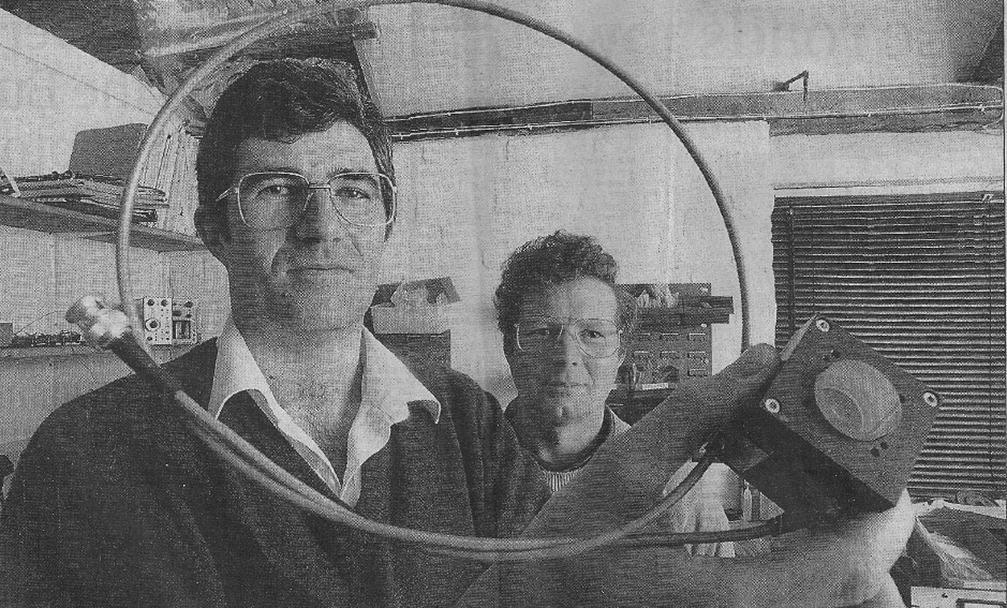
Figure 67 Jonathan Hares, foreground, and Anthony Dymoke-Bradshaw show off one of their first ultra-high-speed cameras for an article ‘High speed picture of success’ as appeared in the Telegraph, 30 November 1992. (Image copyright Telegraph.)
Bournlea Instruments Ltd[387], initially known as Cardon Instruments, was first established in Earls Colne, Essex, by Harry Kitchen in the mid-1980s. It later moved to Cromer, Norfolk. Bournlea established itself as an international supplier of pulser and high-voltage generators for all applications including Pockels cells, high-energy physics and accelerators. They established themselves as a preferred supplier to US and UK national laboratories, in particular LLNL in the USA.
4.7 Laser system/component distributors
It is important for UK laboratories, universities and industry to have easy access to technology provided by overseas laser suppliers, along with the associated subsystems and support equipment. Several companies were established to service this requirement together with a laser trade show which started in 1972 and is still active now as Photonex.
A major event for the industry and community has been the UK’s annual laser trade show held in the Metropole Hotel in Brighton for many years. Initially it was associated with the biennial conference Electro Optics International and then Electro Optics and Laser International (EOLI) UK. To the laser community it was very much a day by the seaside to look forward to each year. Having outgrown the Metropole, in 1990 EOLI moved to the NEC, Birmingham, for two years when it was renamed FOLEO (Fibre Optics and Electro Optics International) before the first Photonex event, under a new organizer, was held in Leeds in 1992. After a return to Brighton in 1993 it was subsequently held in Kettering (shown in Figure 68), Cardiff and Telford before finding a home for eight years at the National Agricultural and Exhibition Centre (NAEC) in Stoneleigh, Warwickshire in the 2000s. In 2011 it moved to its current location at the Ricoh Arena, Coventry. Photonex has established itself as the UK’s premier showcase event dedicated to photonics and light technologies.
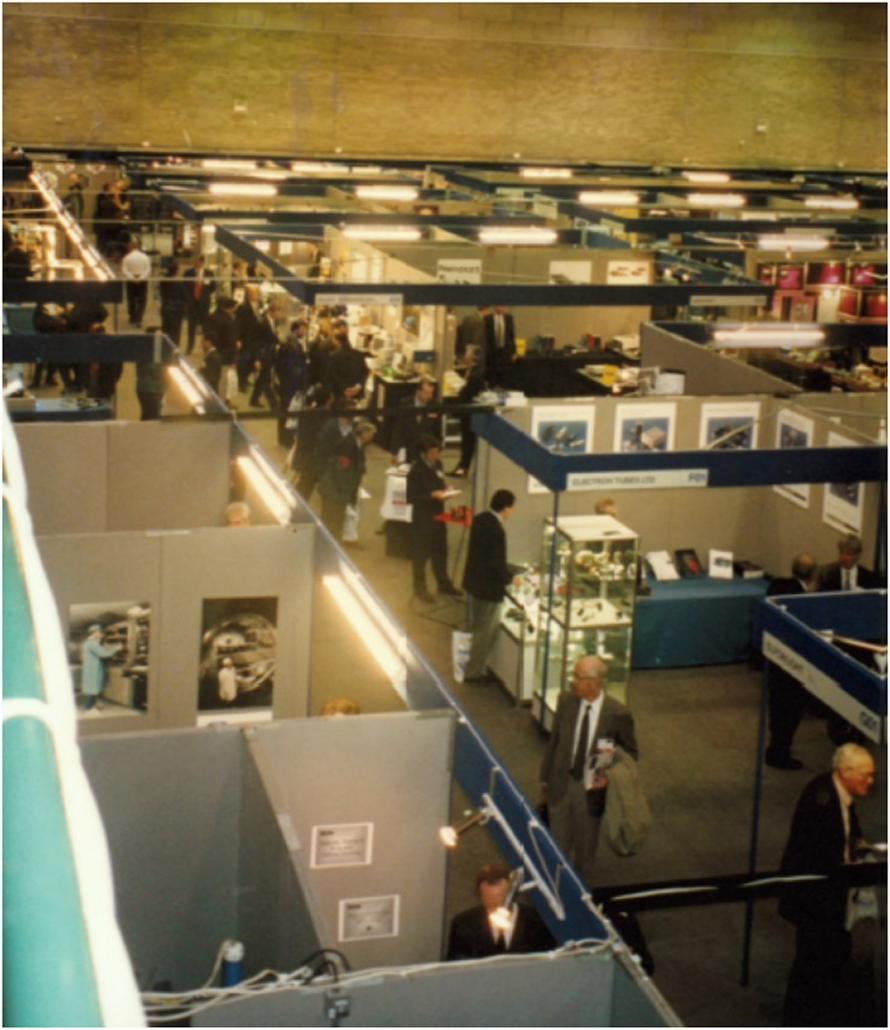
Figure 68 Photonex ’97 held at the Kettering Leisure Village.
As Photonex grew it attracted several parallel meetings including: the High Power Diode Lasers and Systems Conference, which has been running biennially with Photonex for many years; the VacuumExpo which has been running for over 10 years; and, more recently, a meeting on biophotonics and biomedical microscopy with a special area designated the Quantum Technologies Specialist Zone. In 2020 Photonex was acquired by SPIE which hails a new era for this successful event.
ALRAD[388] was founded in 1970 by Douglas Alderton in Newbury, Berkshire. It is a provider of scientific equipment and components to the OEM market, industry and research. The company specializes in product areas that cover imaging and machine vision components, photonics components including laser products, embedded artificial intelligence and deep learning systems and Internet of Things (IOT) products including RFID components and systems. After 50 years of trading, it is still very active.
Laser Lines Ltd[389] was founded in 1975 by Ted Paine in Banbury, Oxfordshire, and represented many of the leading laser companies from the USA, later expanding to those in Europe. They were quickly the largest distributor of lasers in the UK. The early players included ILC, Molectron lasers, Liconix HeCd lasers and laser glass from Owens Illinois. Laser Lines remains one of the leading suppliers of 3D printers and additive manufacturing systems, as well as industrial laser processing equipment and photonics products. Laser Lines can be seen exhibiting at the 1976 Electro-optics show in Brighton in Figure 69.
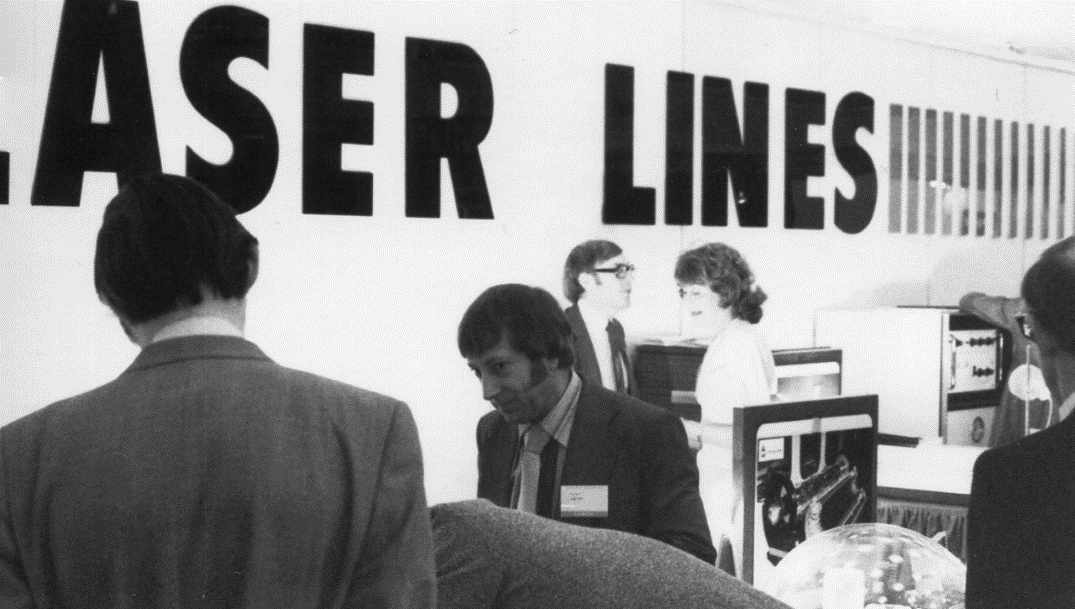
Figure 69 Laser Lines exhibiting at the Electro-optics show in Brighton 1976. Ted Paine can be seen in the middle with the sideburns.
Lambda Photometrics Ltd[390] was founded in 1977 in Harpenden, Hertfordshire, by Bob Carless as one of the first UK and Ireland distributors of lasers, optics and related technologies. Distribution agreements were signed with Zygo, Quantel and Stanford Research Systems, most of whom remain with Lambda today.
Instruments SA, and its predecessor companies Spectra Park Scientific/Glen Spectra, were established in the late 1980s by its then Managing Director Allen Benattar. It was a distribution company for optics and, importantly, as the UK supplier of Jobin Yvon (J-Y) gratings and instruments. They provided access to some of the novel and ground-breaking innovations in diffraction grating technology developed by J-Y and used in ultra-high-power laser systems such as those at the CLF and AWE (see Sections 1 and 2 of this review). The Instruments SA group of France (the J-Y holding company) acquired the UK company in the 1990s and whilst the Instruments SA name is no longer used, Jobin Yvon branded products are still manufactured by the HORIBA[391] group of Kyoto, Japan, thus maintaining its heritage in optics.
Several other laser and component distribution companies were established in the UK through the 1980s and 1990s. AG Electro-optics was founded in 1981 in Tarporley, Cheshire, by Andy Gibson (hence, the AG in the name) specializing in fibre-optic components, advanced optical instruments, lasers and laser safety wear. AG was sold in the late 1990s.
Laser SOS Ltd[392] was established in 1984 in St Ives, Cambridgeshire, providing laser components and systems. It has expanded and become one of the leading global suppliers of solid-state laser sources, retrofit laser parts, consumables and associated products for many hundreds of different systems. Another Cambridgeshire company, Laser2000[Reference Laser393] was established in 1992 in Huntingdon supplying lasers and accessories.
Optilas Ltd was founded in 1986 by Peter Blyth and located in Milton Keynes, Buckinghamshire, as a representative and distributor of many well-known laser manufacturers including optoelectronic products primarily from the USA, France and Germany. With two laboratories Optilas could commission, test, repair and demonstrate many of its products. Optilas expanded rapidly with the explosive growth in fibre-optic technology and supplied vital components to the fibre-optic installers of submarine cables providing global internet digital communications. The portfolio of products included a broad range of scientific lasers, a full complement of laser test equipment, IR cameras and safety eyewear. Components included non-linear crystals, modulators and detectors.
In 1998, a multi-billion-dollar global electronic component distributor, Avnet Inc., Phoenix AZ, USA, purchased Optilas and merged the company with one of its European subsidiaries BFI Ibexsa. The merged company was renamed BFI Optilas and Peter remained as Managing Director of the former Optilas division until early 2002. The company subsequently migrated from a laser manufacturers’ representative to a distributor of items that could be centrally warehoused in Germany. Peter with two former employees Robert Yeo and Ian Stansfield founded Pro-Lite Technology[394] who are currently located on the Cranfield University complex. Pro-Lite started with the sales and distribution of lasers and photonic products with Peter retiring in 2006. Pro-Lite now has a strong technical focus on light measuring test equipment, photometry and spectral measuring products.
Laser Components GmbH[395] was founded in 1982 by Günther Paul for the sale and production of lasers and optoelectronic components, and since 1993 has been based in Olching, Germany. As well as the headquarters in Germany, there are offices in the UK, France, Sweden and the USA, along with production facilities in Germany, Canada and the USA. The UK sales office was opened in 1993, and Chris Varney, who has been in the laser industry since 1982, was appointed as Managing Director in 1999. Laser Components manufactures pulsed laser diodes (PLDs) at 850–1550 nm and PLD drivers for direct integration into the modules. Their QuickSwitch® PLD has the world’s shortest pulse duration. Many different industries are served, including the laser industry, medical, military and automotive fields, and as a manufacturer they have specialized in developing custom solutions.
Photonic Solutions[396] is an independent UK supplier of lasers and optoelectronic products for cutting-edge research and industry. Established in March 1999, the company is recognized as one of Europe’s leading optoelectronics companies with an impressive track record of success. When the company was founded it had two key drivers: first, to be a solution-based rather than product-based company; and, second, to offer local support and service capability for all the lasers it supplied. The ability to provide excellent technical support continues to be one of the core strengths of the business. Based at Heriot-Watt University Research Park, Edinburgh, the products form the core of optoelectronic solutions including lasers, optics, spectroscopy instrumentation and imaging solutions. Photonics Solutions is the exclusive distributor for over 30 internationally renowned manufacturers of world-leading laser systems, research grade spectroscopy solutions, cutting-edge microscopy and imaging solutions, together with optics, laser diagnostics and detectors for the photonics sector.
4.8 Conclusion on UK industry
In this section, we have highlighted many of the UK companies that have played a major role in the development and supply of laser systems and components for industry, academia and national laboratories. It is clear that certain individuals have driven many of these developments and that spin-out companies from universities have exploited academic endeavours. Many individuals have learnt their craft in established companies and then established their own companies to enhance the UK marketplace. It is also important to recognize that many of these contributions have had a major impact on the international stage.
5 UK defence sector
5.1 Introduction
To be useful in military applications, lasers and their platforms must be capable of long-term reliable operation over wide temperature ranges, under extremes of vibration, shock and humidity without the need for any “tweaking”. These requirements have thrown up significant engineering challenges that have been overcome to enable wide scale deployment on land, sea and in the air.
For the reader not familiar with in-service applications, the major types of in-service application are:
• rangefinding;
• target designation;
• IR countermeasure (IRCM) systems;
• active imaging systems;
• laser dazzle systems;
• directed energy weapons (DEWs).
Rangefinding
Rangefinding is the original application, going back to the 1970s. It uses a pulsed laser to measure the round-trip time between the observer and the target, to assist with accurate gunnery in a tank or ship, or to enable an accurate weapons release from the air.
Target designation
This uses a laser spot to mark the intended target so that laser guided munitions can accurately home in on it. Laser designation dramatically increases the accuracy of bombing or missile strikes, and also has the benefit of radically reducing the likelihood of collateral damage to any adjacent civilian facilities.
IRCM systems
Using a directed, modulated beam to spoof the guidance system of a heat-seeking missile provides a highly effective defence for aircraft and helicopters.
Active imaging systems
Most imaging systems either rely on self-luminous sources or objects which are illuminated by scattered light from a luminous source. An alternative luminous source is a laser and this application has found widespread use on the battlefield. Laser diodes are used in conjunction with image intensifiers. Normally a pulsed laser is used in conjunction with a time gated camera to derive either a 2D or 3D image.
Laser dazzle systems
Obviously, the use of lasers operating in or near the visible waveband gives the potential to temporarily blind or distract an enemy (a dazzle system), or even to cause permanent blindness (a blinding system). Laser blinding systems were banned under a 1980 United Nations Convention. Dazzle systems, however, have continued.
DEWs
There have been many programmes around the world aimed at using the laser beam itself as the weapon, to destroy missiles, aircraft, shells or satellites by concentrating sufficient thermal energy to actually destroy the target. Despite many years in development, the idea of using a laser to thermally destroy a hard target seems to have been accepted as impracticable. However, there are interesting recent developments that have focused on the type of smaller, more vulnerable targets seen in modern warfare, such as drones and small boats.
It is noteworthy that the UK has always enjoyed a high profile in military laser design and manufacture. Two companies, co-incidentally both based in Scotland, have been involved in laser development since the first demonstration of the laser. Ferranti was involved from the outset, including very successful deployment of lasers in the Falklands and the Gulf. The successor company, Leonardo, currently takes around 75% of the military laser airborne market worldwide.
The following sections outline some of this rich history and introduce some of the government research laboratories that have contributed. Note that there was a lot of acquisition and consolidation in the industry over time and so the names can be a little difficult to follow.
5.2 UK defence companies
GEC was a powerful force in the market and made a number of important acquisitions.
The Marconi Company was a British telecommunications and engineering company that conducted business under that name from 1963 to 1987. It was derived from earlier variations in the name and incorporation, spanning a period from its inception in 1897 until 2006, during which time it underwent numerous changes, mergers and acquisitions. The company was founded by the Italian inventor Guglielmo Marconi and began as the Wireless Telegraph and Signal Company. The company was a pioneer of wireless long-distance communication and mass media broadcasting, eventually becoming one of the UK’s most successful manufacturing companies. Marconi was acquired by English Electric in 1946 and operated as Marconi. In 1967–1968, GEC took over English Electric continuing to operate as Marconi until 1987 when they became GEC Marconi. GEC also acquired Ferranti in 1990 and the defence side of Plessey in 1989. In 1996, it was renamed Marconi Electronic Systems. In 1999, its defence manufacturing division, Marconi Electronic Systems, merged with British Aerospace to form BAE Systems. In 2006, extreme financial difficulties led to the collapse of the remainder of the Marconi company, with the bulk of the business then being acquired by the Swedish telecommunications company, Ericsson.
The GEC Marconi unit at Borehamwood was sponsored by the MoD to develop CO2 laser rangefinders. These had potential advantages over conventional Nd:YAG rangefinders in being better able to penetrate high-moisture atmospheric and weather conditions. The unit at Basildon also developed and deployed the Thermal Imaging Common Module, the TICM II thermal imager that was extensively used in tank sights, the Phoenix unmanned aerial vehicle (UAV, drone) and the Ferranti TIALD airborne laser designator pod. The TICM II programme originated with the RSRE in 1976 and the GEC contract was placed in 1980.
Ferranti through to Leonardo in Edinburgh
Ferranti Defence Systems Ltd (FDSL) was part of Ferranti plc, a company that could trace its history back to 1885. It had a track record of significant innovation including the UK’s first commercial power station and among the world’s first commercial computers. Ferranti came to Edinburgh in 1943 and established a site at Crewe Toll to manufacture a gyro-stabilized gun sight (known as the Mark IIC) for the Spitfire and other aircraft[Reference Ferranti397, 398], which, for the first time, gave fighter pilots a true lead angle aiming capability. This product is shown in Figures 70 and 71. The sight and its derivatives remained in manufacture for 73 years until a production run of over 60,000 units finally came to an end in 2016. After the end of WWII, the Crewe Toll site focused on the development and manufacture of radar systems and Ferranti itself grew and developed many capabilities. For example, the Valve Department had design and development sites within Edinburgh in Granton and production facilities in Dundee.

Figure 70 A Ferranti MK11C gyro-stabilized gun sight. (Picture Courtesy of Leonardo.)
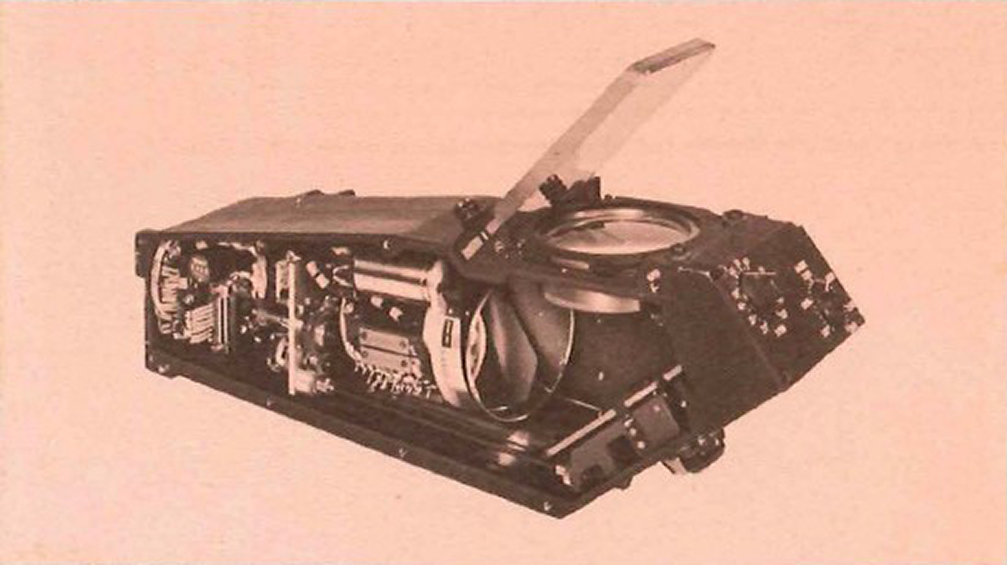
Figure 71 An image of the gun sight from a Ferranti ISIS Century brochure. (Picture Courtesy of Leonardo.)
In 1963, the Valve Department in Edinburgh, led by Neil Forbes and Graham Clarke as Chief Engineer[Reference Clarke399], developed a HeNe laser, the Ferranti Laser Mk 1, which was the first commercial laser available in the UK. HeNe lasers, in the form of ring laser gyros for artillery pointing system are still manufactured at Crewe Toll today. Figure 72 shows an example of the resonator from a ring laser gyro.
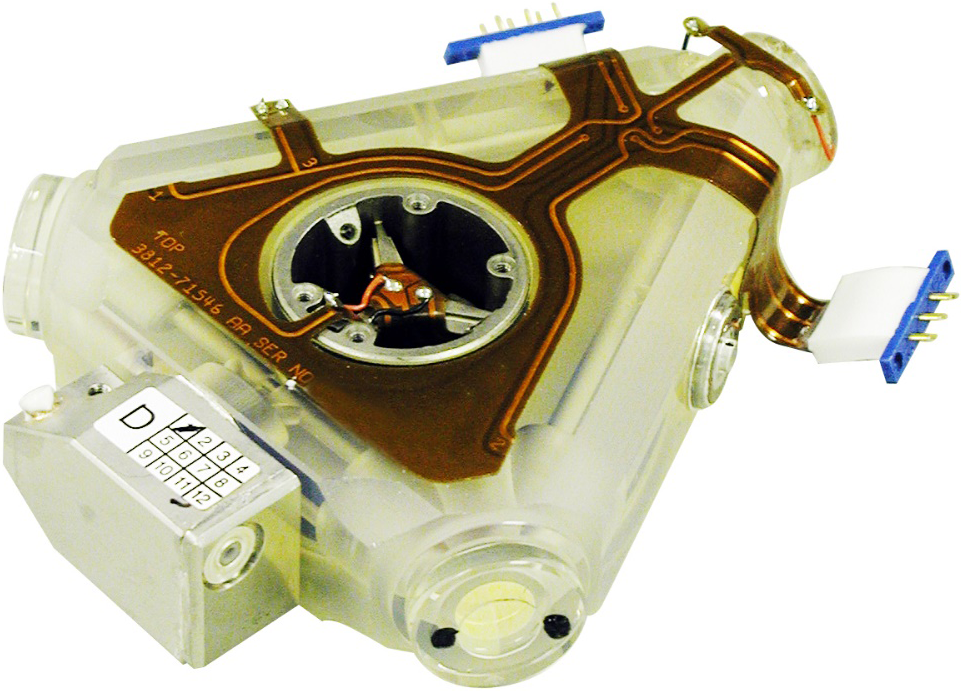
Figure 72 A HeNe laser resonator designed to operate as a ring laser gyro. (Picture courtesy of Leonardo.)
During the early 1960s, the RRE in Malvern developed a neodymium calcium tungstate laser which was made available to Ferranti when they won a competition to develop an experimental laser rangefinder and TV sight packaged with a gyro-stabilized mirror mechanism[Reference Blain400]. A related contract for the Royal Aeronautical Establishment (RAE) Farnborough won in 1968 introduced a laser spot tracker; thus was born the Laser Rangefinder and Marked Target Seeker (LRMTS) for the Jaguar and Harrier aircraft.
By this point it was clear that a different laser solution was required and Ferranti obtained a starting point by swapping their well-developed radar technology for a Nd:YAG laser from Westinghouse[Reference Blain400, Reference Barr401]. One of the existing Ferranti versions of this laser is shown in Figure 73. It became very clear that this laser had limitations particularly when operated over the required temperature range. The problem was traced to the laser resonator which comprised a plane mirror and a Porro prism. As is well known this combination is, at best, only partially perturbation stable. The result was that Ferranti embarked on a recovery programme resulting in a resonator design based on crossed Porro prisms with Q-switch, a member of a class of perturbation stable resonator types successfully used in military systems[Reference Barr401, Reference Gould, Jacobs, Rabinowitz and Shultz402]. In addition, the problems in Q-switching at a variable temperature had to be overcome[Reference Heywood and Eggleston403]. The revised design was inherently stable against any distortion of the structure, which is extremely important when trying to produce a laser that can perform reliably in harsh military environments. The Ferranti design was a real technical game-changer and it has been widely imitated across the industry.
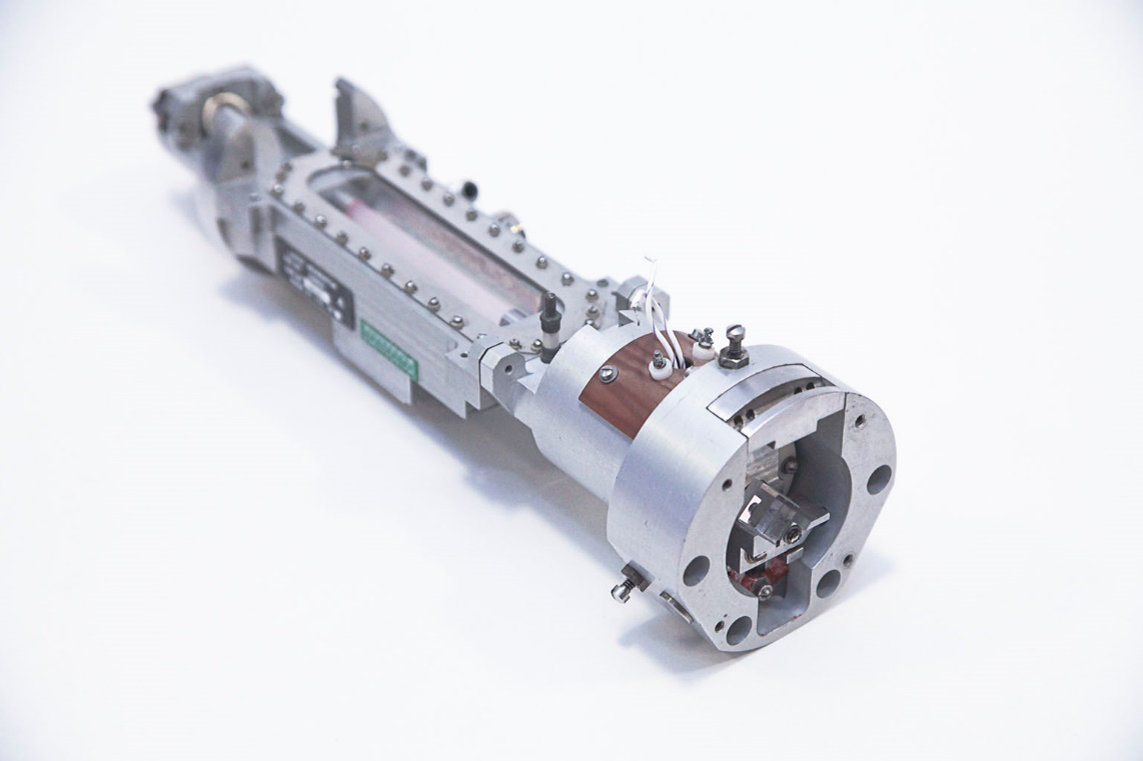
Figure 73 The Ferranti version of the Westinghouse Nd:YAG laser acquired via a radar for laser swap in 1966. The Porro is visible on the right-hand side while the mirror is at the far end. The Nd:YAG rod and pump chamber are visible in the centre of the structure. (Picture courtesy of Leonardo.)
The LRMTS product, shown in Figures 74 and 75, first flew in 1971 and went into production in 1974. It was operational on Tornado aircraft for their entire service life, from 1979 to 2019 as well as Harrier and other aircraft.
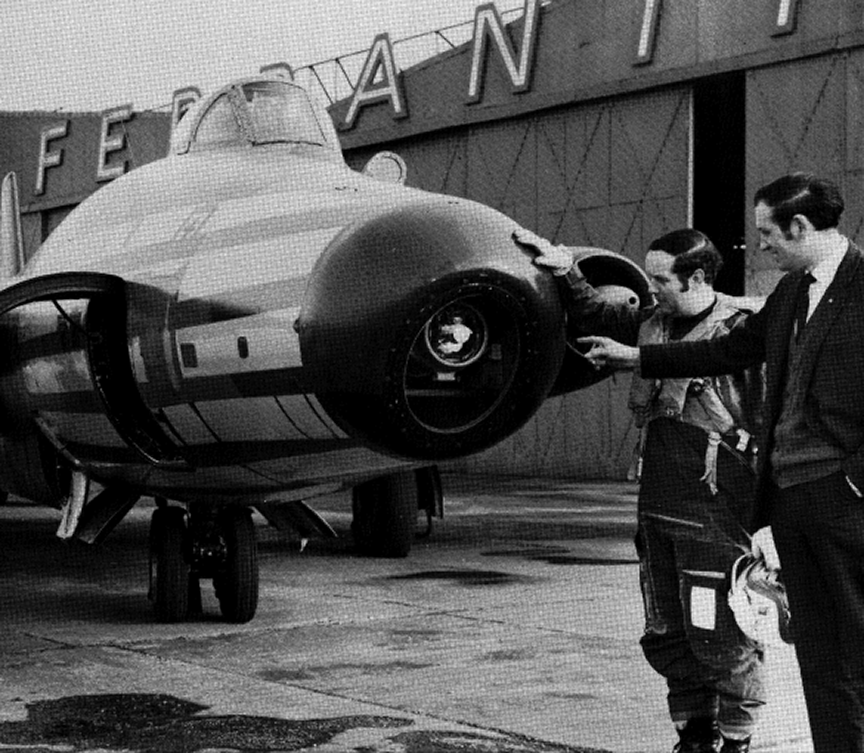
Figure 74 Reviewing the installation of the prototype LRMTS onto the Canberra test bed at Turnhouse Airport circa March 1971. (Picture courtesy of Leonardo.)

Figure 75 The LRMTS showing the stabilized sensors. (Picture courtesy of Leonardo.)
In 1972 a derivative of the LRMTS laser was built into a man-portable laser target designator (the Laser Target Marker, Type 306). This was procured by the UK armed forces and was first used during the Falklands conflict in 1982[Reference Ferranti397]. RAF Harriers equipped with the LRMTS supported ground troops using a Type 306 LTM to designate a target near Port Stanley from Sapper Hill. Using a lob and toss technique, the weapon was released out of sight from the target area with high accuracy resulting from terminal guidance by the LTM. The Type 306 LTM is shown in Figure 76 and, for comparison, a modern man-portable laser designator is shown in Figure 77.
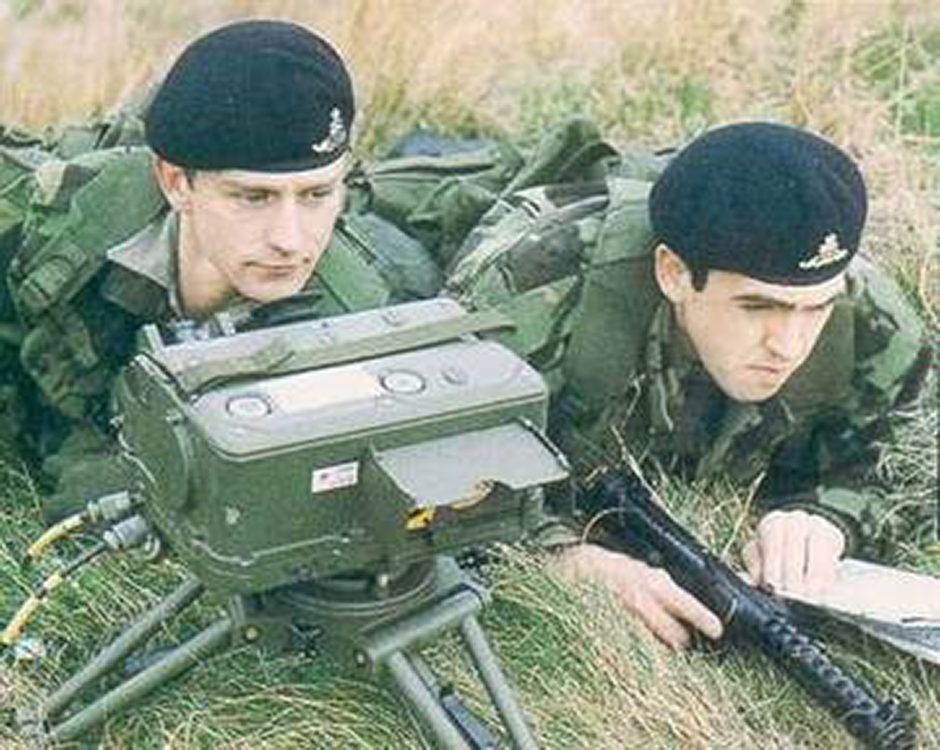
Figure 76 The Ferranti Type 306 Laser Target Marker (LTM). (Picture courtesy of Leonardo.)
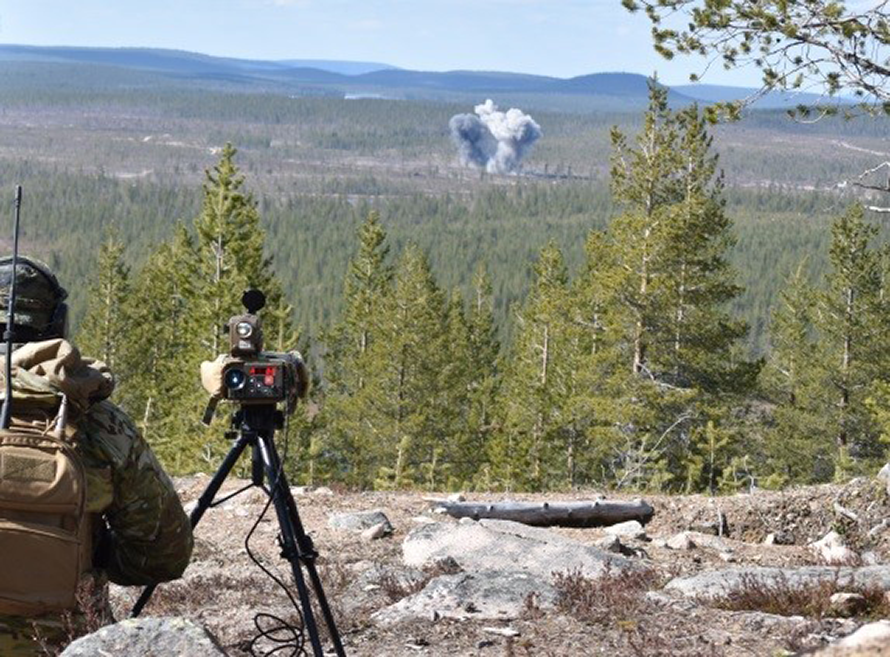
Figure 77 Leonardo’s modern Type 163 laser designator during a live fire test. (Picture courtesy of Leonardo.)
By the 1980s the military laser system activities were located in a factory (actually a former biscuit factory) in Robertson Avenue, Edinburgh. The laser business was under John McLeod (who took over from Muir Ainslie) and the systems business was run by Malcolm White (who took over from Bill Blain). The whole electro-optics business was overseen by Ron Dunn. The Ferranti teams were also working with the UK and US military on other product lines including higher-power lasers, IRCM sensor-defeat systems, dazzle systems, counter and counter-counter measure systems and missile seeker heads.
In the early 1990s, Ferranti made a significant contribution to the first Gulf War. The TIALD (Thermal Imaging Airborne Laser Designator) pod was already in development as the world’s first fully stabilized airborne laser designator platform that could ‘see’ at both thermal imaging (infrared) and TV (visible) wavelengths. As the Gulf War approached, it was still a year before the formal in-service date for the system, but after accelerated proving and user training in the UK, the company rushed two demonstrator systems to the Gulf and they were fitted to Tornado aircraft operating from Tabuk airbase in Saudi Arabia. The pods were an immediate success with the RAF, demonstrating for the first time the capability to drop weapons from a safe altitude whilst achieving the 100% targeting precision that comes with laser designation. The results were regularly shown on the UK national TV news. The Defence Secretary, Tom King, briefed parliament that TIALD had made a significant contribution to the UK war effort and the Prime Minister, John Major, visited the TIALD production facility.
The two pods achieved an amazing 99.1% uptime while delivering 229 direct hits on target in just 18 days. This was achieved by ‘hot podding’ the two demonstrator units. They would be rushed off one Tornado that had just completed its mission, fitted to another and then straight back up in the air. The two TIALD pods were greatly liked by their RAF users who fondly christened them Sandra and Tracey. Sandra is currently displayed fitted to a Gulf War Tornado at the Imperial War Museum Duxford.
TIALD comprised 14 line replaceable units (modules) as shown in Figure 78. Ferranti produced the laser, the stabilized platform and was the prime contractor; GEC provided the thermal imager; and BAE Systems provided the auto-tracker. The overall system provided a stabilized platform that could stay locked onto the designated target throughout any aircraft manoeuvres, both day and night[Reference Blain400, Reference Barr401]. The pod is shown fitted to a Tornado aircraft in Figure 79.
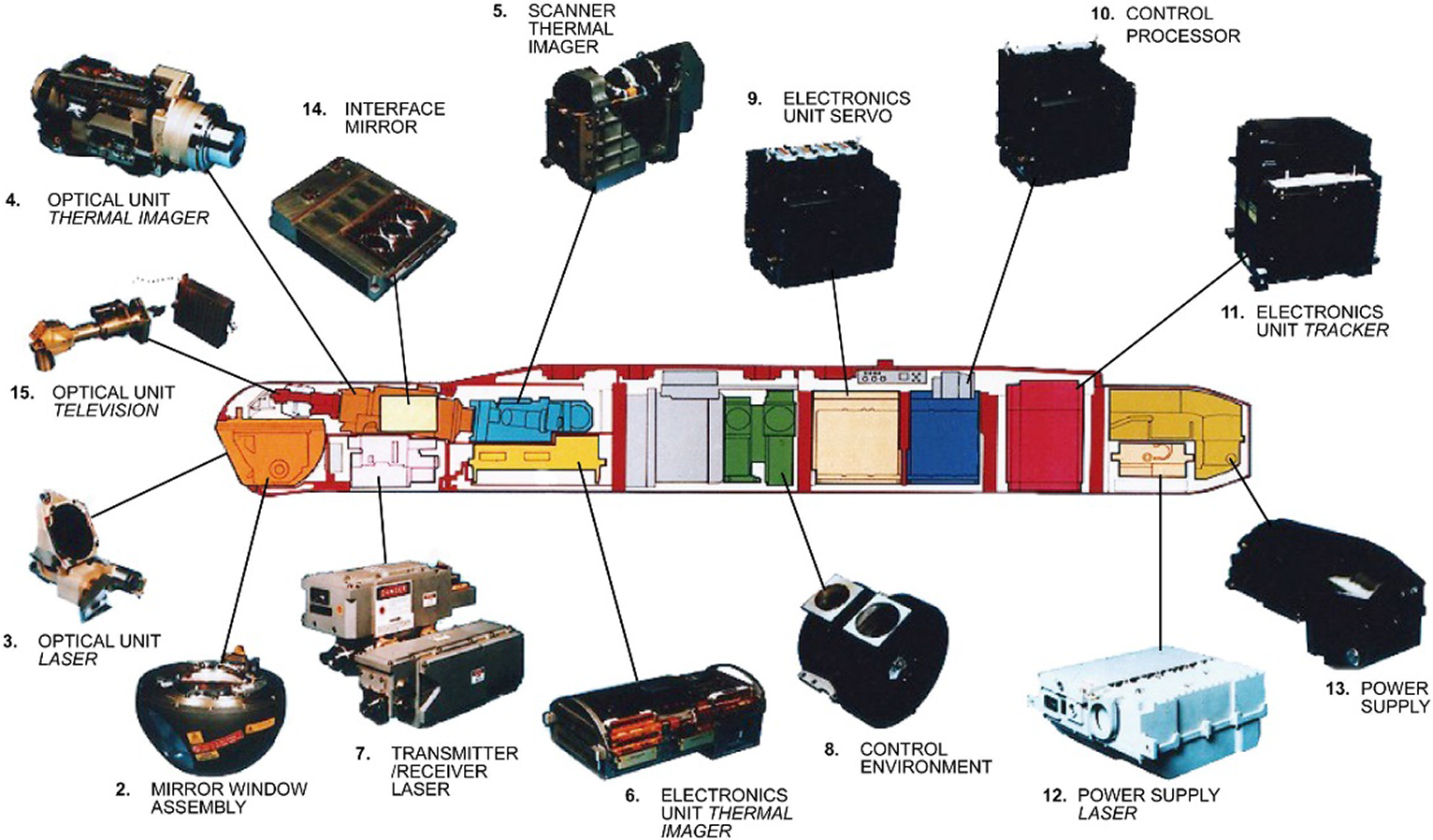
Figure 78 The TIALD internal structure. (Picture courtesy of Leonardo.)
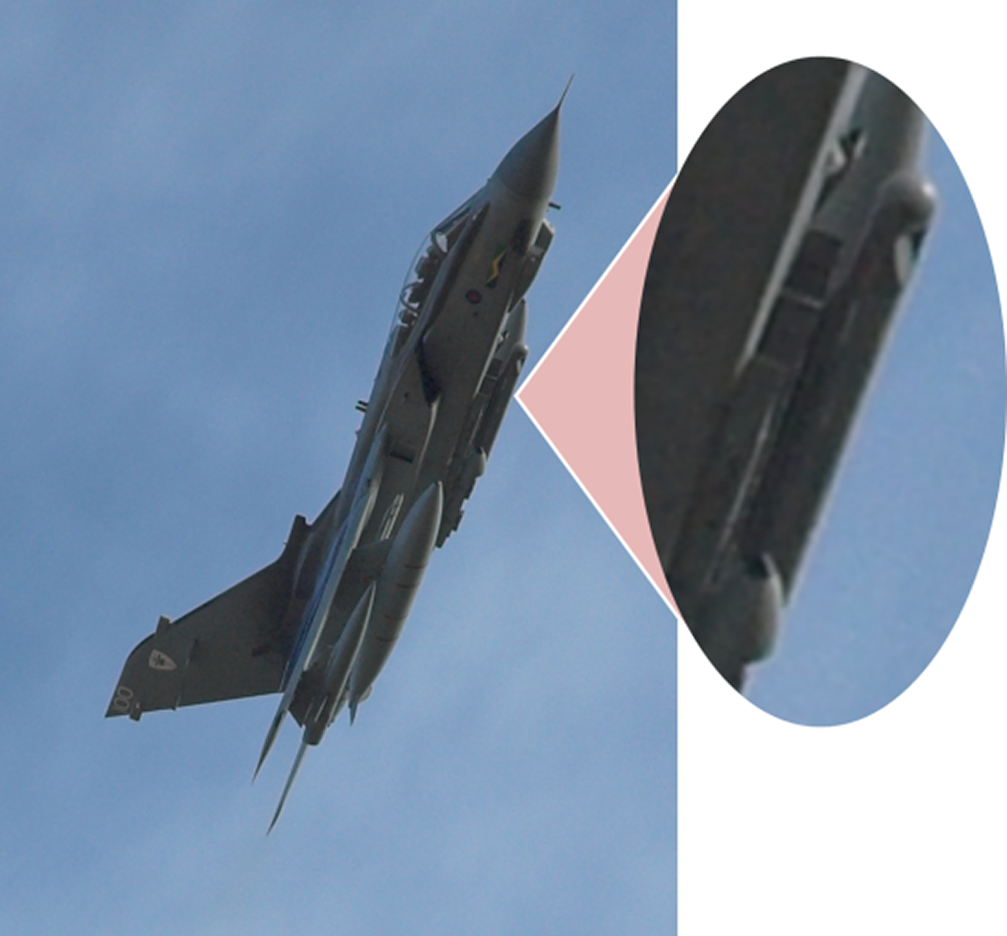
Figure 79 TIALD mounted on a Tornado. (Picture courtesy of Leonardo.)
In 1987 Ferranti purchased International Signal and Control (ISC), a United States defence contractor and subsequently changed its name to Ferranti International plc. Unknown to Ferranti, ISC’s business involved a lot of illegal arms sales. The financial and legal difficulties that resulted finally forced Ferranti into bankruptcy in December 1993. Many of the ‘jewels in the crown’ of Ferranti including the Foxhunter (Tornado fighter) Radar and TIALD were acquired by GEC Marconi and the ownership went through further transfers to the current holders, Leonardo.
In many ways the developments involved in LRMTS and TIALD established the capabilities that are still in use in the Advanced Targeting Sector at Leonardo today. They combined a precision product, the laser, with a stabilized electro-optic platform and delivery system[Reference Blain400, Reference Barr401, Reference Thomson and Proc404, Reference Barr, MacDonald, Jeffery and Troughton405].
From this starting point the business developed a range of products. A notable novel application was the development of IRCMs. These defend aircraft against heat seeking missiles by detecting a missile launch, tracking the missile and then neutralizing the missile using a modulated light signal to confuse the missile seeker[Reference Thomson and Proc404, Reference Barr, MacDonald, Jeffery and Troughton405].
The period between the early 1990s and 2003 saw a major reduction in the employees in the defence industry, including Ferranti. The organization was taken through a number of owners and ultimately the Edinburgh activity was reduced to a single site at Crewe Toll employing 2000 people. Since 2003 the Advanced Targeting Sector has undergone a period of rapid change and expansion. This period saw continued production of IRCM systems and, starting in 2002 with the win of the laser designator contract for the F35 aircraft, a significant resurgence in the laser business.
The period following 2000 is one of the longest running periods of substantial success for innovative new products in lasers and electro-optics[Reference Barr401, Reference Barr, MacDonald, Jeffery and Troughton405]. Almost entirely export led, this business has received multiple awards including Queen’s Award for Enterprise for International Trade in 2010 (both lasers and IRCM contributed) and for innovation in 2011 in the field of design and manufacture of military lasers. In 2018 an Institute of Physics Business Award was received for the development of Miysis, an advanced, compact IRCM system including an electro-optic tracker integrated with a compact and reliable mid-IR laser.
The Leonardo product range covers laser designators for the F35 Lightning II stealth multirole combat aircraft and for the AH-64 Apache attack helicopter. In addition, both US Airforce targeting pods (the Sniper pod and the Litening pod[406]) contain laser designators designed and built in Edinburgh. A lightweight man-portable designator (one third of the mass of previous design with equivalent output) has proven a highly successful product and is exported around the world. The IRCM product range is thriving with the introduction of the Mysis DIRCM (Directed IRCM) system and also with the continued supply of pointer/tracking heads exported to the USA as part of a long-standing collaboration with Northrop Grumman Corporation.
The technologies embedded within these products[Reference Barr401, Reference Barr, MacDonald, Jeffery and Troughton405] support the efficient manufacturing in high volume of the most compact and efficient examples of these products available today. The approach has been to identify new concepts and new technologies where appropriate to reduce size, weight, power and cost, often referred to as SWAP-C. The drive has been to utilize common parts where possible, but not be afraid of adding innovation to improve product discriminators. The laser in the Litening pod[406] supports designation, range finding at two wavelengths and active imaging of objects at long range; truly it is a multifunction laser.
There are many innovative solutions embedded within the Leonardo product range. Novel features of these lasers include new perturbation stable resonator designs[Reference Barr401]; miniaturized electronics enabling five printed circuit cards to be replaced by a single card; the introduction of new athermal laser diode technologies and magnesium alloy chassis to enable a lightweight high-performance man-portable laser designator, as well as additively manufactured components.
Looking to the future, Leonardo is developing a beam director for directed energy applications as part of the UK Dragonfire consortium, which also involves MBDA and QinetiQ. The beam director accepts a high-power laser beam (50 kW) and accurately points the beam at a distant target[407]. In a parallel activity Leonardo is investing in high-power fibre amplifiers optimized for military applications. The scale of these items presents a particular challenge; the beam directors of this class weigh in some two orders of magnitude heavier than our current airborne IRCM pointer trackers. The comforting fact is that the many talented engineers involved in the project and our supply chain have risen to these opportunities. A model of the Dragonfire Beam Director is shown in Figure 80.
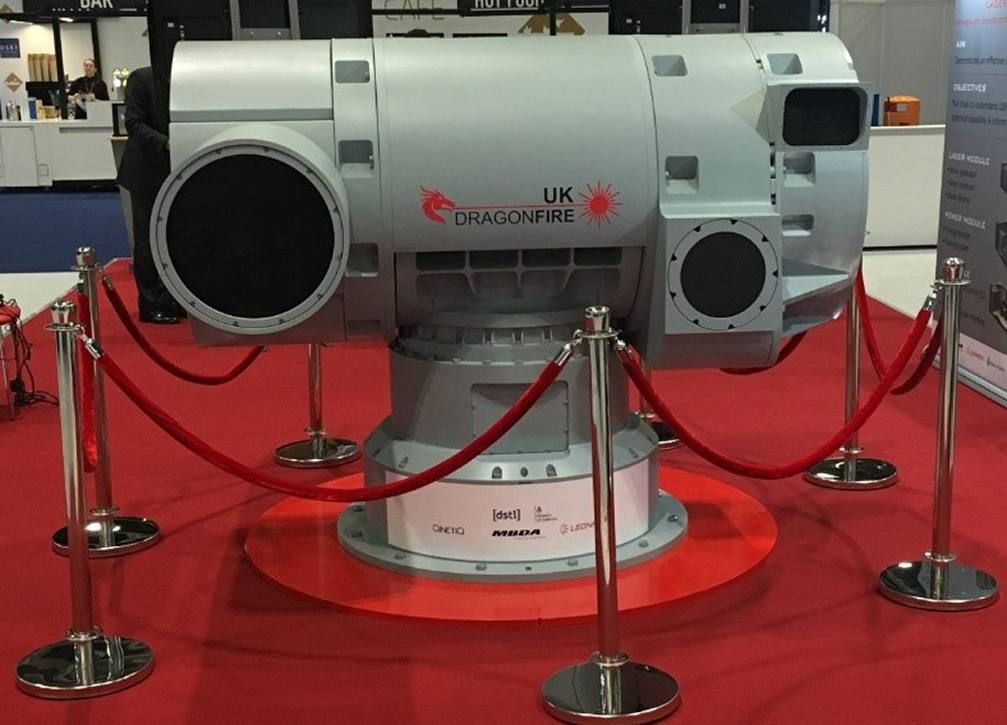
Figure 80 A model of the Dragonfire Beam Director unveiled at DSEI 2017. (Picture courtesy of Leonardo.)
Thales Optronics (formerly Barr & Stroud)
Barr & Stroud[Reference Moss and Russell408] was established in Glasgow in 1888 to develop and manufacture optical rangefinders for military applications. Inevitably, upon the demonstration of the first laser in 1960, interest grew in the application of this novel technology to rangefinders. The company collaborated with Hughes to develop a rangefinder product based on the ruby laser. This became the LF1 launched in 1965[Reference Moss and Russell408]. Subsequently, Barr & Stroud integrated optical sights with this LRF and supplied them for installation into the Chieftain Main Battle Tank in 1969[Reference Moss and Russell408]. Similar tank fire control systems were supplied into many other armoured fighting vehicles. The first laser design fully completed and fielded by Pilkington Optronics (who acquired Barr & Stroud in 1977 and rebranded it as Pilkington Optronics in 1988) was a man portable laser designator and rangefinder known as LF28A in the late 1990s[Reference Barr409]. Pilkington Optronics also provided the laser designator for the UK Apache fleet through a ‘build to print’ arrangement with Northrop Grumman Lasers.
Thomson CSF acquired 50% of Pilkington Optronics in 1991, another 30% in 1994 and took full control in 2000. The company later rebranded as Thales Optronics Ltd.
Subsequent developments included, in 2001, the acquisition of Avimo, a well-known manufacturer of vehicle sights, which introduced flashlamp pumped Er:glass lasers to their portfolio. These were used in laser rangefinding applications that required eye-safe operation. An upgraded LF28A laser designator incorporating target location capabilities and also the diode-pumped Er:glass rangefinder modules was marketed under the product name TYR.
British Aerospace PLC
The Sowerby Research Centre (SRC), Bristol, was formed in 1983 as an offshoot of the British Aerospace (BAe) Dynamics Group, the guided missile division of British Aerospace PLC, now known as BAE Systems PLC. It was named after James McGregor Sowerby who was the Research Director of the BAe Dynamics Group. Sowerby had the vision of a single corporate research centre for the whole BAe company and the SRC did become the corporate research centre in 1987.
In the early 1980s, SRC was carrying out research and development of pulsed TEA CO2 lasers, producing outputs of up to a few joules at repetition rates up to a few hundred hertz. There were also technology evaluation programmes on blue–green lasers for underwater applications, as well as excimer and mercury bromide laser systems.
In the late 1980s and early 1990s, SRC joined the EU-funded Eureka EU213 ‘Eurolaser’ project with an objective to build a 1 kW average power XeCl laser and to explore industrial applications of excimer lasers. A number of lasers were developed both in the UK and in Europe and, although none achieved the full 1 kW, all produced several hundred watts. The SRC laser itself was an impressive piece of engineering consisting of a closed loop gas circulation system, about 2.5 m by 4 m and rated at a pressure of 10 bar, see Figure 81. The laser ran at a pulse repetition rate of 2 kHz, as did the pulsed power supplies and an X-ray pre-ionizer. The interest of the Eurolaser project for SRC was potential manufacturing applications in both the military and civil aircraft markets, such as hole drilling, surface treatment and marking.
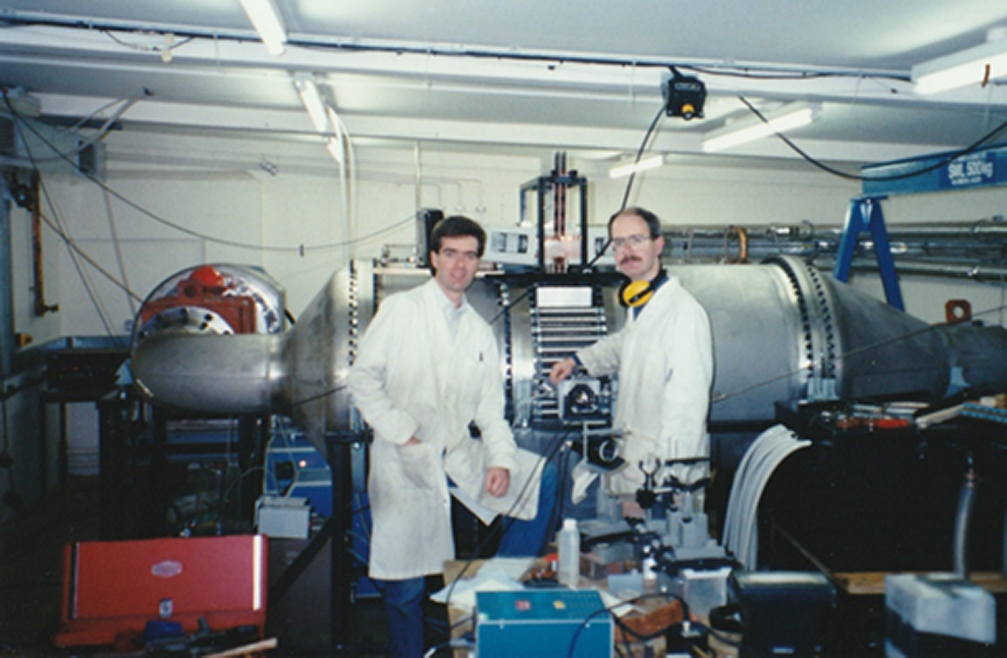
Figure 81 Eurolaser, with Trevor Bearpark (left) and Simon Scott in the foreground.
Dr. Peter Dickinson, who was leading the SRC contribution to the EU213 project left SRC in 1989 to become the Managing Director of Spectrum Technologies Ltd, a spin-off company from BAe that produces laser cable marking systems using excimer lasers. Spectrum Technologies Ltd, which is based in Bridgend South Wales, is still producing excimer cable marking systems for the aerospace and space businesses and has sold over 1000 cable marking systems in 50 different countries.
In the mid-1990s, after the Eurolaser project finished, research into pulsed gas lasers was declining. Simon Scott developed a large TEA CO2 laser which produced 300 J output pulses, the last high-power gas laser that was developed in SRC.
In 1999, BAe merged with Marconi Electronic Syste3ms to form BAE Systems PLC. The Marconi research centres at Wembley and Great Baddow were merged with SRC to form the Advanced Technology Centre (ATC), part of BAE Systems (Operations) Ltd, which operated on several sites. In 2015 the ATC at Filton (Bristol) was closed and several members of the original Laser Devices Group transferred to MBDA UK Limited.
MBDA
In the late 1980s and early 1990s the BAe Dynamics Group was severely reduced in size, owing to the end of the Cold War. In 1996 the BAe Dynamics division was merged with Matra Defense, the French missile company, to become the company MBD. Further joining of the European missile business followed as shown in the attached figure and the company eventually became MBDA, see Figure 82. Today it is a joint venture company with shareholders BAE Systems, Airbus and Leonardo. In 2019 the company had more than 11,500 employees and a turnover of €3.7 billion. MBDA works with over 90 armed forces worldwide.
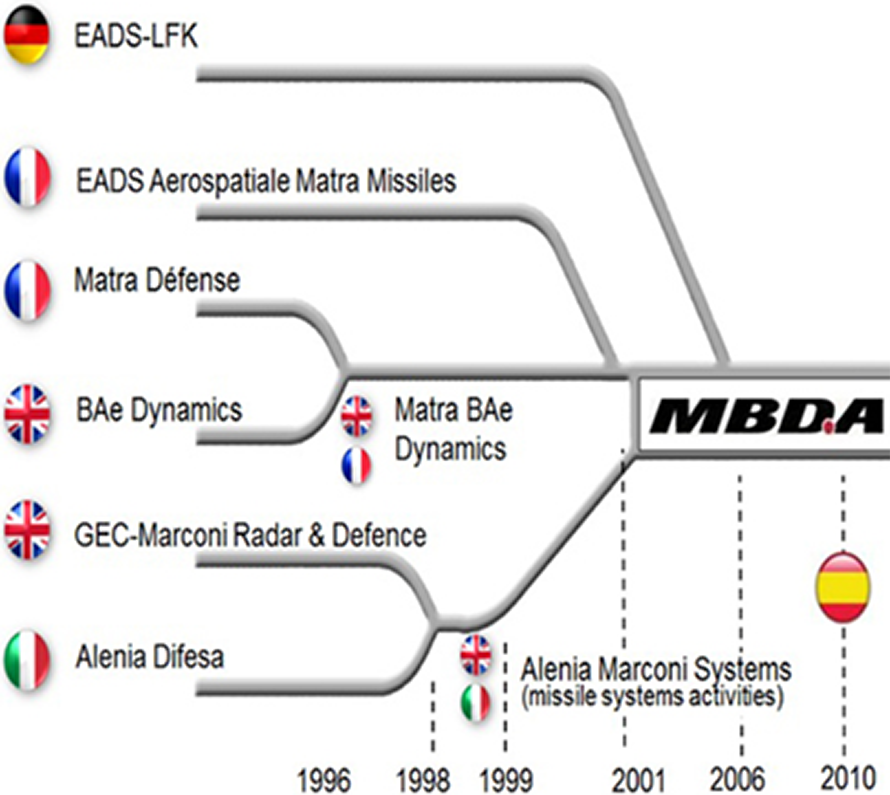
Figure 82 The origins of MBDA. (Picture courtesy of MBDA.)
MBDA has more than 30 years’ experience working on high-energy laser systems, conducting extensive research and development on a variety of programmes and related activities across Europe. These include a high-power laser system to deal with the very current threat of small agile drones. MBDA is the prime contractor for the UK’s Dragonfire DEW demonstrator programme, leading a consortium comprising QinetiQ (who makes the laser and coherent combining system), Leonardo (who makes the beam director) and BAE Systems, all working collaboratively with the DSTL.
QinetiQ
QinetiQ is a British multinational defence technology company headquartered in Farnborough, Hampshire. It has annual revenue (2020) of £1.073 billion. As a private entity, QinetiQ was created in April 2001; prior to that, it had been part of the Defence Evaluation and Research Agency (DERA), a now-defunct British government organization. While a large portion of DERA’s assets, sites and employees were transferred to QinetiQ, other elements were incorporated into the Defence Science and Technology Laboratory (DSTL), which remains in government ownership. Former DERA locations, including Farnborough, Hampshire, MoD Boscombe Down, Wiltshire, and Malvern, Worcestershire, have become key sites for QinetiQ.
In February 2006, QinetiQ was floated on the London Stock Exchange, following an inquiry by the UK’s National Audit Office. QinetiQ has completed numerous acquisitions of defence and technology-related companies, primarily those based in the United States and is a trusted supplier to the US government. It has also spun off some of its technologies into new companies, such as Omni-ID Ltd. QinetiQ is currently quoted on the FTSE 250 Index.
Prior to the acquisition, the government laboratories that became part of QinetiQ made many significant contributions, working in collaboration with the companies mentioned elsewhere in this review. For example, RAE Farnborough collaborated with GEC Ferranti in the development of the TIALD pod. SERL at Baldock had a significant role in the development of CO2 TEA lasers.
5.3 UK government defence establishments
The RSRE was a scientific research establishment within the MoD of the United Kingdom. It was located primarily at Malvern in Worcestershire, England[Reference Putley410].
RSRE was formed in 1976 by an amalgamation of previous research organizations; these included the RRE, itself derived from the WWII-era Telecommunications Research Establishment. The first email sent by a head of state was sent from the RSRE over the ARPANET by Queen Elizabeth II on 26 March 1976[411, Reference Metz412].
Laser work at RRE Malvern can trace its origin back to 1959 when a ruby maser was added to a captured German Wurzburg radar set to amplify reflections back from the Moon, thus acting as a radio telescope. Other developments in the 1960s and 1970s led to advances in the use of lasers for sizing small particles and in laser-Doppler anemometry. This led into the development of the Malvern Correlator (see Figure 83), which originated from work on the fundamental properties of light. Roy Pike with his colleague Eric Jakeman conceived the idea relating to the temporal correlation of photon events, the aim being to create a novel type of ultra-high-resolution spectrometer[Reference Jakeman, Oliver and Pike413–Reference Pike418]. Other members of the team at that time included electronics engineer Robin Jones and Chris Oliver who helped build the first experimental system. This strand of work was successfully commercialized with the spin-off in 1971 of what became Malvern Instruments. The company has grown very successfully since then and today, including its acquisitions and merger partners, employs over 2000 people worldwide.
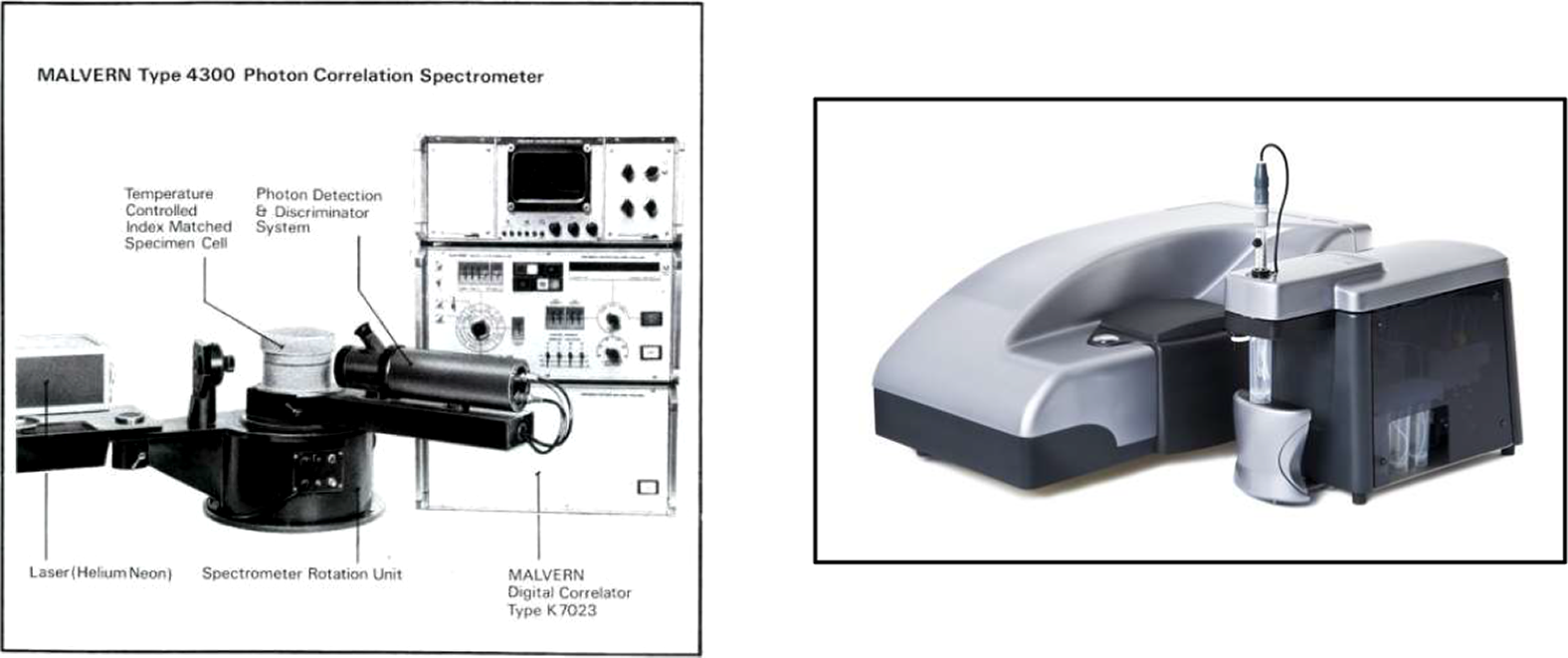
Figure 83 Early version of Malvern Type 4300 Photon Correlation Spectrometer and slightly later commercial product ‘Zetasizer Nano with MPT2 Autotitrator’.
Solid-state laser work continued at RSRE through the 1980s and 1990s with one area of investigation being on flashlamp- and diode-pumped solid-state crystal lasers, in particular on the use of holmium:YLF as the basis of eye-safe laser rangefinders operating at 2.08 μm[Reference Payne, Evans and Clay419–Reference Payne and Lowde421]. More generally solid-state lasers utilizing crystalline hosts doped with the rare earth ions thulium and holmium were of interest for a wide range of applications for rangefinding, coherent laser radar, and atmospheric sensing including differential absorption lidar (DIAL). There are also several medical applications requiring laser sources in the 2 μm waveband, including arthroscopy, lithotripsy and angioplasty.
Optical excitation using laser diodes offered the prospect of more efficient, less noisy, pump sources. To this end, laser operation of Tm,Ho:YLF at room temperature, using the simple optical arrangement illustrated in Figure 84 was demonstrated[Reference Elder and Payne422]. Using this configuration a diode-pumped Tm:YAP crystal provided a conversion efficiency from the absorbed pump power to laser output power of 42%[Reference Elder and Payne423]. Figure 84 also shows a summary of the laser output characteristics versus incident pump power for Tm:YAP, Tm,Ho:YAP and Tm,Ho:YLF crystals.

Figure 84 Schematic cavity configuration for a diode-pumped Tm,Ho:YLF laser and output power versus incident power comparisons for Tm,Ho:YAP, Tm:YAP and Tm,Ho:YLF.
In parallel work, the use of OPOs was also successfully explored. Coherent and tuneable mid-IR OPOs have very important applications in spectroscopy, biomedicine, atmospheric detection and electro-optic countermeasures. In particular low-threshold operation of a KTP OPO pumped by a diode-pumped, Q-switched Nd:YLF laser was investigated. Thresholds below 0.5 mJ were obtained for a 1.047 μm pump with internal conversion efficiencies approaching 50%[Reference Terry, Cui, Yang, Sibbett and Dunn424]. A Nd:YAG laser pumped KTiOPO4 parametric oscillator, operating stably at degeneracy, was also used to pump a ZnGeP2 parametric oscillator, generating output in the 3.1–6.6 μm waveband[Reference Terry, McEwan and Payne425].
In 1979, under the ‘rationalization’ process, the Services Electronic Research Laboratory (SERL) formerly at Baldock, Hertfordshire, and the SRDE formerly at Christchurch, Dorset, were merged with RSRE. RSRE also had out-stations at the old RAF airfields at Defford and Pershore and a satellite-tracking station at Sheriffs Lench, Evesham. As far as laser research and development at RSRE was concerned, the merger led to the original SERL Laser Division team augmenting the ongoing laser device and systems work at RSRE. Specifically, the SERL team continued with the development of pulsed and CW CO2 lasers for rangefinding, Doppler velocimeters, vibrometers and anemometers (for wind shear and vortex sensing) and with their potential for frequency doubling using AgGaSe2 or ZnGeP2 for countermeasure applications (DIRCM).
In particular, TEA lasers with pulse repetition frequencies up to 100 Hz and overall lifetimes of >2.5 × 106 pulses were proved through the use of a SnO2–Pd catalyst placed in a gas circulating duct[Reference Stark, Crocker and Lowde426–Reference Stark and Harris428]. A frequency agile TEA laser was also demonstrated using a computer-controlled diffraction grating in the laser cavity. Accurate line selection was demonstrated on over 40 transitions, from 9.2 to 10.7 μm, at repetition rates of 30 Hz[Reference Crocker, Jenkins and Johnson429]. The underlying TEA laser technology was also extended to HF and DF lasers for mid-IRCM (DIRCM) applications[Reference Gorton, Cross and Parcell430, Reference Harris, Morris and Gorton431]. Further work on understanding the impact of laser-induced medium perturbation (LIMP) phenomena on transverse mode output ultimately led to improved TEA laser resonator designs with both improved spatial mode output and improved intra-pulse frequency stability[Reference Gorton and Parcell432–Reference Hollins, Jordan and Cross437]. The latter characteristic was an important requirement for a wide range of pulsed heterodyne detection applications[Reference Willetts and Harris435].
The closer collaboration between the laser device team and the existing laser systems teams at RSRE also led to the demonstration of state-of-the-art heterodyne detection-based frequency-modulated continuous wave (FMCW) laser rangefinders and Doppler velocimeters[Reference Hulme, Collins, Constant and Pinson438, Reference Collins, Hulme and Lowde439] (see Figure 85) and vibrometers and airborne anemometers[Reference Vaughan440–Reference Constant, Foord, Forrester and Vaughan444]. The FMCW system provided ranges of several kilometres off natural targets with accuracies of 10 m, while the Doppler shift off moving target facilitated the measurement of radial velocities to an accuracy better than 1 m·s–1. Subsequently, the waveguide laser work was taken into industrial development and manufacture at Ferranti in Dundee under a series of Directorate of Components, Valves and Devices (DCVD) extramural contracts with the resulting lasers providing the basis of a considerable amount of further development work on coherent laser radar systems.

Figure 85 RSRE FMCW heterodyne detection rangefinder and Doppler velocimeter showing plan-view of the optical circuit consisting of the heterodyne optical interferometer system in conjunction with the CO2 waveguide laser master oscillator, Stark cell, acousto-optic modulator, cooled CMT detector (and associated preamplifier electronics) and bi-static transmit–receive optics. The red and blue lines show the transmit, receive and local oscillator paths, respectively.
The CO2 waveguide laser device work which originated at SERL also continued at RSRE with a strong emphasis on improving both active and shelf lifetimes. Improved understanding of the underlying gas chemistry and the use of hard-seal manufacturing processes and high-vacuum pump-out and refill practices led to 5–50 W devices with active lifetimes of over 5000 hours and shelf lifetimes over 7 years from a single gas fill[Reference Conder, Redding and Jenkins445–Reference Conder, Redding and Jenkins447]. The proof-of-principle of these operational goals led to greater military confidence in their potential take-up for both defence and industrial applications. Missile guidance was a particular area of interest at the time. Considerable emphasis was also focused on improving the transverse mode performance of CO2 waveguide lasers and addressing folded waveguide resonator cavities which could provide greater output power in a smaller footprint. This work involved a strong combination of laser resonator modelling, advances in laser technology and experimental assessment work. This area of research led to some fundamental new concepts for waveguide laser resonator designs with significantly improved output mode performance[Reference Hill448–Reference Jenkins and Hill451].
RRE/RSRE was also involved with industrial partners in the defence sector, running evaluation programmes for a number of laser and countermeasure applications.
The Services Electronics Research Laboratory (SERL), based at Baldock, Hertfordshire, was involved in laser research in the UK from a very early stage. In 1963, Boot and Clunie[Reference Boot and Clunie452] demonstrated optical maser oscillations from both pulsed helium–neon and pulsed helium–carbon monoxide discharges at pressures of 1 Torr. Peak output powers of 1 W were obtained for the different gas mixtures at wavelengths of 1.153 and 1.069 μm, respectively. Boot et al. [Reference Boot, Clunie and Thorne453] went on to demonstrate 84 W peak power performance using a pulsed discharge with a 240 Torr He–Ne gas mixture. In 1964, Crocker et al. [Reference Crocker, Gebbie, Kimmitt and Mathias454] demonstrated stimulated emission at far-IR wavelengths between 23 and 79 μm using a water vapor discharge. Importantly, in 1966, Boot et al. [Reference Boot, Clunie and Thorn455] described the use of a pulsed He–Ne laser in conjunction with a punched-tape controlled STC two-axis coordinate table to micromachining slots in thin metal sheets. They suggested the technique could be applicable to more complex structures, such as thin-film circuits and resistors. In addition, in 1966, Conder et al. [456] demonstrated a 1 W argon-ion laser which went on to be commercially produced by EEV, while a CO2 laser with an 11 m long cavity produced CW output powers over 1 kW[456]. In the same year very early work on cryogenically cooled arrays of GaAs lasers for ranging applications was also undertaken[456].
In the 1970s, SERL laser work focused on both pulsed and CW CO2 devices. Lamberton and Pearson[Reference Lamberton and Pearson457, Reference Pearson and Lamberton458], demonstrated a novel double-discharged TEA laser where a trigger wire parallel to the main electrodes provided pre-ionization (Figure 86). In conjunction with Rogowski profiled electrodes, their approach resulted in very uniform pulsed glow discharges and output energies of 2 J from active laser volumes of 100 cm3. Stark et al. [Reference Stark, Cross and Harris459] used arc-array pre-ionization techniques to demonstrate improved performance from compact TEA lasers with 1.3 MW peak powers in 30 ns long pulses. The use of platinum catalysts also led to sealed-off TEA lasers providing lifetimes in excess of 3 × 105 shots at 1 Hz repetition rates from a single gas fill[Reference Stark, Cross and Harris459]. This type of TEA laser formed the basis of pulsed rangefinders developed by Taylor et al. [Reference Taylor, Davies, Brown, Woods, Bell and Kennedy460] at RSRE Malvern in the late 1970s.

Figure 86 Early Lamberton and Pearson trigger wire pre-ionized TEA laser providing 2.0 J pulse outputs at 1.0 Hz repetition rates from an active laser volume of 100 cm3.
Following the success of the early TEA laser work SERL initiated state-of-the-art programmes on e-beam sustained TEA CO2 lasers with DEW applications in mind. A device designated as VX543 (see the schematic in Figure 87) provided a 1 kJ single-shot output in a 35 μs long pulse from a 34 L active volume. Related analytical work led to fundamentally new understanding of the adverse impact of LIMP phenomena and the manner in which it degraded transverse mode output quality. The effect was identified using time-resolved interferometry of the lasing/non-lasing boundaries in the gas discharge medium[Reference Roper461, Reference Roper, Lamberton, Parcell and Manley462]. A recirculating version of the VX543 device, designated ‘REP3’, illustrated in SERL Figure 88, was capable of producing 600 J pulsed outputs at a repetition rate of 66 Hz. This operated in half-second bursts providing an average output power of 36 kW. At the time this was the highest power laser of its type in the Western World[Reference Wood and Pearson463].

Figure 87 Schematic of VX543, a 34.0 L active volume, 1.0 kJ single-shot, electron-beam sustained, transversely excited, atmospheric pressure, CO2 laser.

Figure 88 Schematic ‘REP3’, a large volume, re-circulating gas, e-beam-gun sustained, TEA laser, providing 600 J pulses at 66 Hz in half-second bursts with an average power of 36 kW in the form of a transverse multimode output.
As illustrated in the schematic in Figure 88, the electron beam guns for the e-beam sustained lasers used controlled glow discharges to generate electrons with optimum energy for pumping the upper CO2 laser level. The electrons were transmitted to the main laser cavity via an aluminium foil. The electron beam gun developments involved valuable collaborations with GEC Hurst Research Centre. There was also extensive collaboration between SERL and the University of Essex, which also had significant development programmes on high-power CO2 laser systems. Professor Alan Gibson, from Essex, went on to become the first director of the CLF at RAL.
Over the 1970s, SERL also led early UK work on CO2 waveguide lasers. Typically, these devices were based on discharge tubes (formed of polycrystalline alumina or beryllia) with diameters in the 1–3 mm range. At these cross-sectional dimensions, in addition to confining the laser discharge, the discharge tubes acted as optical waveguides in guiding the oscillating radiation between the resonator mirrors. Early 10 W CW flowing gas devices based on 20 cm long 2 mm bore waveguides led into the development of compact, rugged, sealed-off devices providing 5 W CW fundamental mode output[Reference Hall, Jenkins, Gorton and Cross464]. Furthermore, active cavity length stabilization techniques were also demonstrated. These were based on locking the P20 10.6 μm transition to a Stark tuneable absorption line in an external cell. The approach resulted in waveguide laser devices providing short-term (millisecond) frequency stability of the order of 5 kHz and long-term (hours) stability of better than 1 MHz[Reference Hall, Jenkins and Gorton465]. A photograph of the complete Stark cell stabilized CO2 waveguide laser system with the associated cavity length control electronics developed by Gordon C. Joyce from RSRE, Malvern, is shown in Figure 89. As noted previously in Section 5.3, these compact, advanced coherent laser sources went on to be used as master and local oscillators in state-of-the-art of heterodyne detection-based FMCW rangefinders, Doppler velocimeters and airborne velocimeters developed at RSRE Malvern. The waveguide laser work at SERL was also extended to CW operation with carbon monoxide gas mixtures[Reference Gorton, Jenkins and Hall466] and to transversely excited pulsed operation[Reference Gorton and Redding467].
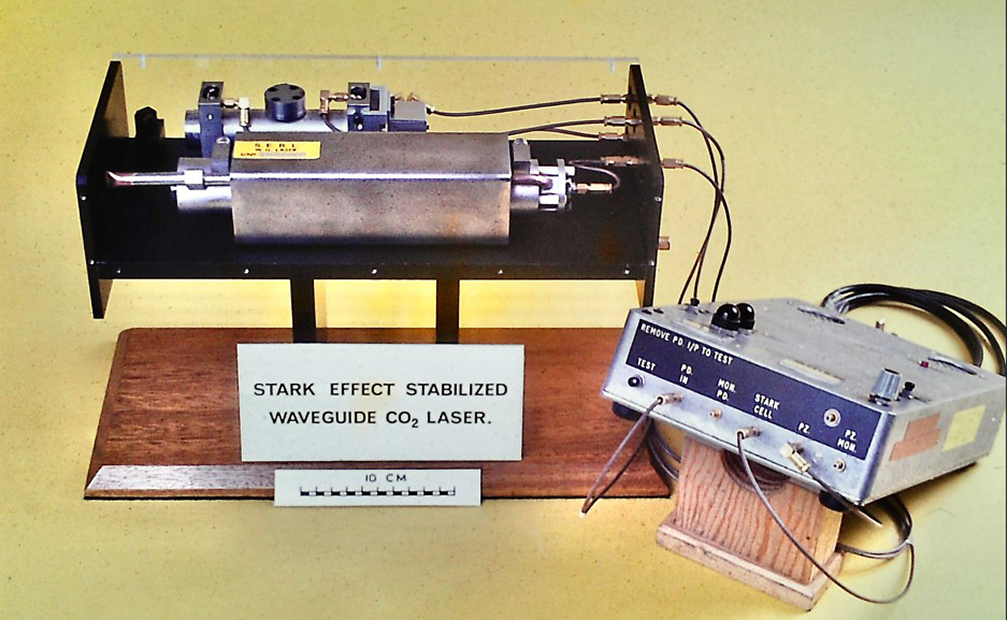
Figure 89 A photograph of the complete Stark cell stabilized CO2 waveguide laser system with the associated control electronics developed by Gordon C. Joyce from RSRE, Malvern. In conjunction with the Stark cell, the control electronics adjust the cavity length of the laser, via an integrated PZT element, to lock the output to the centre of the P20 10.6 μm transition.
It is worth noting that much of the basic research work undertaken at SERL and RSRE led into industrial developments of laser devices for military applications via extramural contracts funded by the DCVD. In this manner, following proof-of-principle demonstrations of in-house components, industrial supplies of laser devices (e.g., GEC-Marconi, at Borehamwood, Ferranti at Dundee and Edinburgh, etc.) were made available for ongoing systems work at the MoD’s Research Establishments, e.g., for rangefinder and Doppler anemometry systems work at RSRE.
As noted previously, in 1979, SERL merged with the RSRE and the Baldock site was vacated.
The RAE, Farnborough, traces its history back to 1904 when the Army School of Ballooning moved from Aldershot so that they would have more room to inflate their newly developed airships. It has been involved in many of the important developments in aviation since then. Of note here is the involvement with the development of the Ferranti TIALD laser designator pod. RAE commissioned some of the early work and then provided the facilities for the all-important flight trials at the culmination of the development. This was a good example of where they contributed, in collaborating with the industry suppliers to assist with the transition to in-service qualified equipment, in this case for aircraft.
The RARDE at Fort Halstead performed a similar role in helping companies to demonstrate and qualify their equipment for military use, in this case for armoured fighting vehicles.
5.4 Conclusion on defence
It is no idle boast that, since the first serious deployment of military lasers in the 1970s, the UK has been at the forefront of their design, development and deployment. The UK was the first to use ground-based laser designation in combat in the Falklands Campaign and the first to effectively use airborne laser designation in combat during the first Gulf War. Today, over 75% of the airborne military laser market is supplied by Leonardo. The military laser sector has always been a definite success story for ‘UK PLC’.
6 Conclusion
This review has presented a comprehensive overview of the UK contribution to the field of high-power lasers since the invention of the laser some 60 years ago. The UK has played a leading role in many of its areas of research and development. The cross-fertilization between academia, industry, the national laboratories and defence sector has been critical to that success. The UK does not sit isolated from the rest of the world and the international collaborations and partnerships in all sectors formed throughout its history have played a significant part in the global success of the development of high-power lasers and their exploitation.
7 List of abbreviations
A-SAIL: Advanced Strategies for Accelerating Ions with Lasers
AEA: Atomic Energy Authority
AEI: Associated Electrical Industries
AFL-1: Aldermaston Fusion Laser – 1
ALPHA-X: Advanced Laser-Plasma High-Energy Accelerators towards X-rays
AFOSR: Air Force Office of Scientific Research
AOT: Advanced Optical Technology Ltd
APM: Additive-Pulse-Mode-Locking
ARPANET: Advanced Research Projects Agency Network
AWE: Atomic Weapons Establishment
AWRE: Atomic Weapons Research Establishment
BAe: British Aerospace PLC
BBSRC: Biotechnology and Biological Sciences Research Council
BLLC: Blackett Laboratory Laser Consortium
BNFL: British Nuclear Fuels Ltd
BOC: British Oxygen Company
BTH: British Thomson Houston
CAA: Civil Aviation Authority
CARS: Coherent anti-Stokes Raman Spectroscopy
CBE: Commander of the Most Excellent Order of the British Empire
CCLRC: Council for the Central Laboratory of the Research Councils
CERN: Conseil Européen pour la Recherche Nucléaire
CIFS: Centre for Inertial Fusion Studies
CLARA: Compact Linear Accelerator for Research and Applications
CLF: Central Laser Facility
CLIO: Collaboration for an Infrared Laser at Orsay
CPA: Chirped Pulse Amplification
CPP: Centre for Plasma Physics
CST: Compound Semiconductor Technology
CTBT: Comprehensive Test Ban Treaty
CVL: Copper Vapour Laser
CW: Continuous Wave
DCVD: Directorate of Components, Valves and Devices
DEW: Directed Energy Weapon
DIAL: Differential Absorption Lidar
DIRCM: Directed Infrared Countermeasures
DODCI: 3,3’-Diethyloxadicarbocyanine Iodide
DQOCI: 1,3’-Diethyl-4,2-Quinolyloxacarbocyanine Iodide
E&EO: Ekspla and Eksma Optics
EEV: English Electric Valve Company
ELF: Electron-beam excited Laser Facility
ELF: European Laser Facility
ELI: Extreme Light Infrastrcture
EOD: Electro-Optic Developments Ltd
EPAC: Extreme Photonics Applications Centre
EPSRC: Engineering and Physical Sciences Research Council
EuPRAXIA: European Plasma Research Accelerator with Excellence in Applications
FCAP: Fraunhofer Centre for Applied Photonics
FDSL: Ferranti Defence Systems Ltd
FEL: Free Electron Laser
FELIX: Free Electron Lasers for Infrared Experiments
FMCW: Frequency Modulated Continuous Wave
FRS: Fellow of the Royal Society
FWHM: Full Width at Half-Maximum
G&H: Gooch & Housego
GEC: General Electric Company
HAPLS: High Repetition-Rate Advanced Petawatt Laser System
HCN: Hydrogen Cyanide
HELEN: High Energy Laser Embodying Neodymium
HHG: High Harmonic Generation
HIPER: High Power Laser Energy Research Facility
HPFC: Hollow Fibre Bandwidth Generation and Pulse Compression
HVR: High Voltage Resistors International Ltd
ICL: Ion Channel Laser
ICOS: Imperial College Optical Systems Ltd
ILC: International Lamp Corporation
ILE: Institute of Laser Engineering
IoP: Institute of Photonics
IRCEP: International Research Centre for Experimental Physics
IRCM: Infrared Countermeasures
ITER: International Thermonuclear Experimental Reactor
JEH: Janet Elizabeth Hull
JK: James Kenneth (Jim K. Wright founder of JK Lasers)
LANL: Los Alamos National Laboratory
LASER: Light Amplification by Stimulated Emission of Radiation
LASP: Laser Optics & Spectroscopy
LCLS: Linac Coherent Light Source
LFC: Laser Facility Committee
LHC: Large Hadron Collider
LIBRA: Laser Induced Beams of Radiation and their Applications
LIDAR: Light Detection and Ranging
LIGS: Laser Induced Grating Spectroscopy
LIMP: Laser Induced Medium Perturbation
LLE: Laboratory for Laser Energetics
LLNL: Lawrence Livermore National Laboratory
LMJ: Laser Mégajoule
LRMTS: Laser Rangefinder and Marked Target Seeker
LSF: Lasers for Science Facility (pre-1995 Laser Support Facility)
LTM: Laser Target Marker
LWFA: Laser Wakefield Accelerator
MAGPIE: Mega Ampere Generator for Plasma Implosion Experiments
MALDI: Matrix Assisted Laser Desorption Ionization
MASER: Microwave Amplification by Stimulated Emission of Radiation
MBDA: Matra, BAe Dynamics and Alenia
MEC: Matter in Extreme Conditions
MEDL: Marconi Electronic Devices Ltd
MERLIN: Medium Energy Rod Laser Incorporating Neodymium
MoD: Ministry of Defence
MOPA: Master Oscillator Power Amplifier
MURI: Multidisciplinary University Research Initiative
NAEC: National Agricultural and Exhibition Centre
Nd: Neodymium
Nd:YAG: Neodymium-Doped Yttrium Aluminium Garnet
Nd:YLF: Neodymium-Doped Yttrium Lithium Fluoride
NERC: Natural Environment Research Council
NIF: National Ignition Facility
NO: Nitrogen Oxide
NRL: Naval Research Laboratory
OEM: Original Equipment Manufacturer
OPCPA: Optical Parametric Chirped Pulse Amplification
OPO: Optical Parametric Oscillator
ORC: Optoelectronics Research Centre
OxCHEDS: Oxford Centre for High Energy Density Science
PANAMA: Plasma Accelerators for Nuclear Applications and Materials Analysis
PIRATE: Picosecond Infra-Red Absorption and Transient Excitation
PLP: Precision Laser Processing Ltd
PPLN: Periodically Poled Lithium Niobate
QED: Quantum Electrodynamics
QOLS: Quantum Optics and Laser Spectroscopy
QOLS: Quantum Optics and Laser Science
QUB: Queen’s University Belfast
R6G: Rhodamine 6G
RAE: Royal Aircraft Establishment
RAF: Royal Air Force
RAL: Rutherford Appleton Laboratory
RARDE: Royal Armaments Research and Development Establishment
RF: Radio Frequency
RGO: Royal Greenwich Observatory
ROF: Royal Ordinance Factory
RRE: Royal Radar Establishment
RSRE: Royal Signals and Radar Establishment
SCAPA: Scottish Centre for the Application of Plasma-based Accelerators
SERC: Science and Engineering Research Council
SERL: Services Electronics Research Laboratory
SFC: Scottish Funding Council
SFO: Superintendent for Fusion and Optics
SGF: Space Geodesy Facility
SILIS: Strathclyde Intense Laser Interaction Studies
SLF: Superintendent Laser Facilities
SLR: Satellite Laser Ranging
SOA: Scottish Optoelectronics Association
SPE: Superintendent Plasma Experiments
SPI: Southampton Photonics Inc
SPIE: Society of Photo-Optical Instrumentation Engineers
SPOPO: Synchronous Pumped Optical Parametric Oscillator
SPUR: Support Programme for University Research
SRC: Science Research Council
SRC: Sowerby Research Centrev
SRDE: Signals Research and Development Establishment
STFC: Science and Technology Facilities Council
SUPA: Scottish Universities Physics Alliance
SWAP-C: Size, Weight, Power and Cost
T3: Table Top Terawatt
TAE: Target Area East
TAURUS: Target Area for UK Research in US
TAW: Target Area West
TEA: Transversely Excited Atmospheric
Ti: Titanium
TIALD: Thermal Imaging Airborne Laser Designator
Tm: Trans-mode
TOPS: Terahertz to Optical Pulse Source
TR3: Time Resolved Resonance Raman
TW: Terawatt
UAV: Unmanned Aerial Vehicle
UKAEA: United Kingdom Atomic Energy Authority
ULTRA: Ultrasensitive Lifescience Time-Resolved Analysis
UVRF: Ultraviolet Radiation Facility
VELA: Versatile Electron Linear Accelerator
VHEE: Very High Energy Electron
VULCAN: Versicolor Ultima Lux Coherens pro Academica Nostra
VUV: Vacuum Ultraviolet
XFEL: X-ray Free Electron Laser
XUV: Extreme Ultraviolet
Competing interests
The authors declare that there are no conflicts of interest regarding the publication of this paper. CD is the Co-Editor-in-Chief of HPLSE but will not be involved with reviewing of the paper nor approval to publish.
Acknowledgements
The authors would like to thank the following people for providing specific input for the various sections of the review: Jeryl Adcock, Laser Lines Ltd; Trudy Auty, Kent; Elaine Blackwood, Photonic Solutions Ltd; Steve Blake, STFC Rutherford Appleton Laboratory; Debbie Brindley, M-Squared Lasers Ltd; Thomas Butcher, STFC Rutherford Appleton Laboratory; Gareth Cairns, AWE; Bob Collins, Magna-Power; William Dillon-Gray, Coventry; Terry Dines, ICOS Ltd; Chris Dorman, Coherent Scotland; Rob Eason, University of Southampton; Gianluca Gregori, University of Oxford; Tim Grey Morgan, Amersham; Aaron Grimes, Tykma Electrox; Doug James, Consultant, Ottawa, Canada; Eddie Judd, Beck Optronic Solutions; Ken Lipton, Founder and MD Rofin Sinar UK 1997–2018 retired; Mark Middleton, Crystran Ltd; Michelle Mitchell, University of Southampton; Paul Morris, Gooch & Housego plc; Ian Musgrave, STFC Rutherford Appleton Laboratory; Peter Norreys, University of Oxford / STFC Rutherford Appleton Laboratory; Miles Padgett FRS, University of Glasgow; Sir David Payne, University of Southampton; Robin Pitman, retired; Alex Robinson, STFC Rutherford Appleton Laboratory; Harvey Rutt, University of Southampton; Daniela Stozno, Laserlab-Europe; Greg Tallents, University of York; Paul Treadwell, AWE; Brian Thomas, AWE retired; Chris Varney, Laser Components (UK), Ltd; and Claes-Goran Wahlstrom, Lund University, Sweden.
One of the principal authors of the review, David Neely, sadly passed away during its final production.
Ethical standards
The research meets all ethical guidelines, including adherence to the legal requirements of the study country.
Author contributions
CD conceived the review concept, identified and defined input, coordinated contributions and acted as principle editor. MW acted as deputy editor and coordinator of the Section 5. RP collated and reviewed the references. All co-authors provided content and reviewed the final document.


















